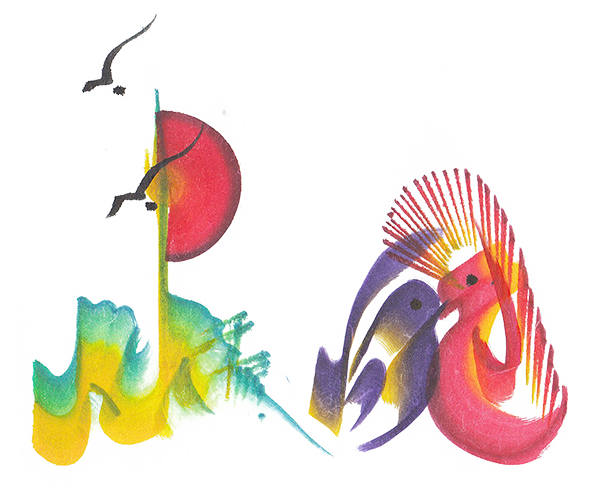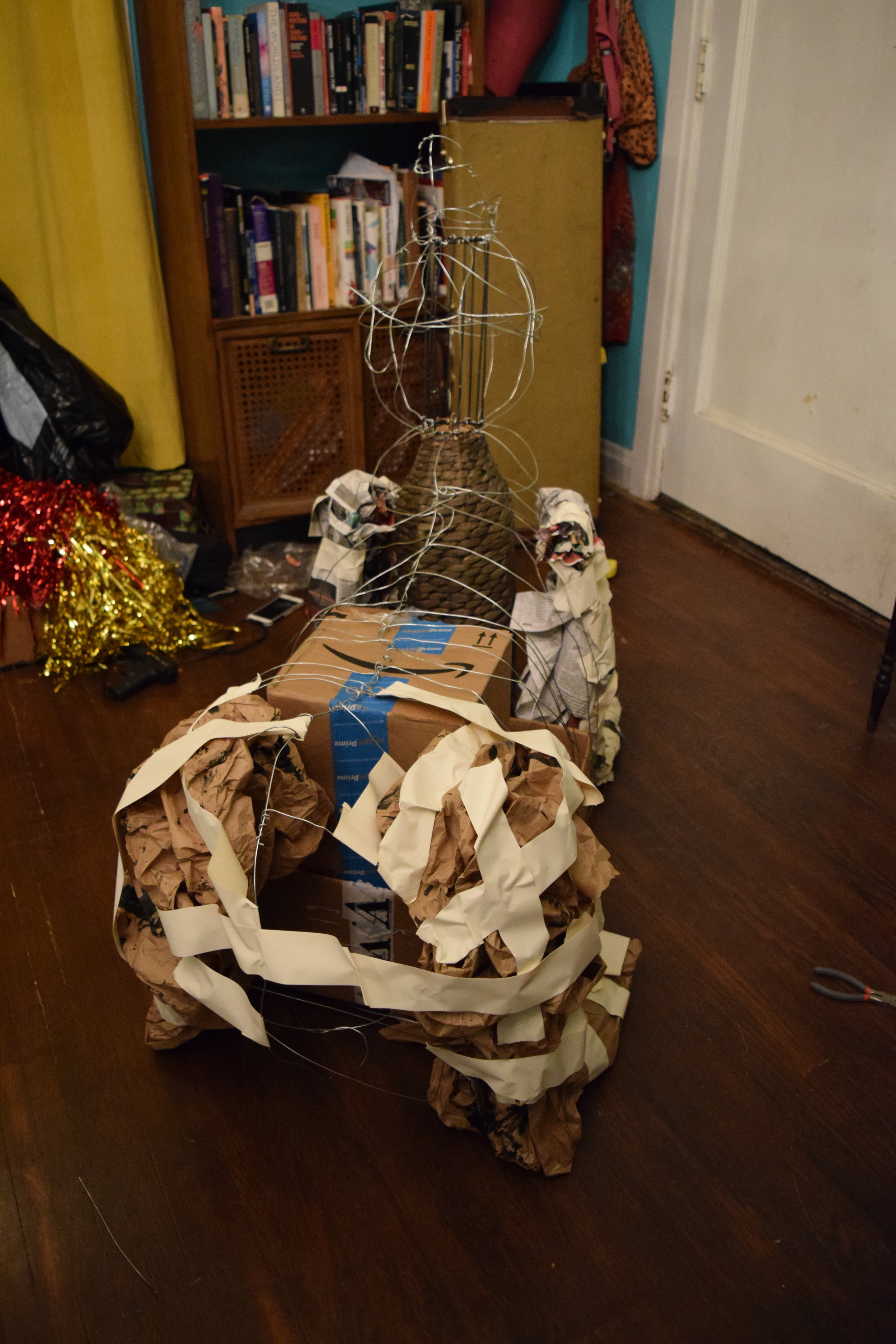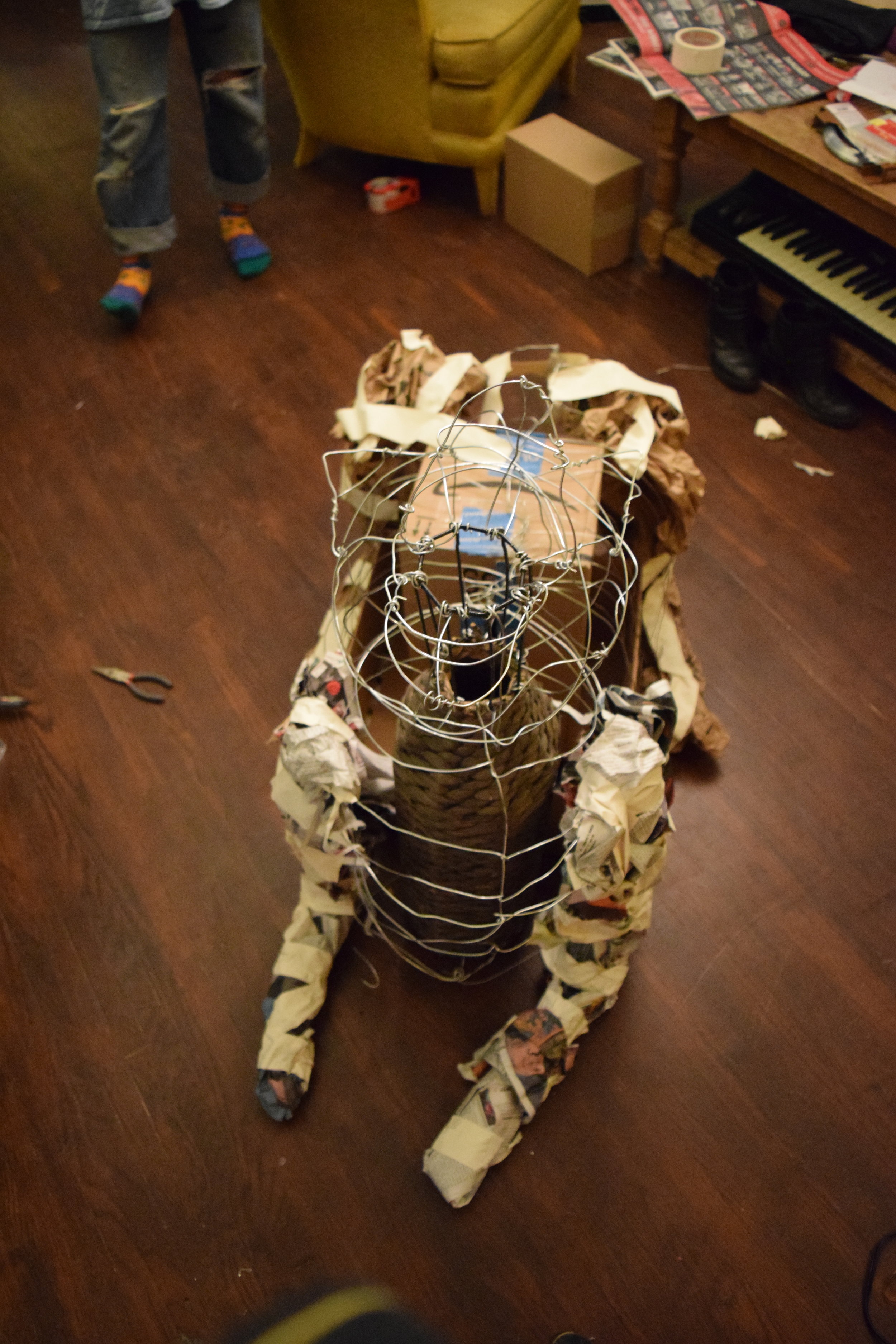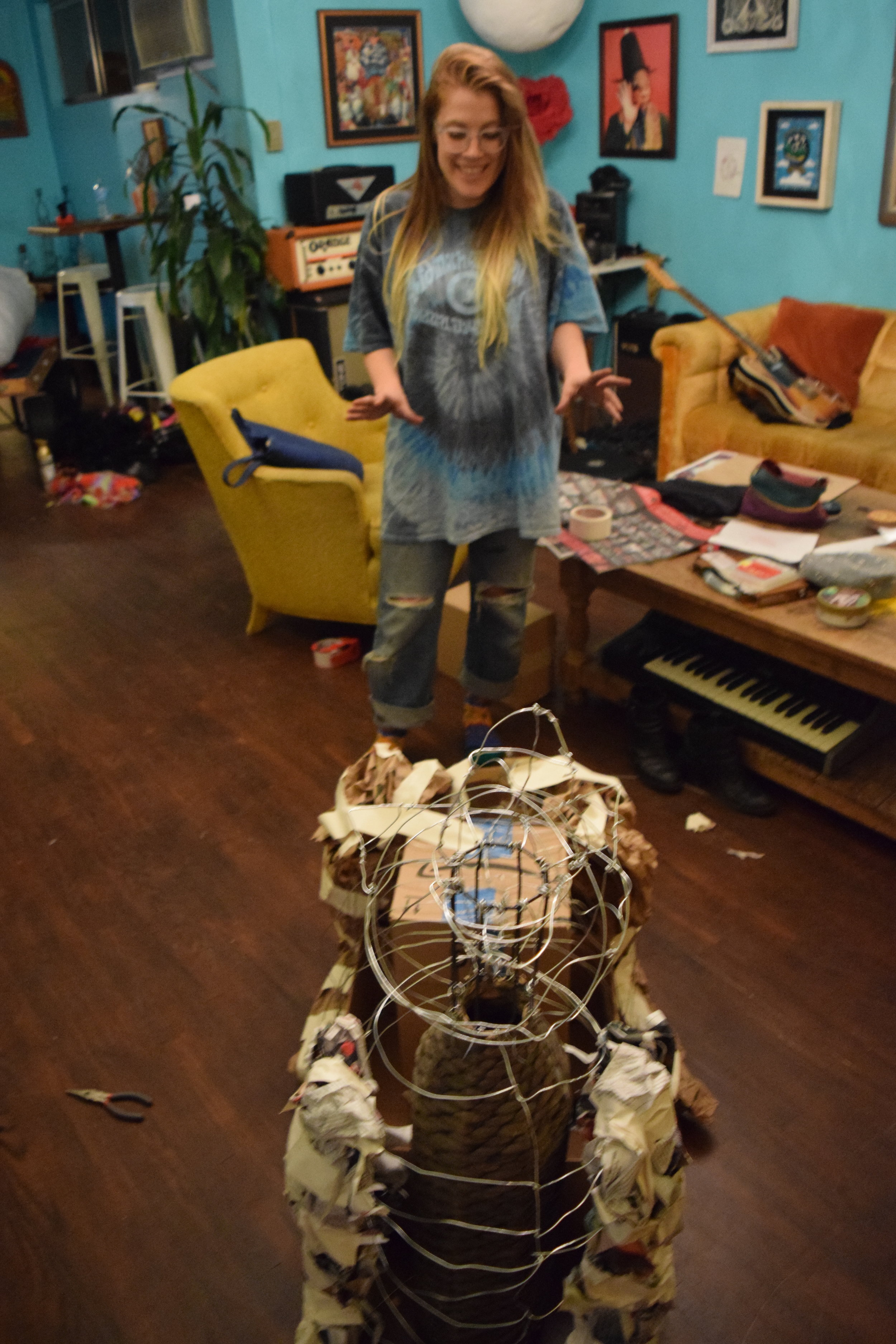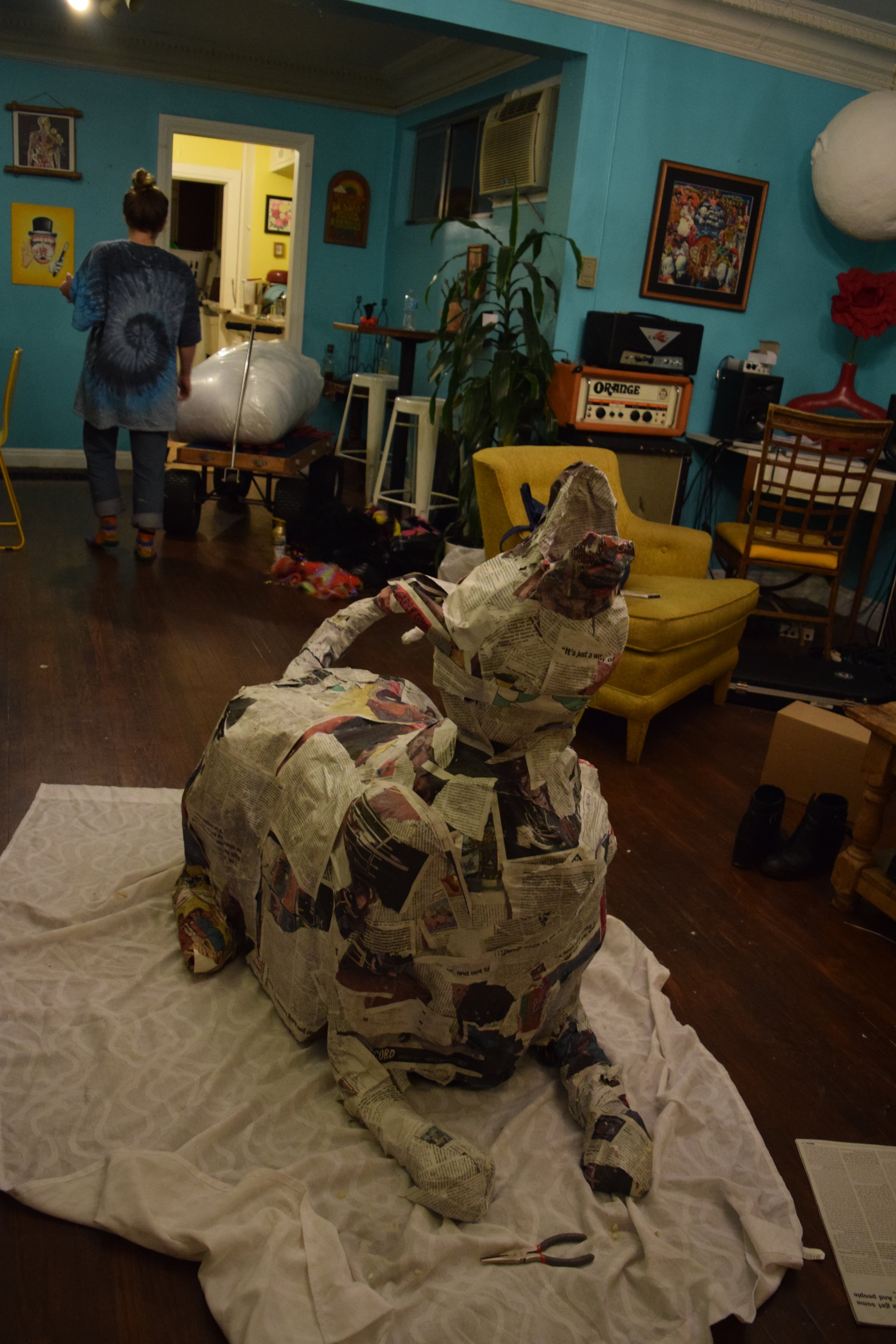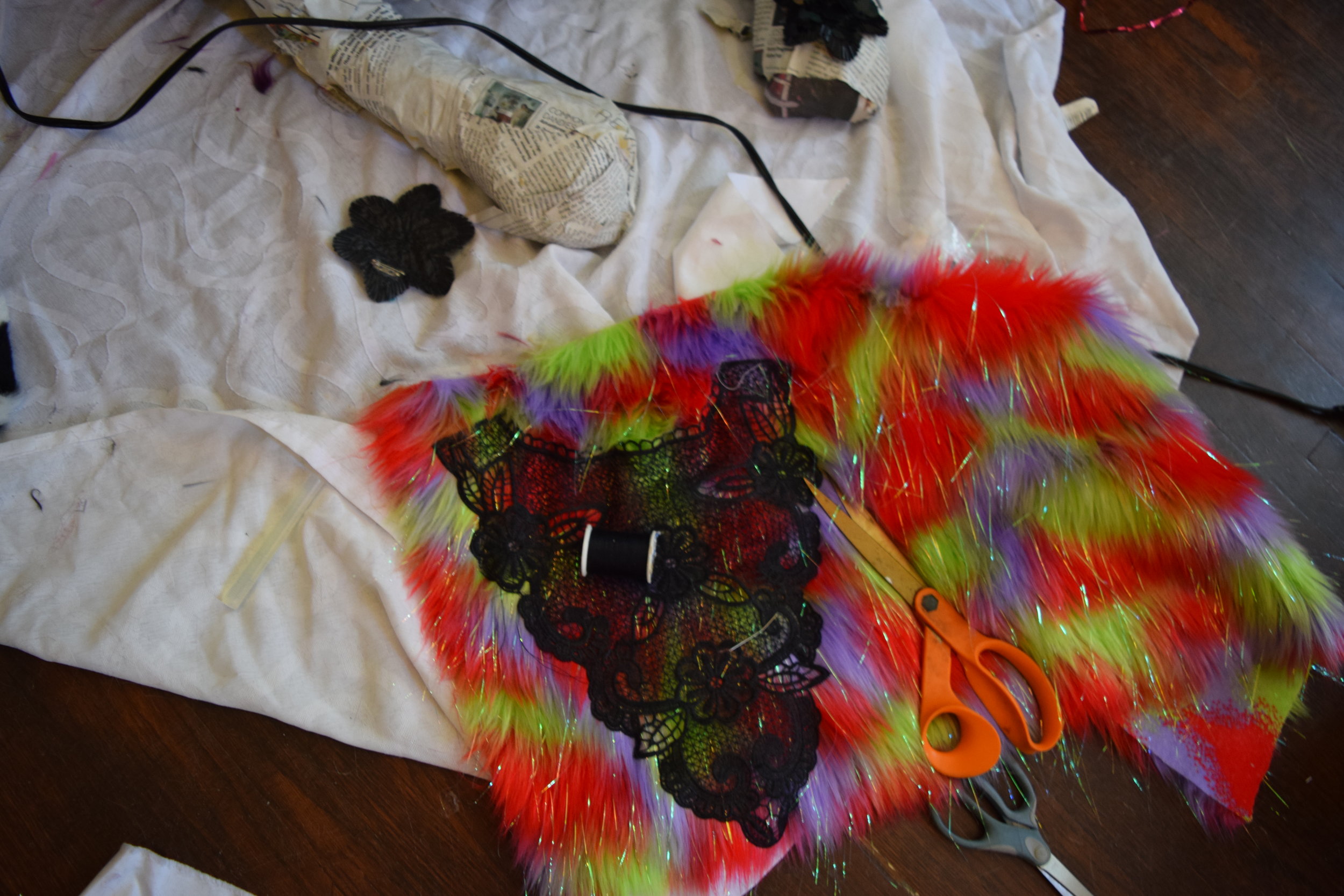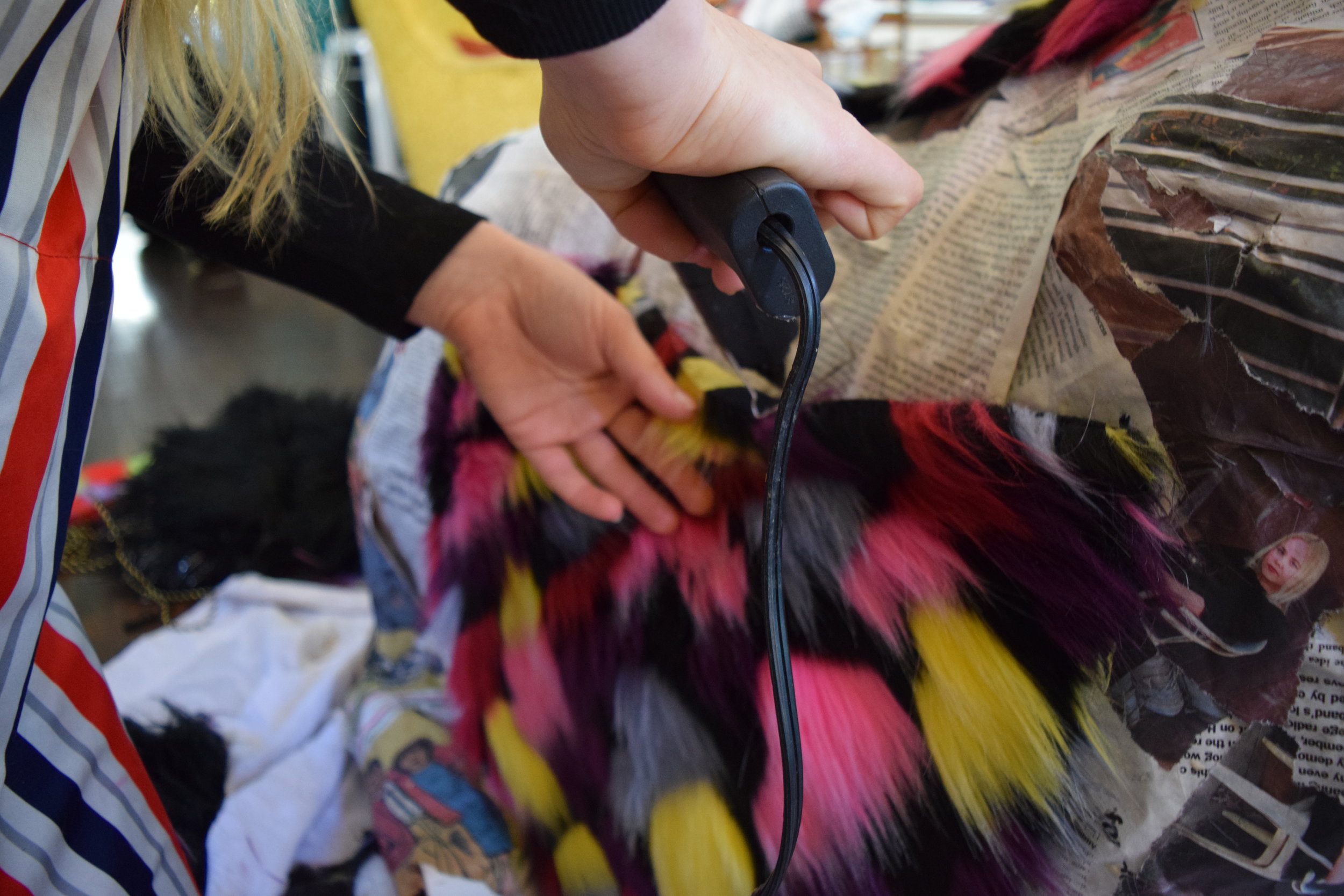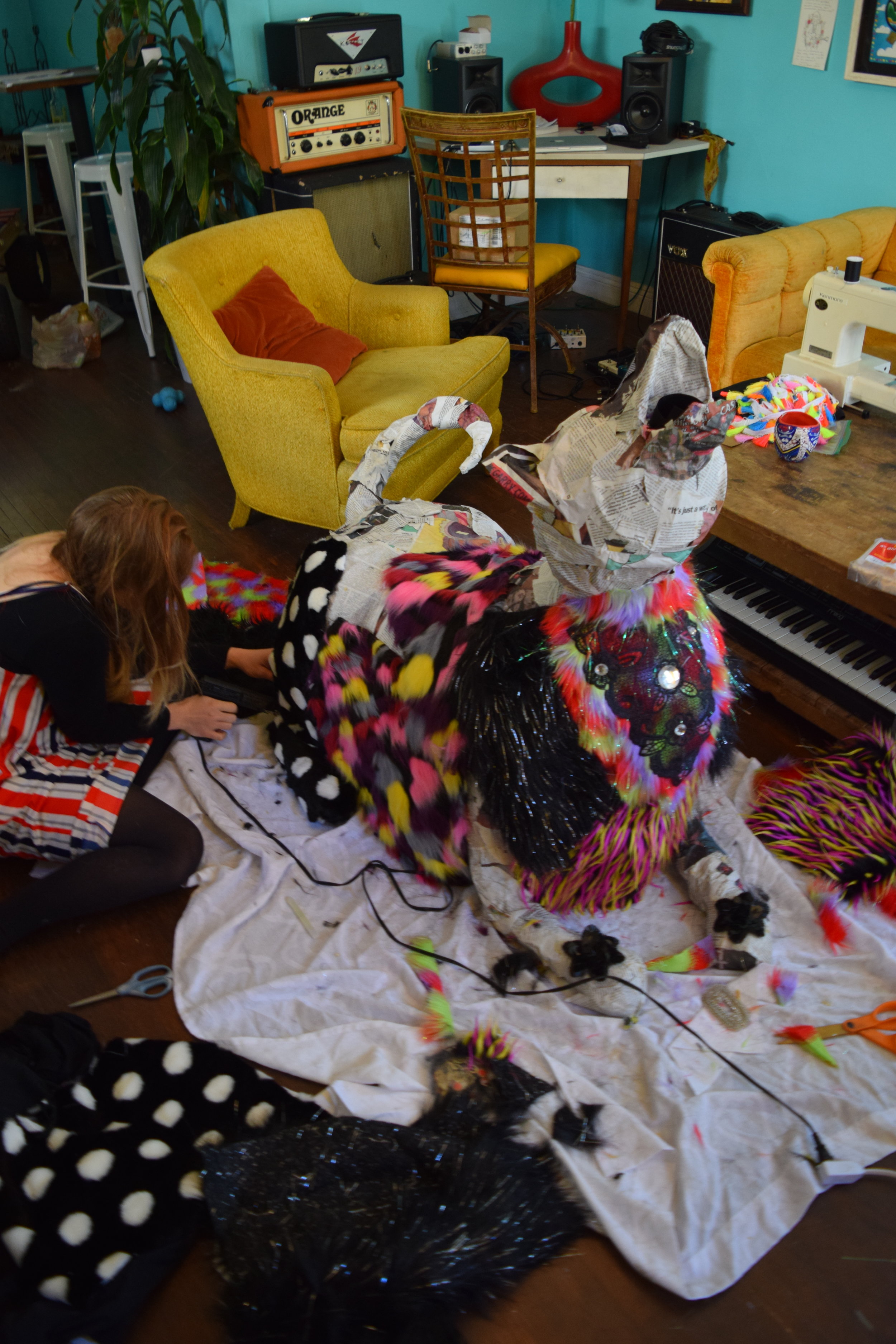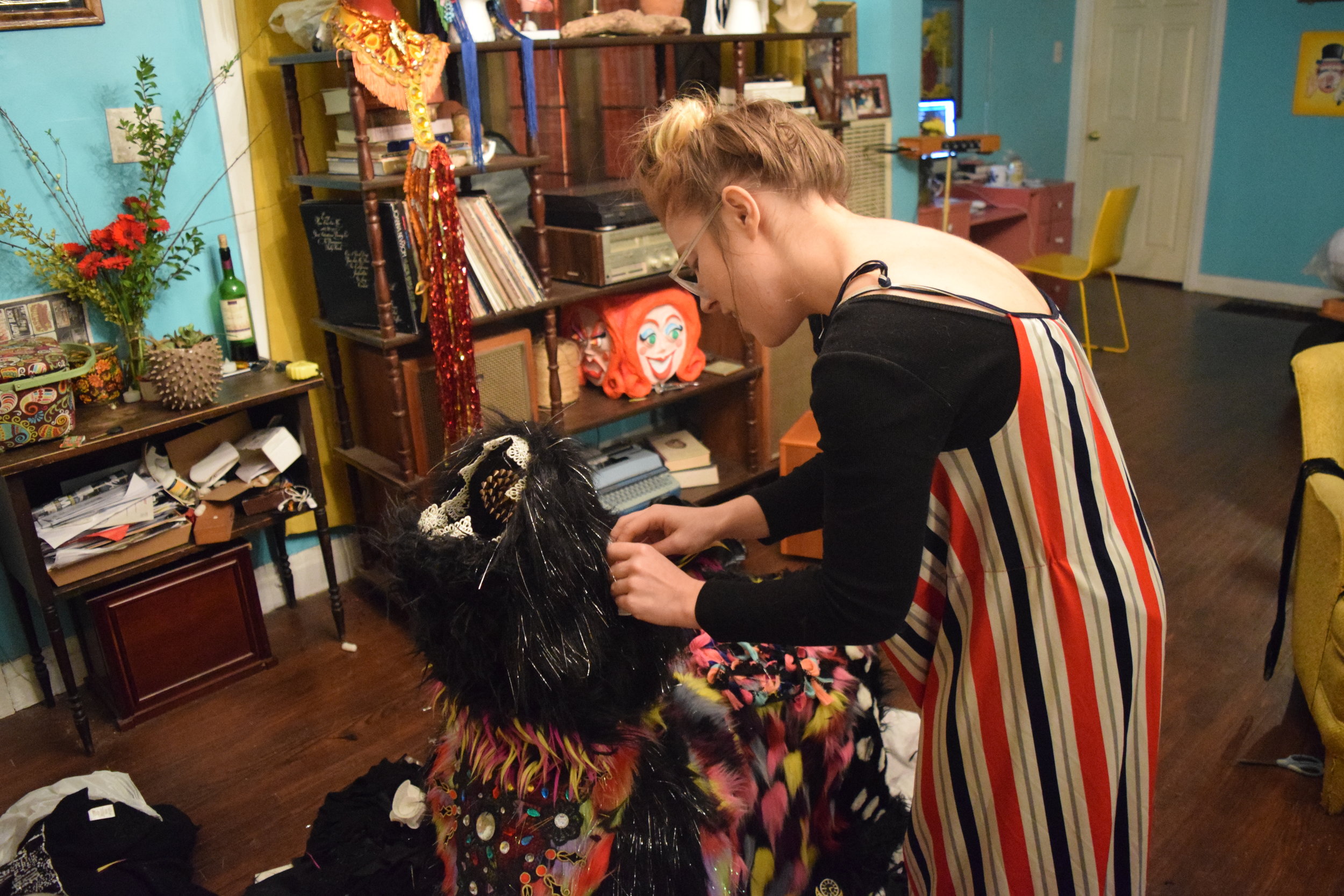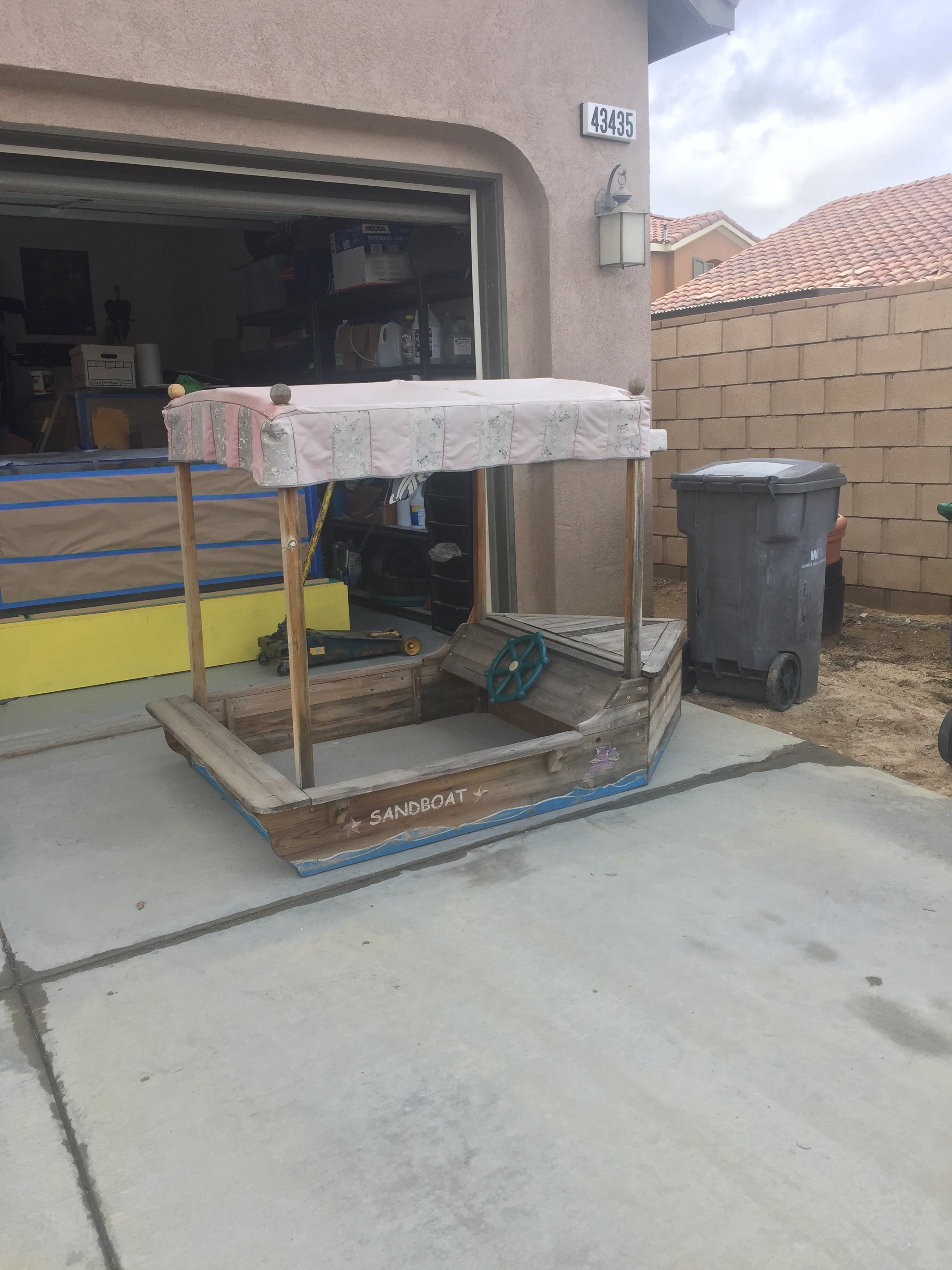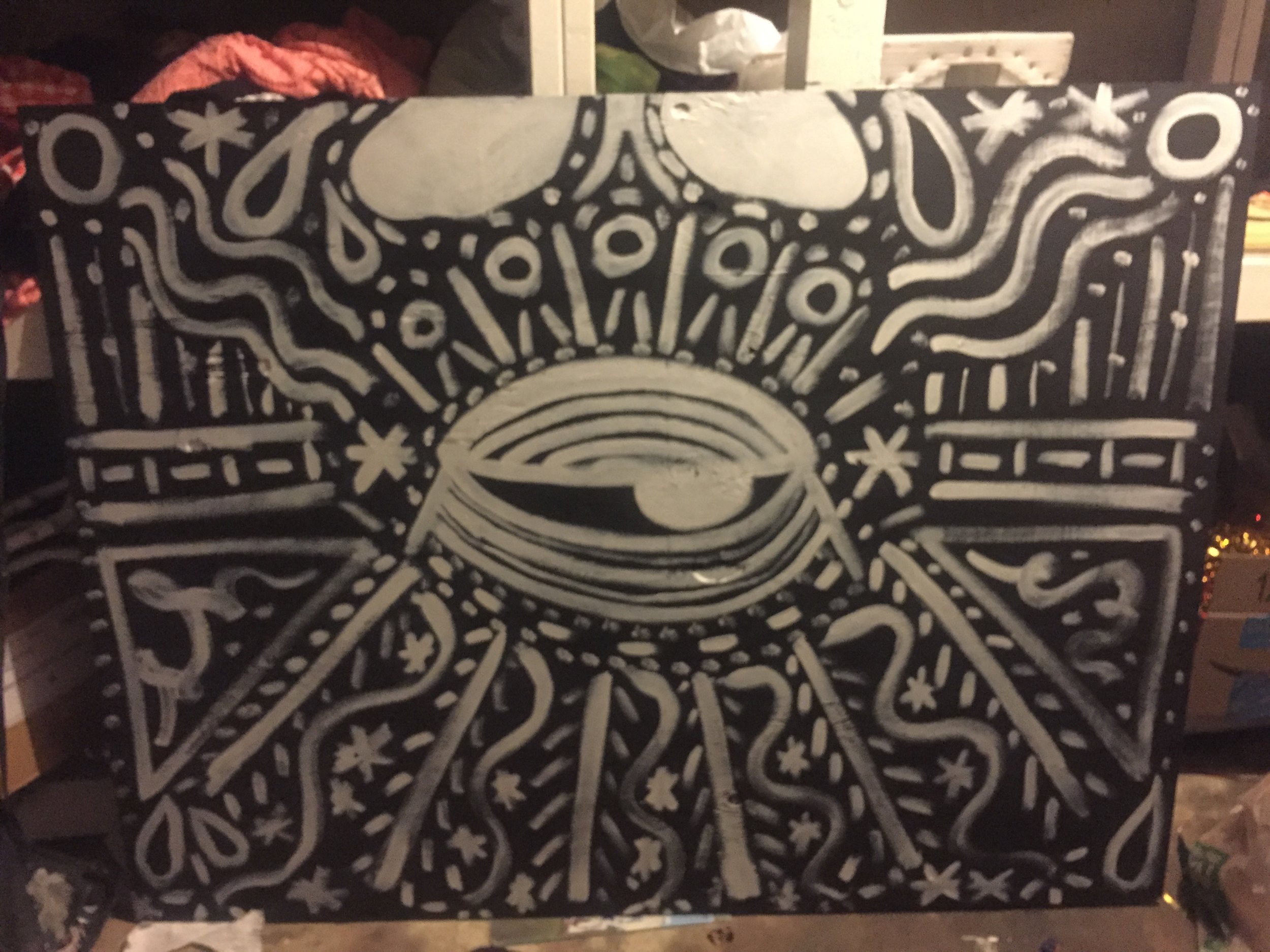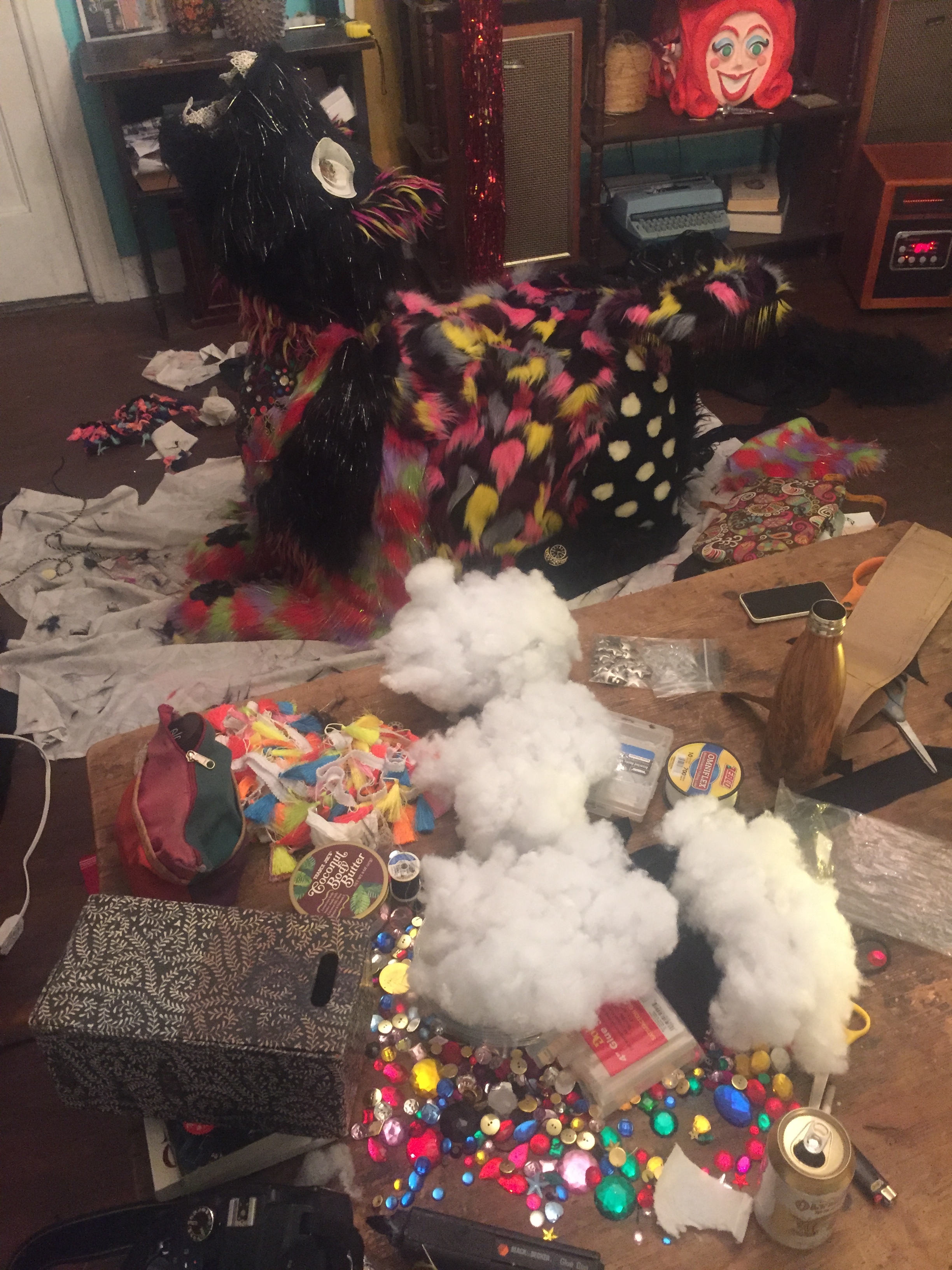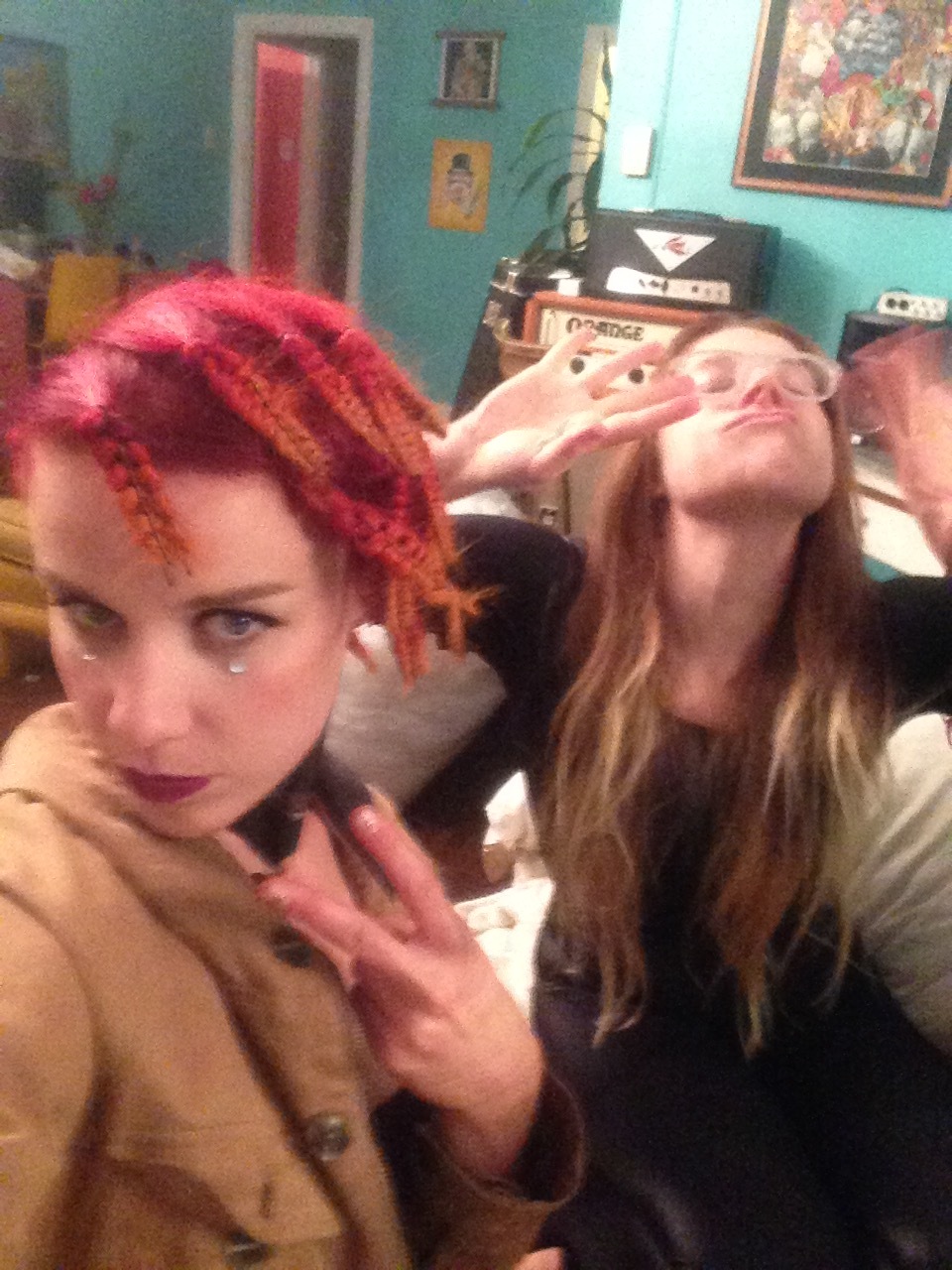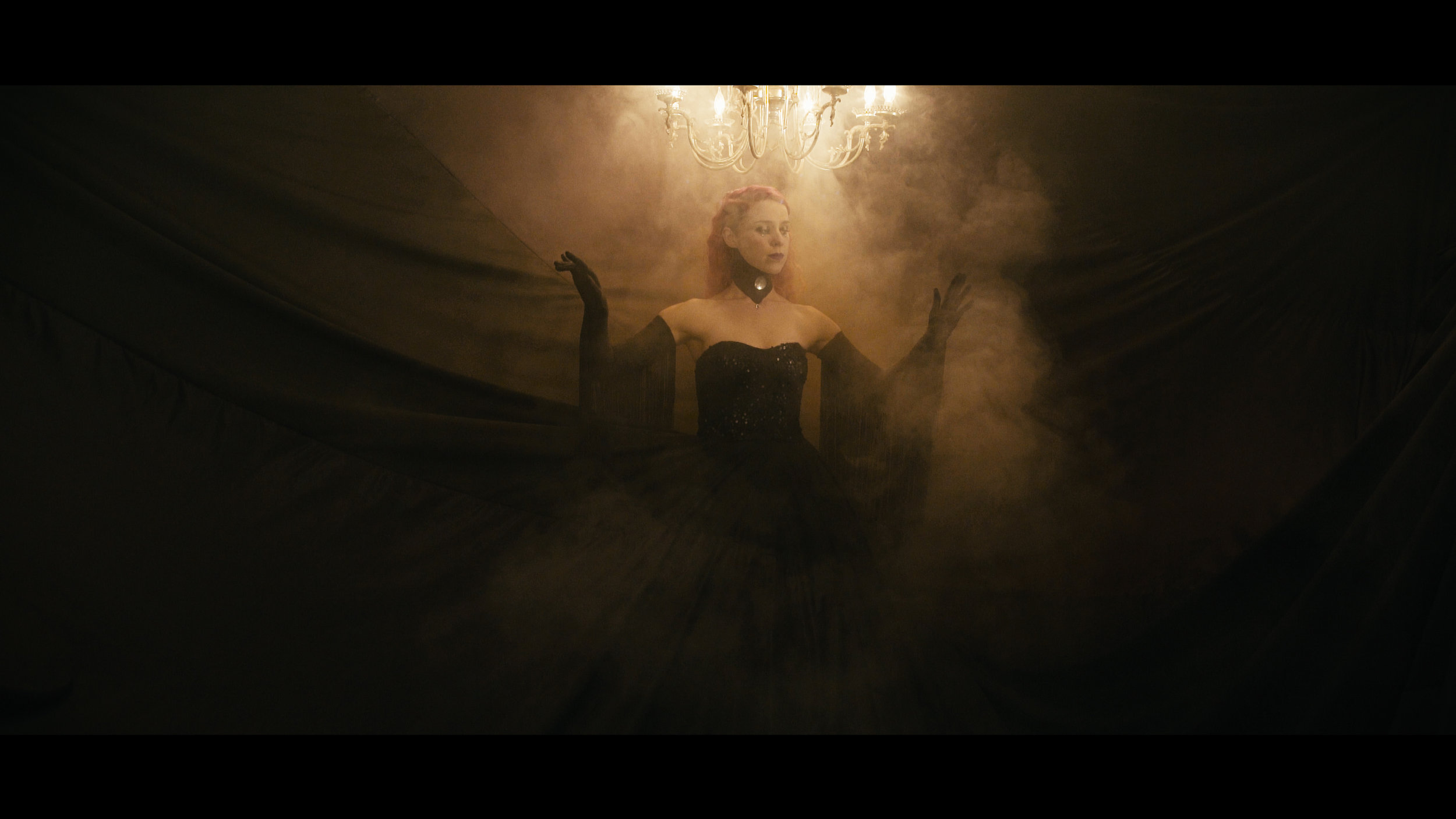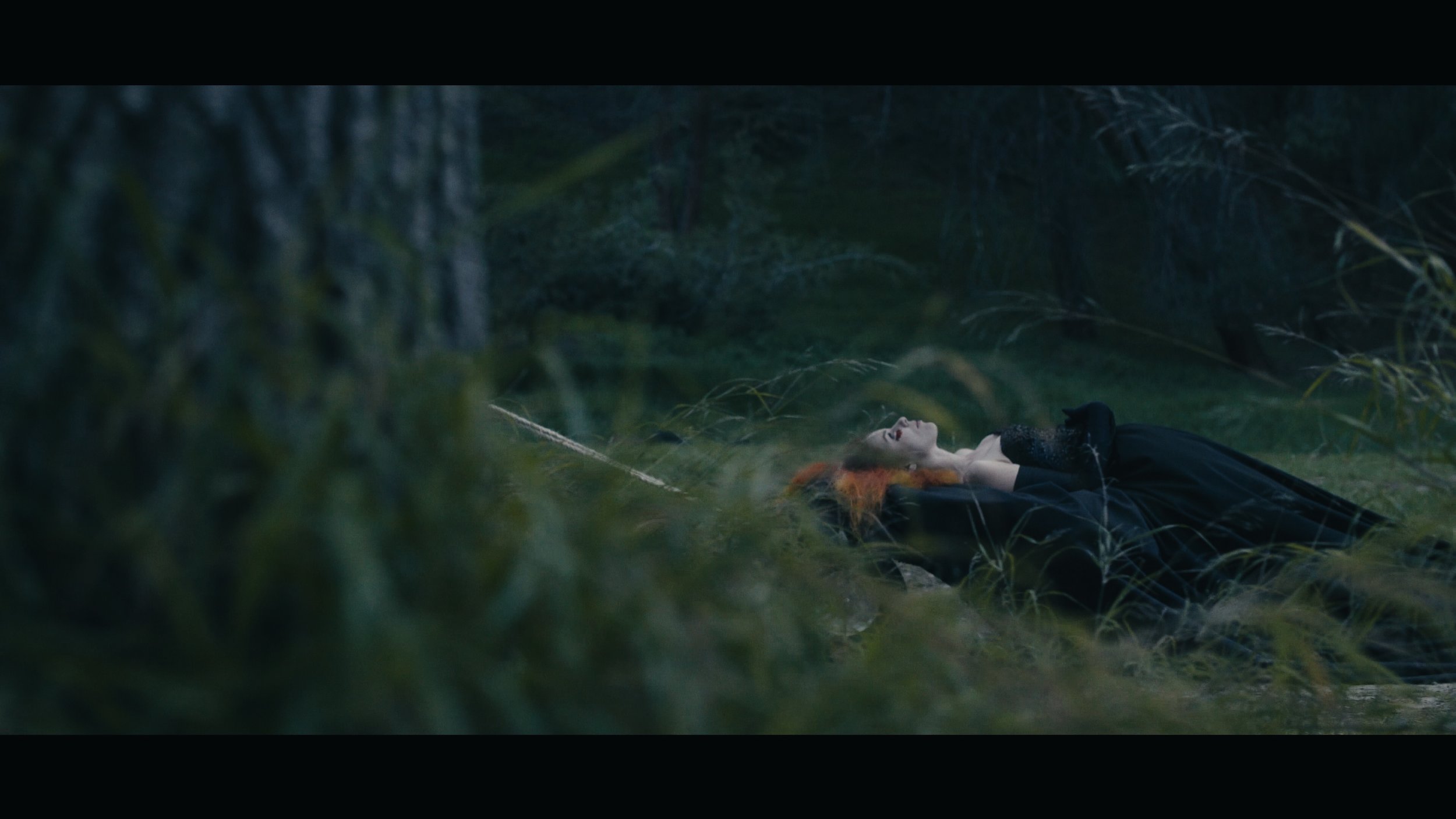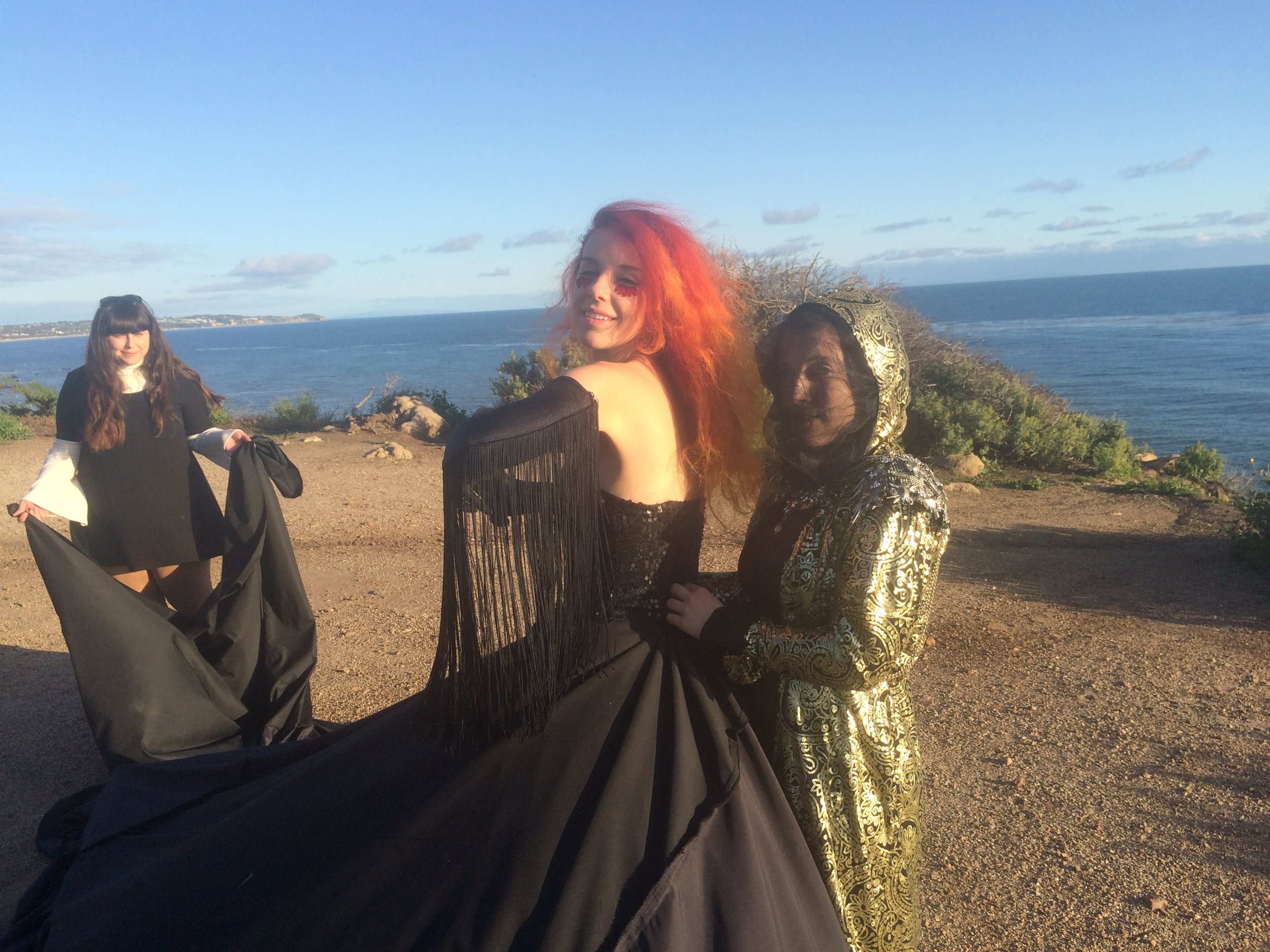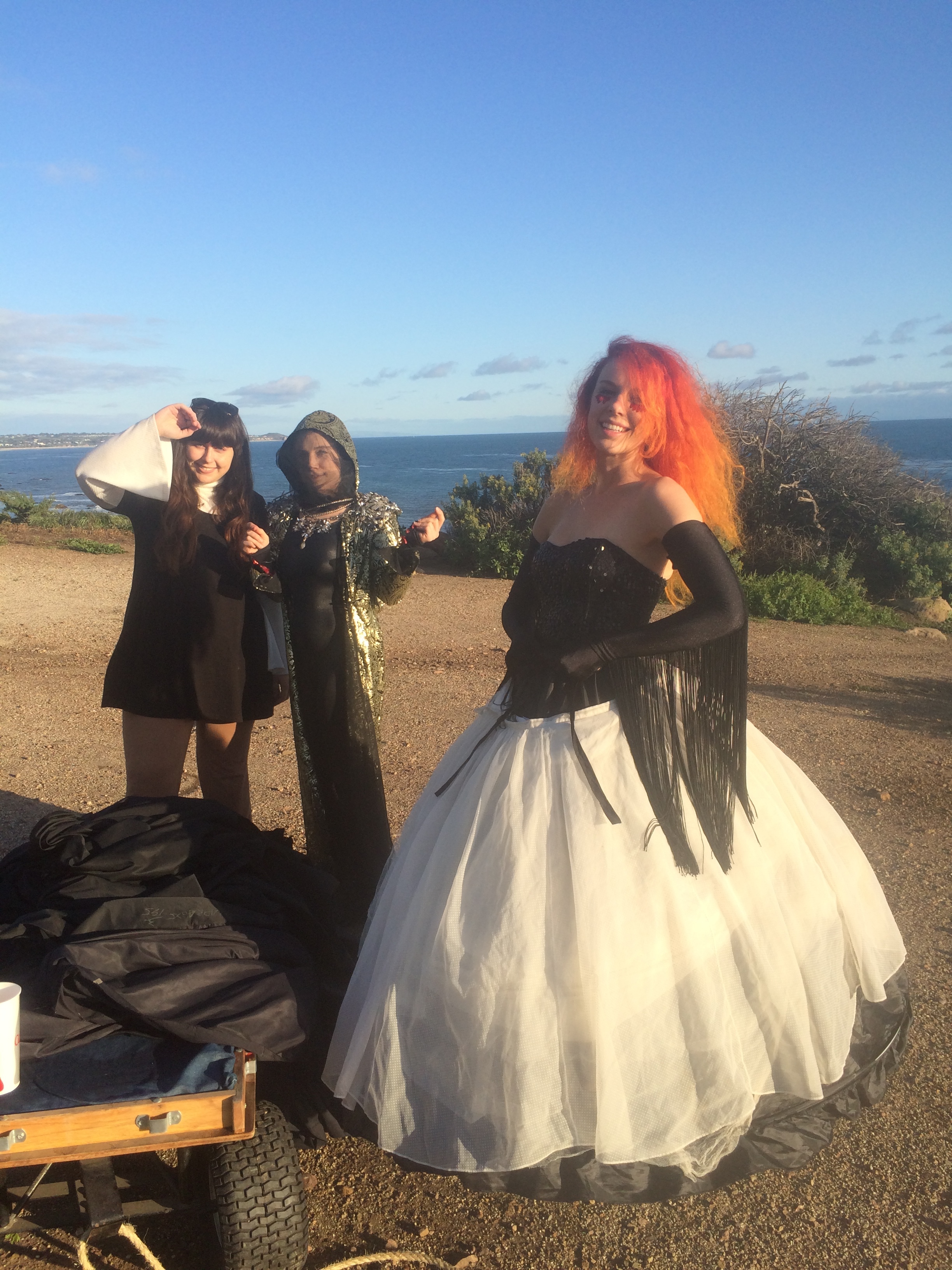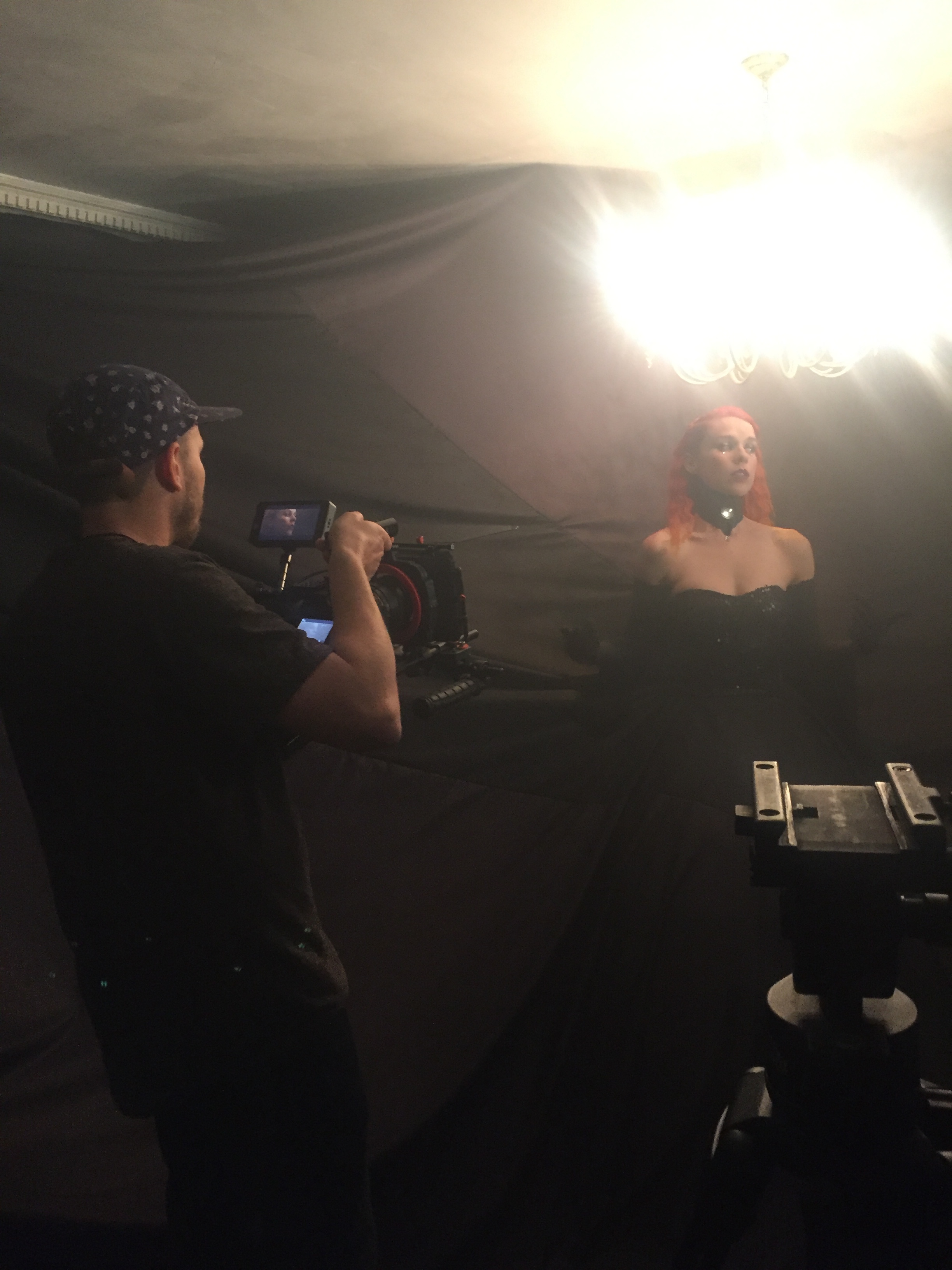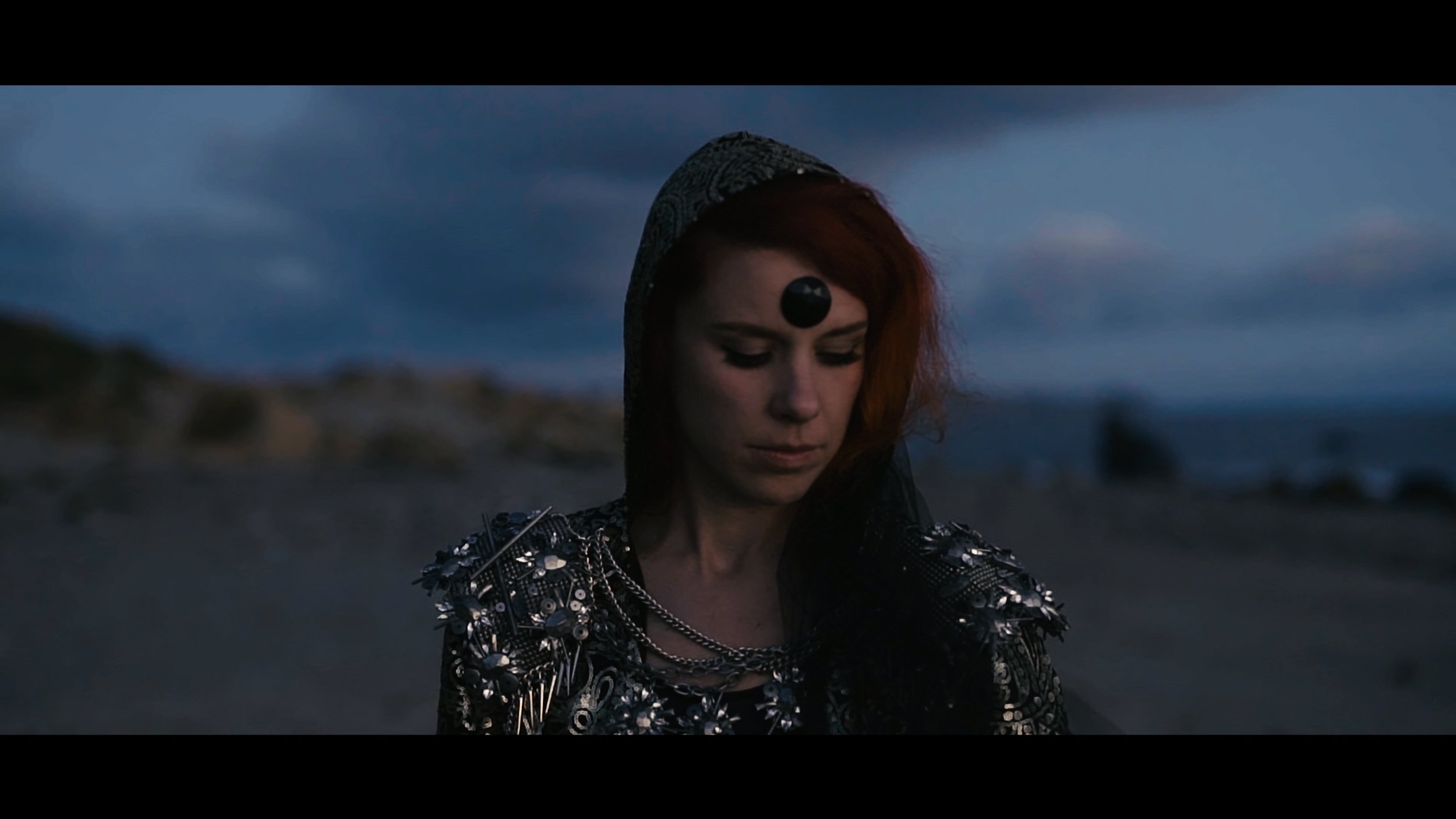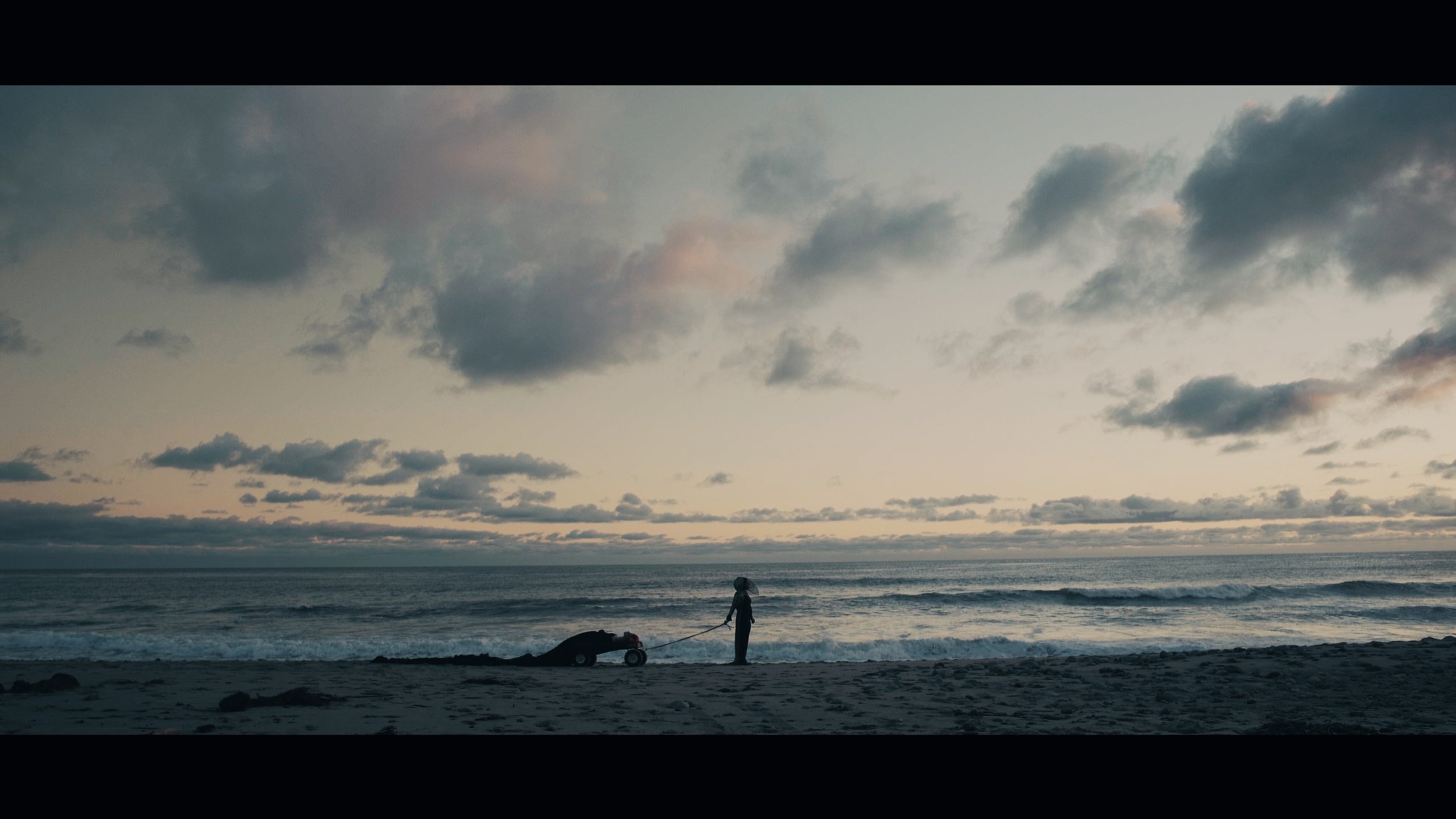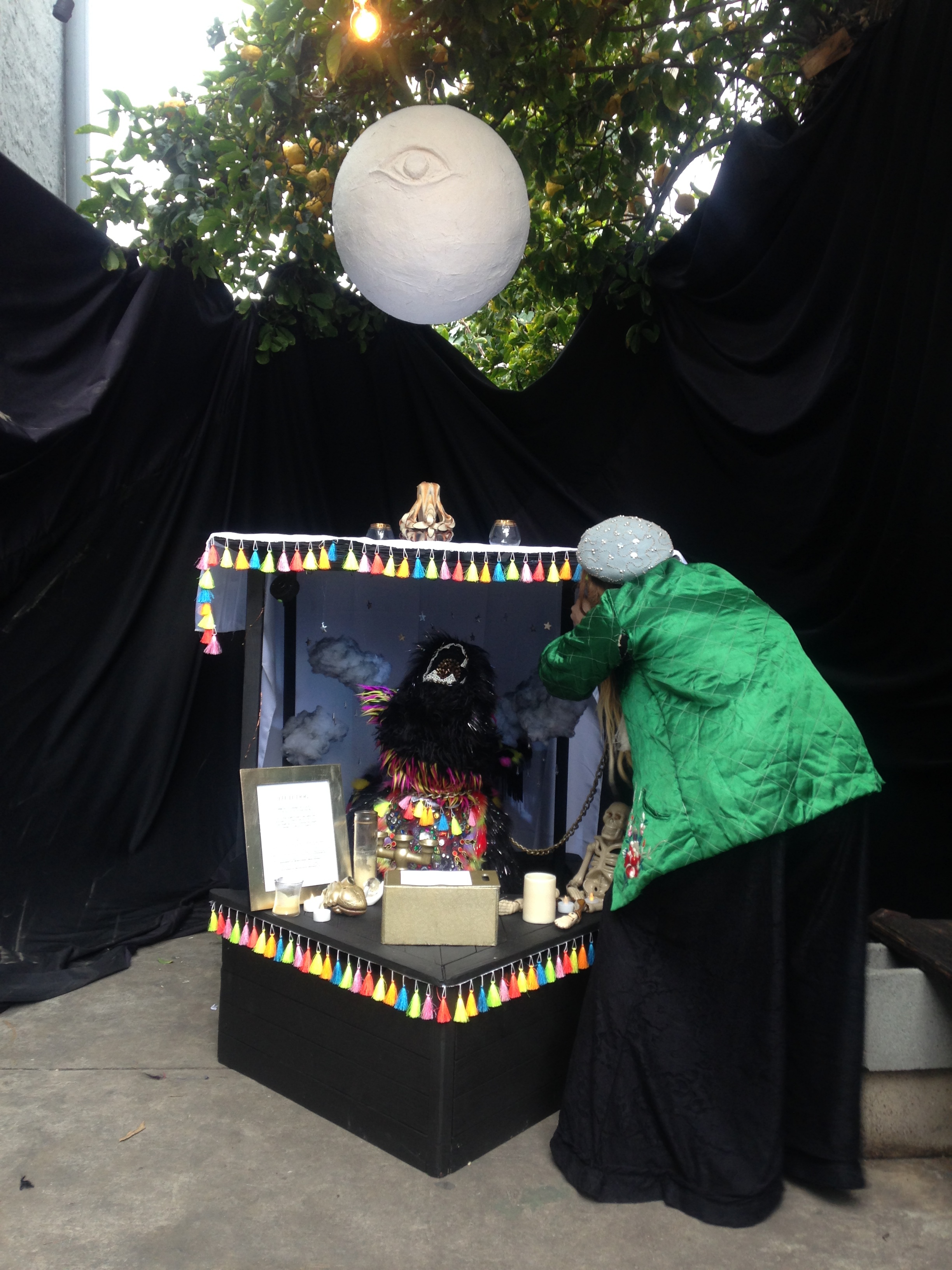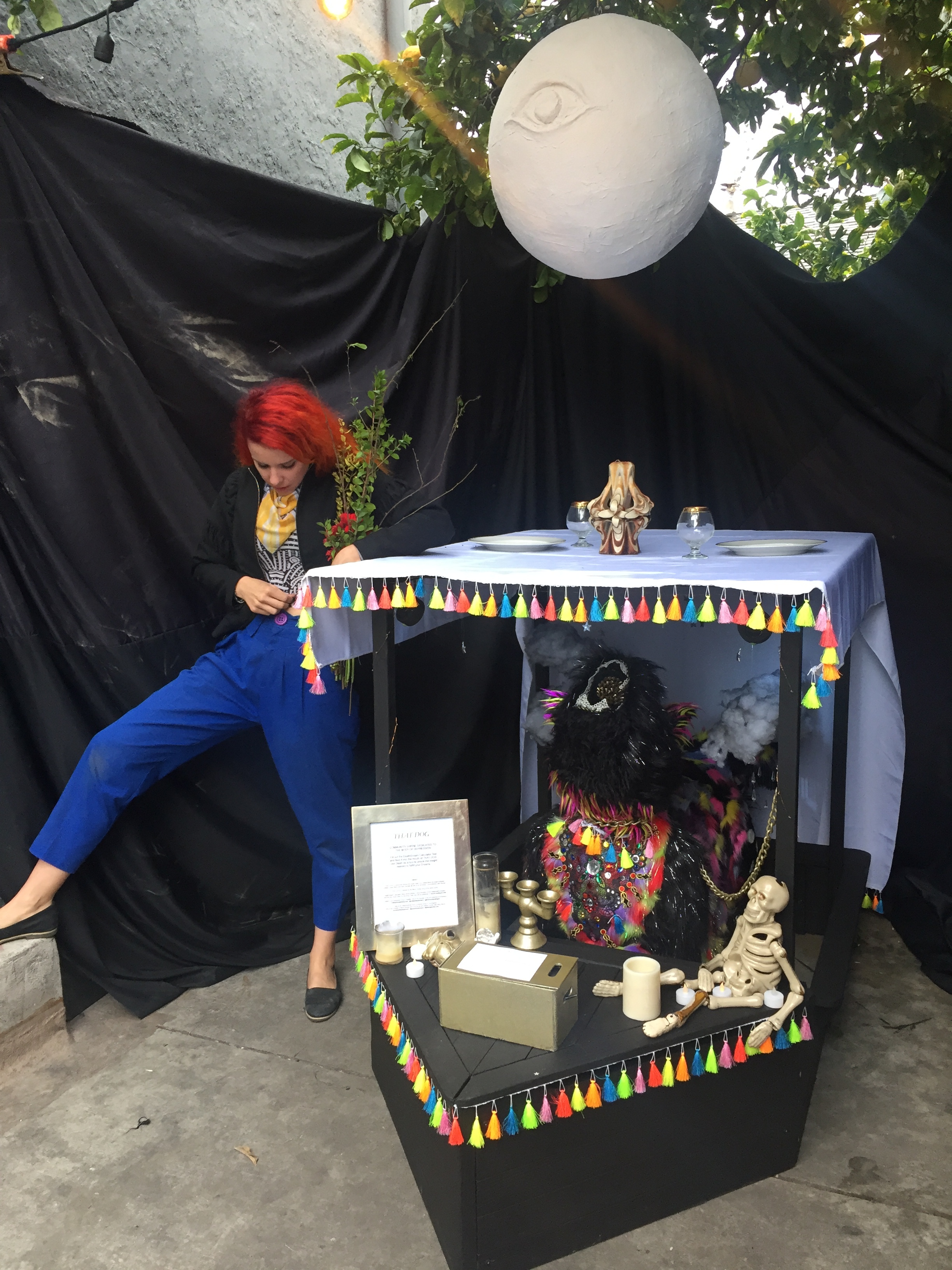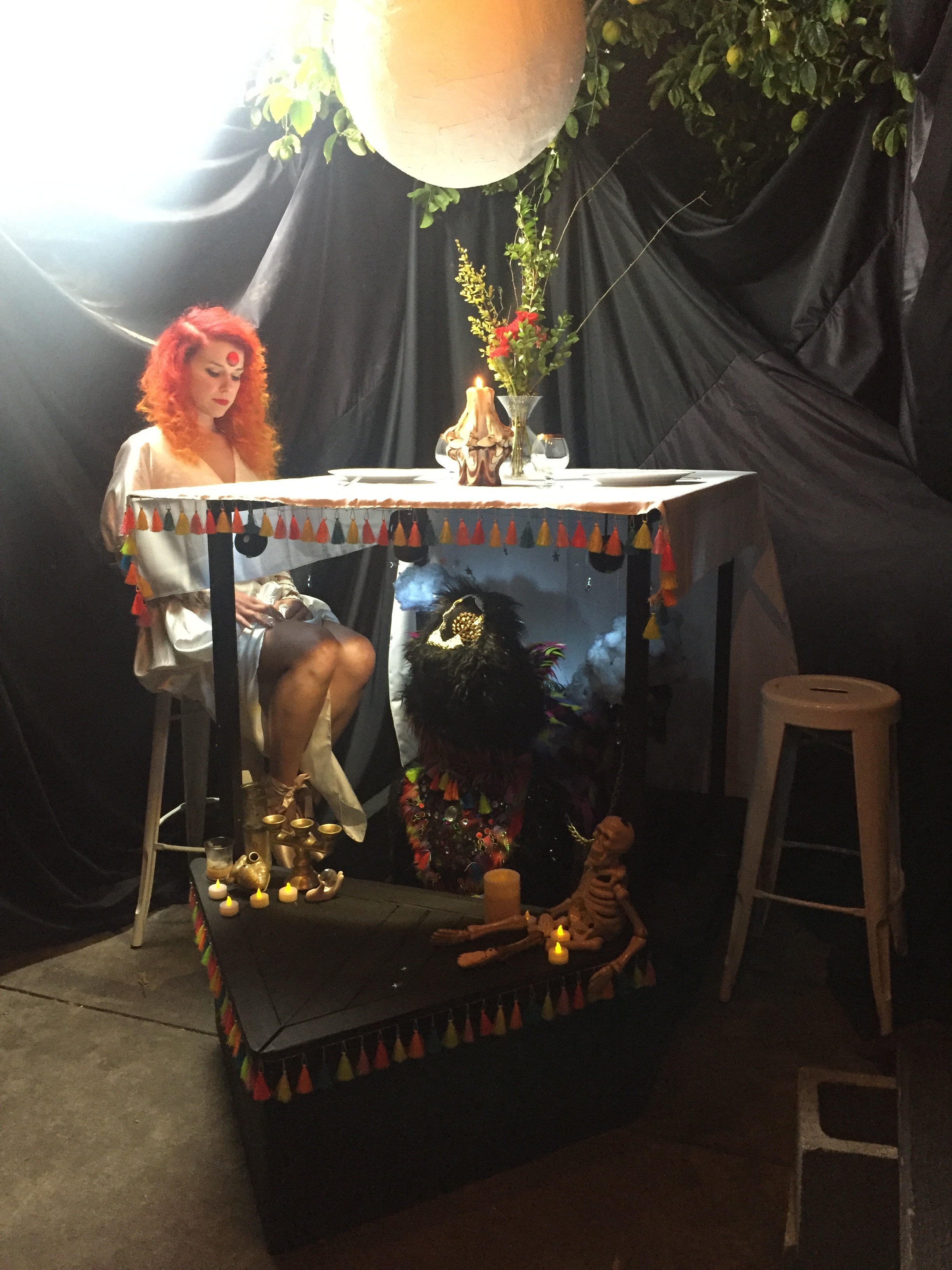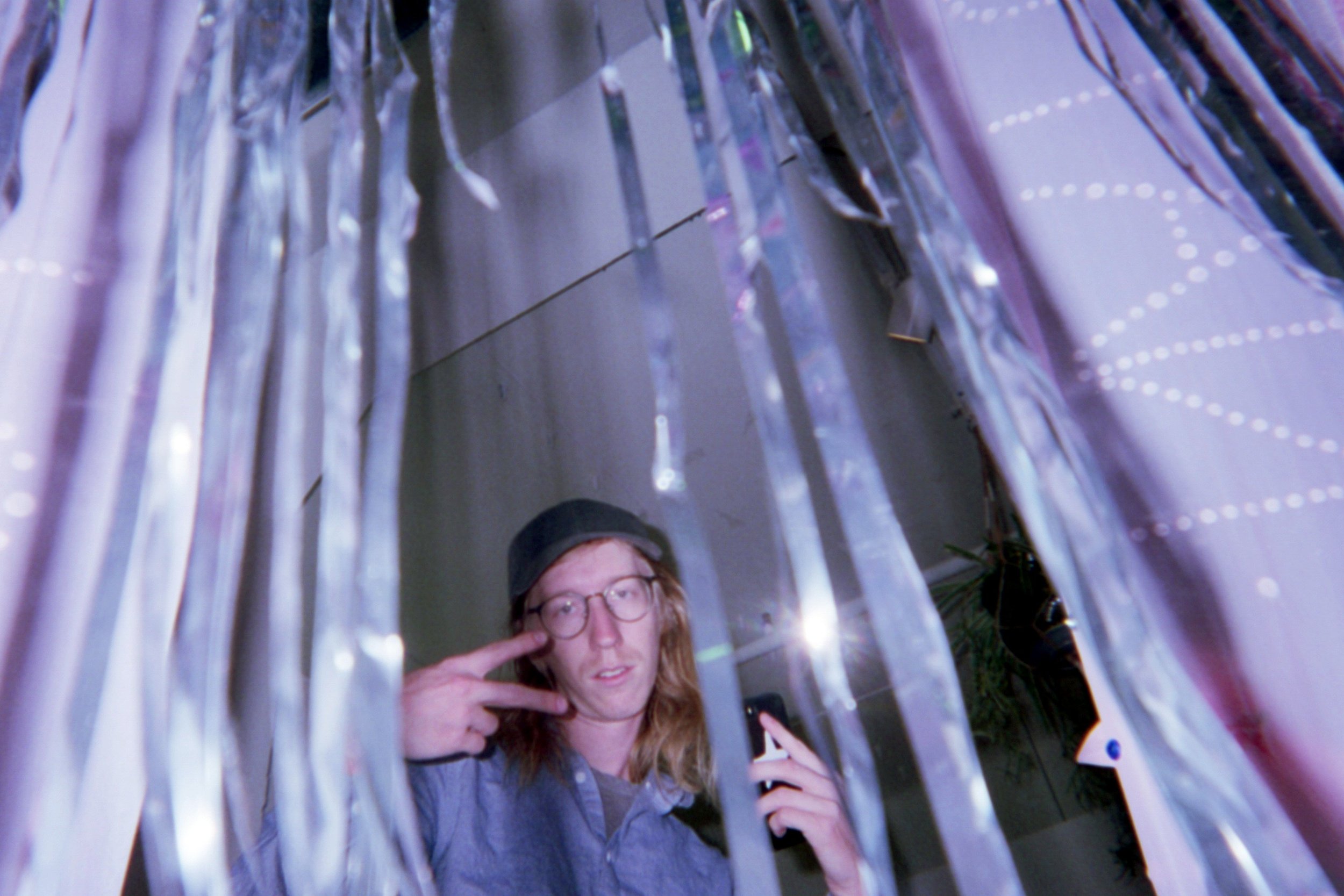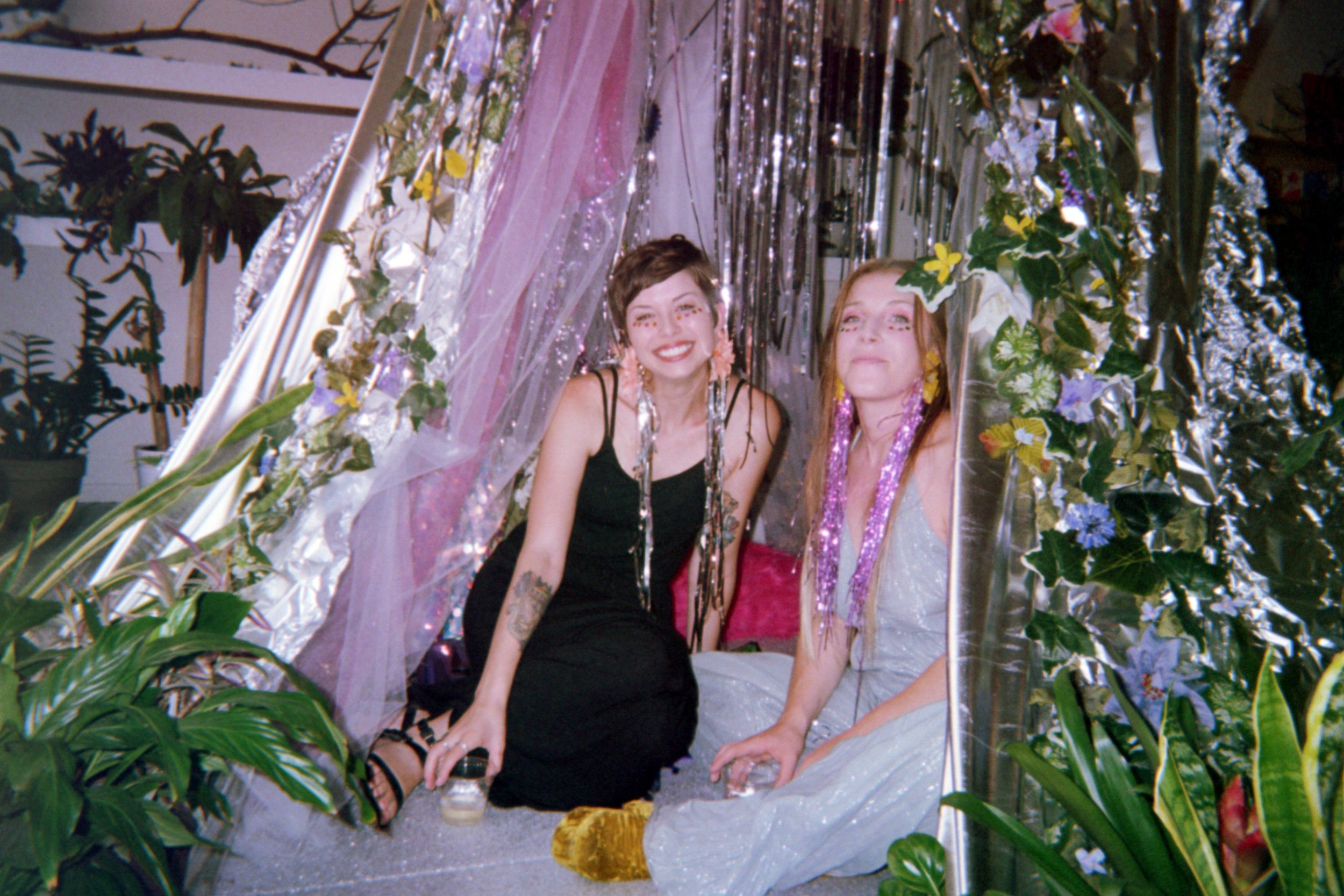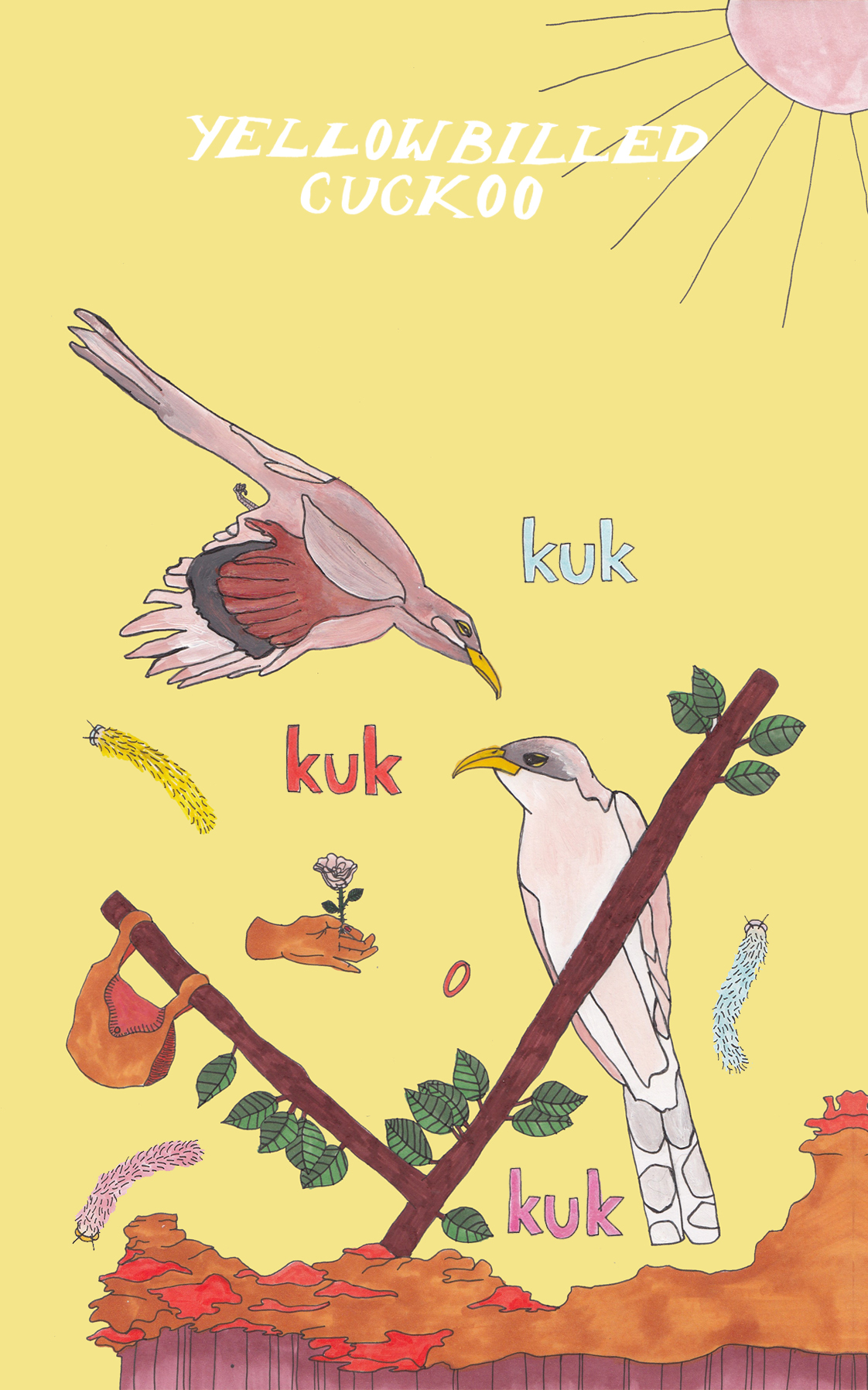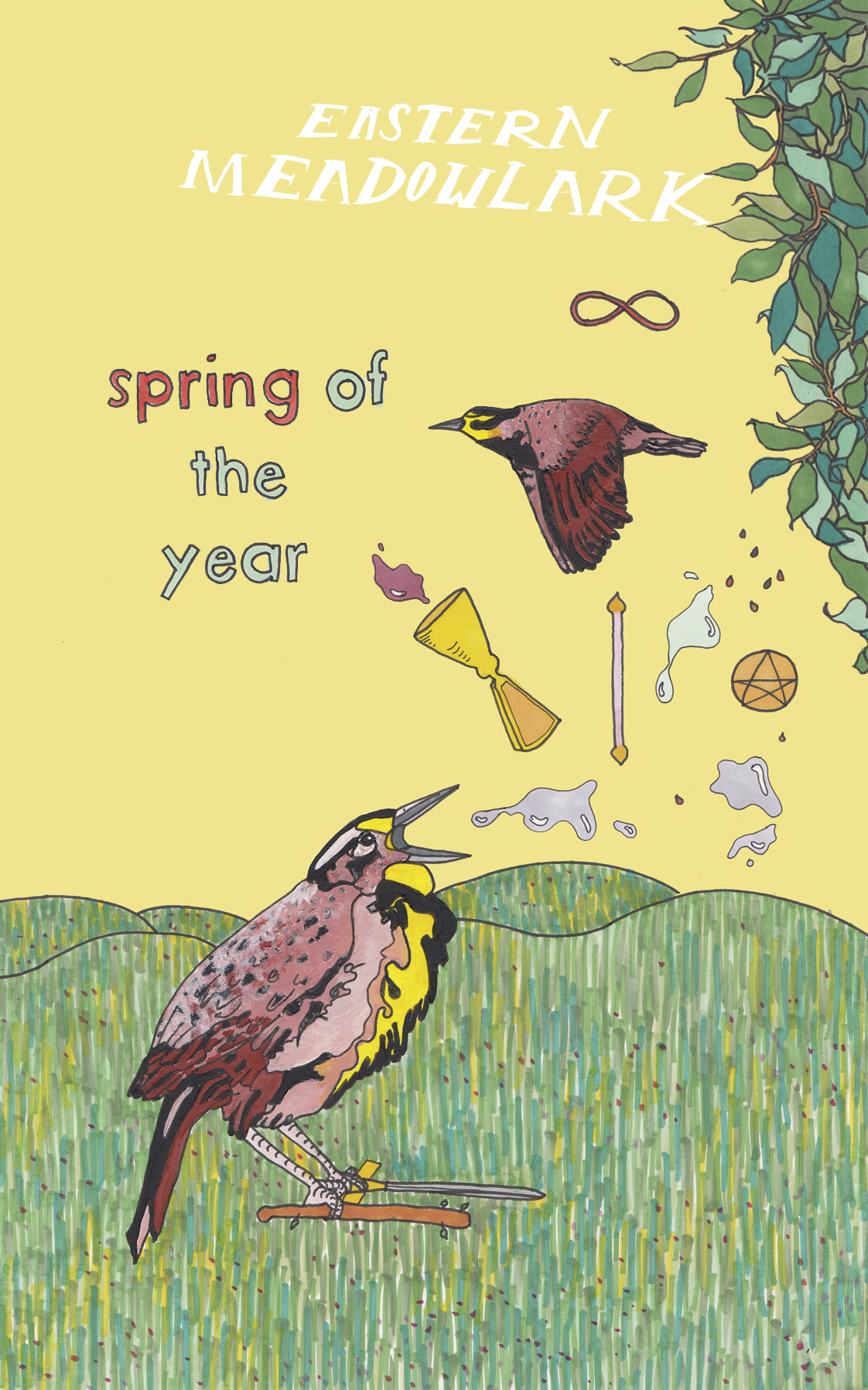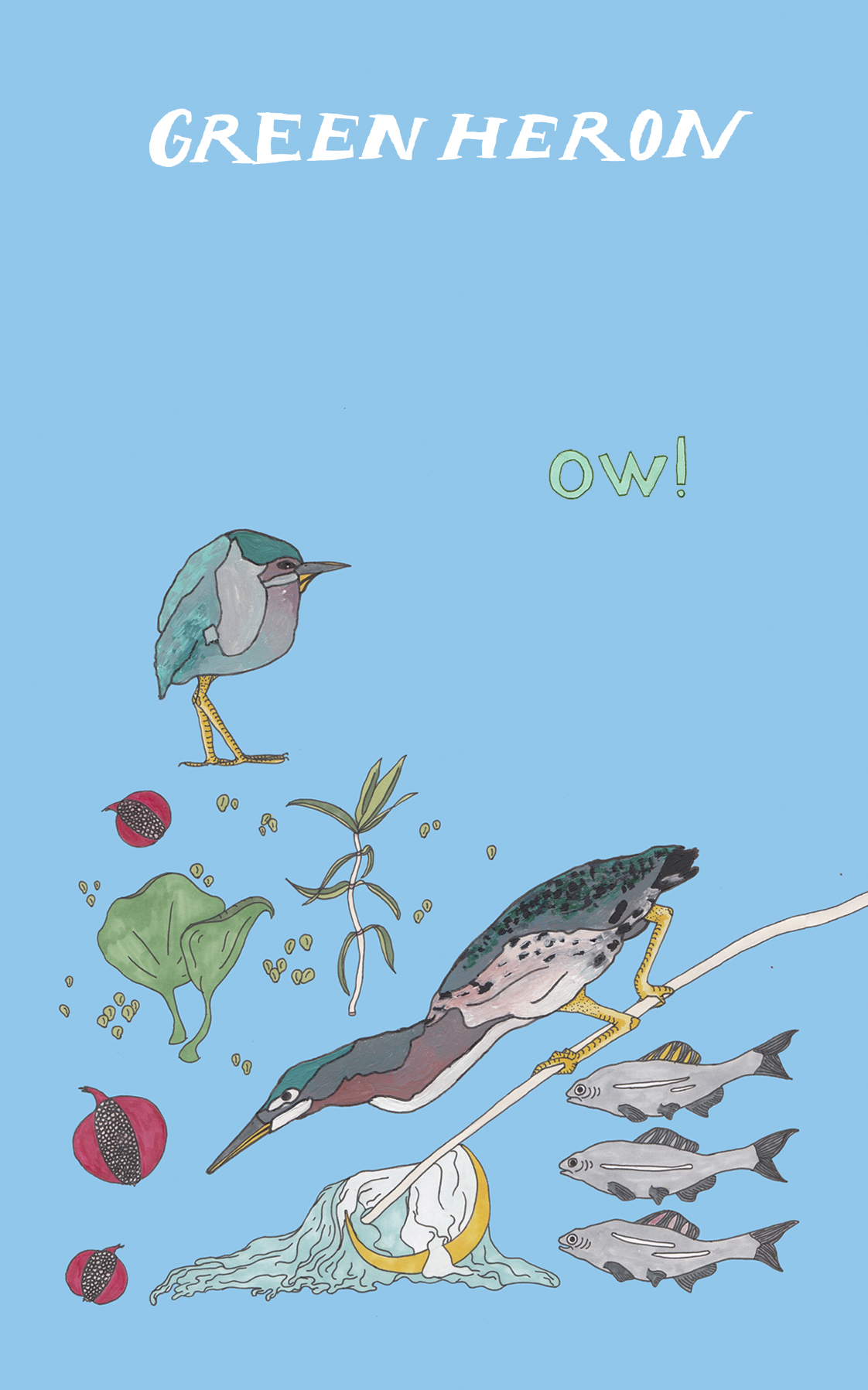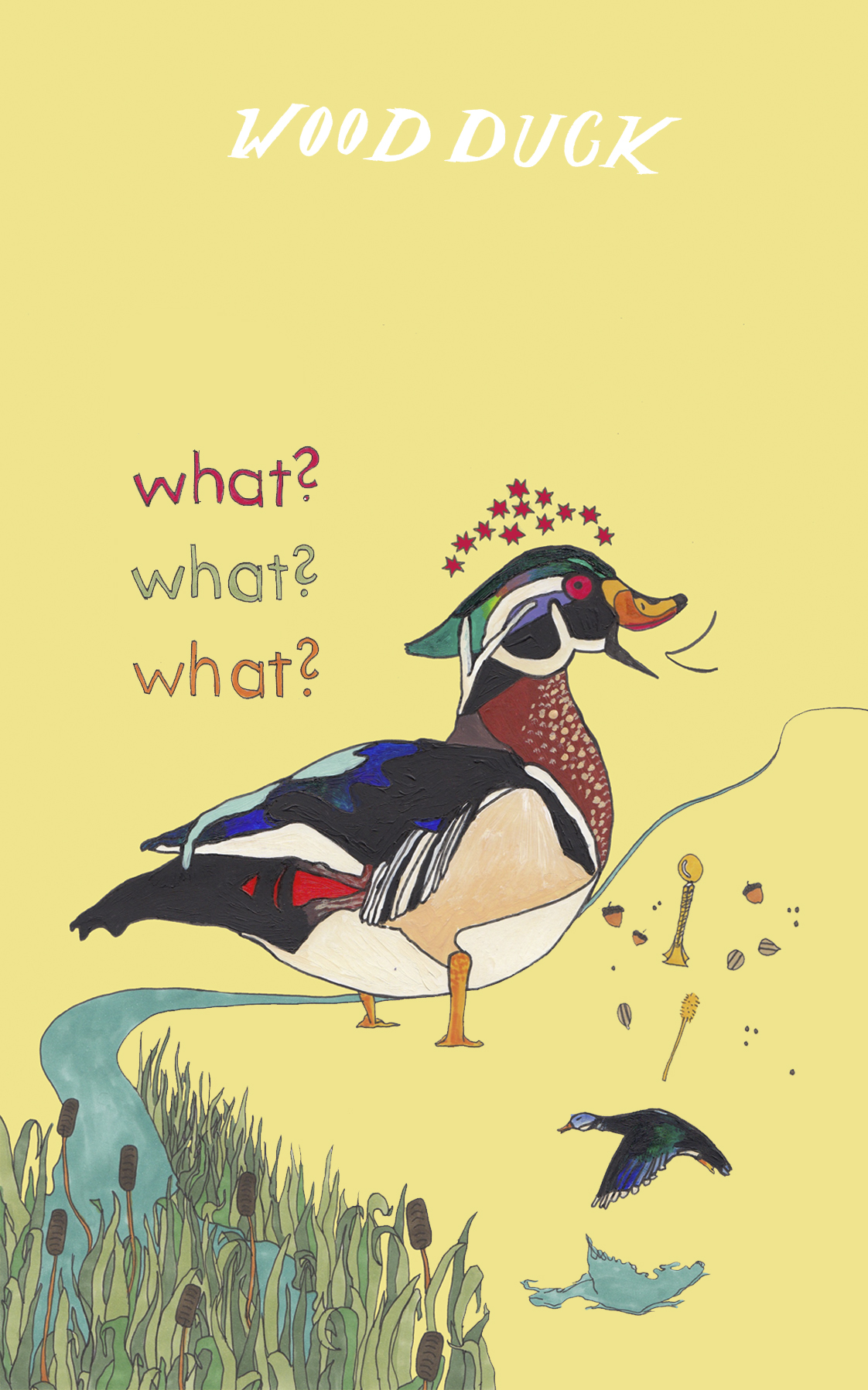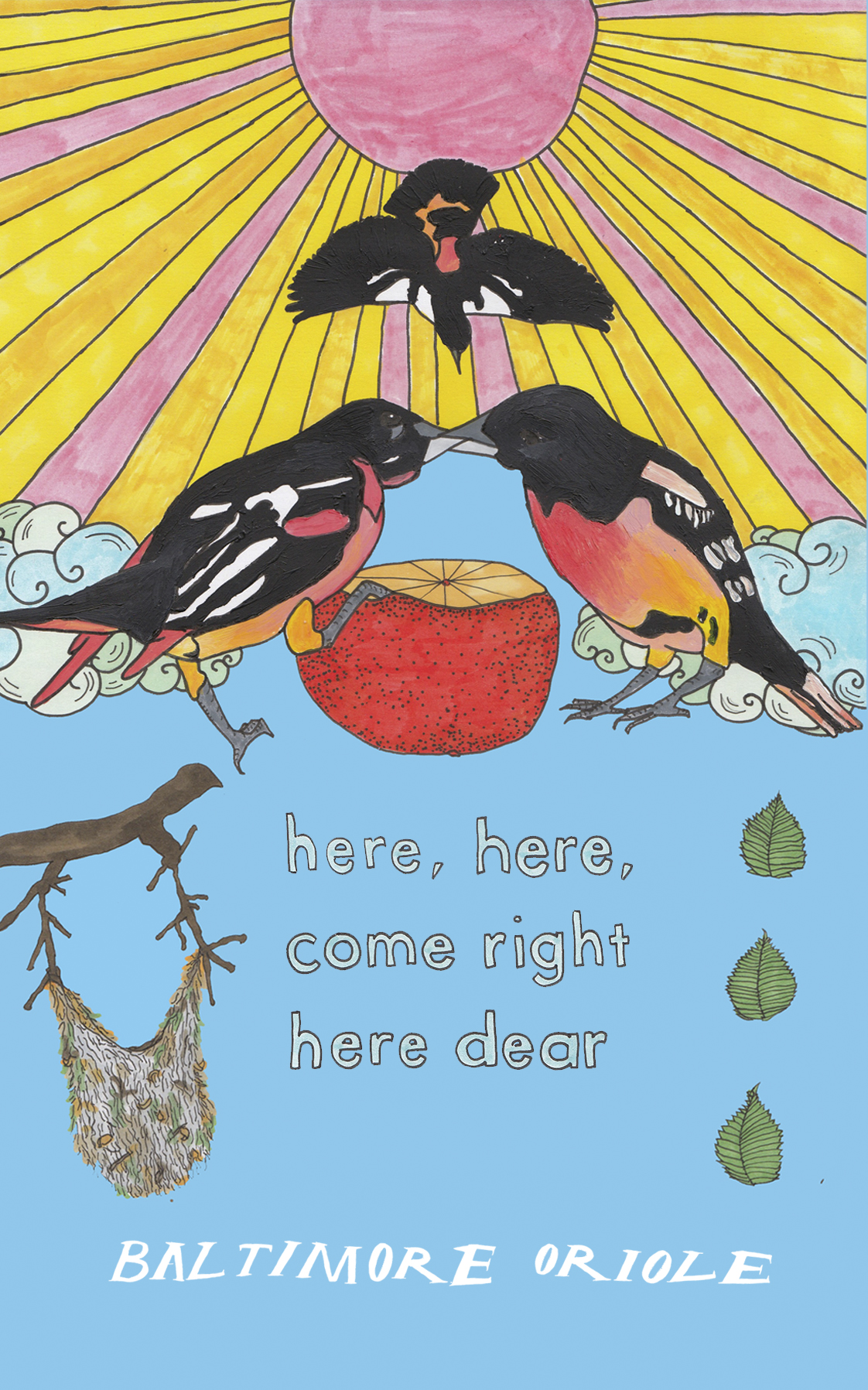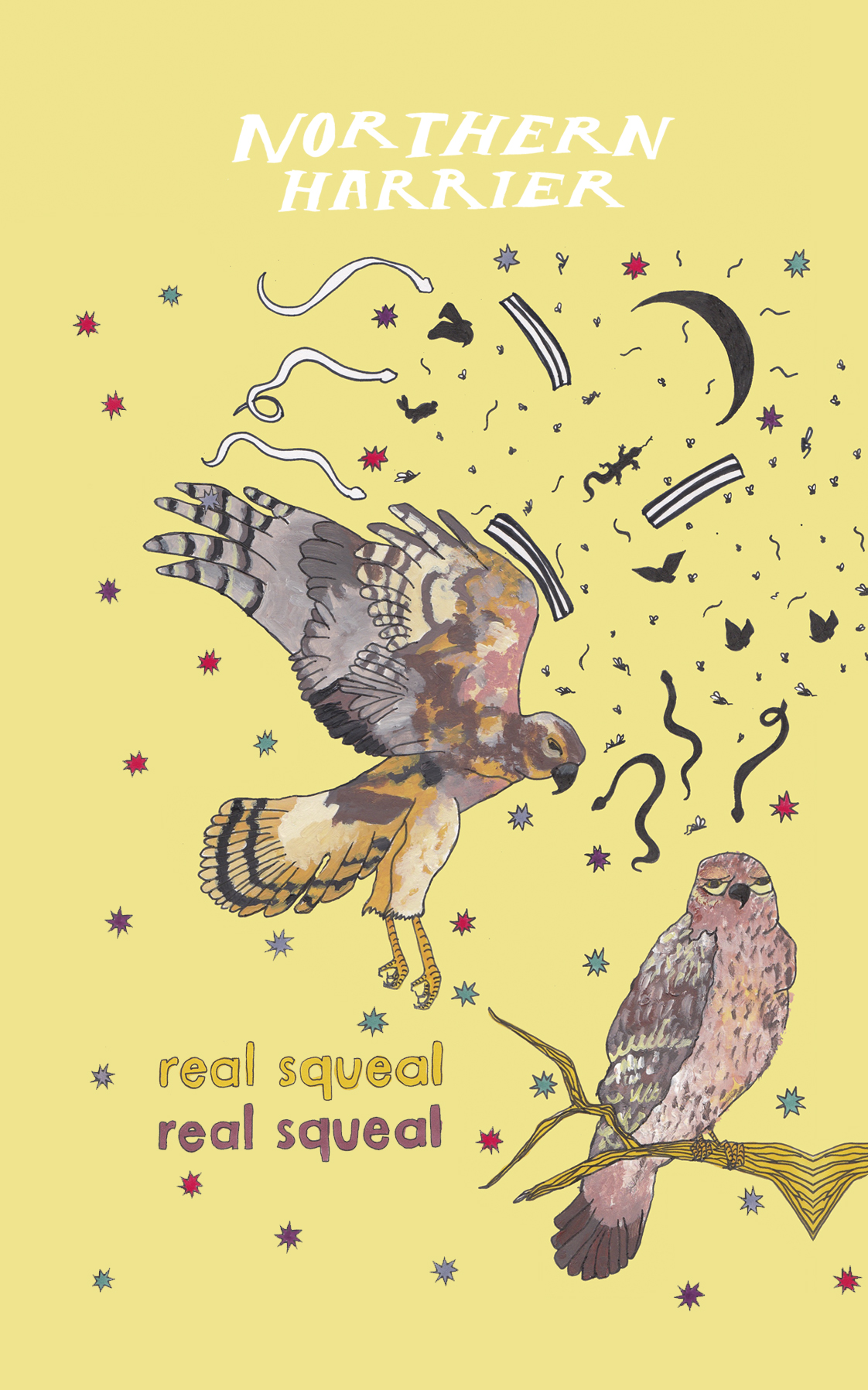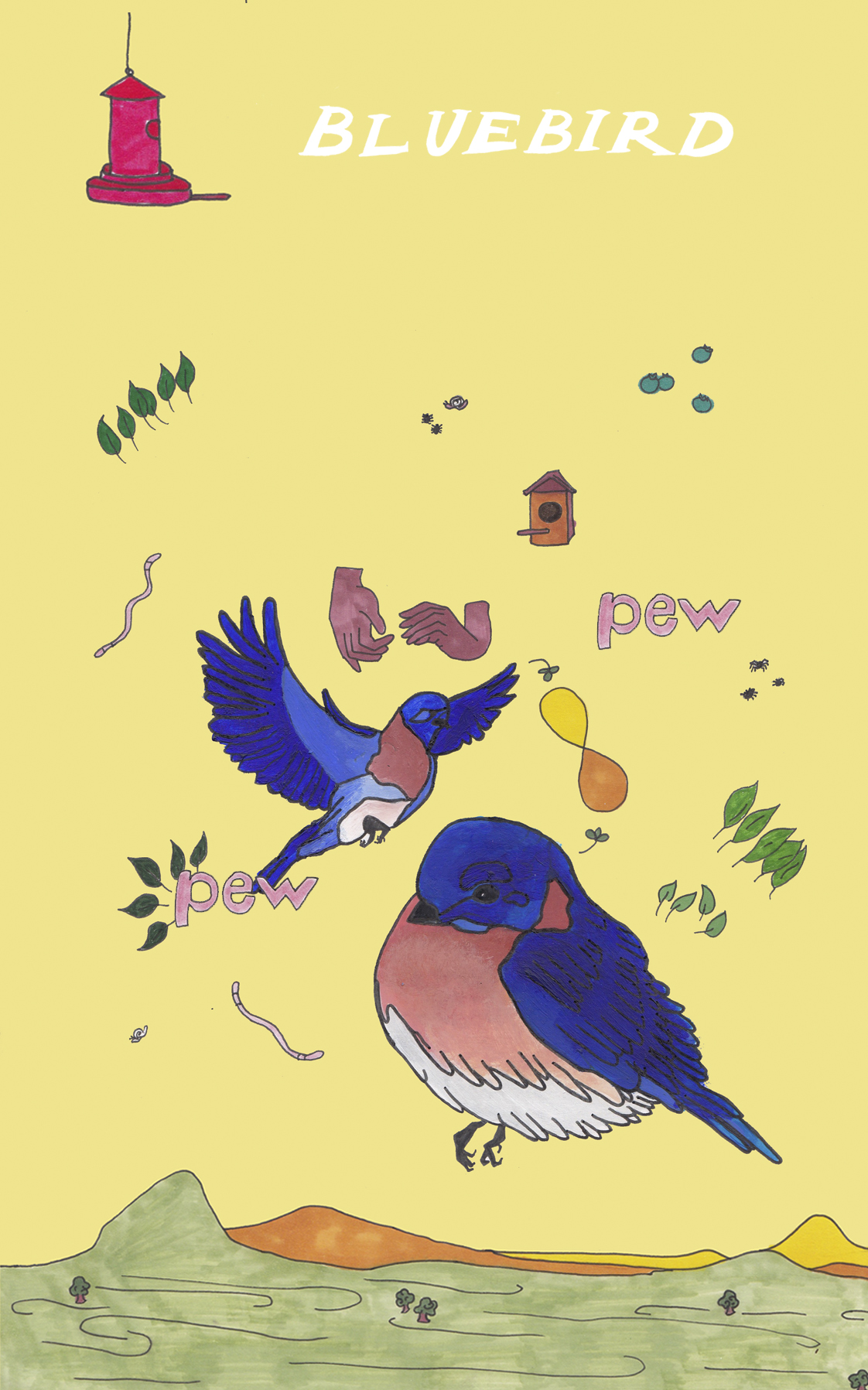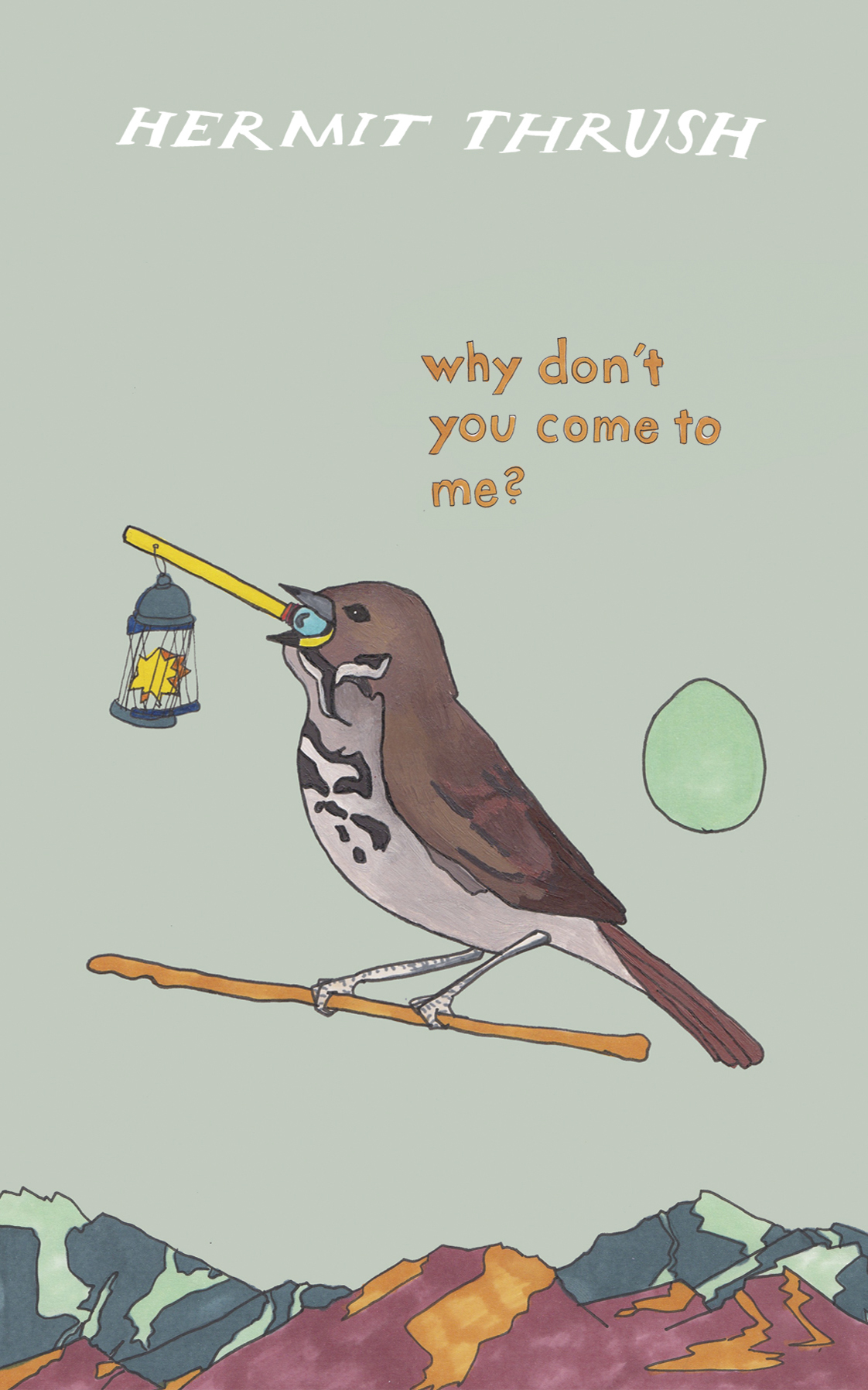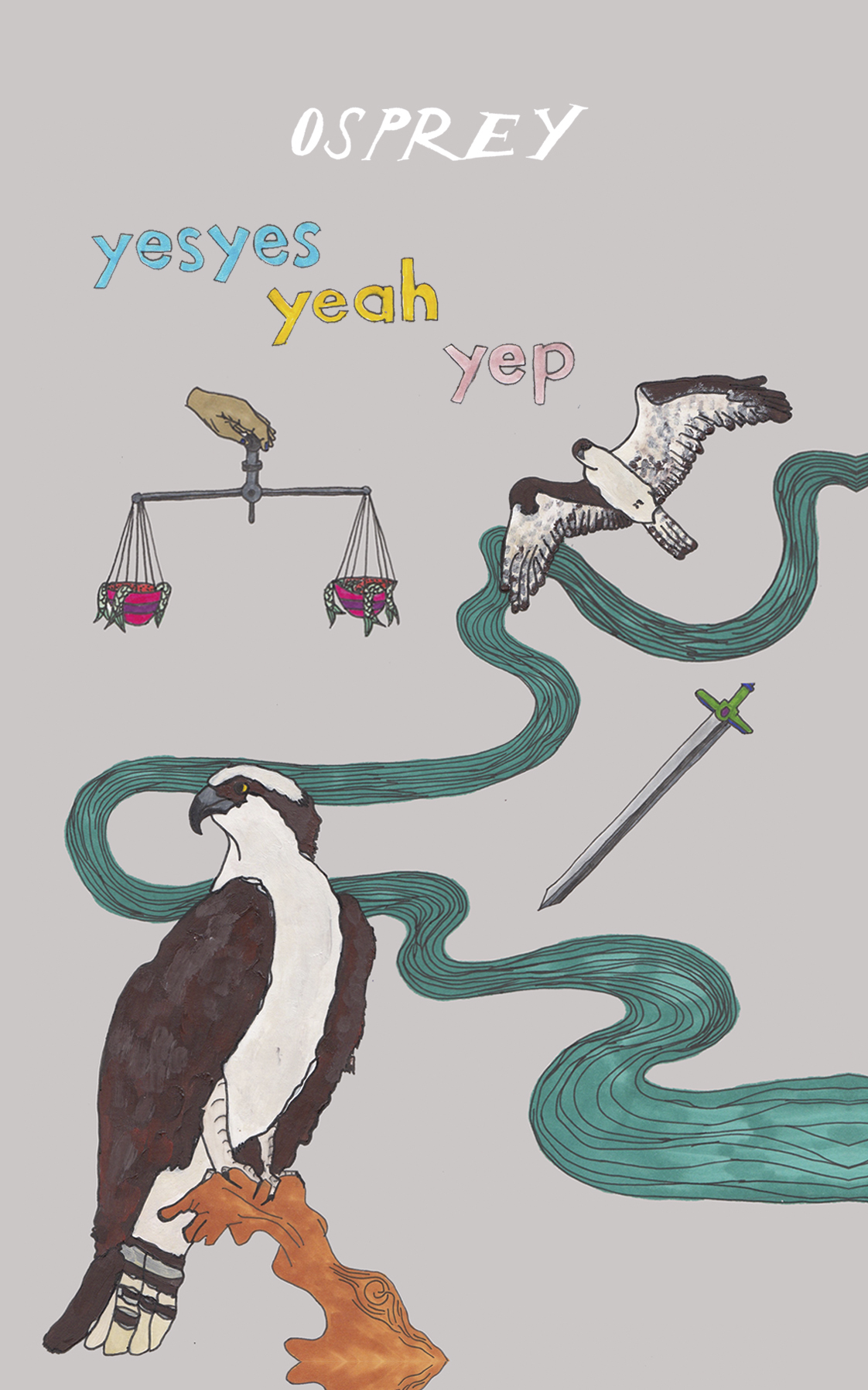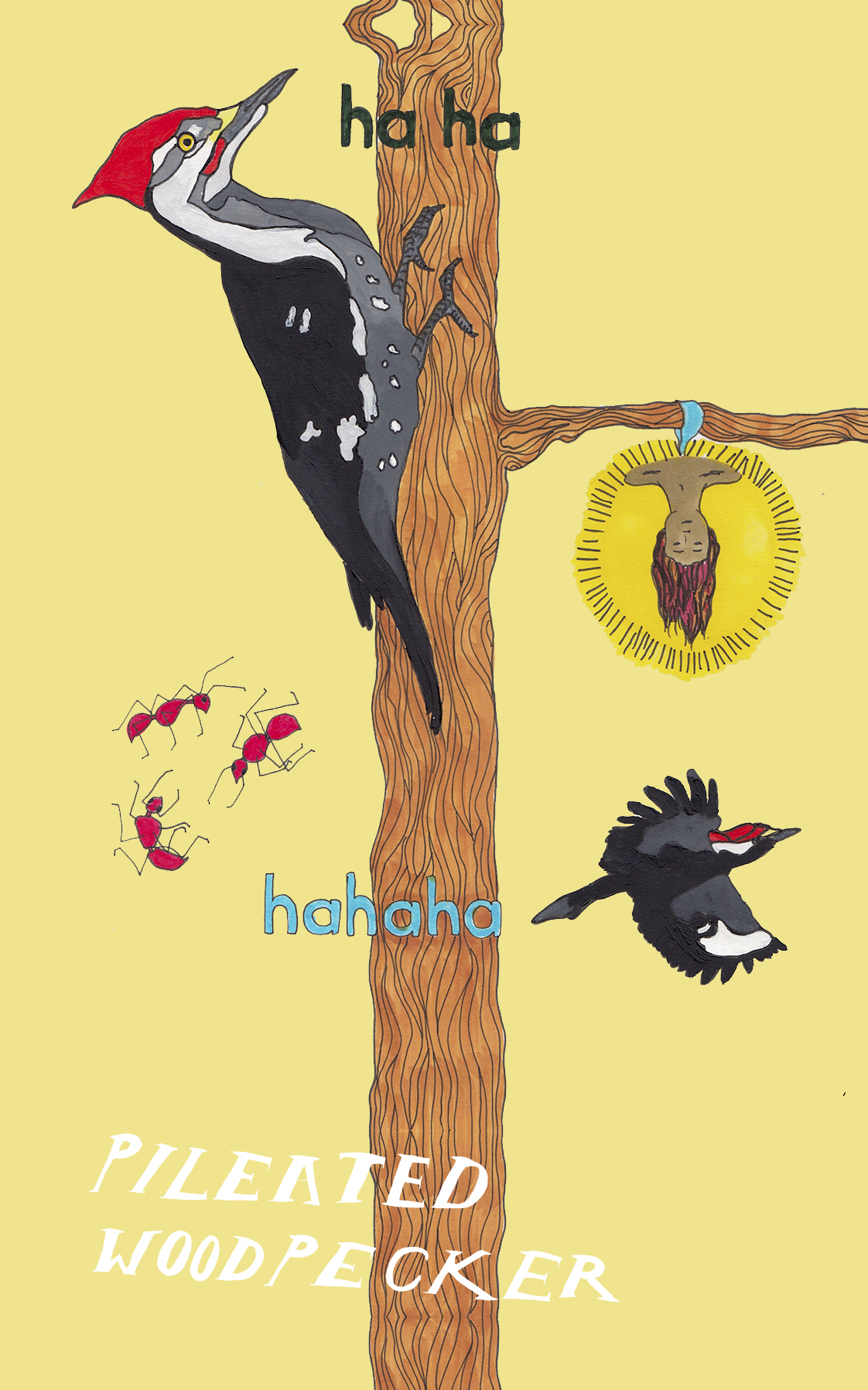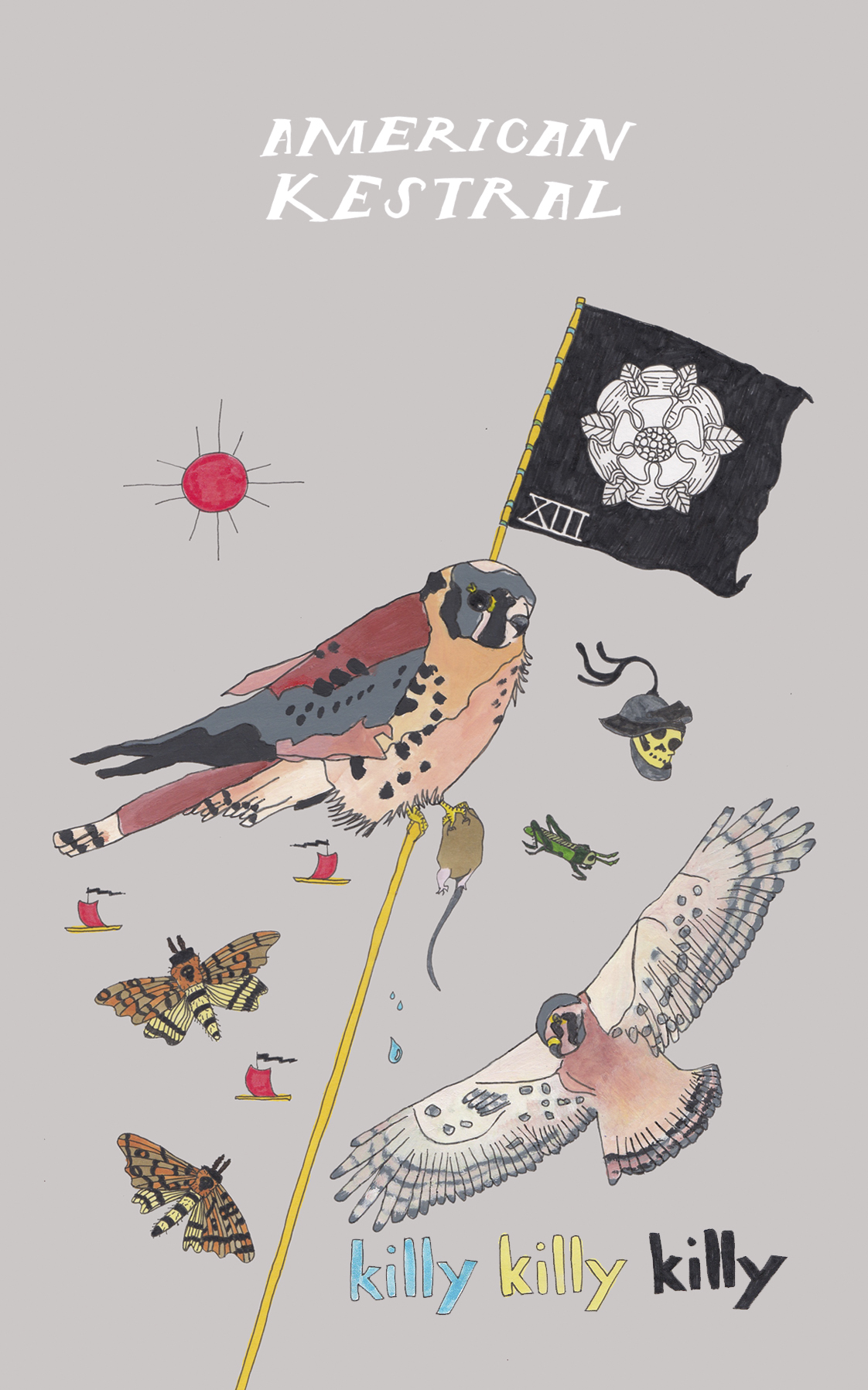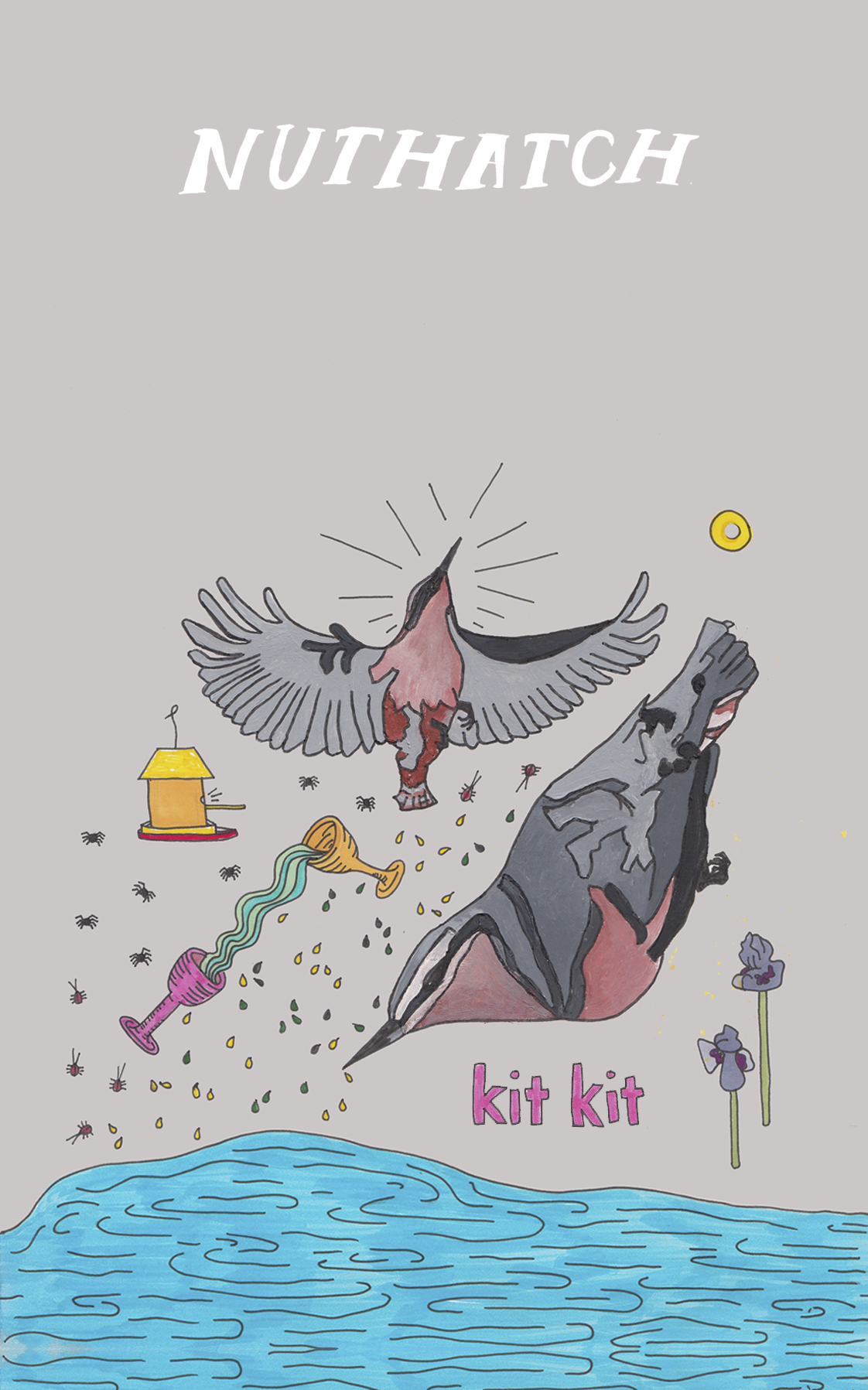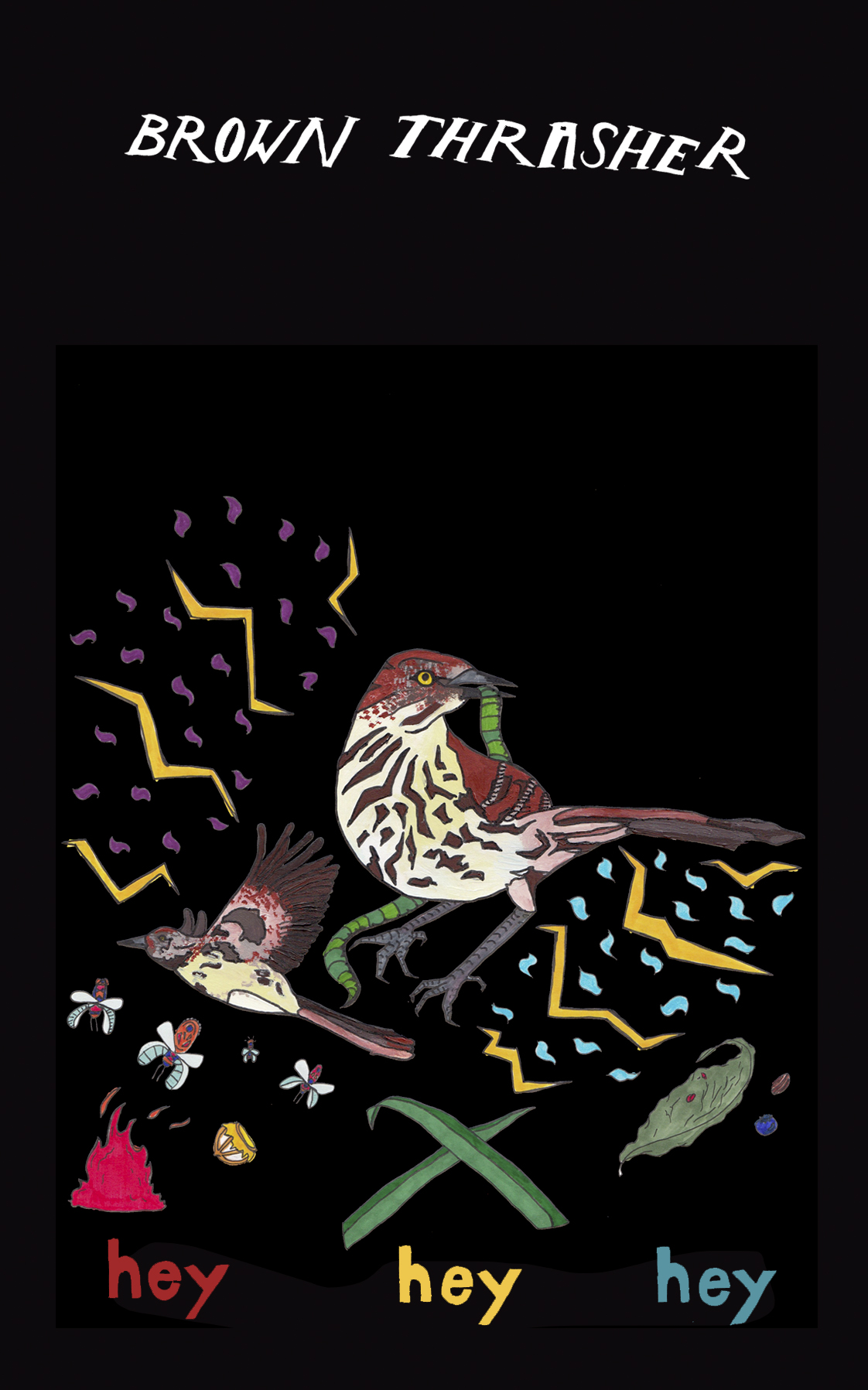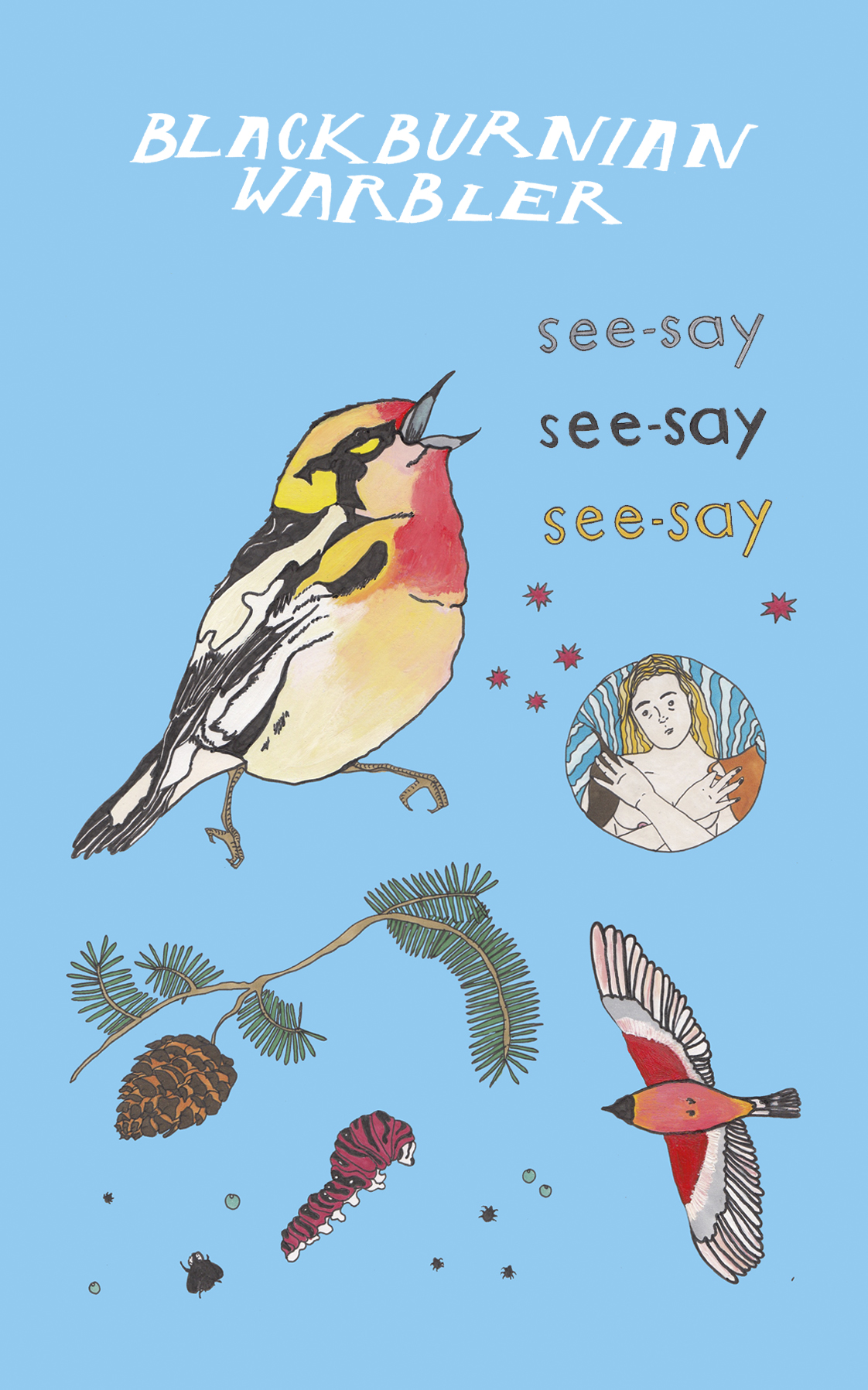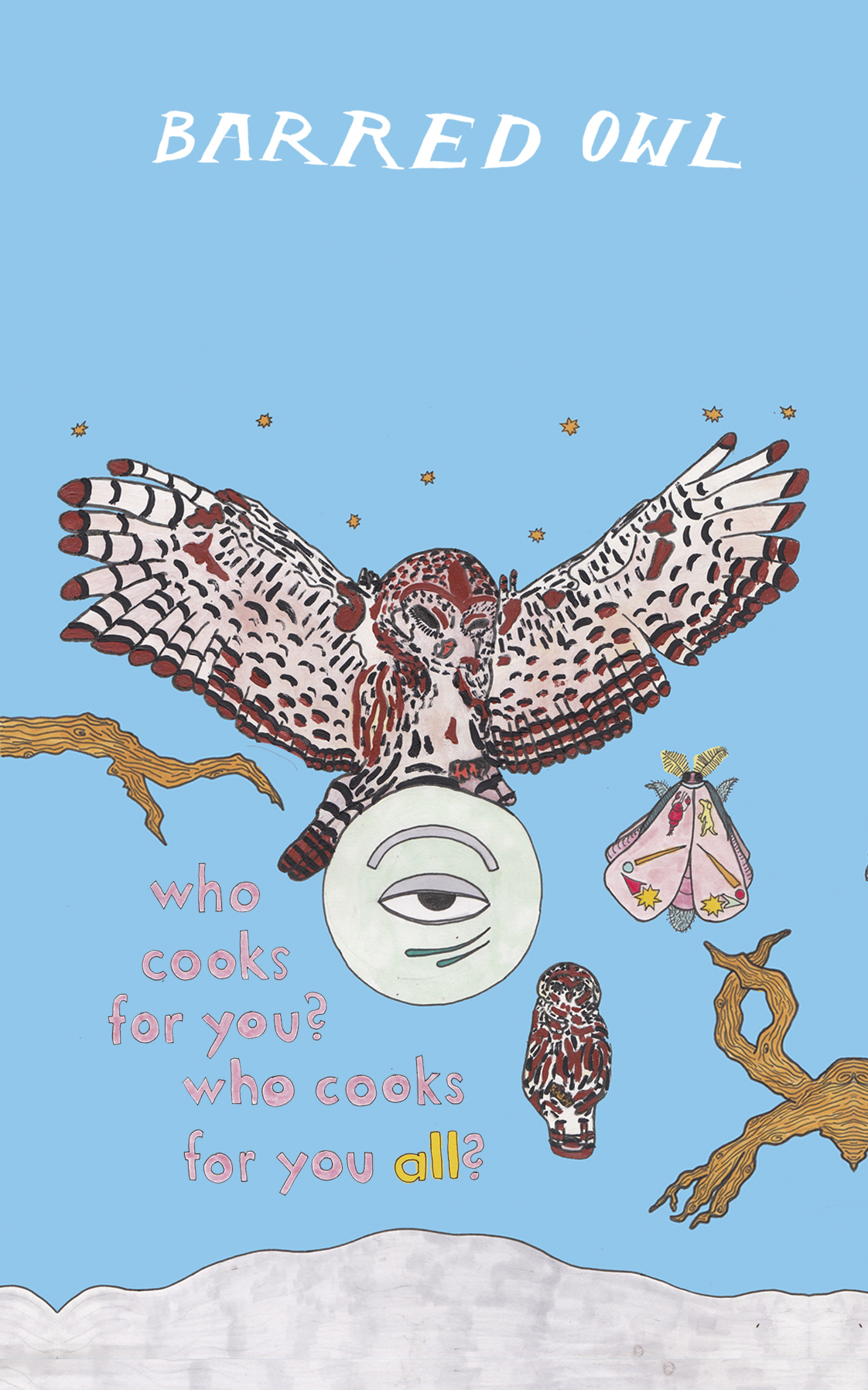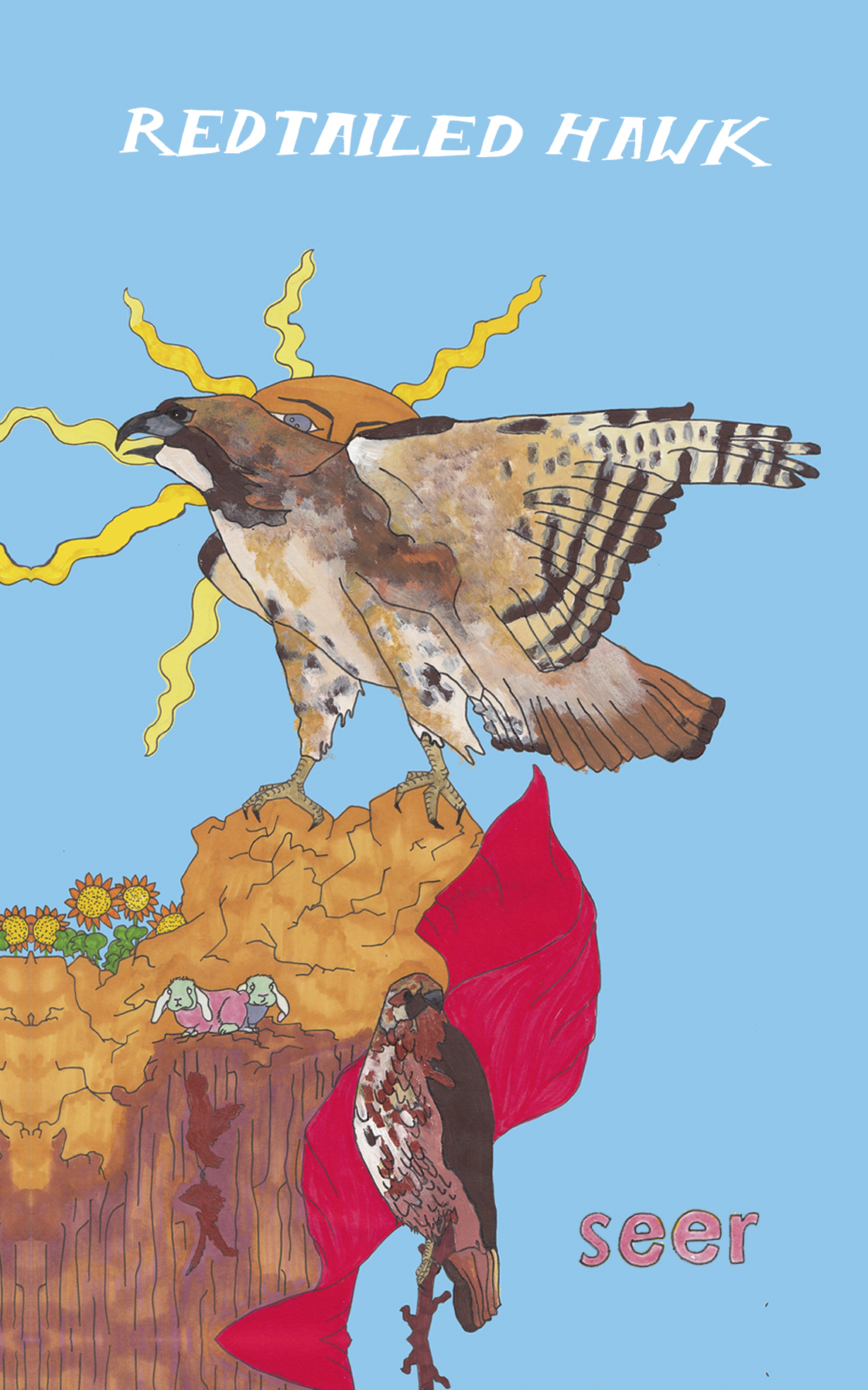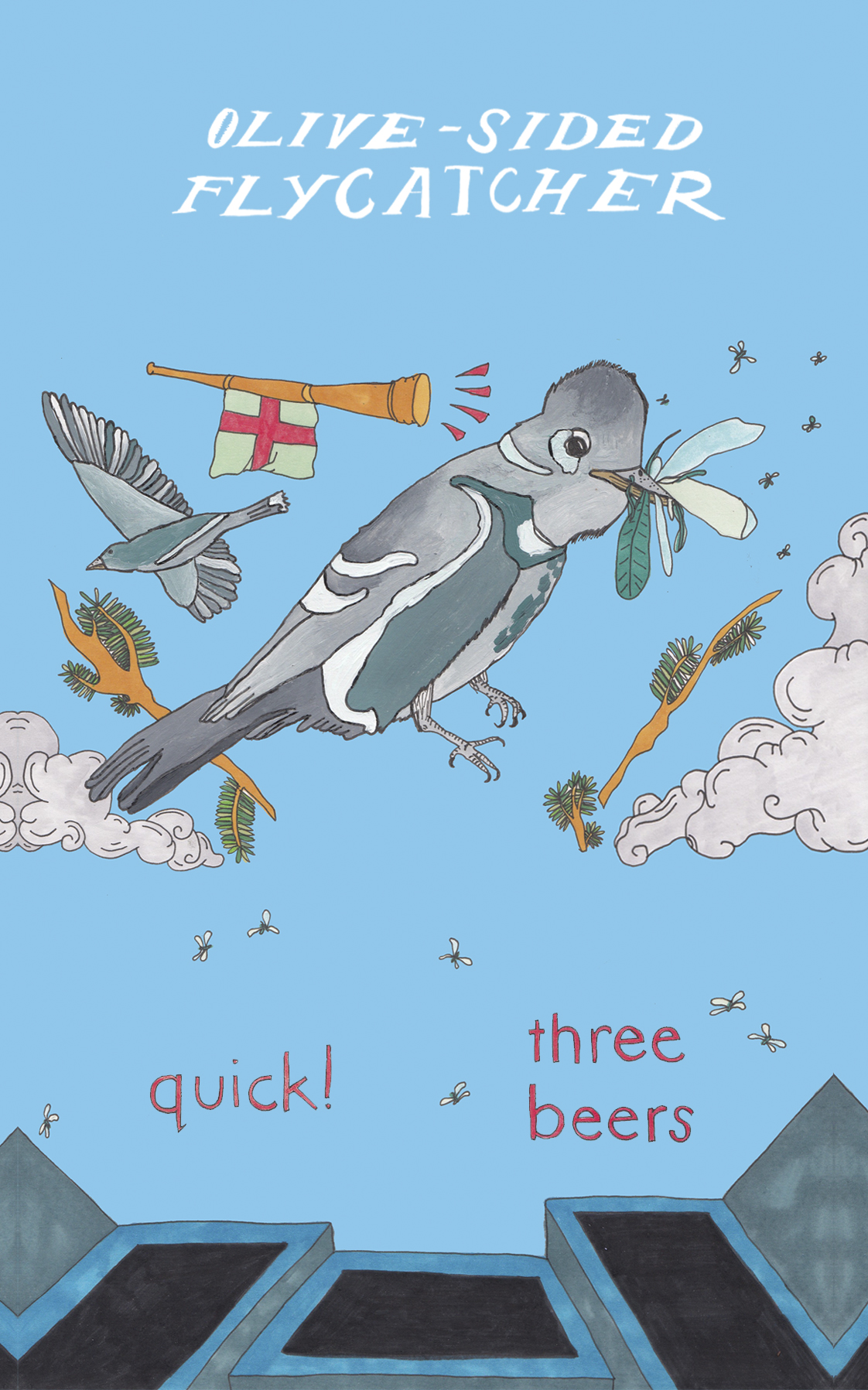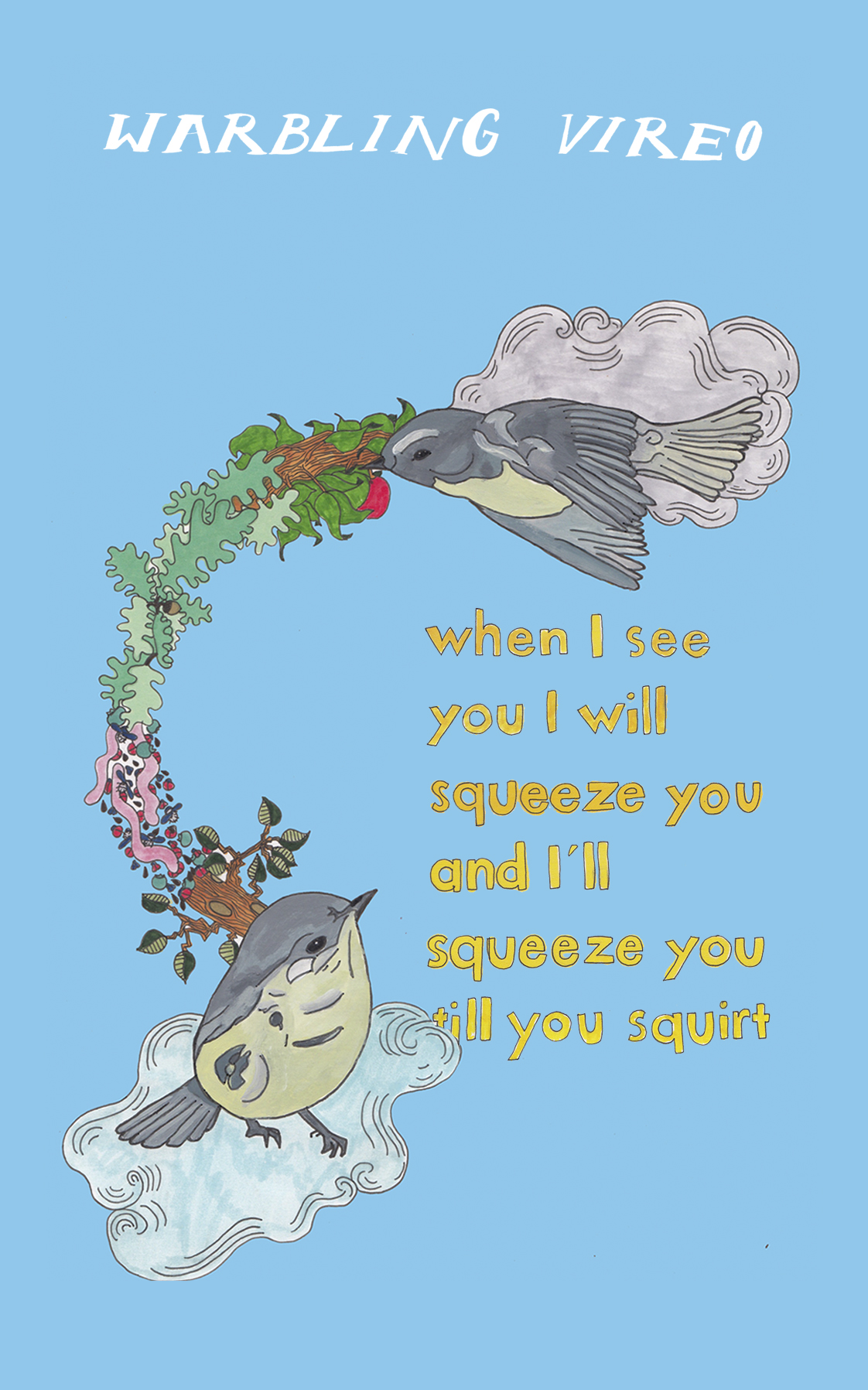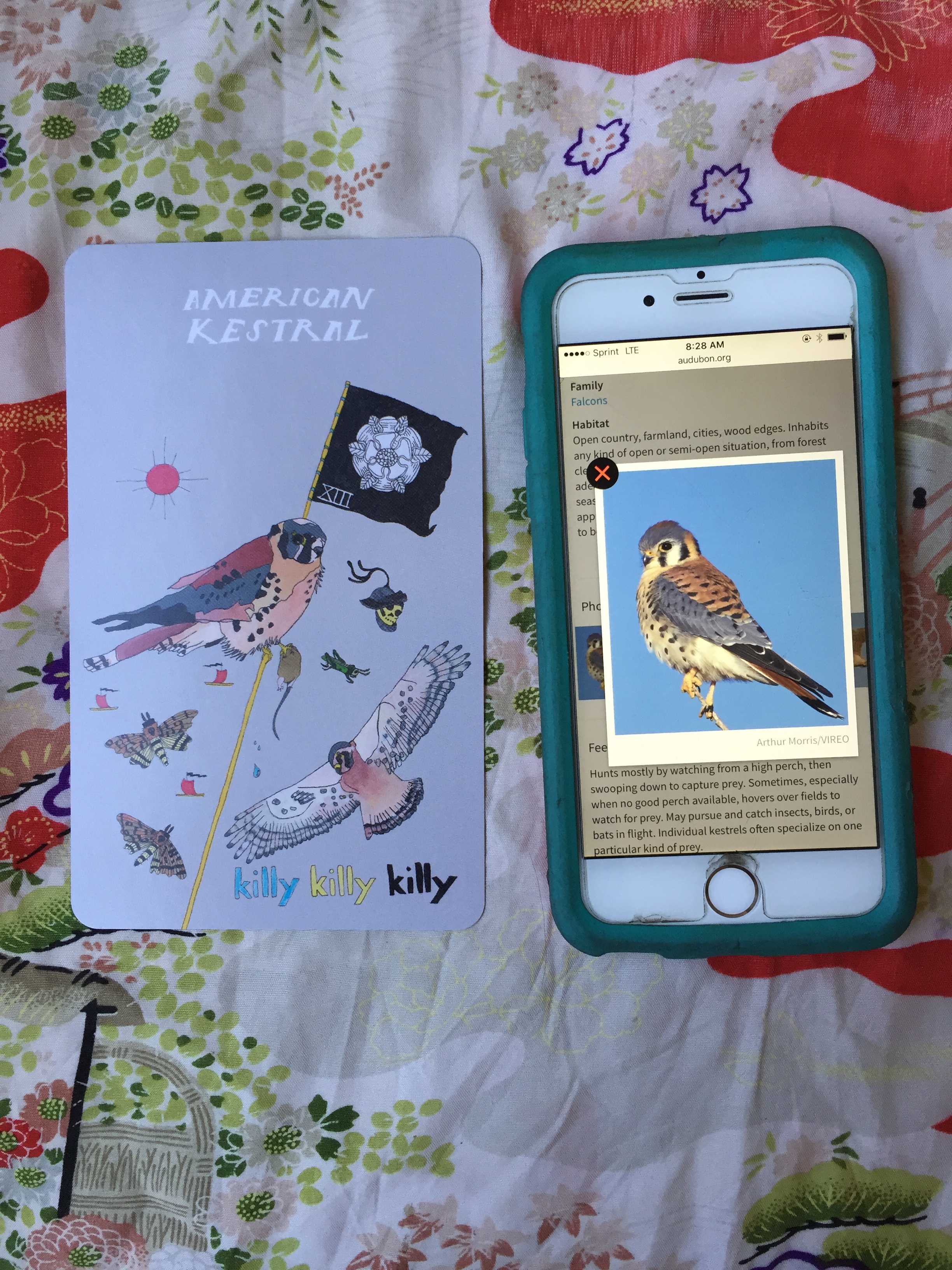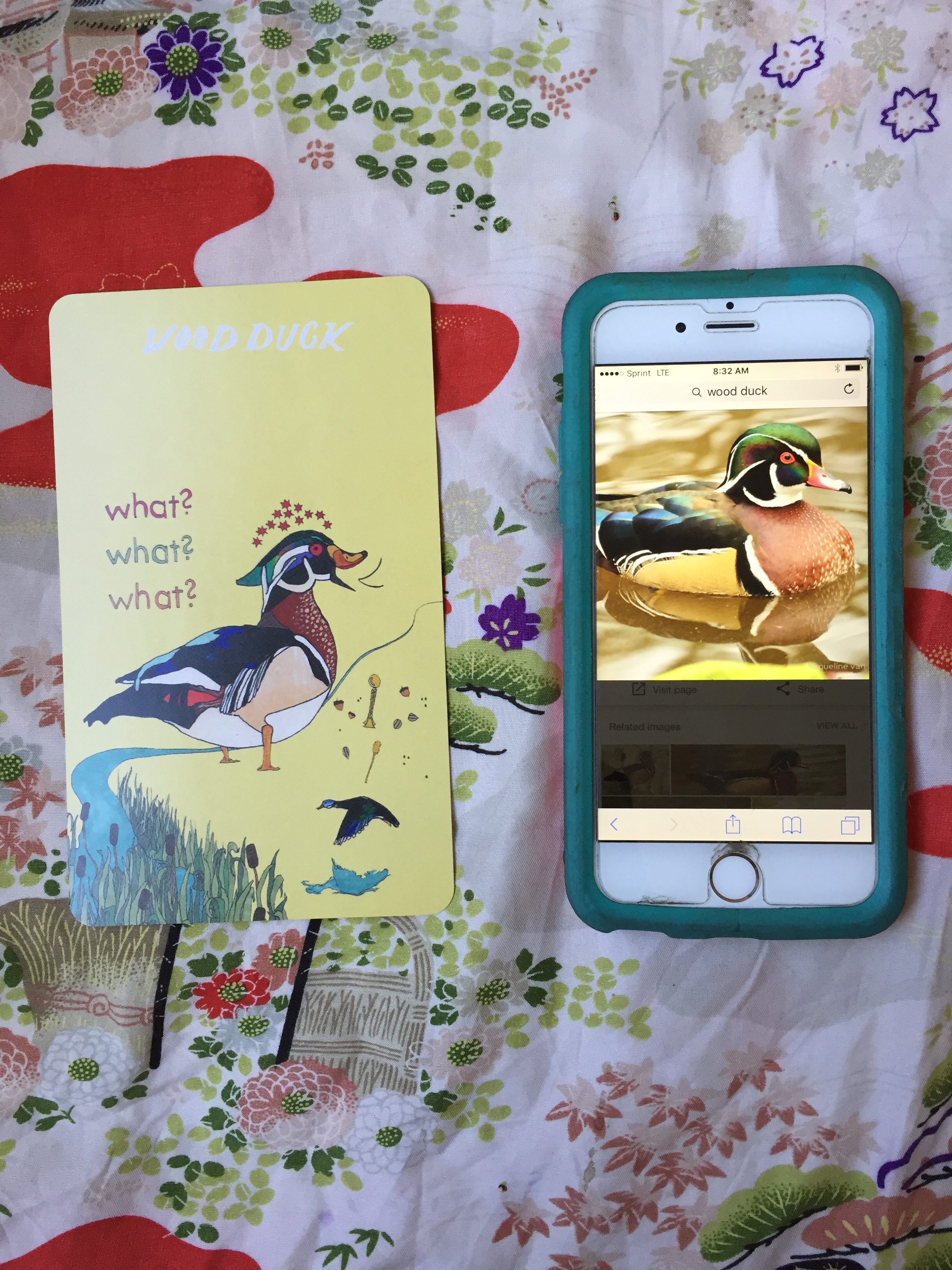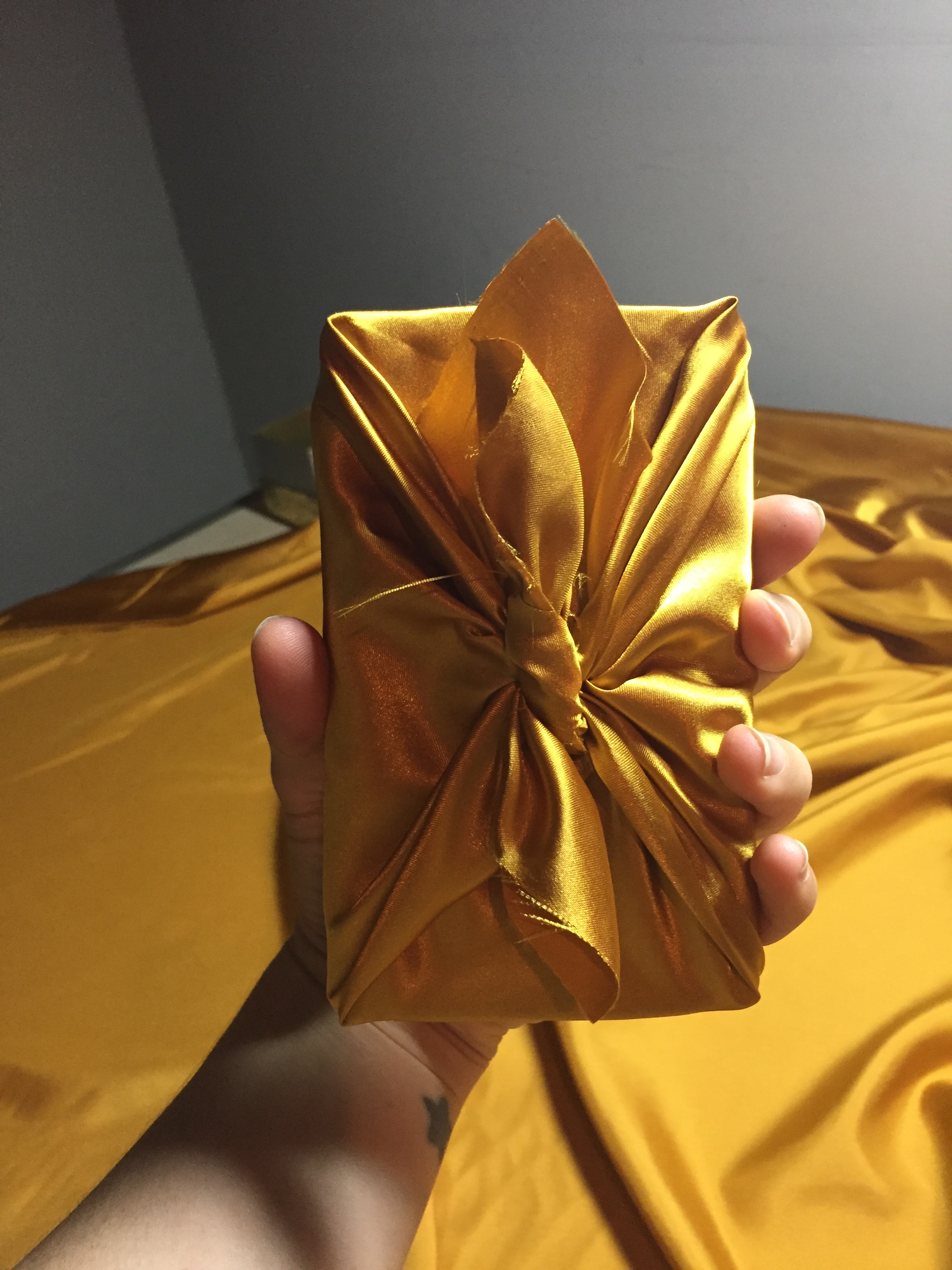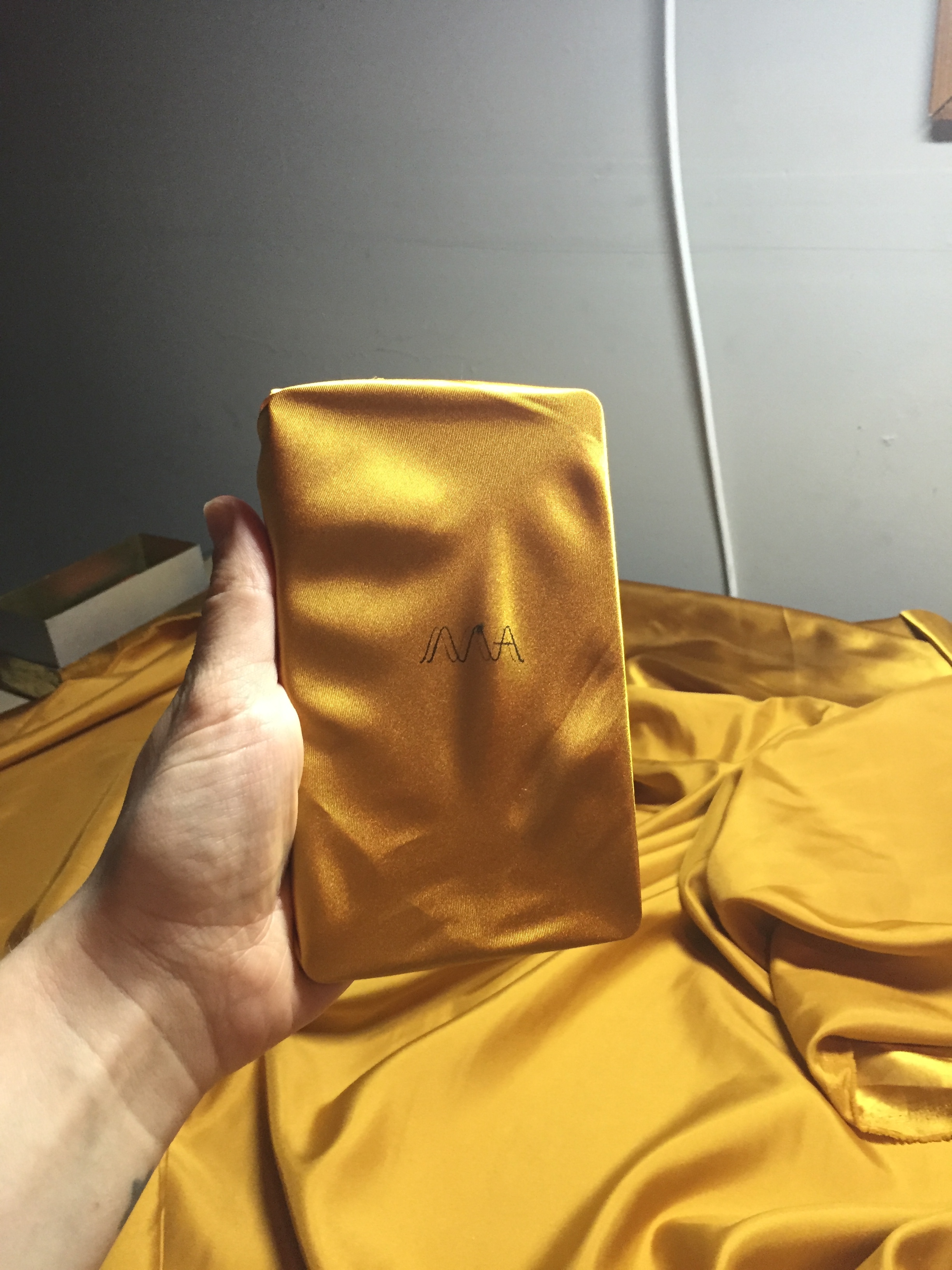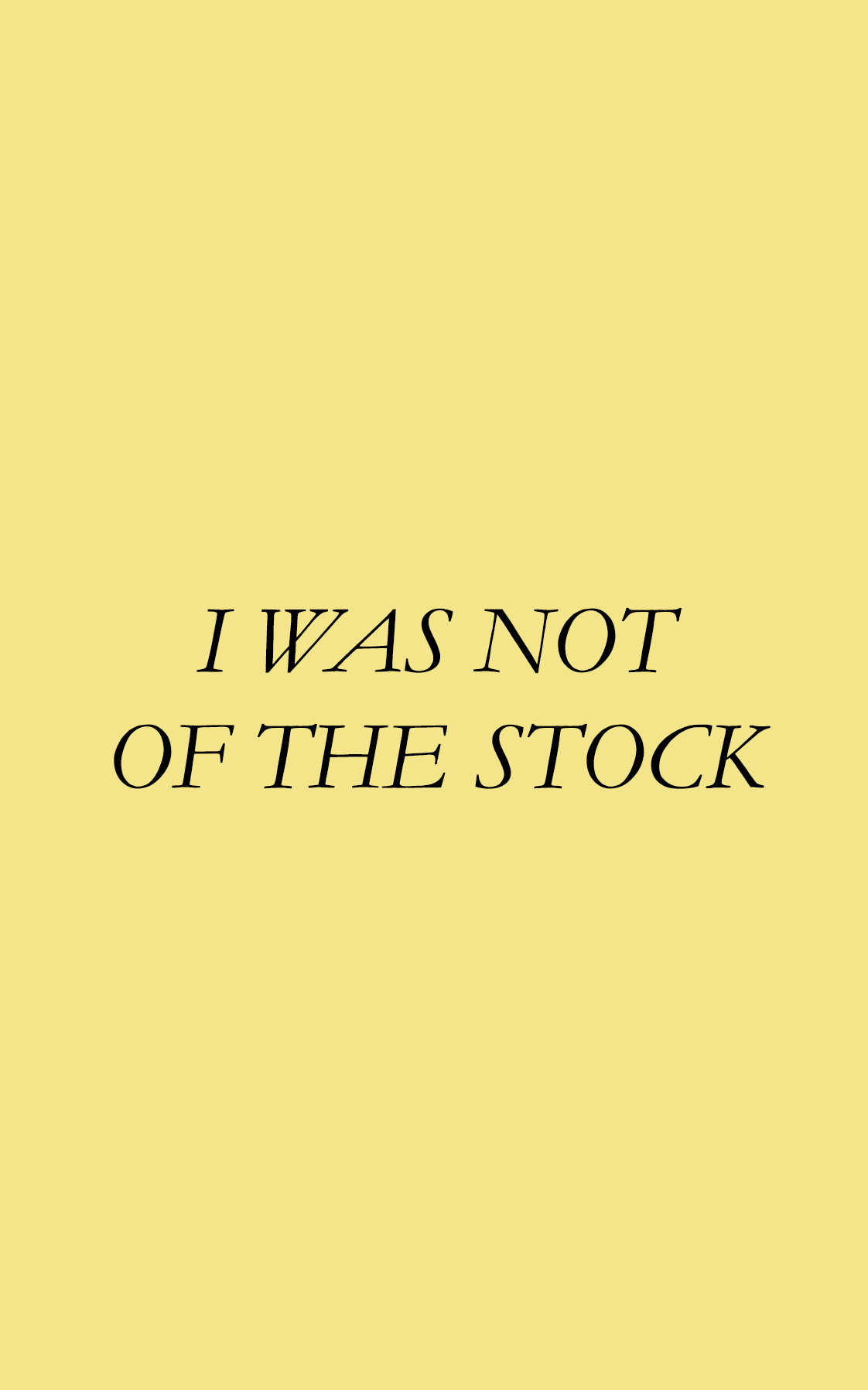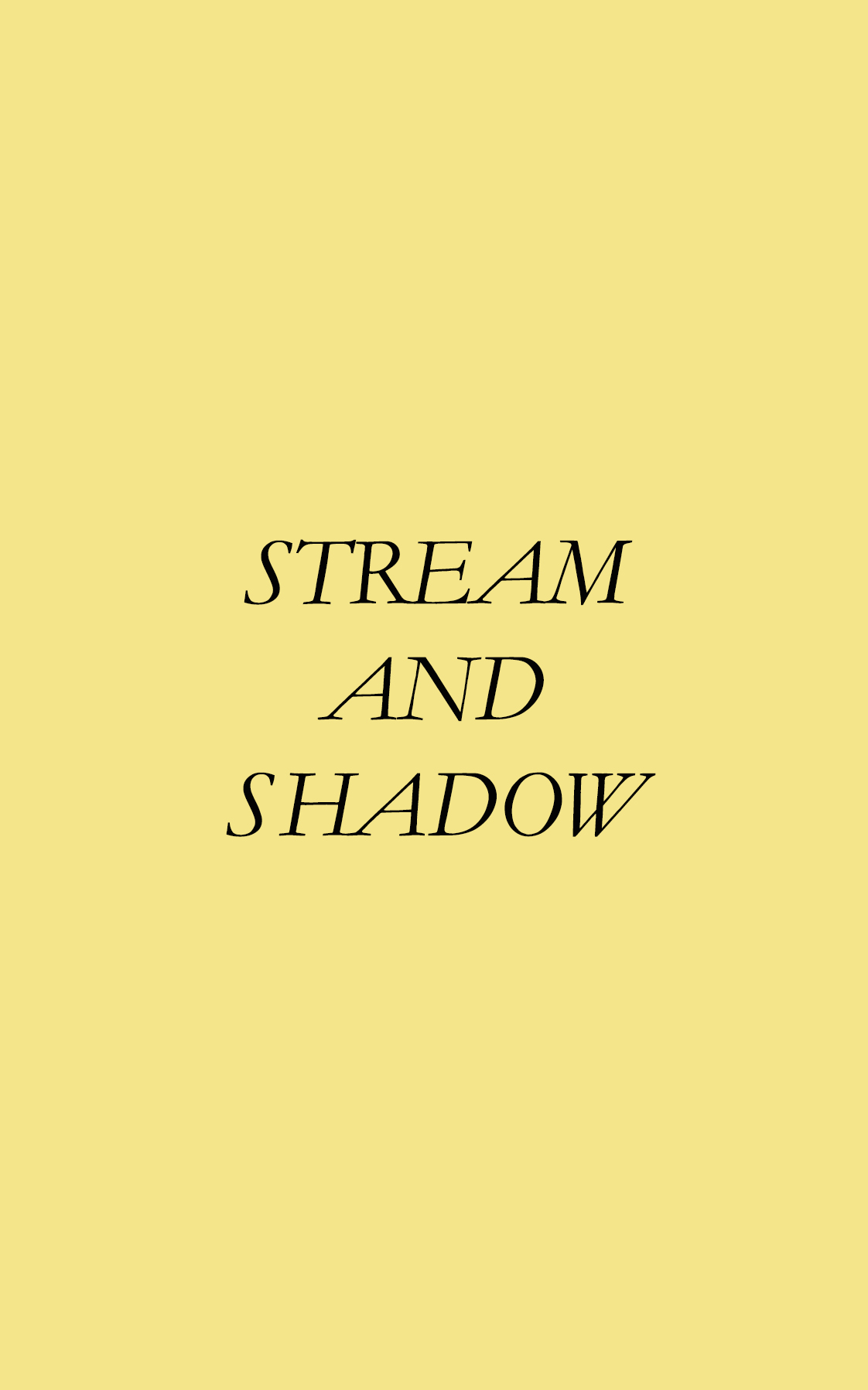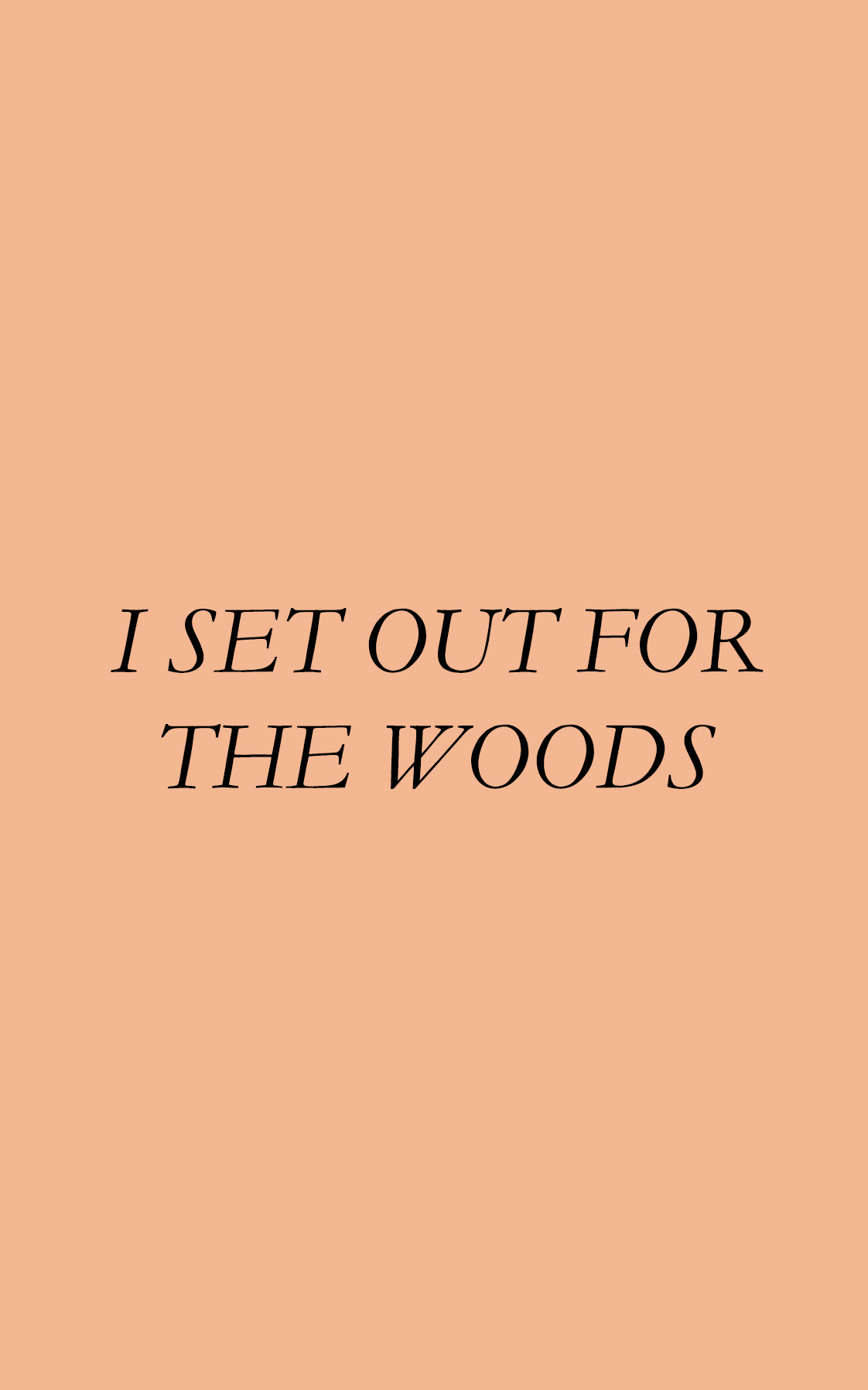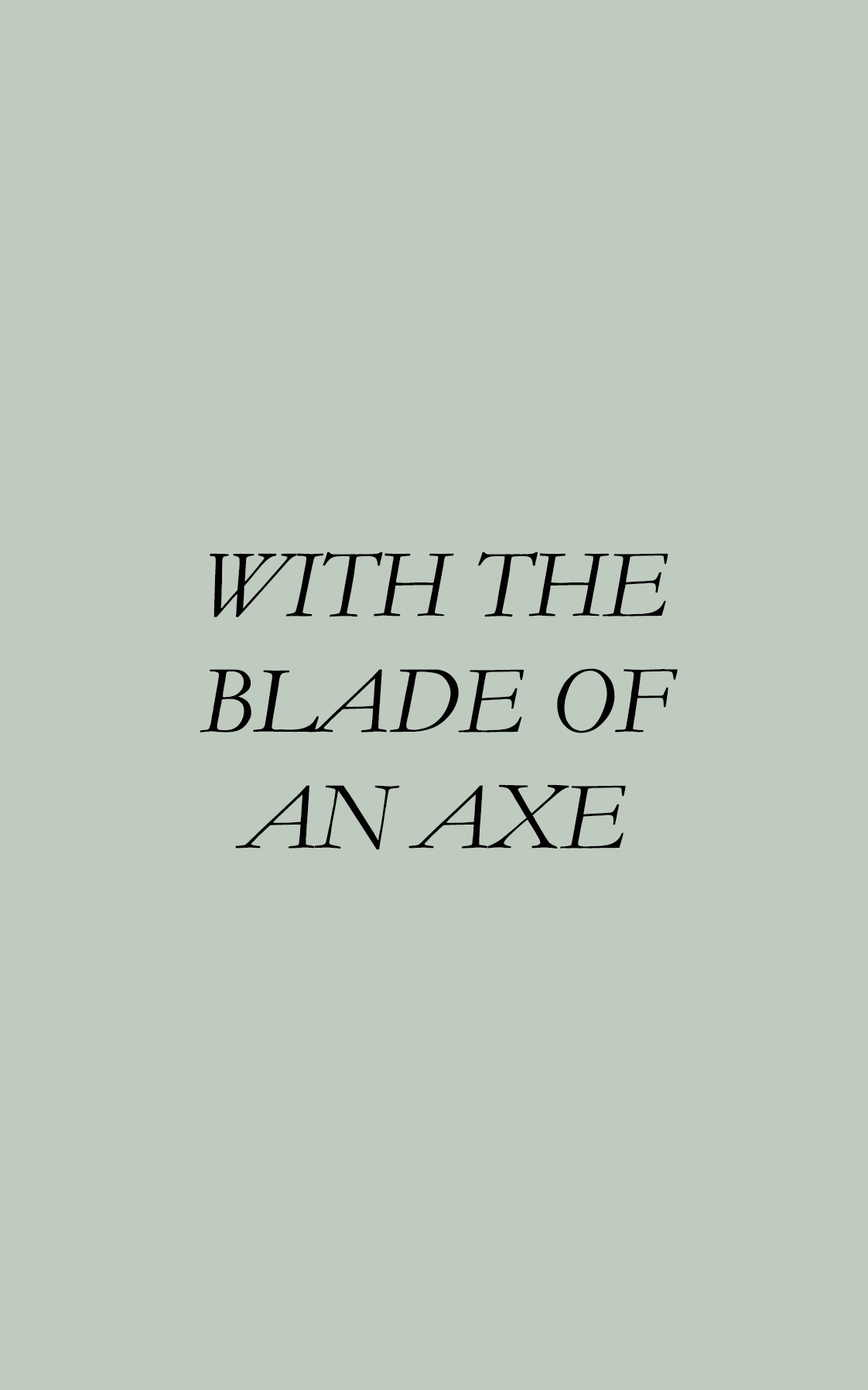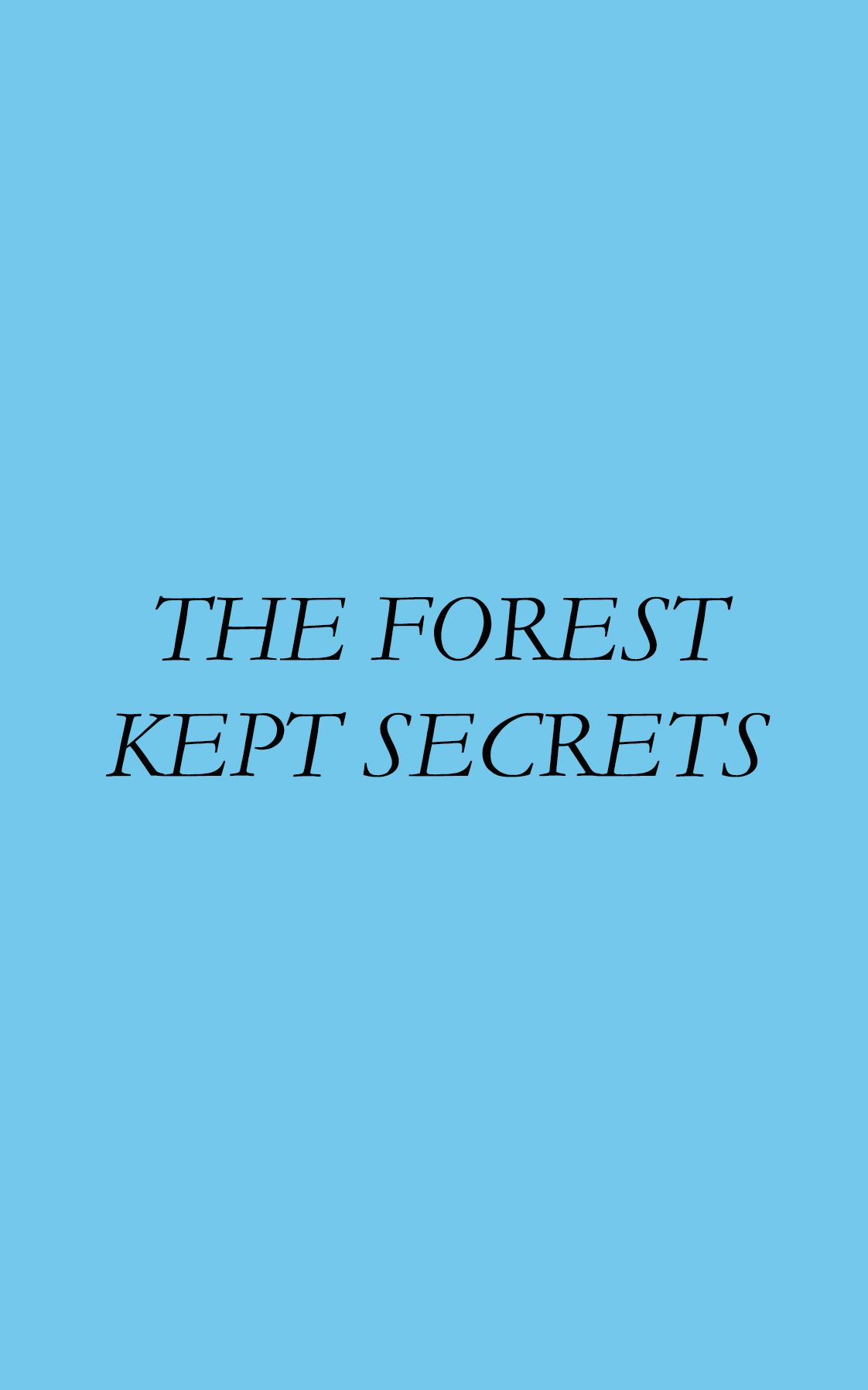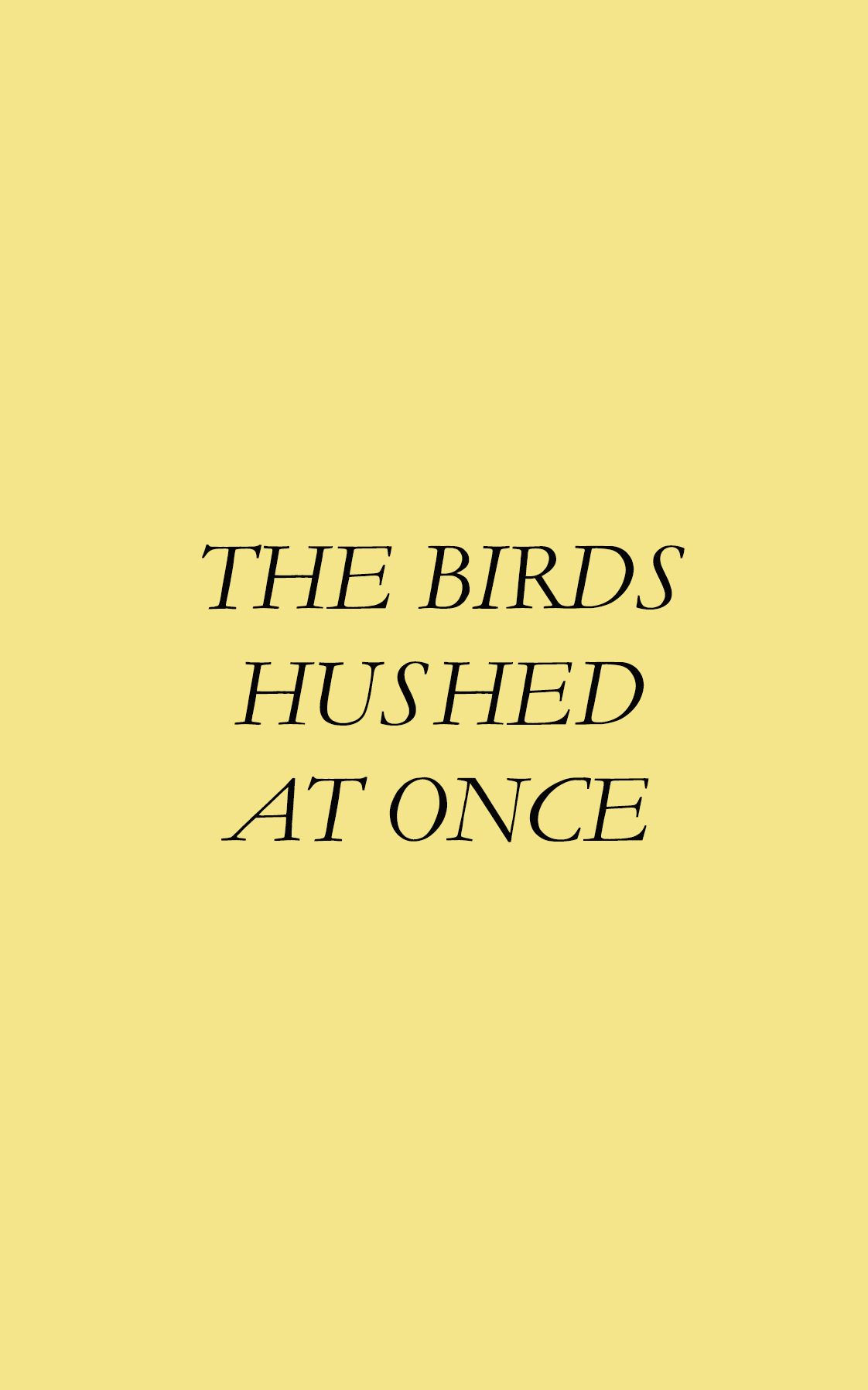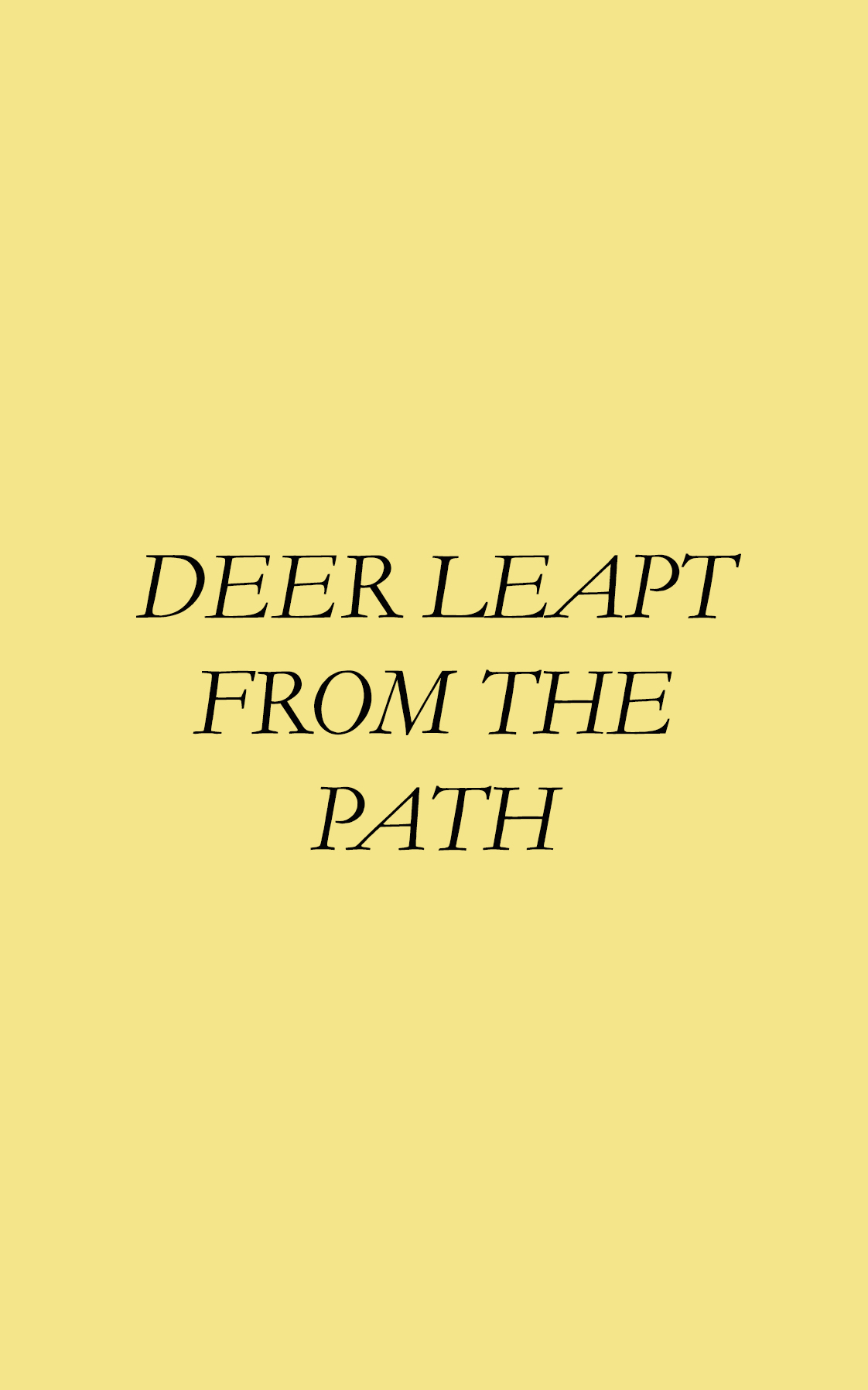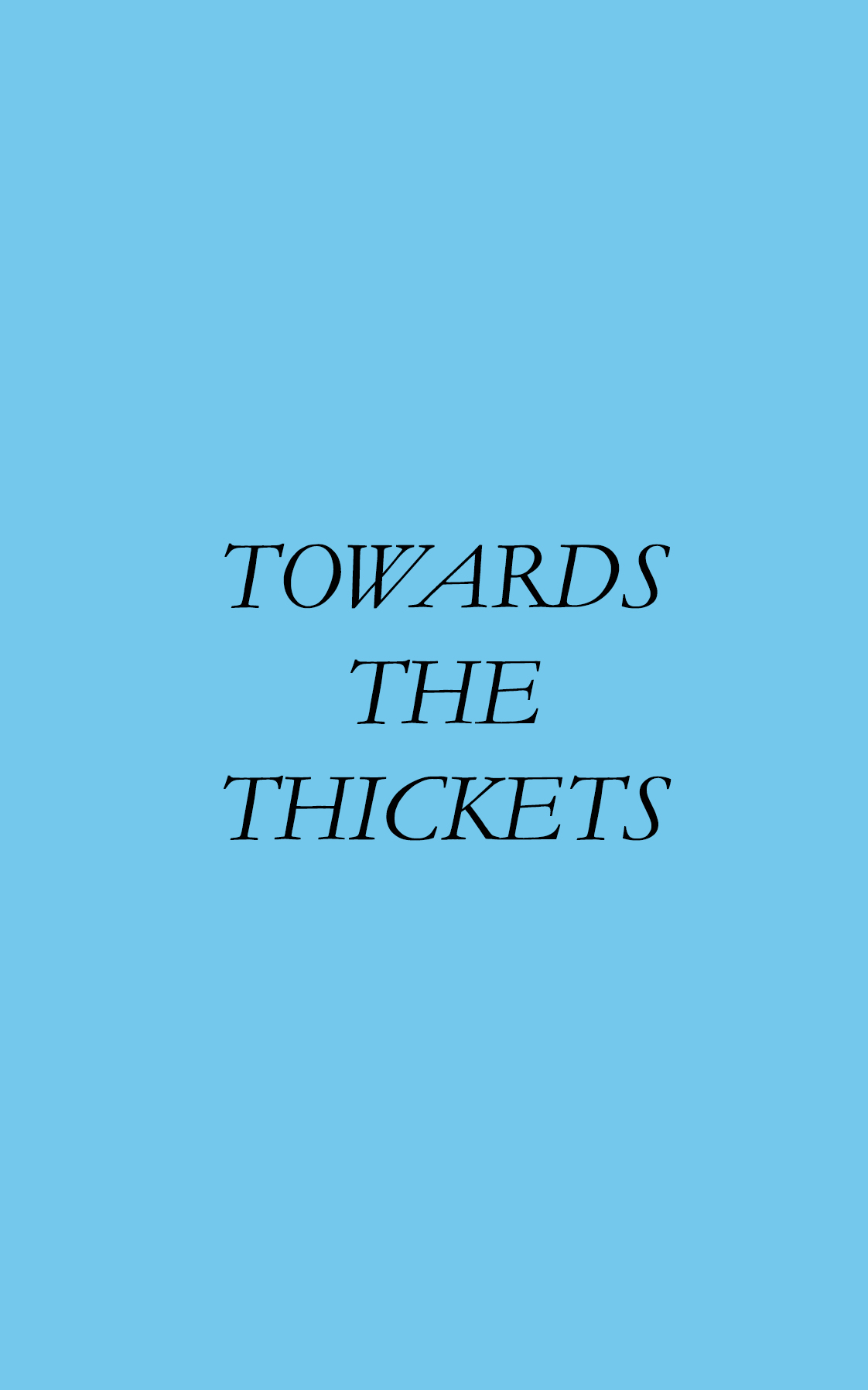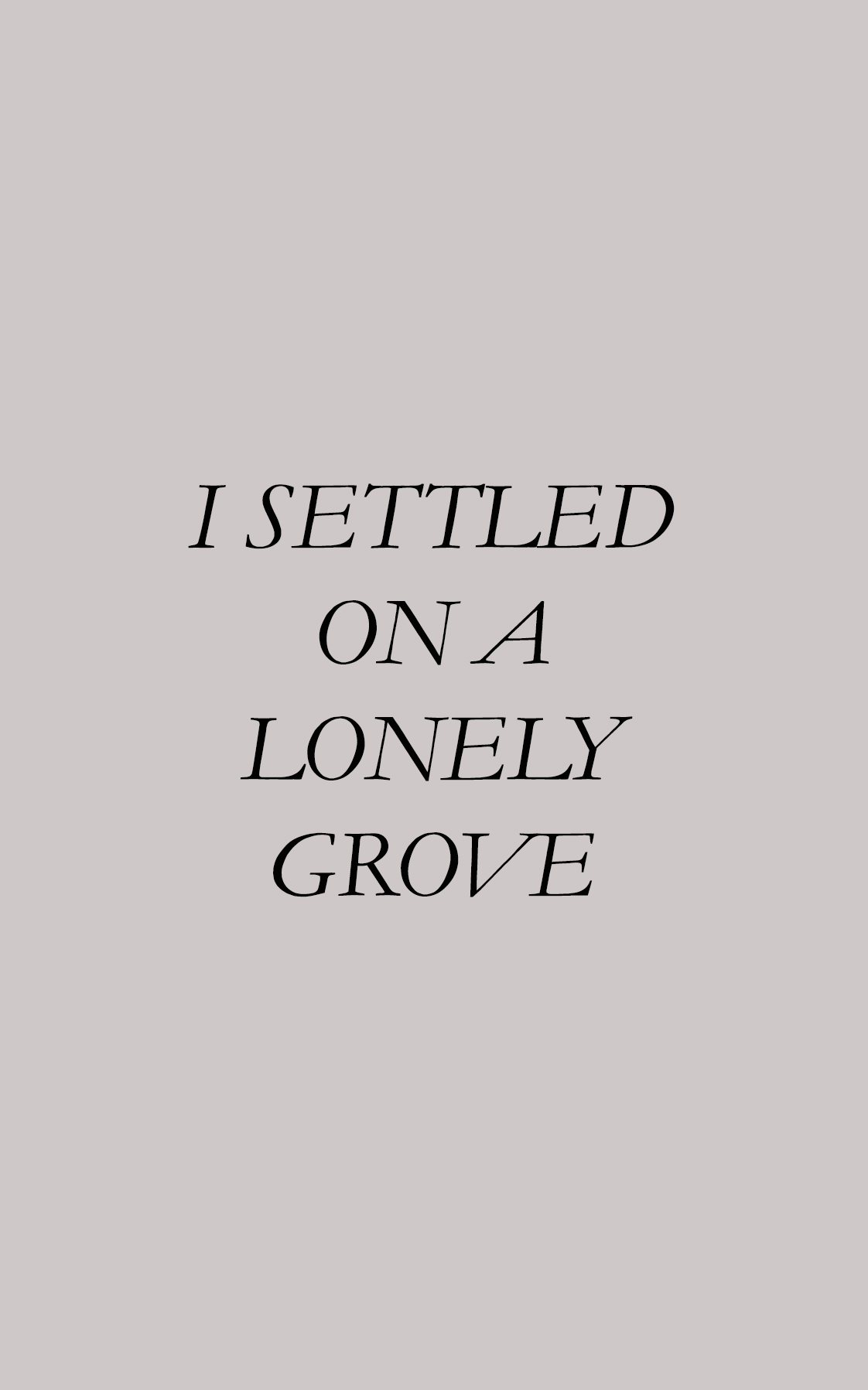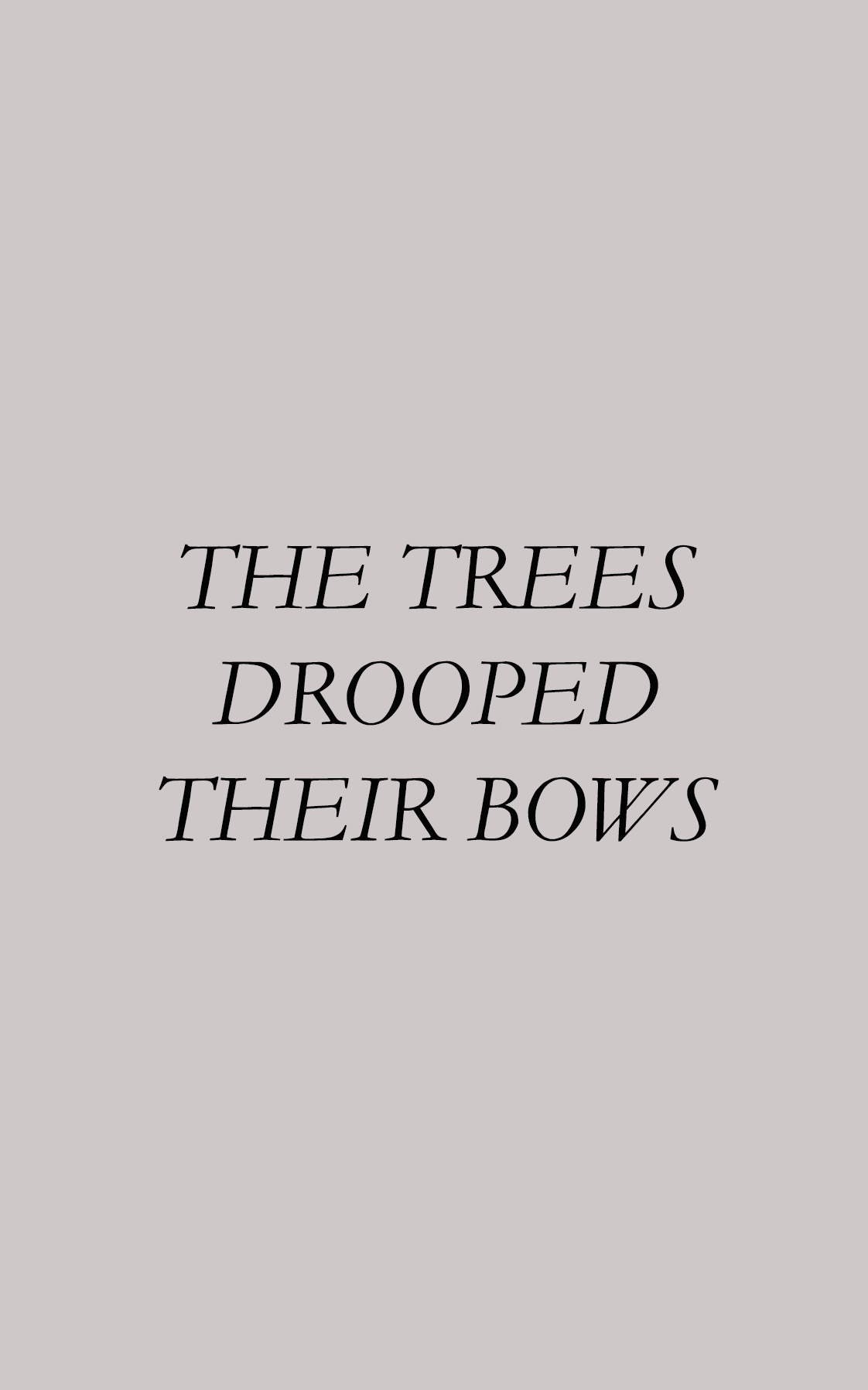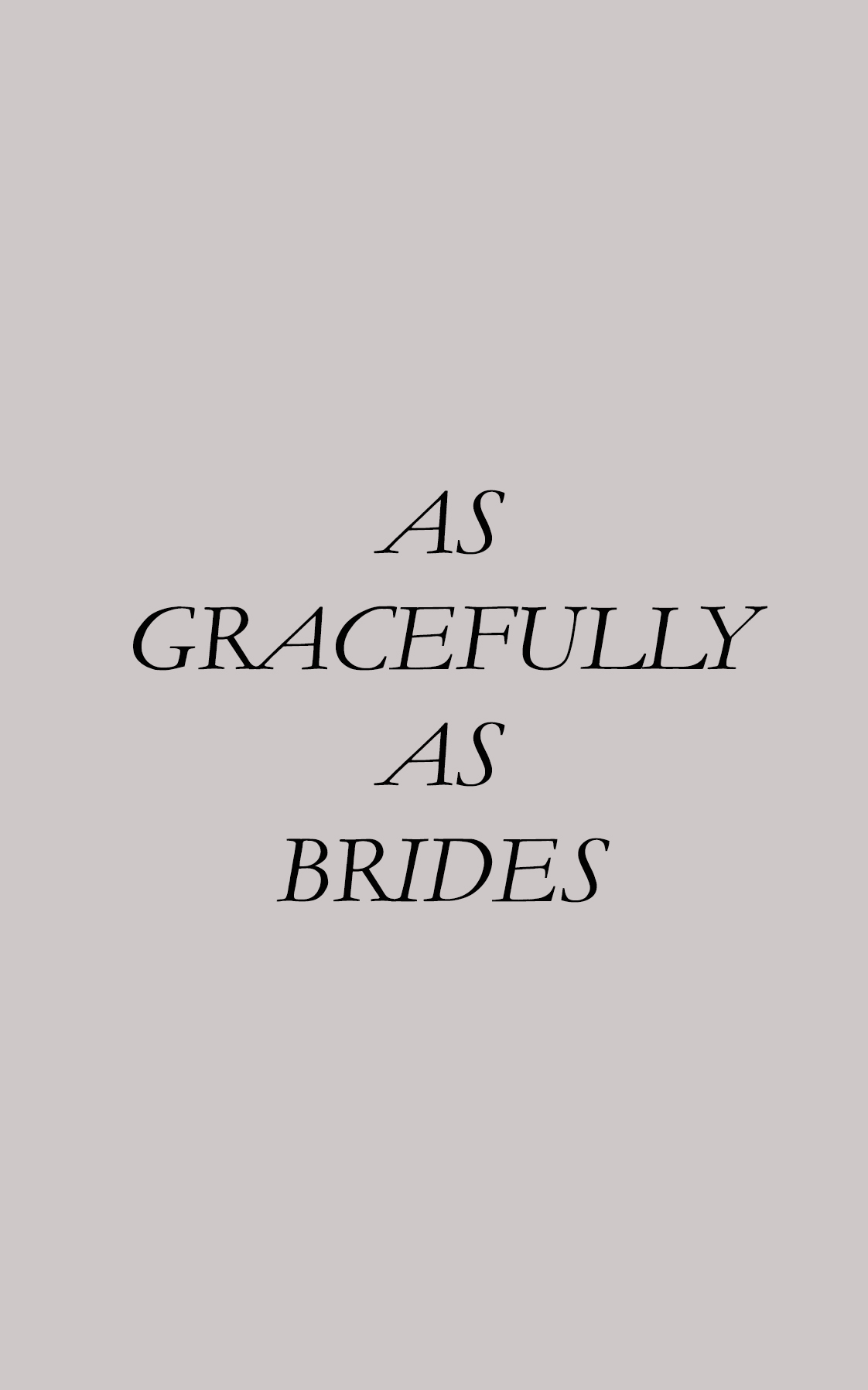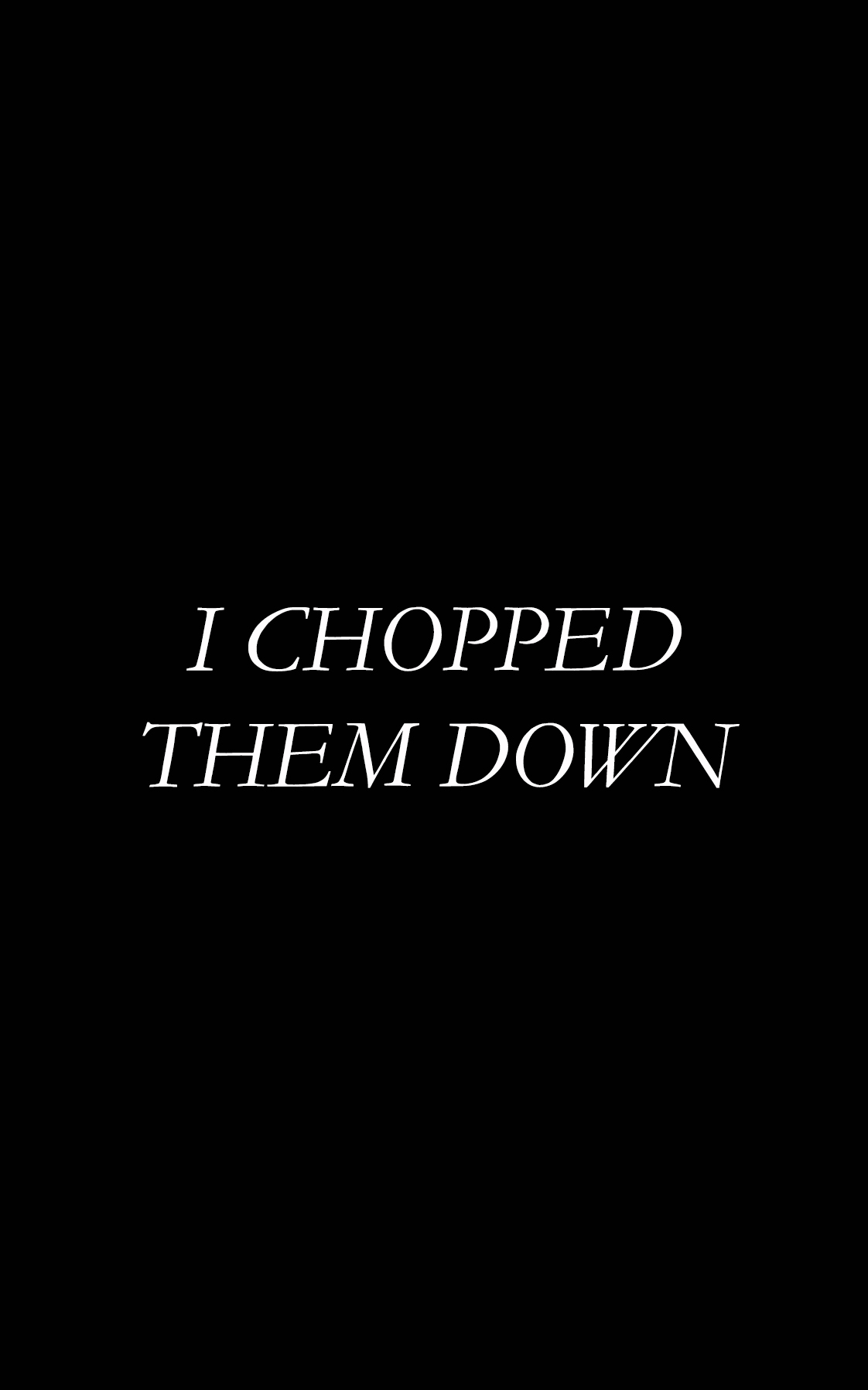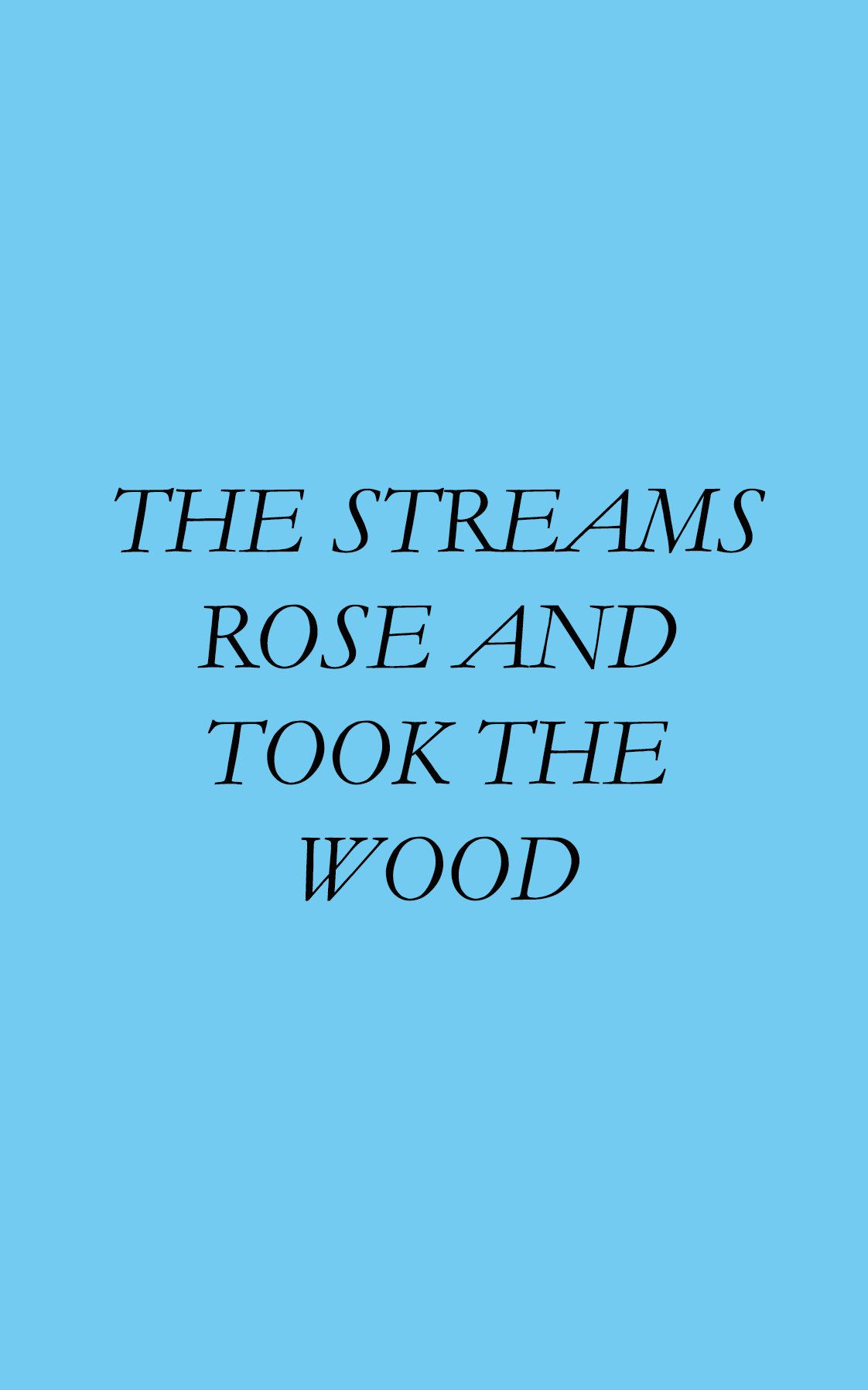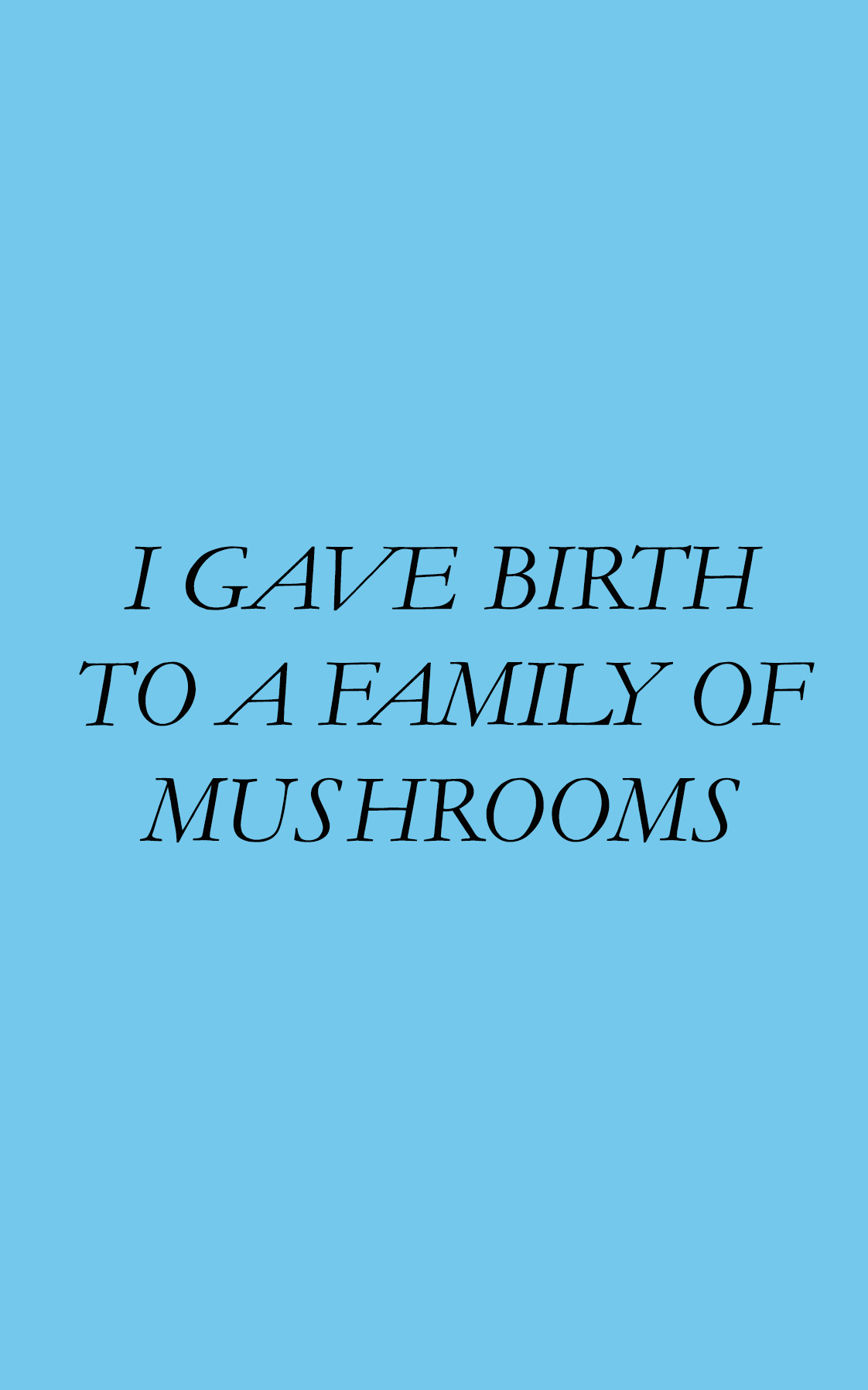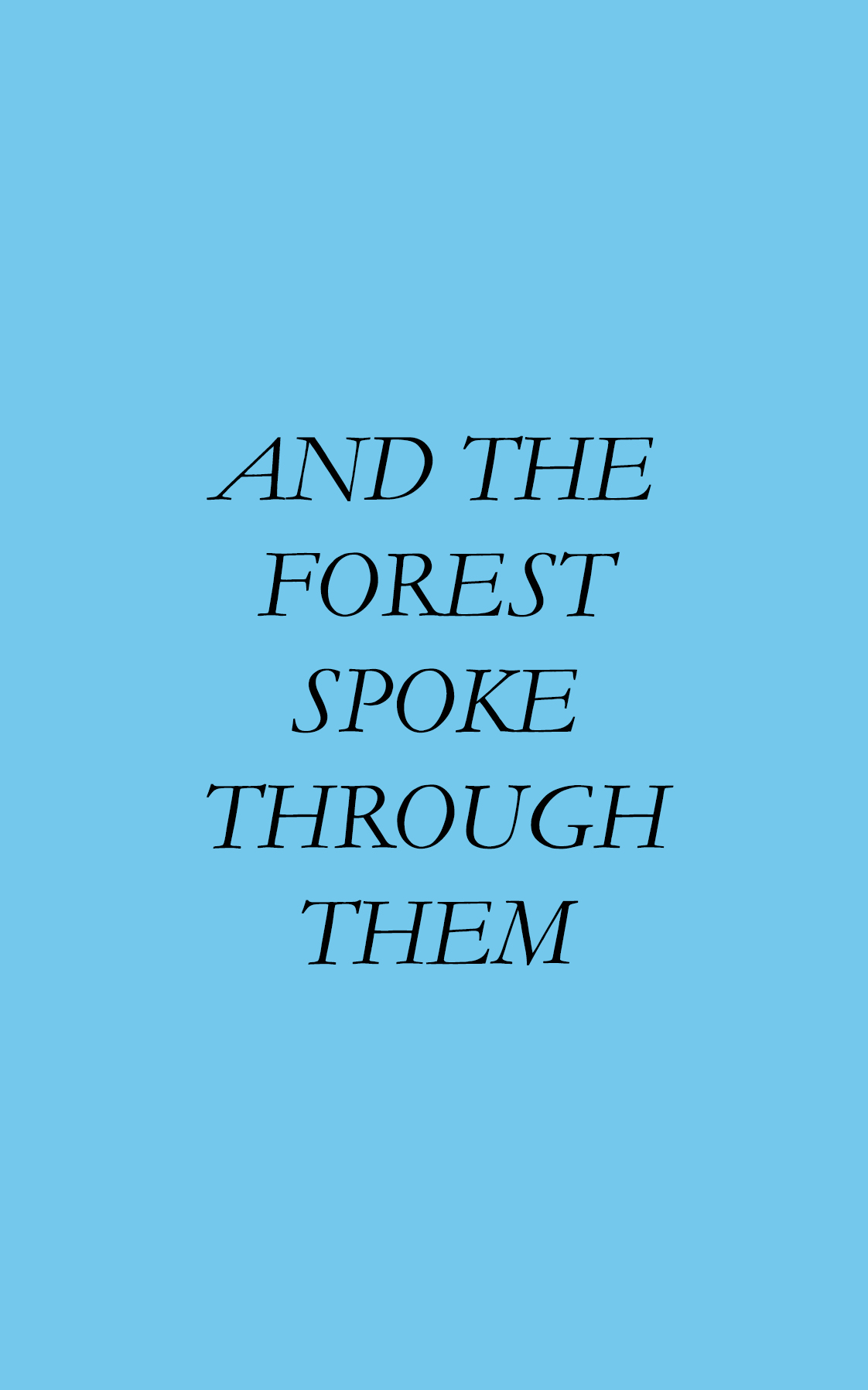CONVERSATIONS WITH WOMEN seeks to facilitate, foster, and produce artistic dialogue between female-identifying artists and writers.
CONVERSATIONS WITH WOMEN is an ongoing project. Mount Analogue regularly collaborates with a female-identifying artist &/or writer to conceive of, produce, and distribute a project. This project can take on any form. Each project's process is documented in some way below.
PROJECT II
THAT DOG
A community-shrine-installation
2/25/17 at Non Plus Ultra
with Jessica Ramsey of Moon Honey
Event info here
THAT DOG explores a creative, therapeutic (as opposed to destructive) manner of facing/interacting with the body of depression. Also, it eats dreams.
•
To interact with That Dog, participants filled out a Death/Dream Calculator test to find out how many years of life they had left to live. That Dog then asked them to flip their test over and describe what they wanted to do with those remaining years.
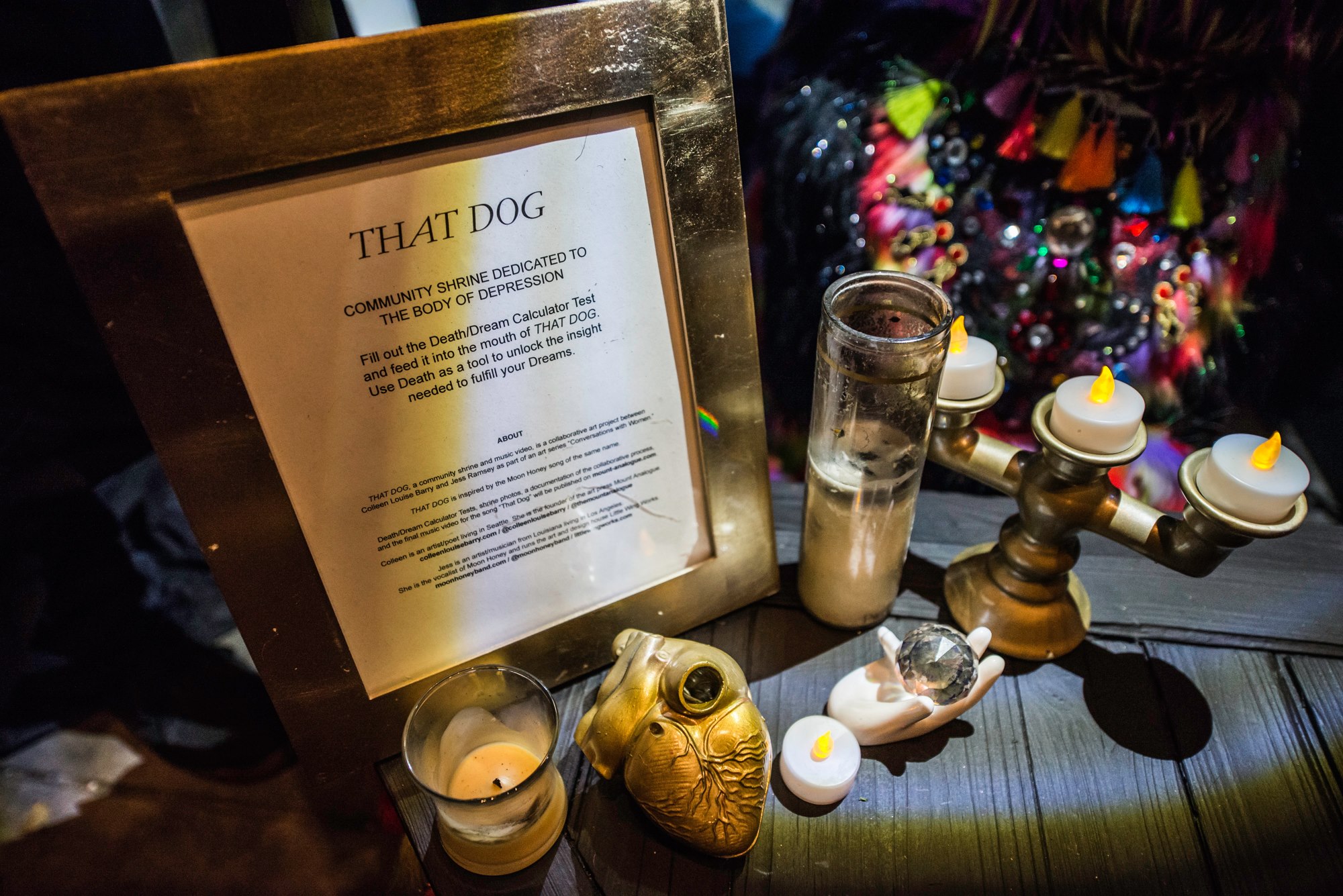

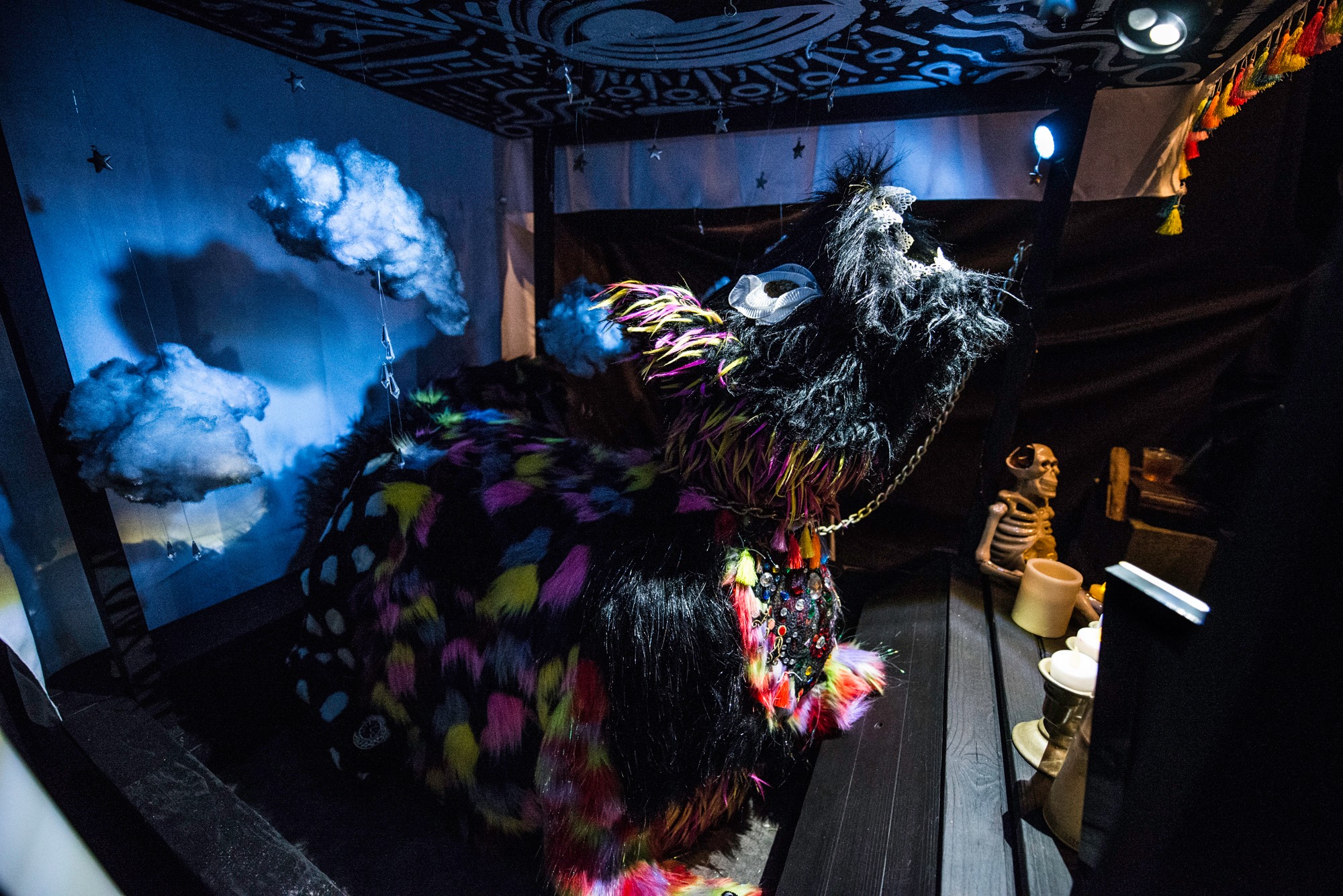

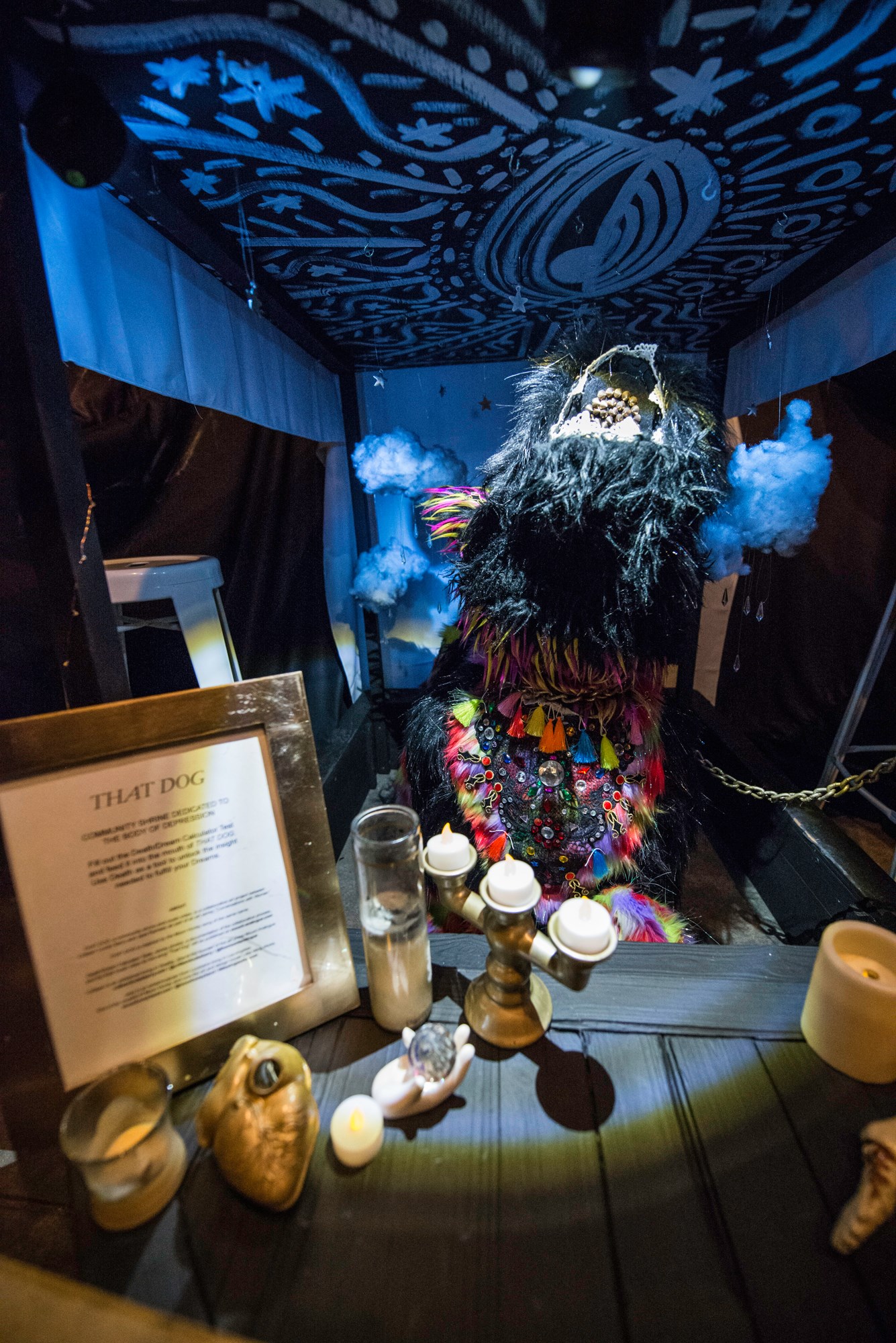
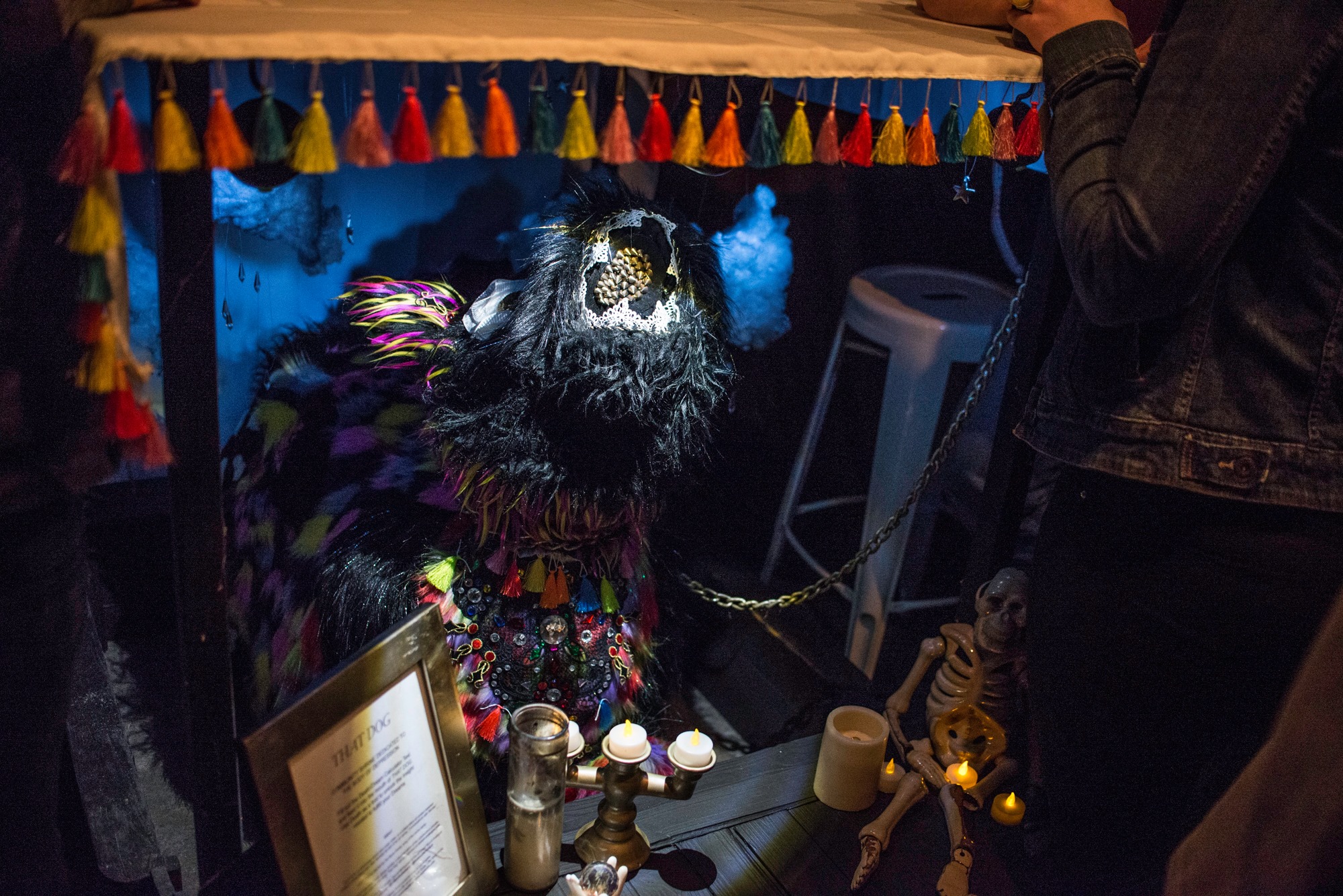
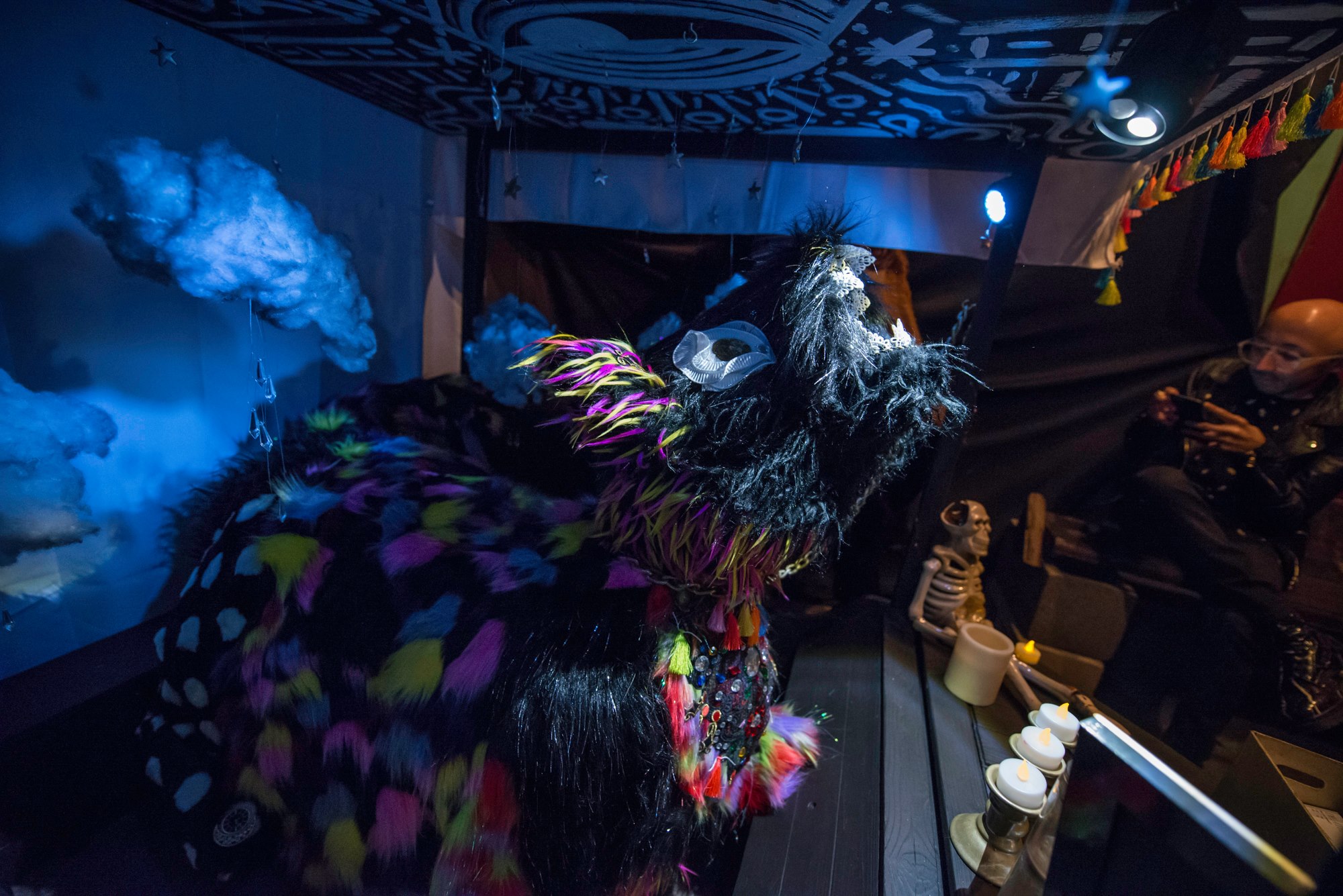
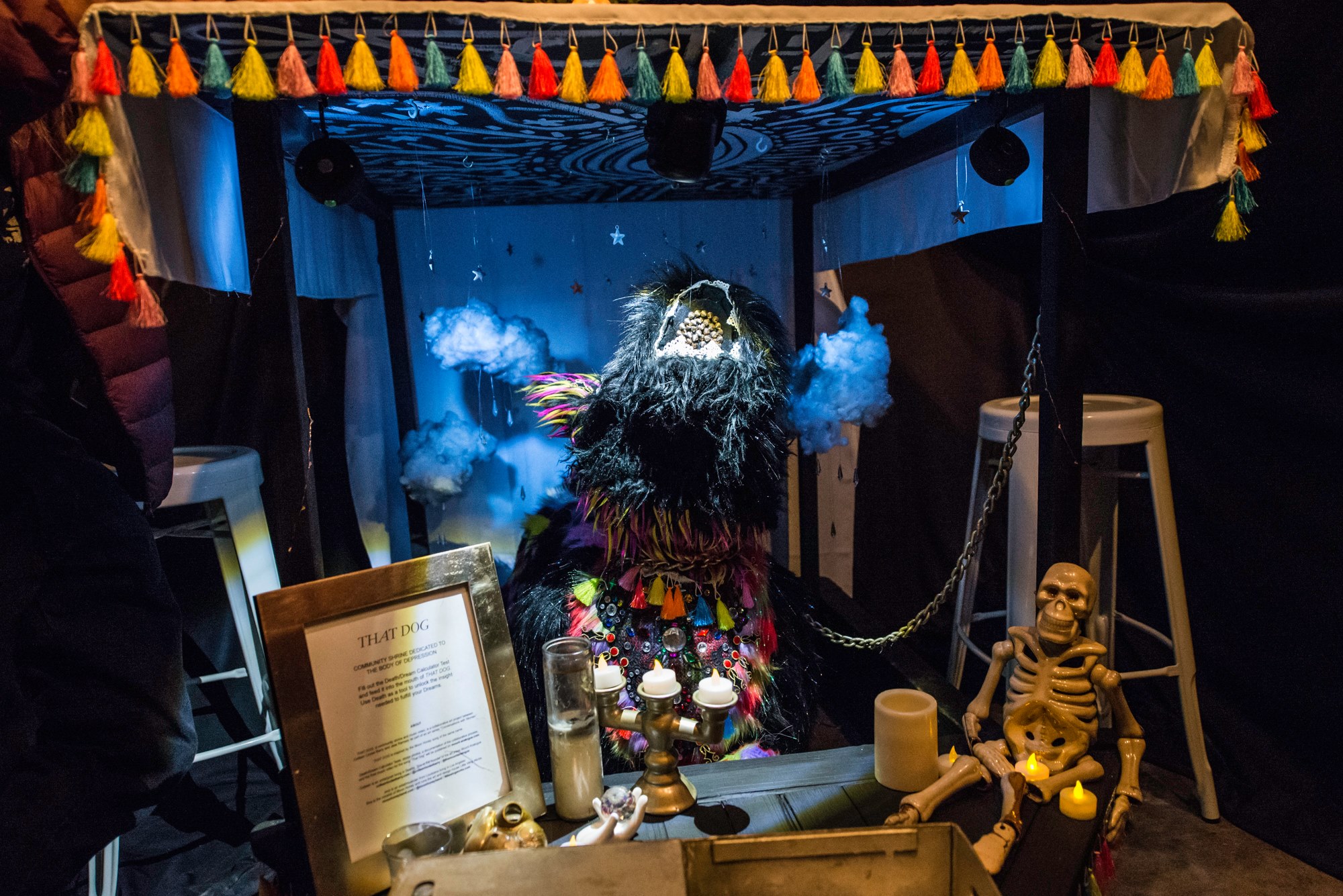

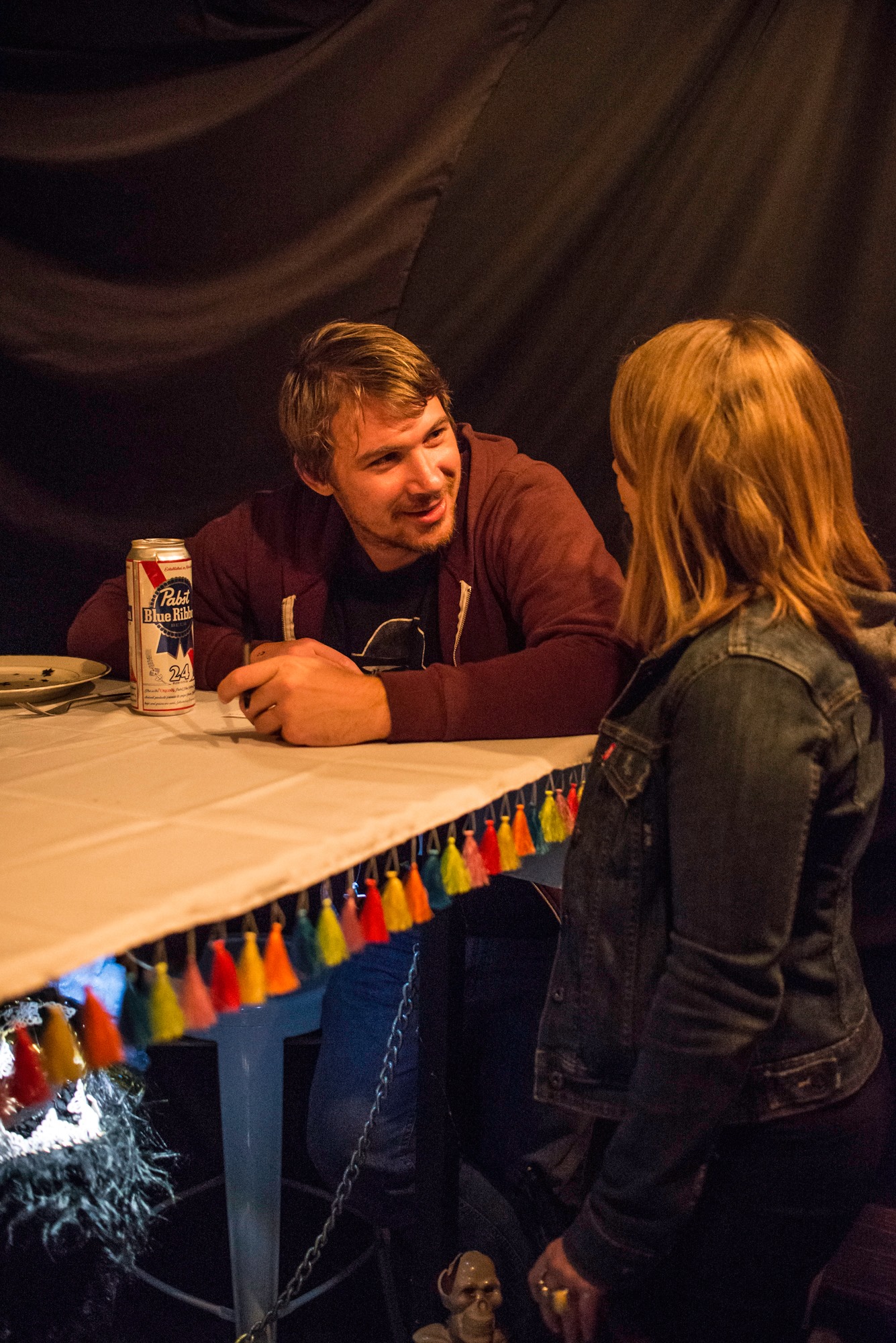
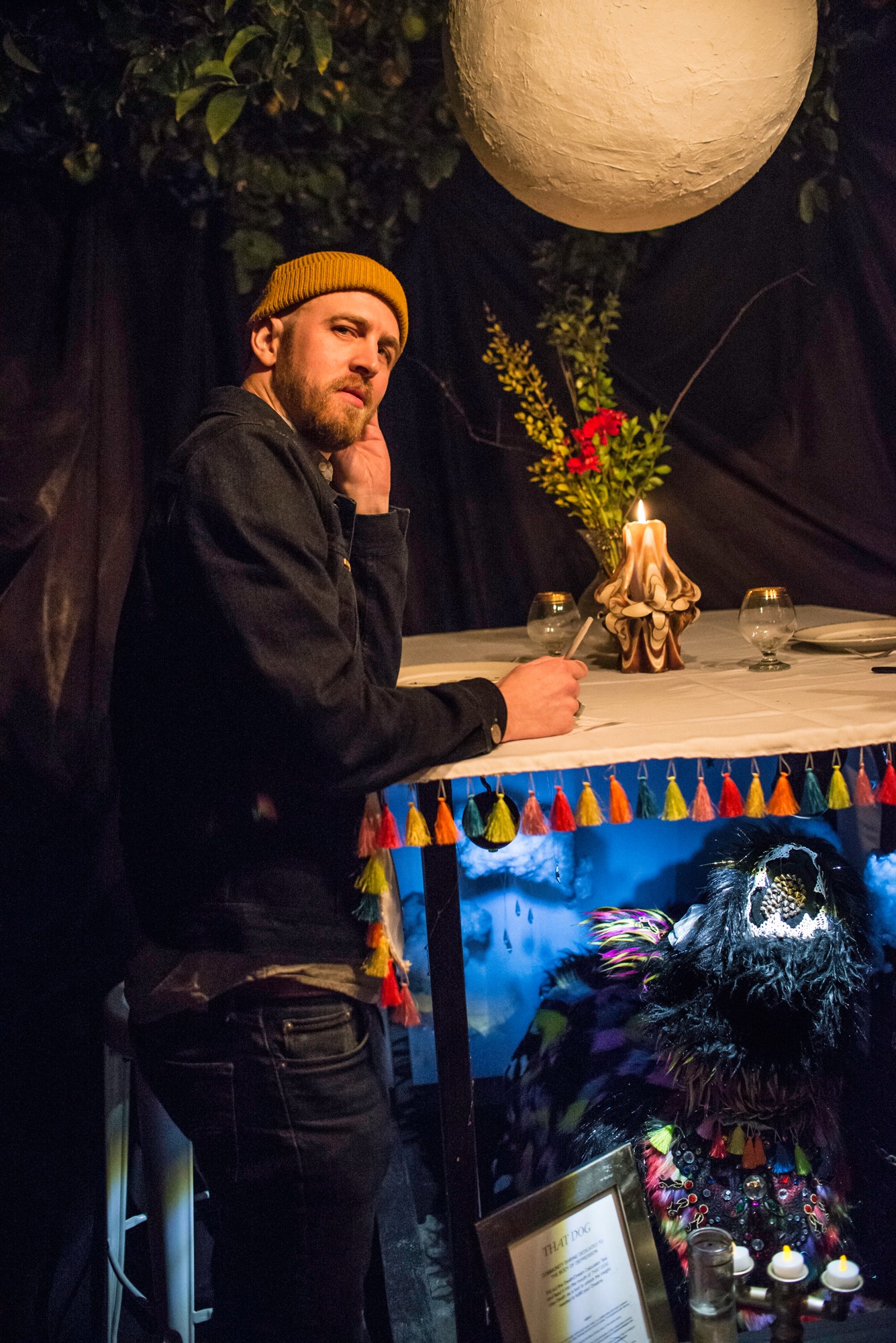
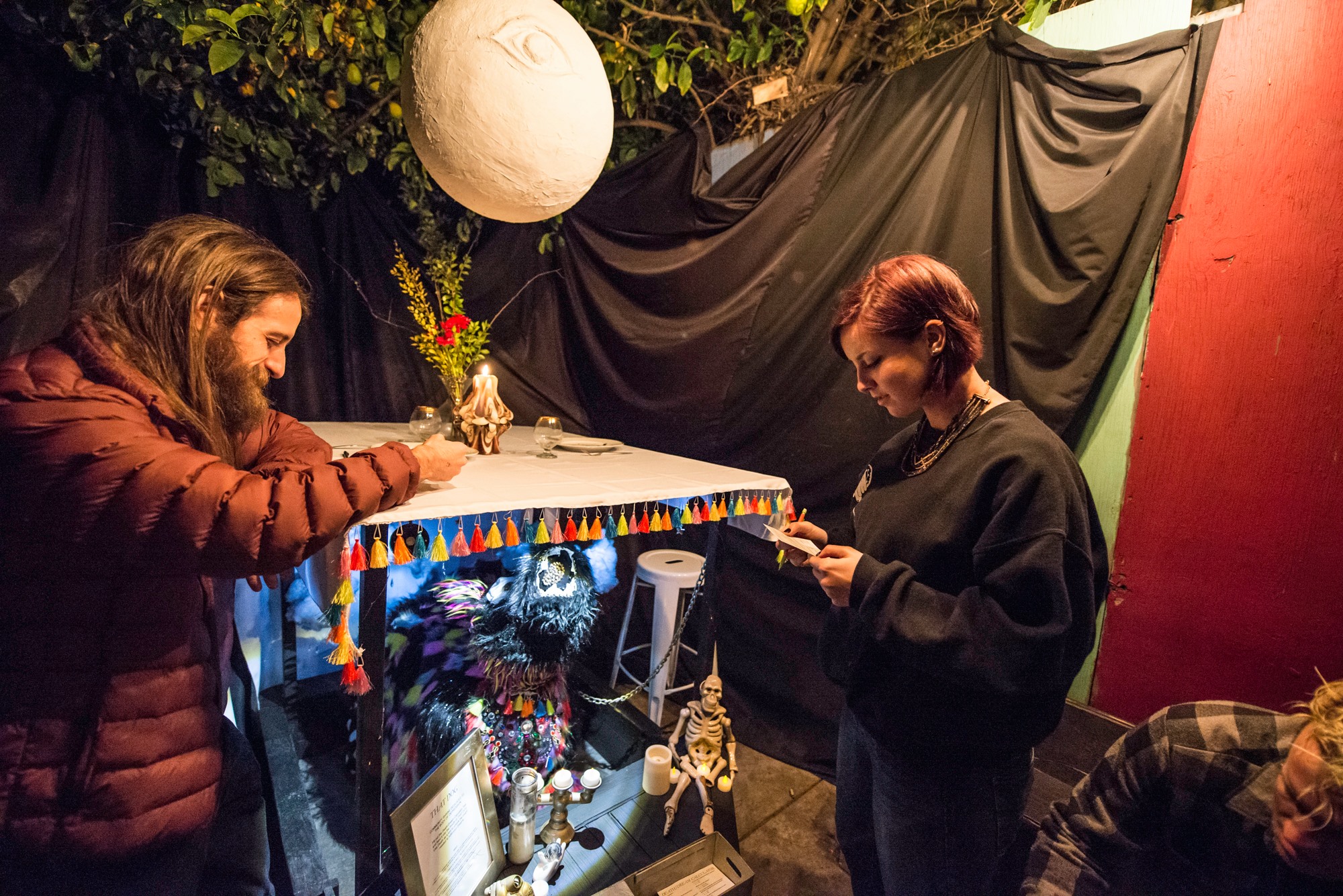
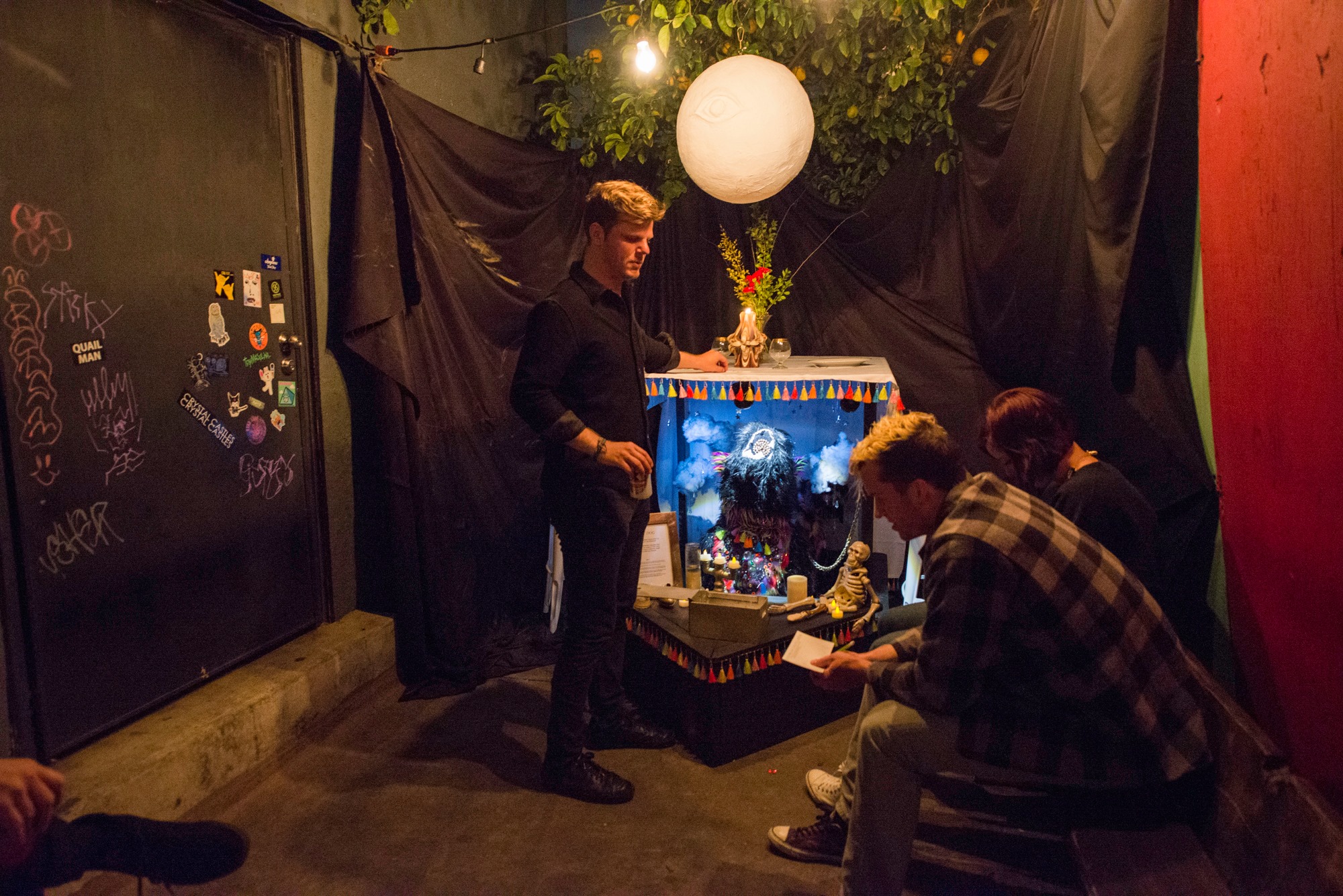
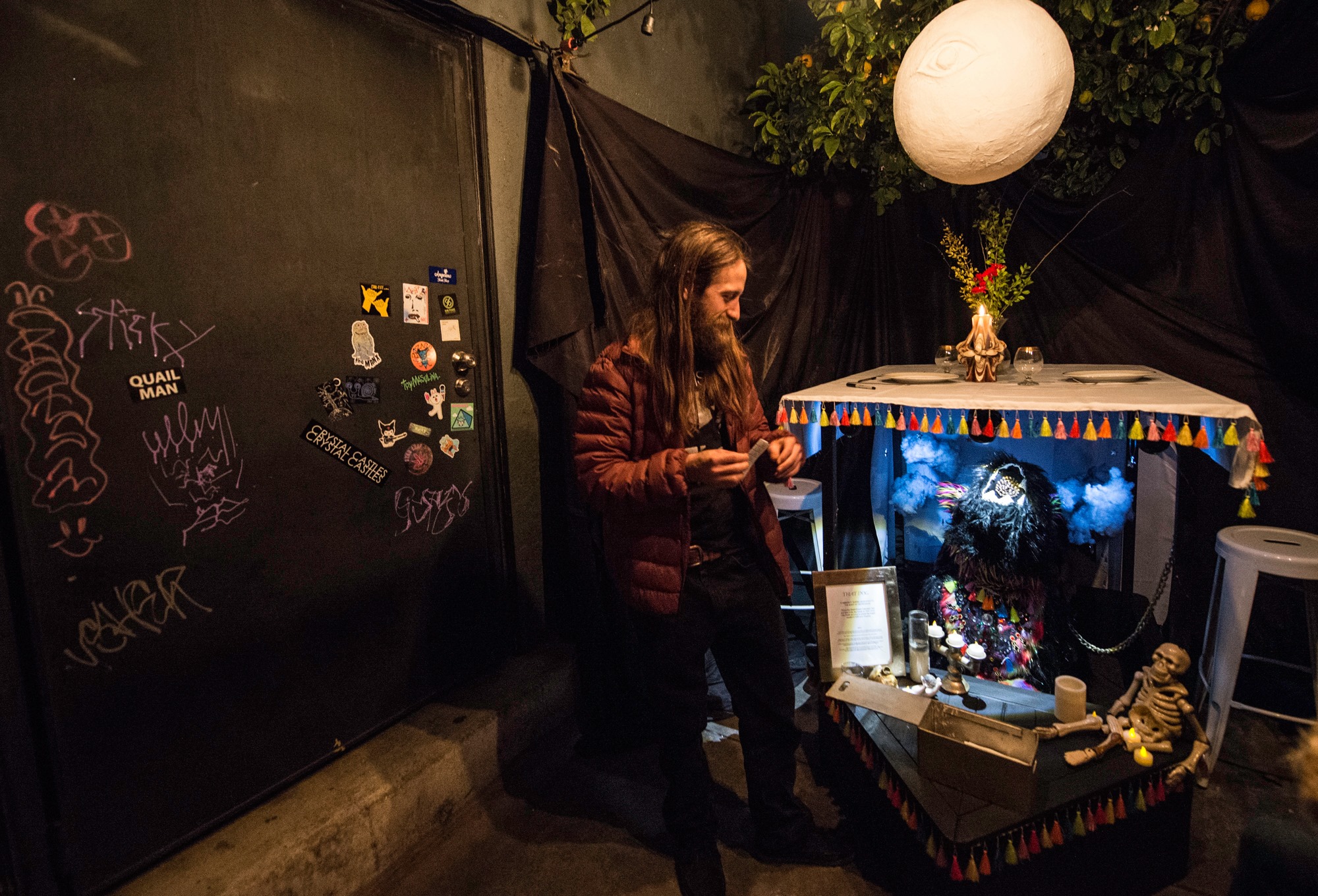
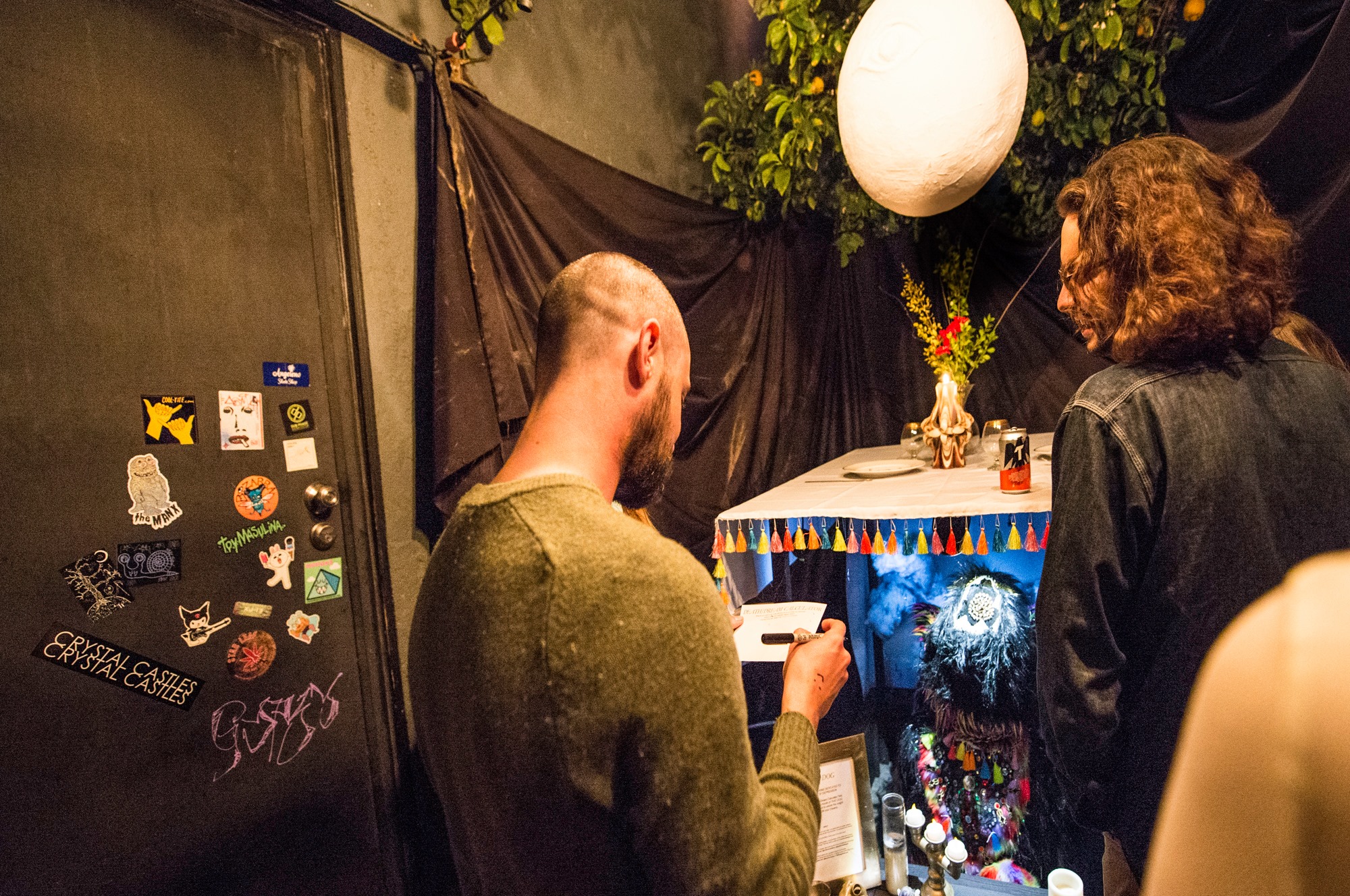
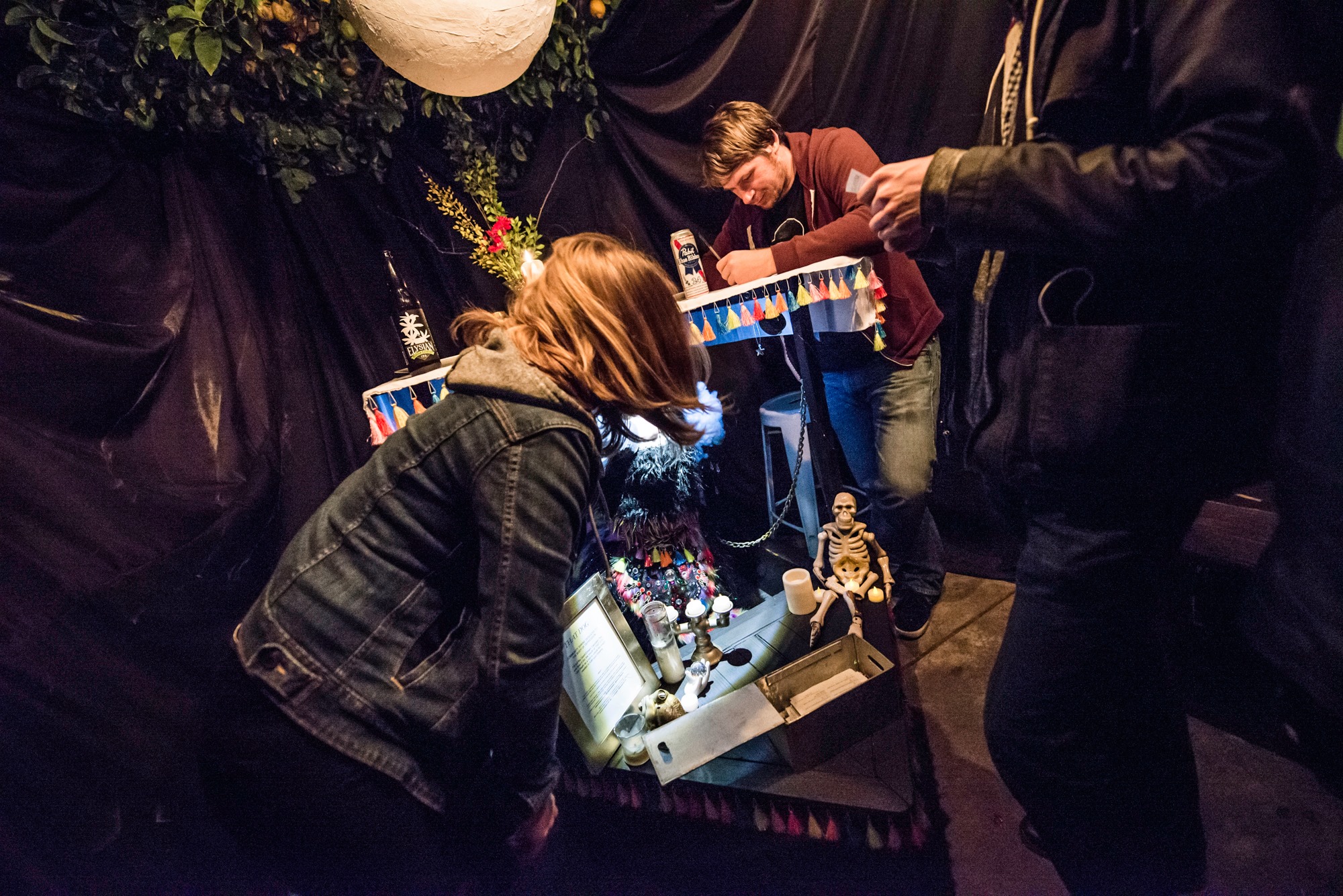
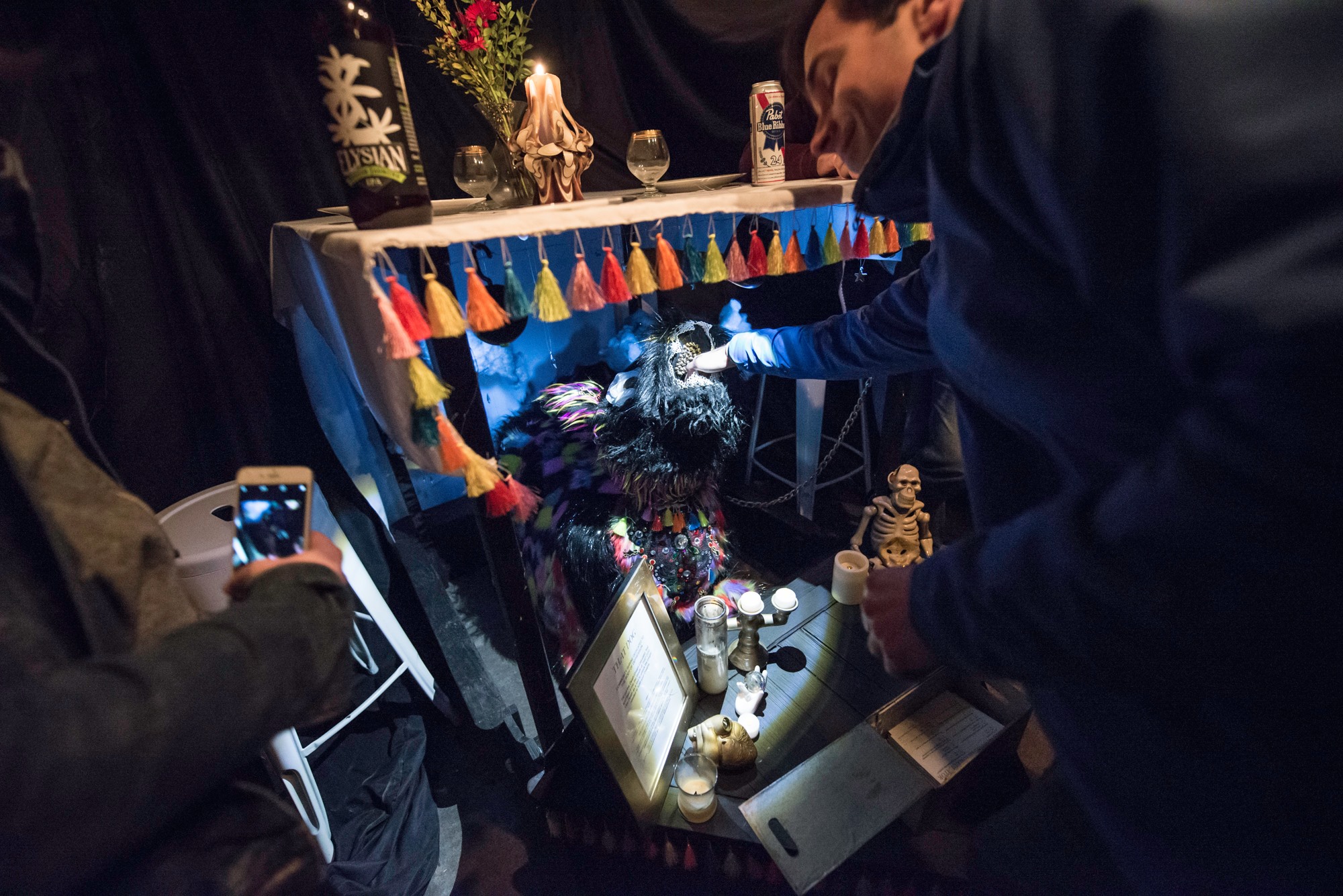
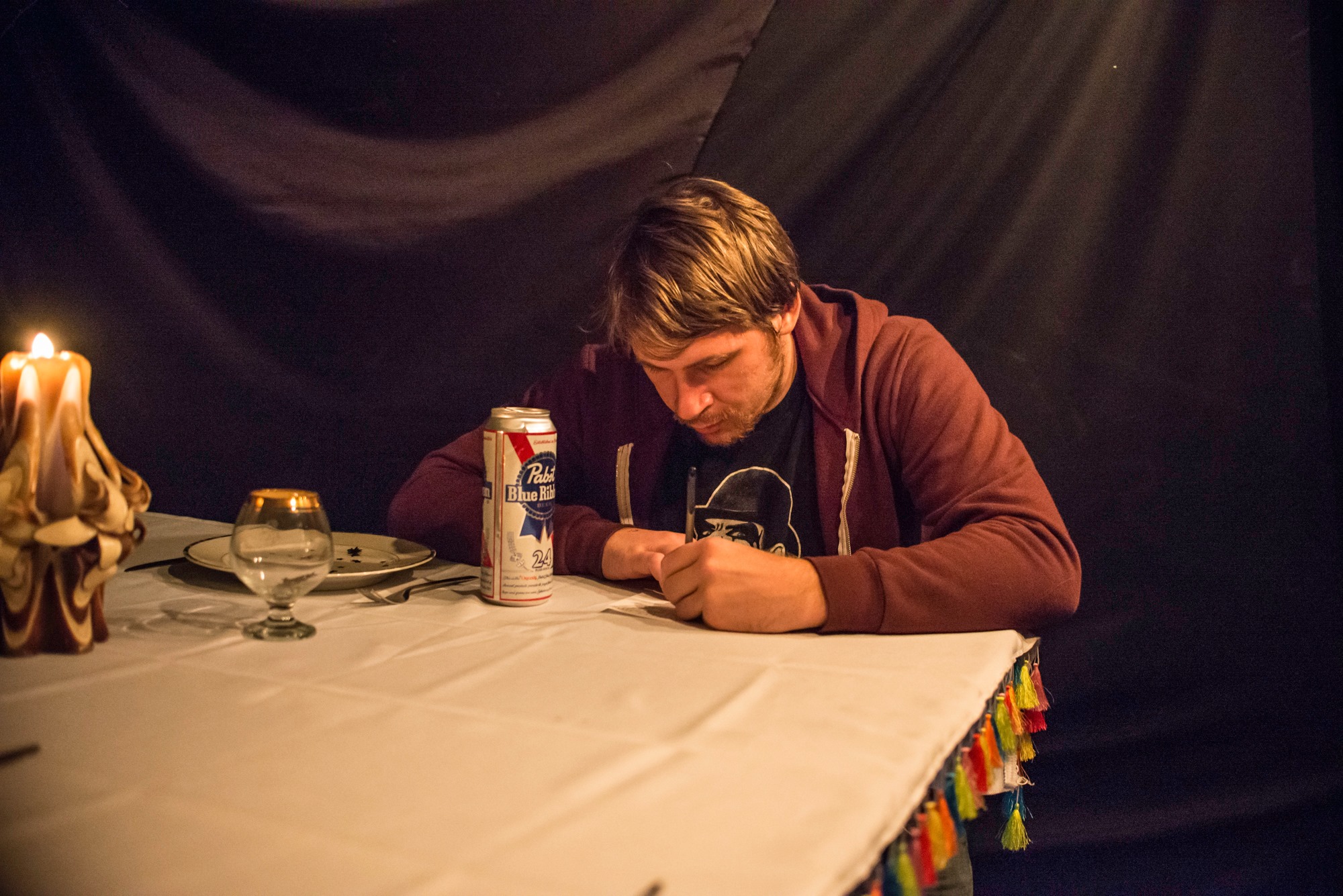

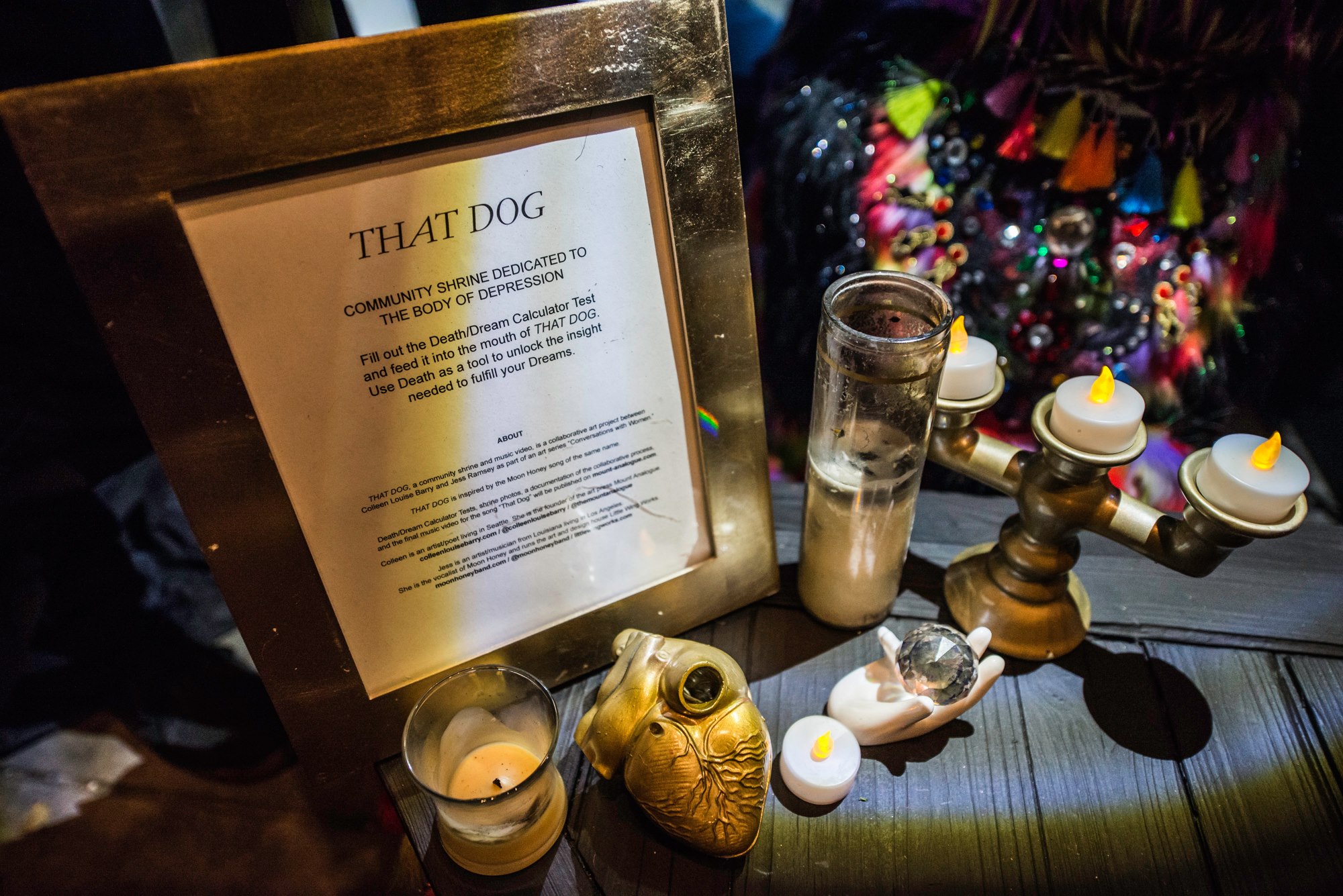
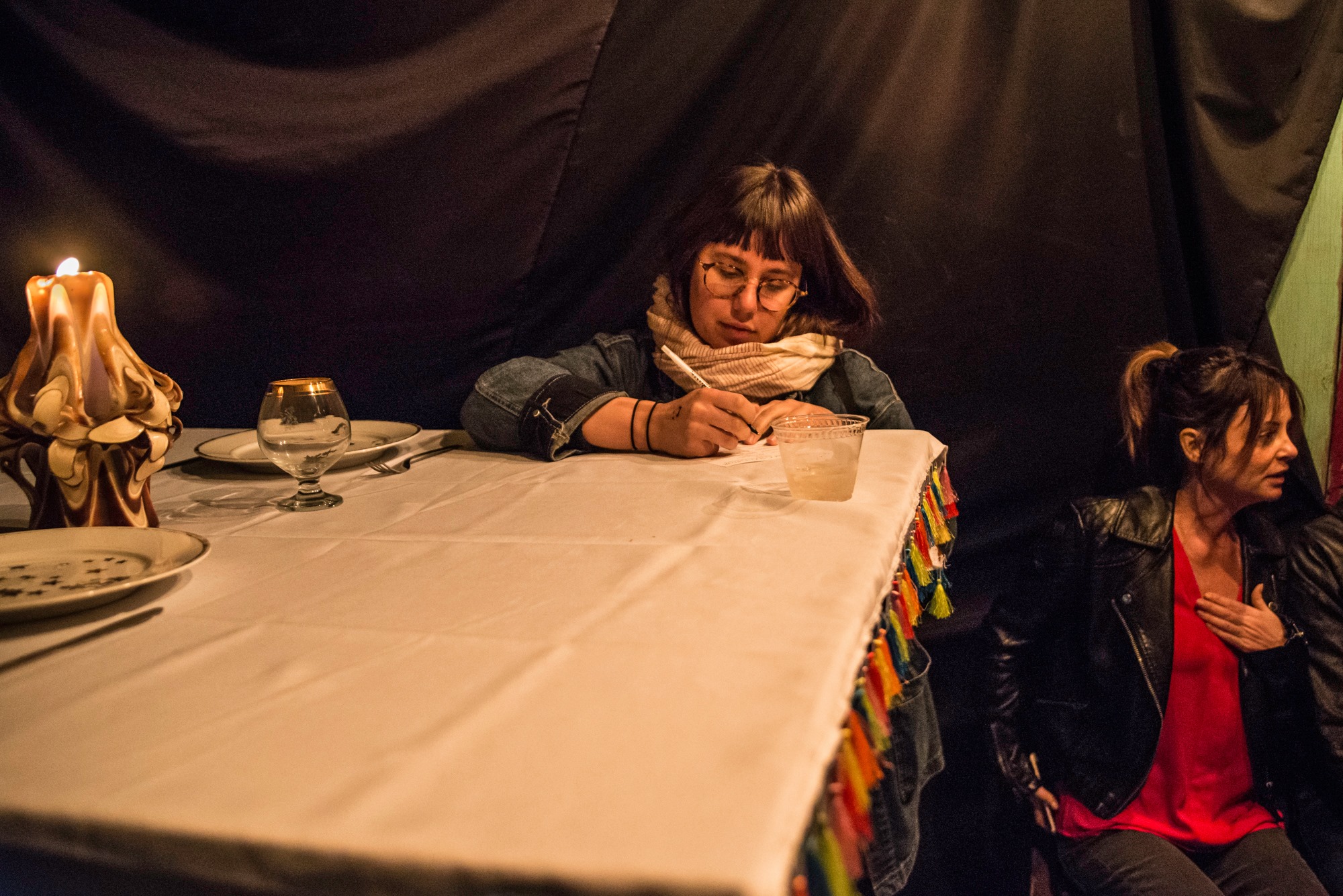

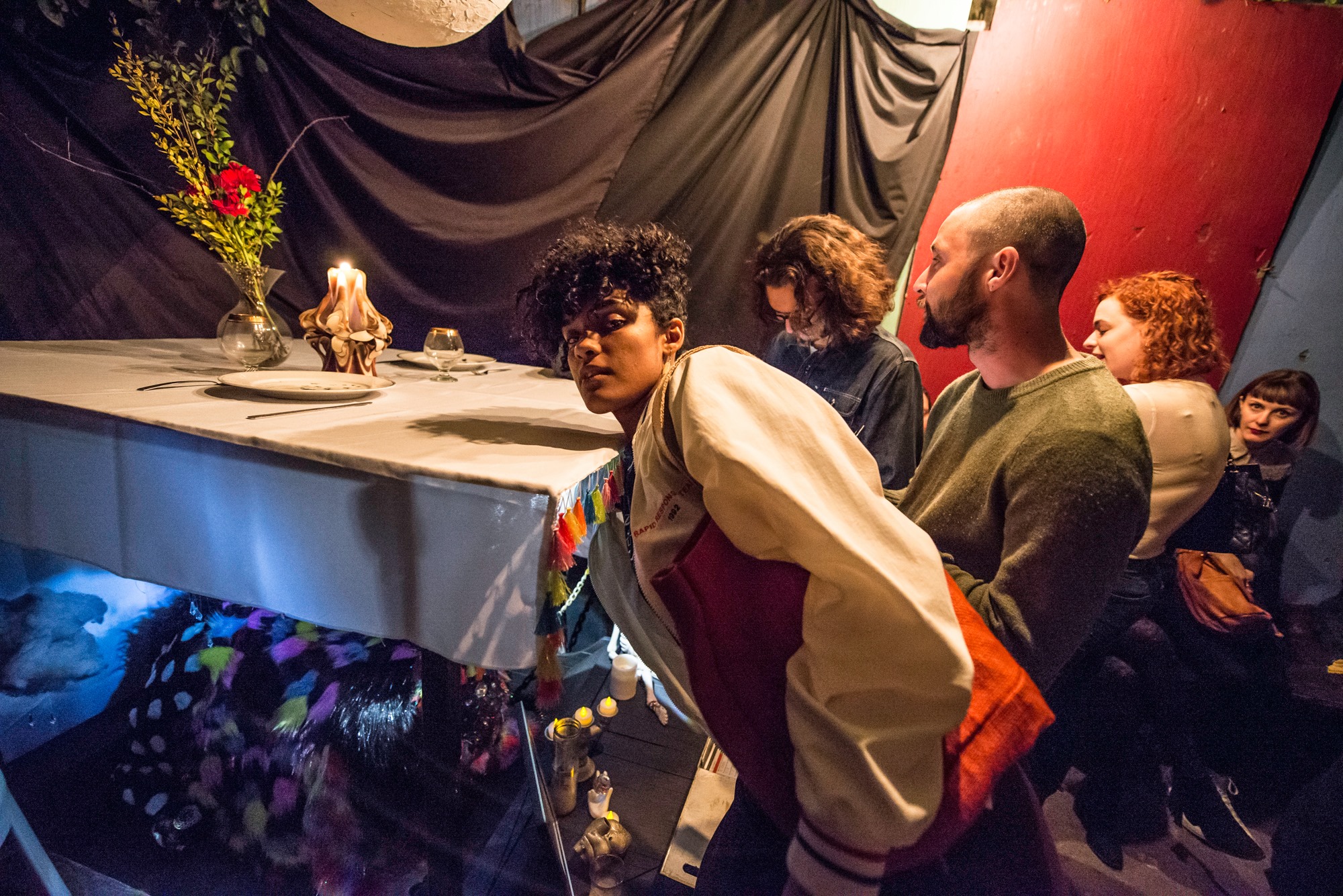
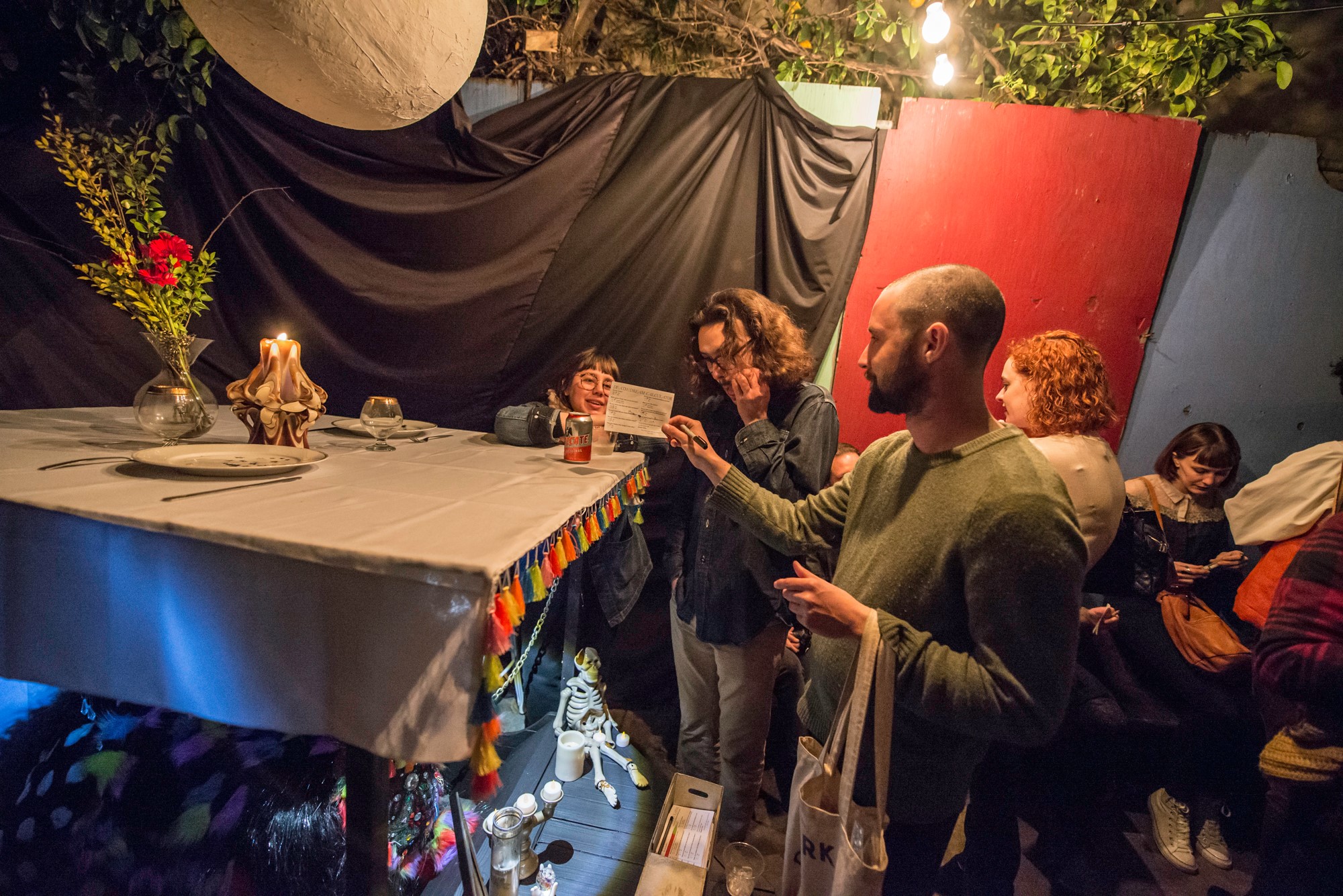
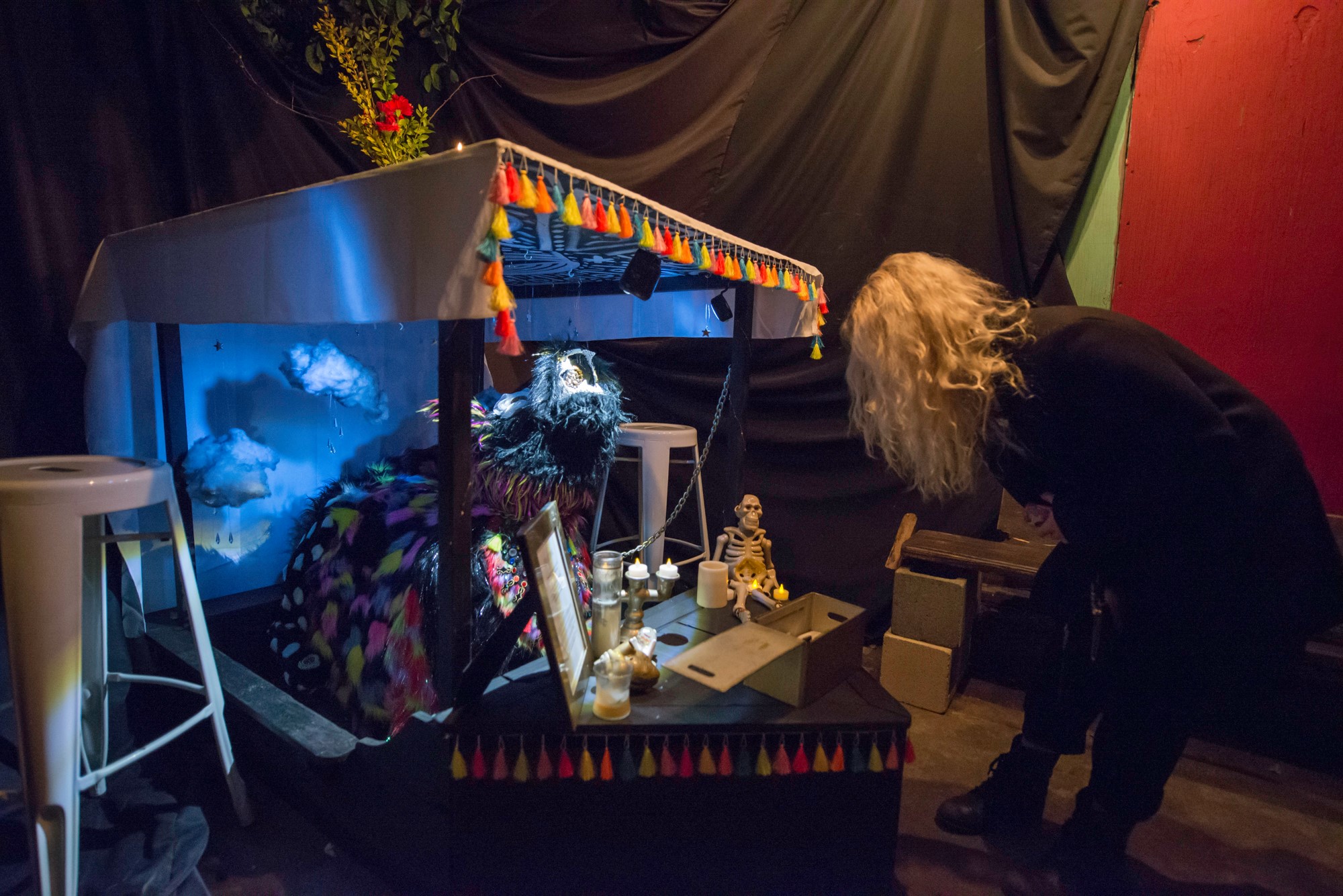
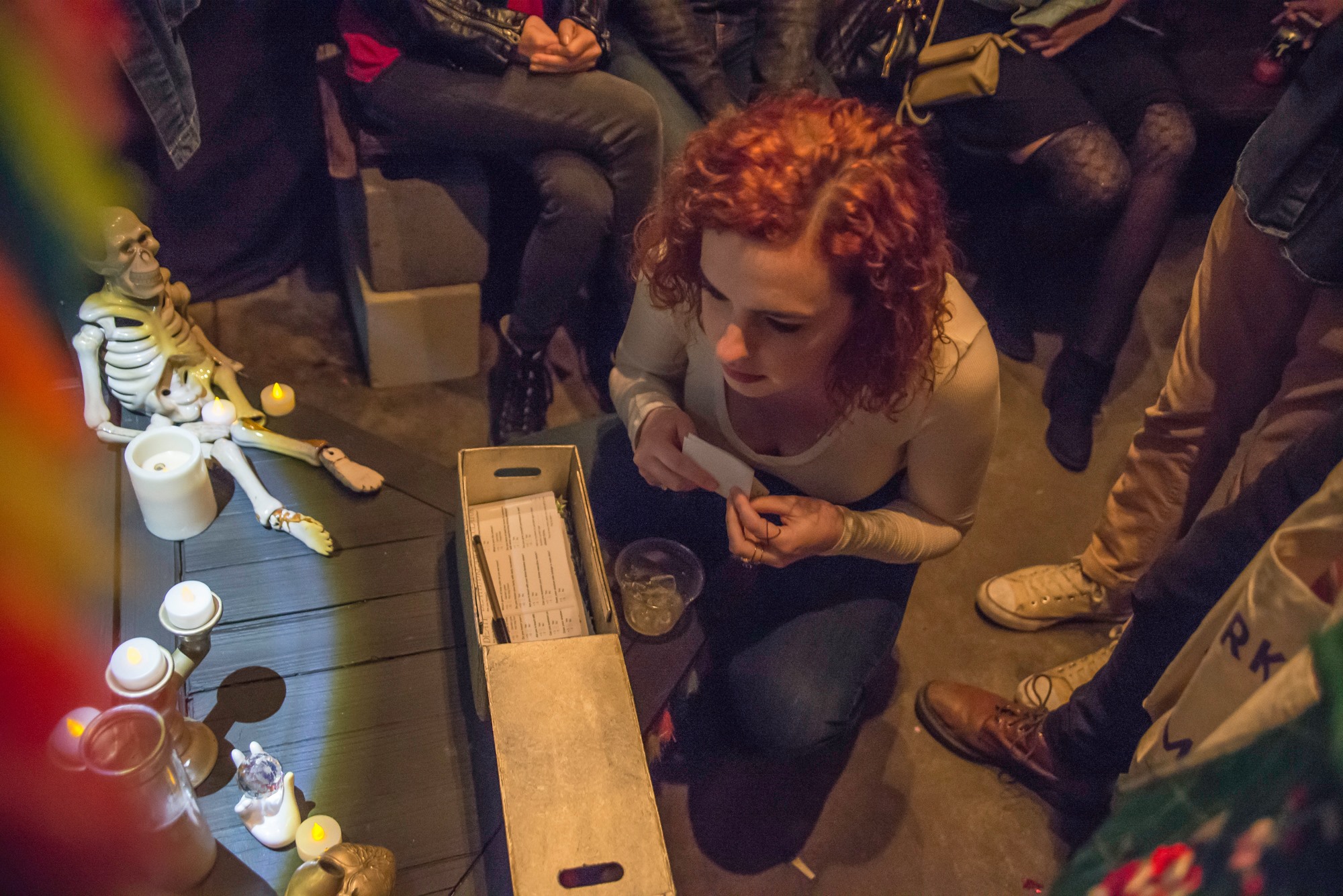
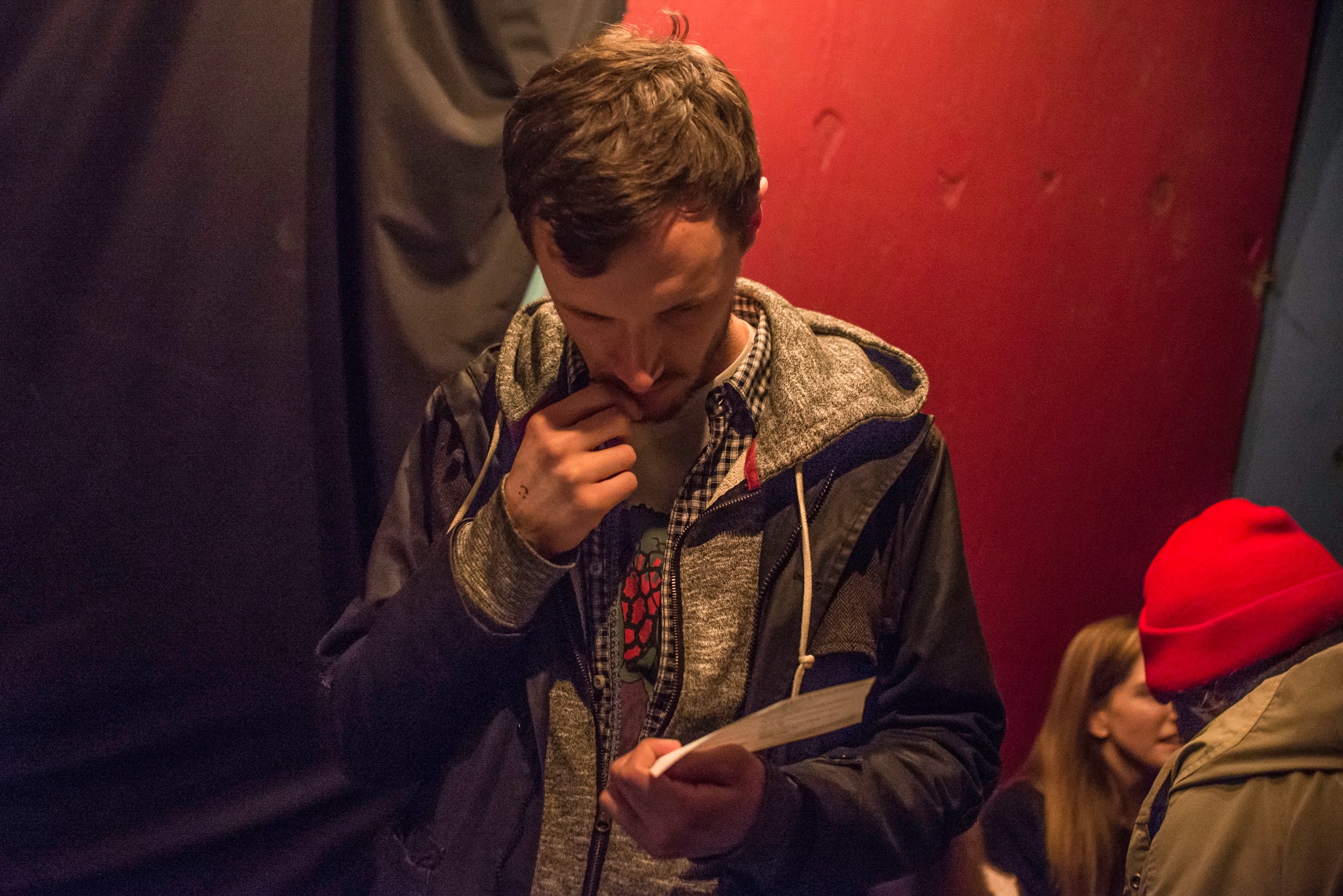
(EVENT PHOTOS BY CAREN SPITLER)
Once all filled out, participants fed their tests into the mouth of That Dog. Everyone was invited to sit at the table and share a moment while That Dog got fed below them.

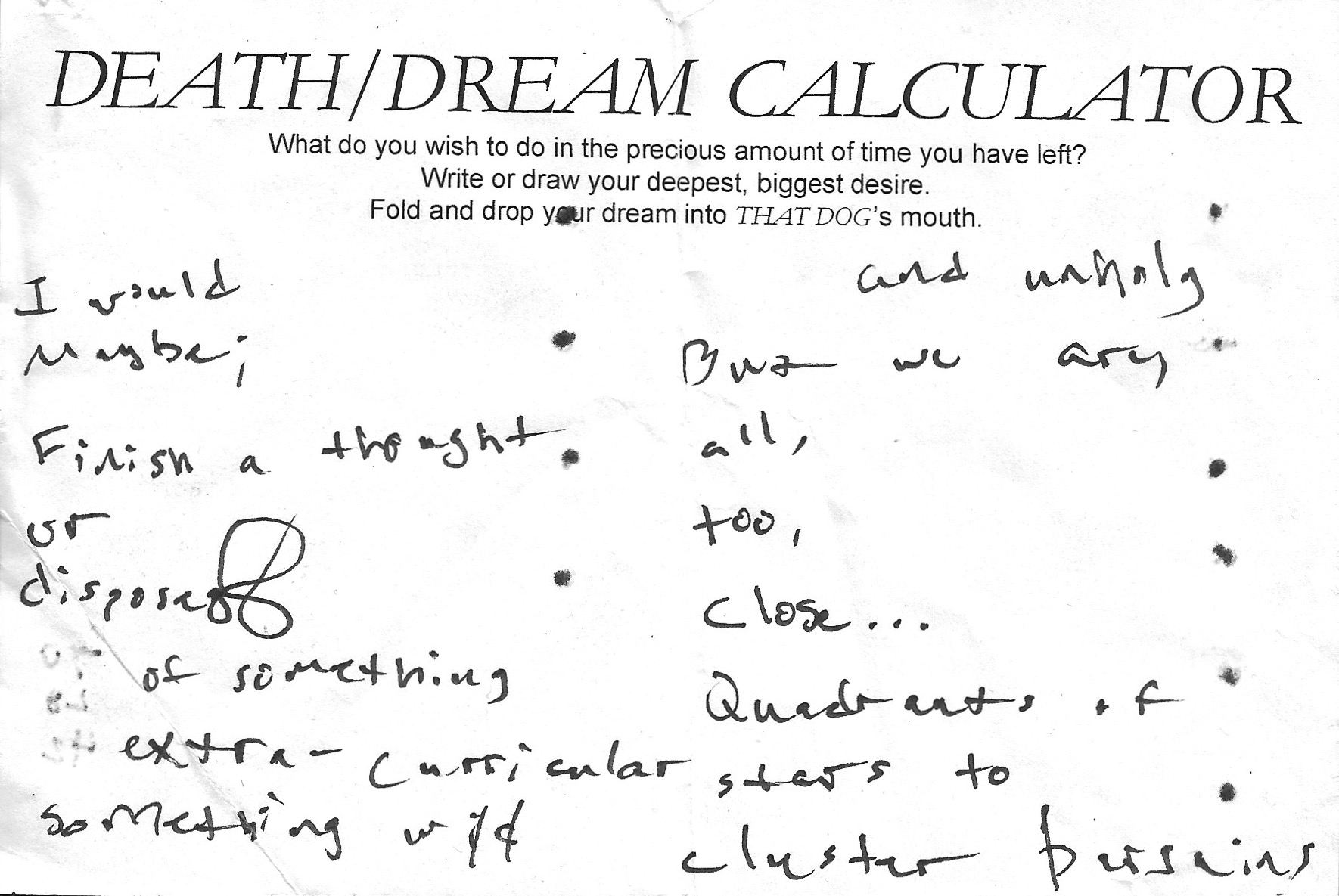
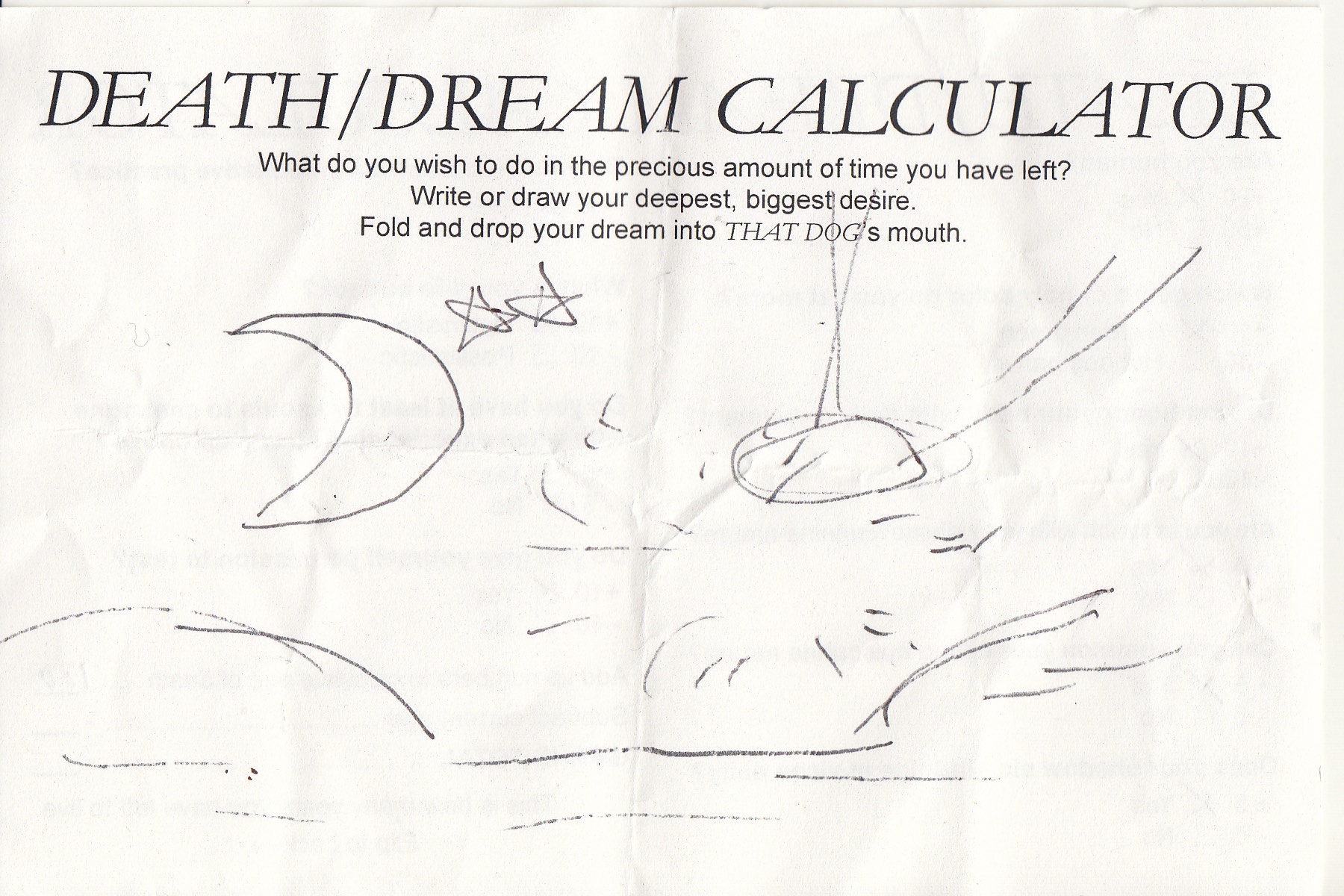
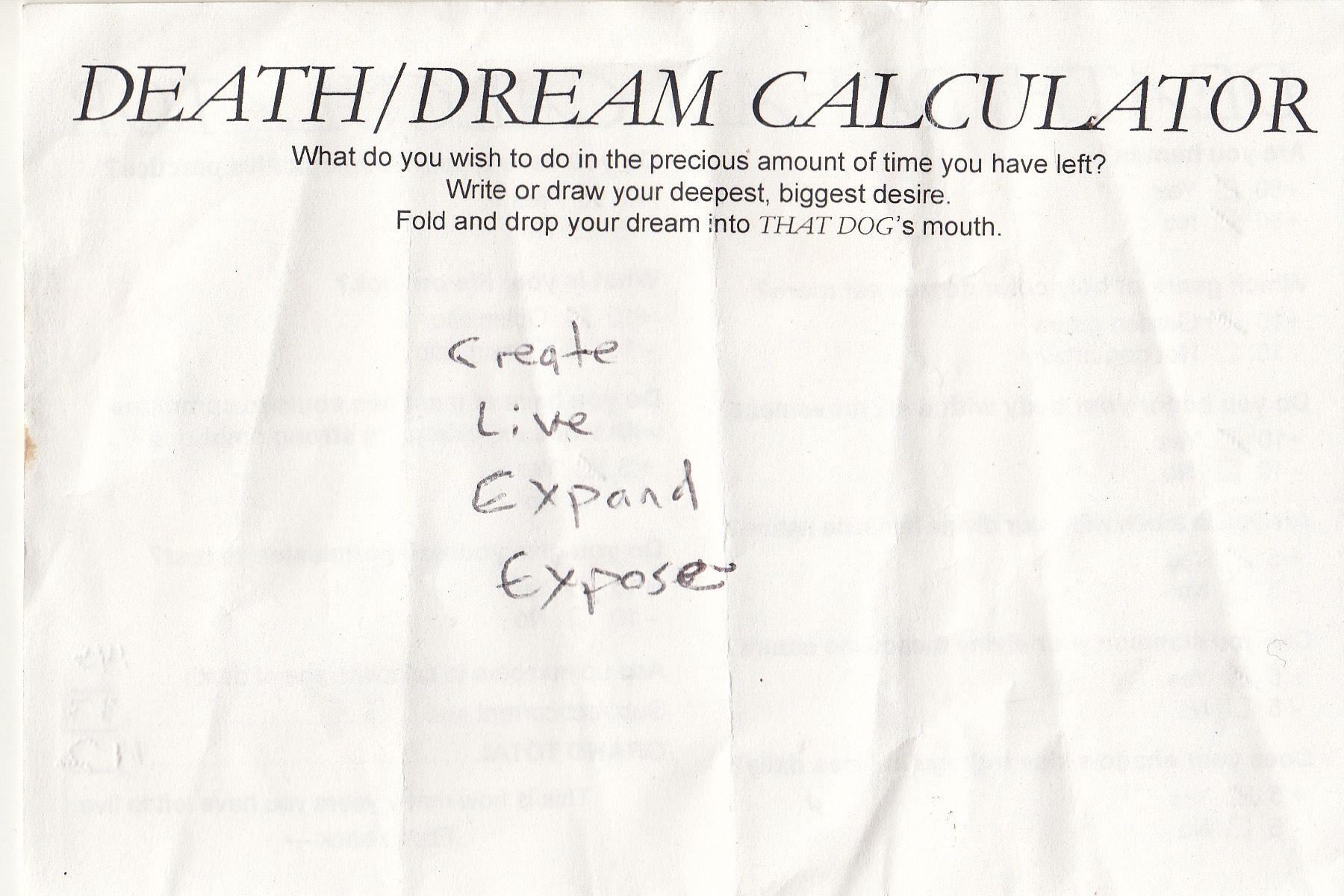
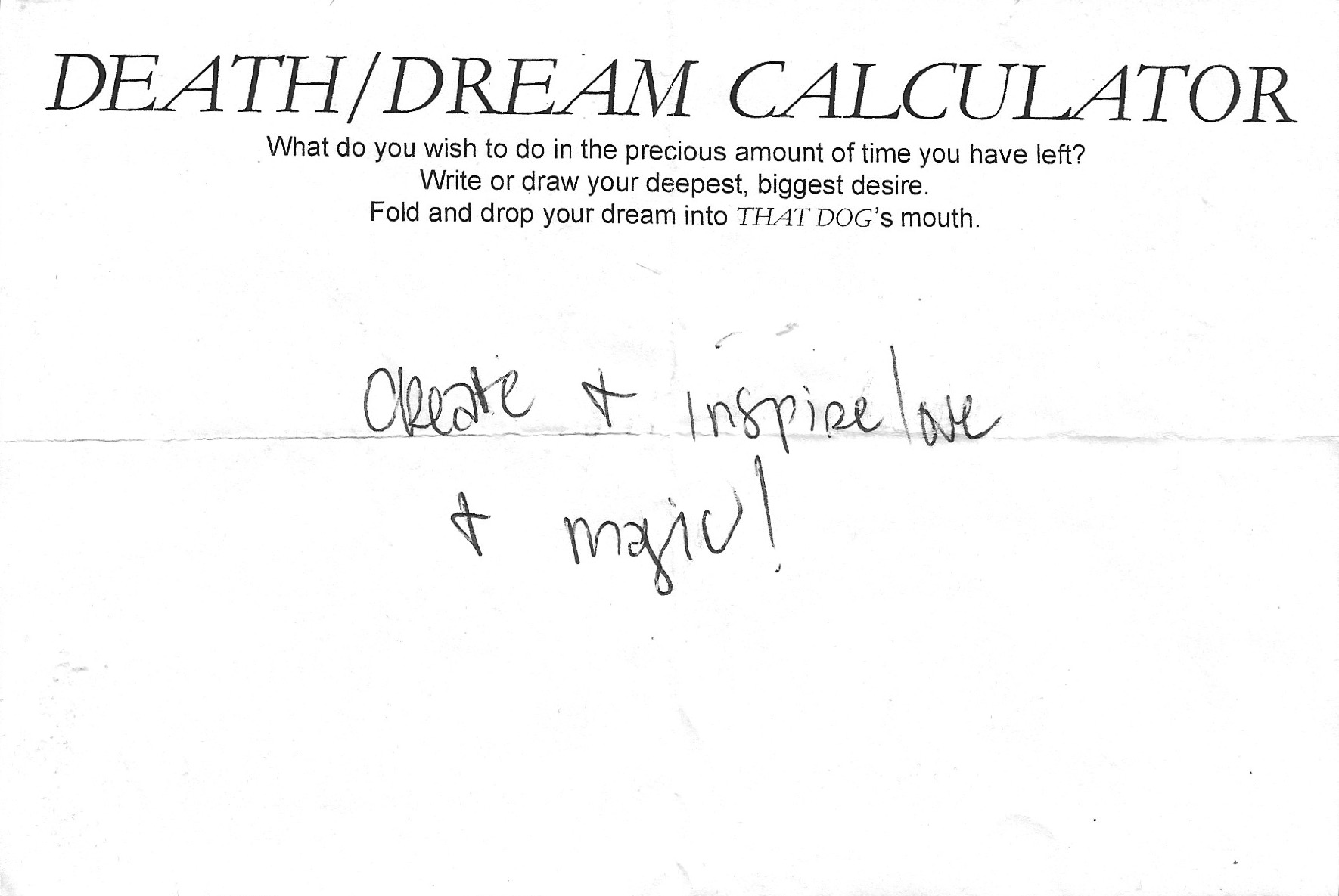
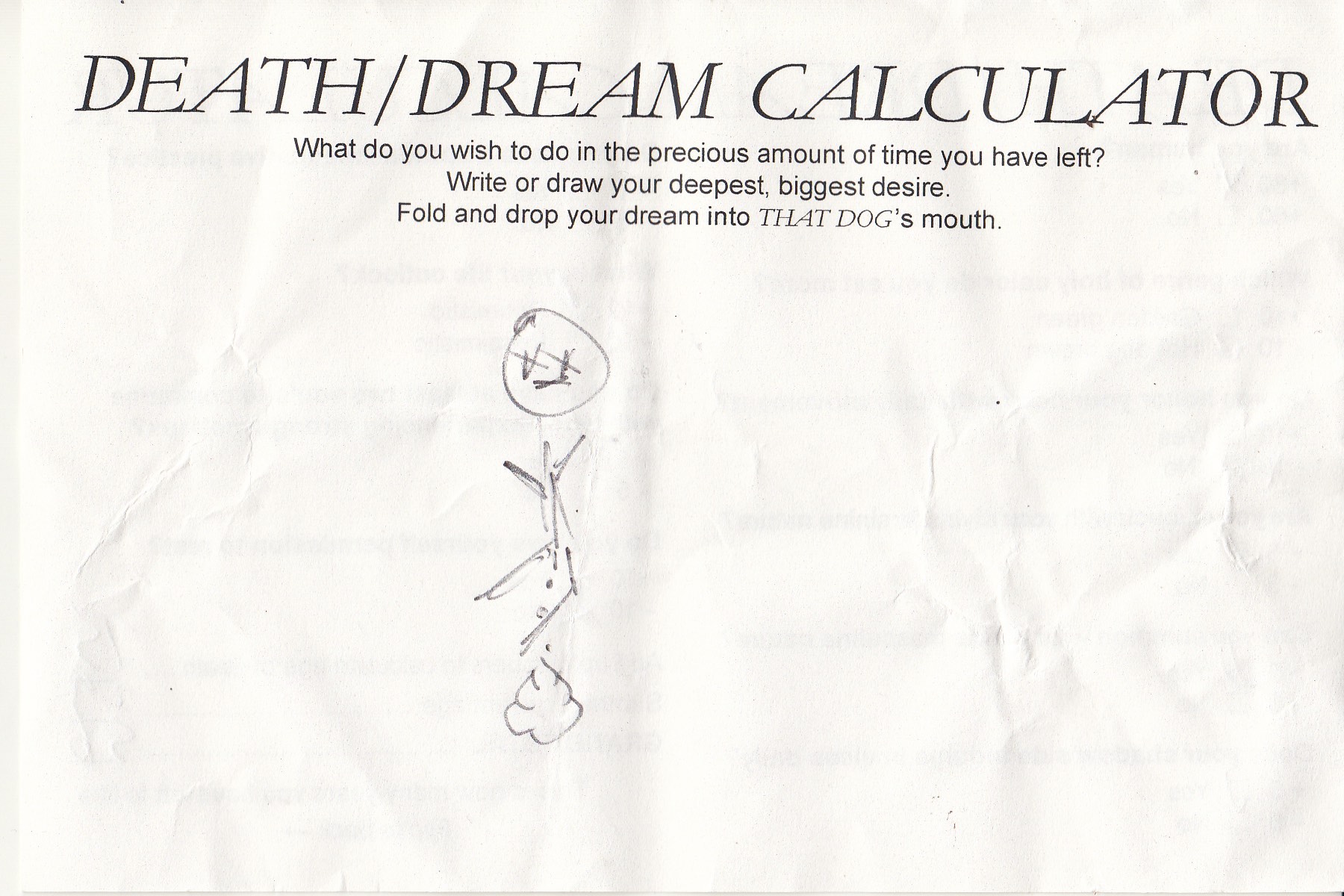
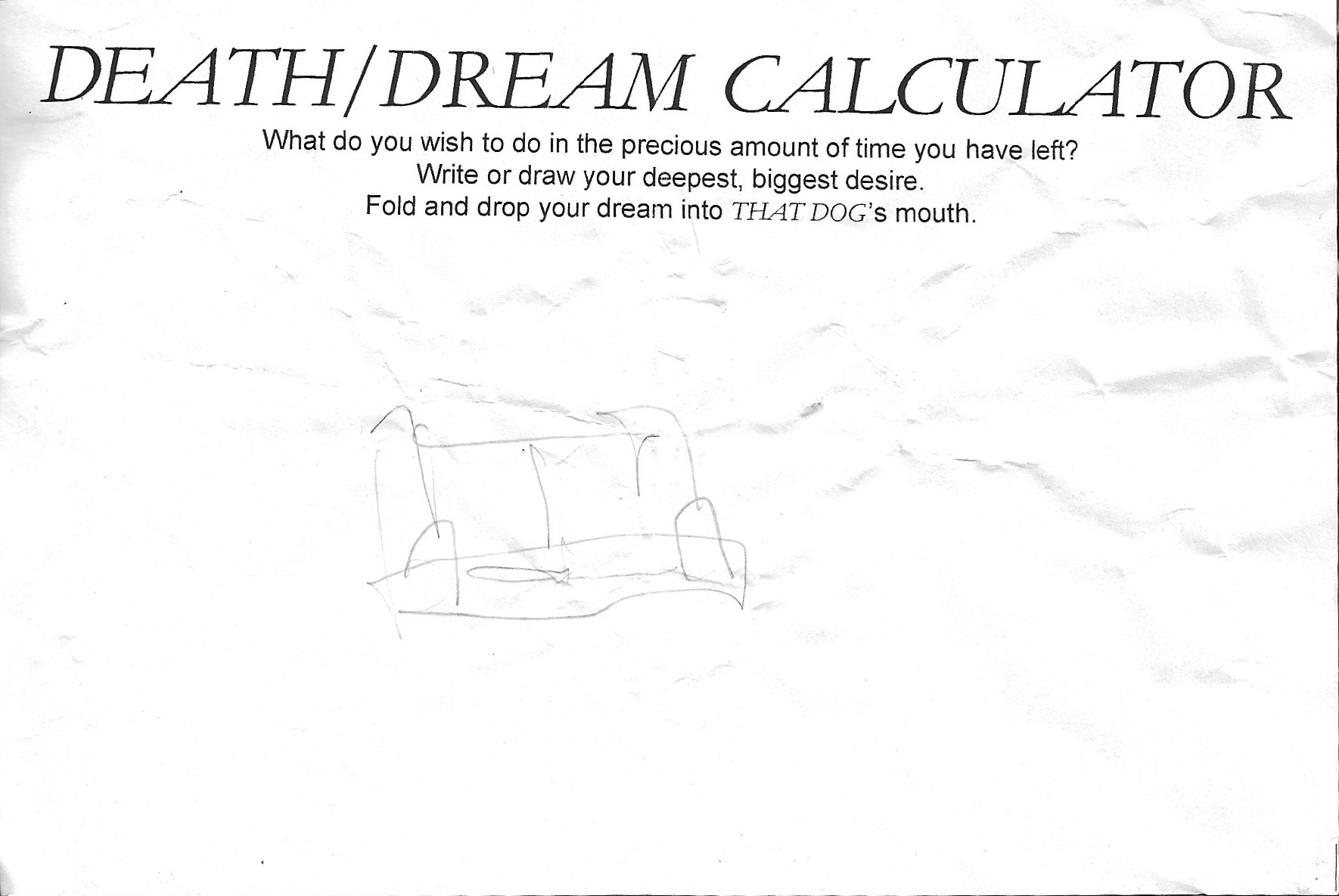
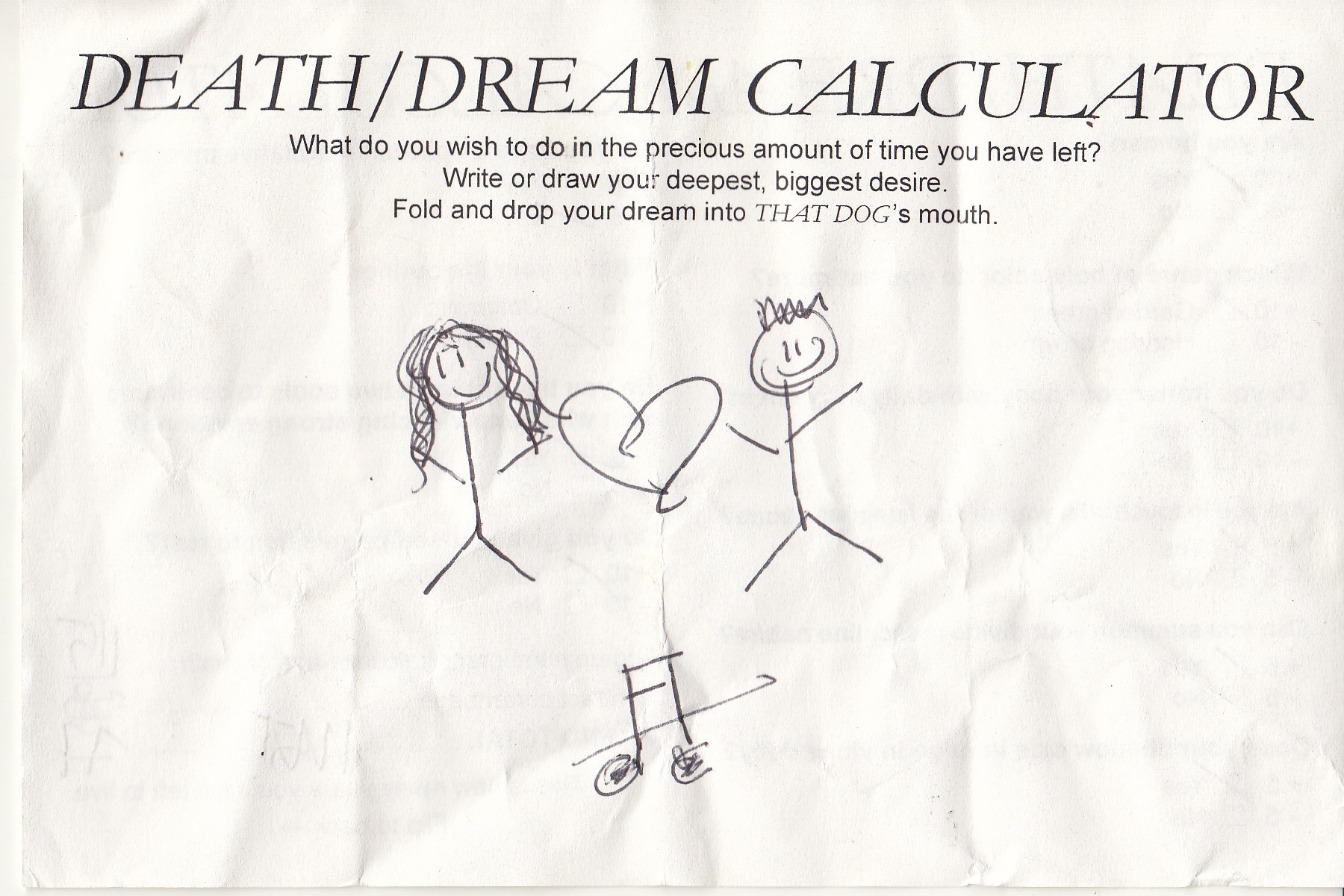
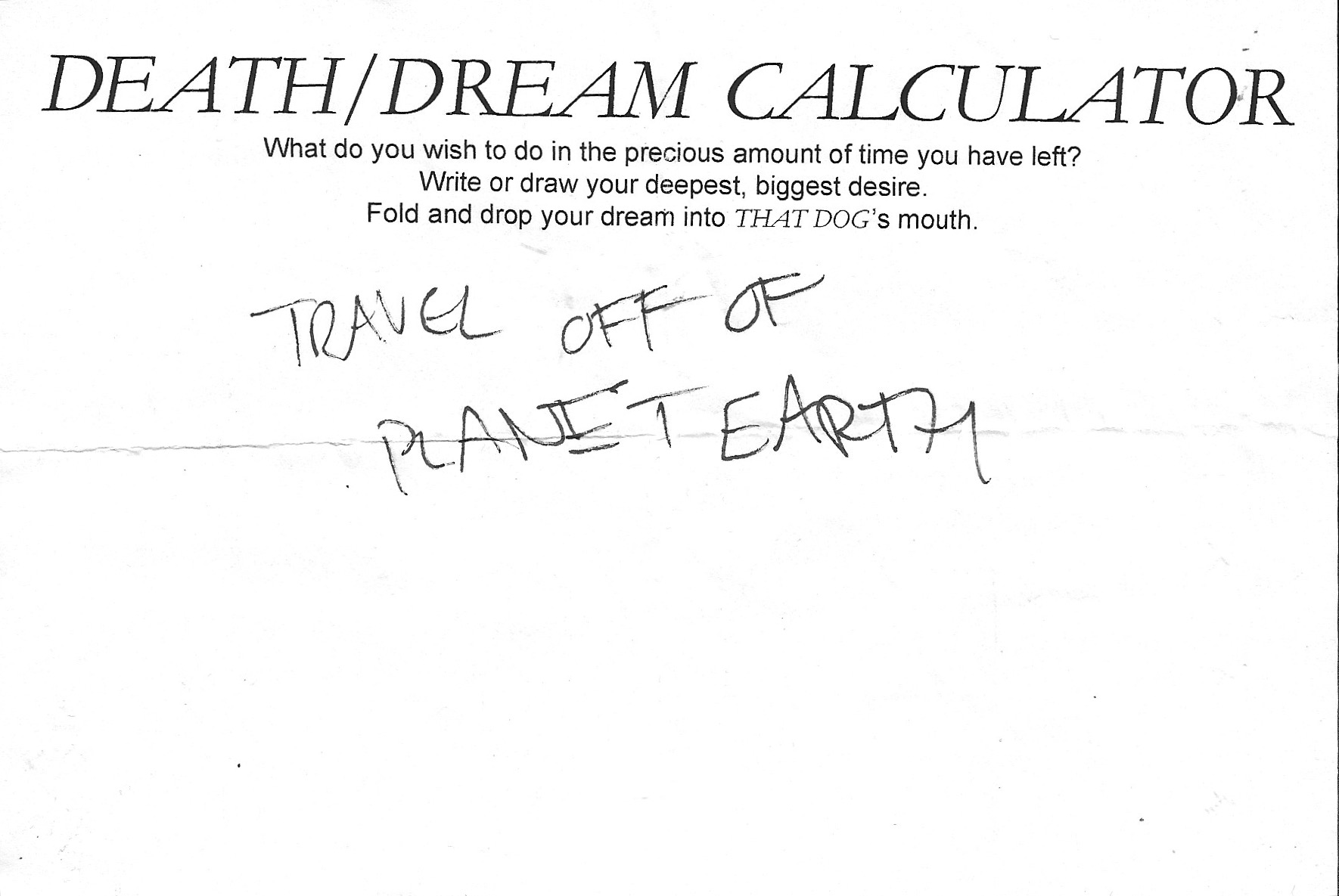
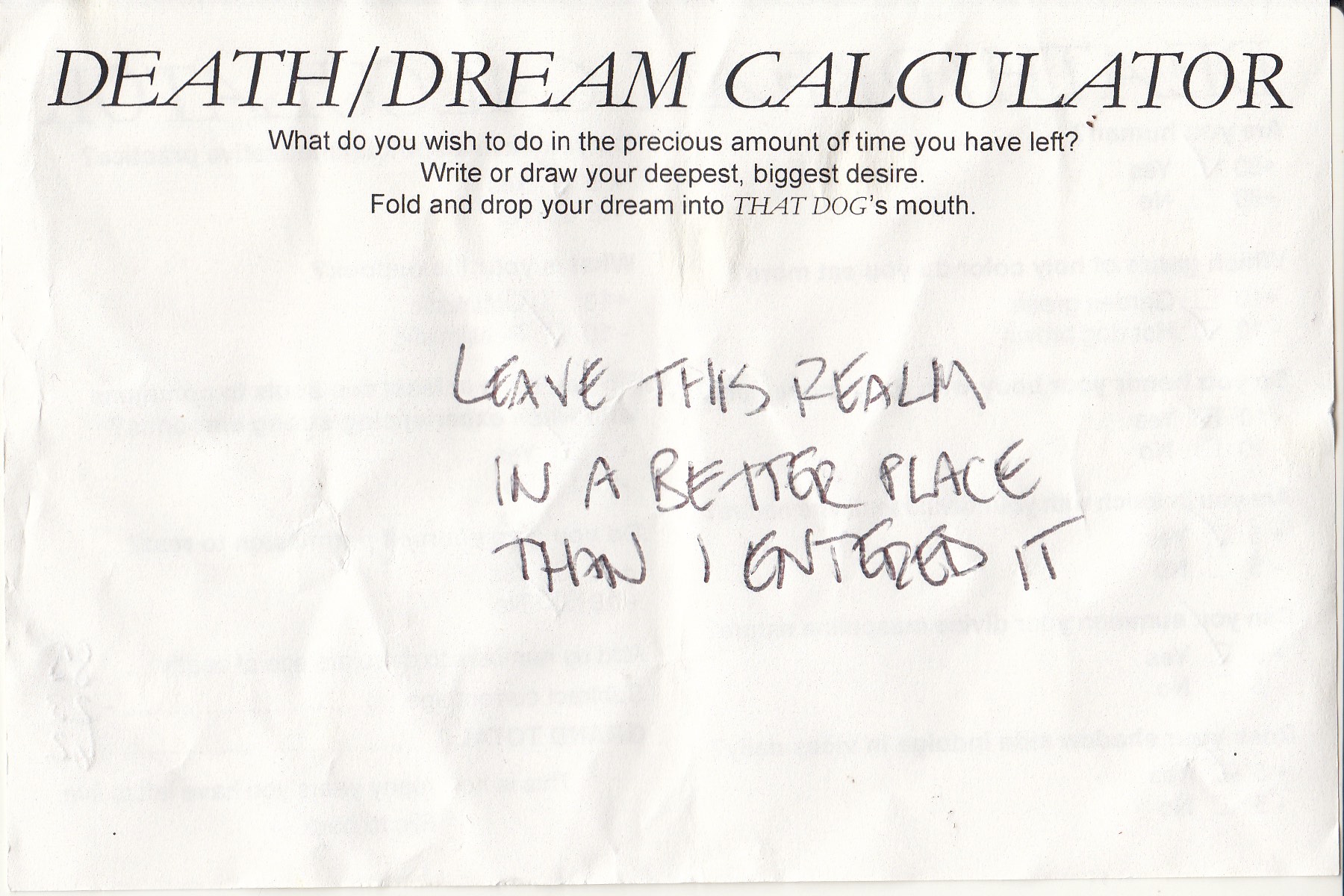
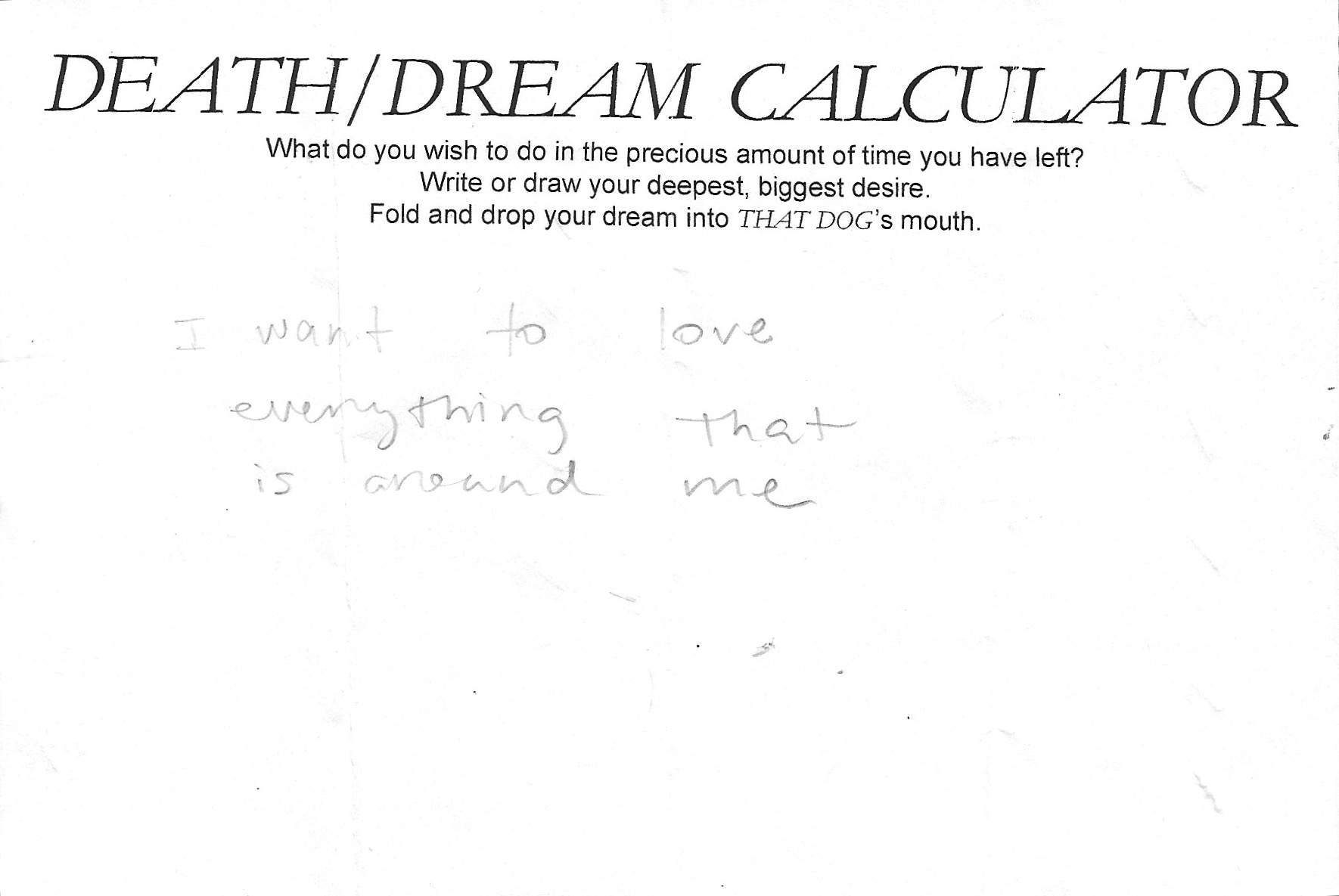
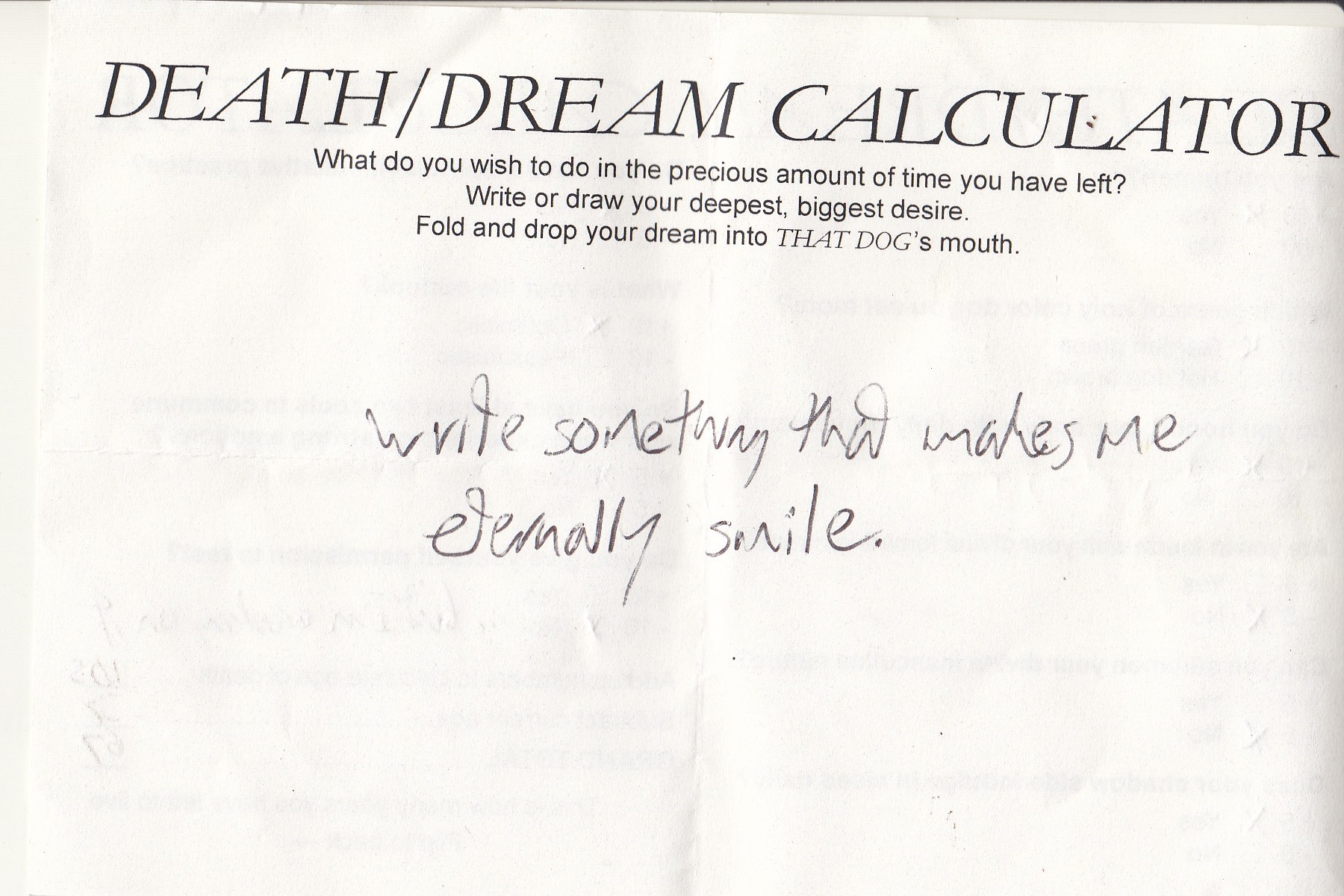

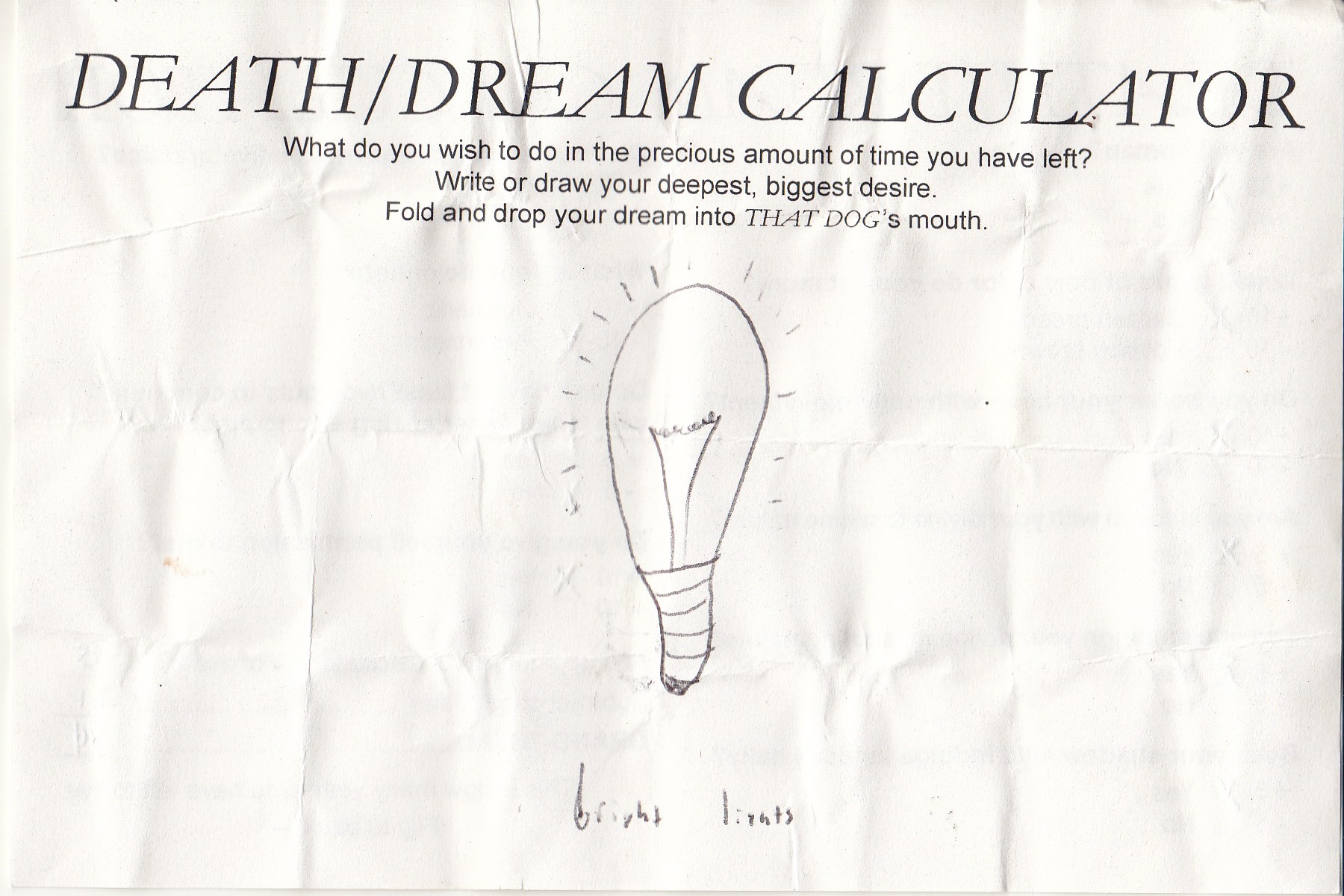
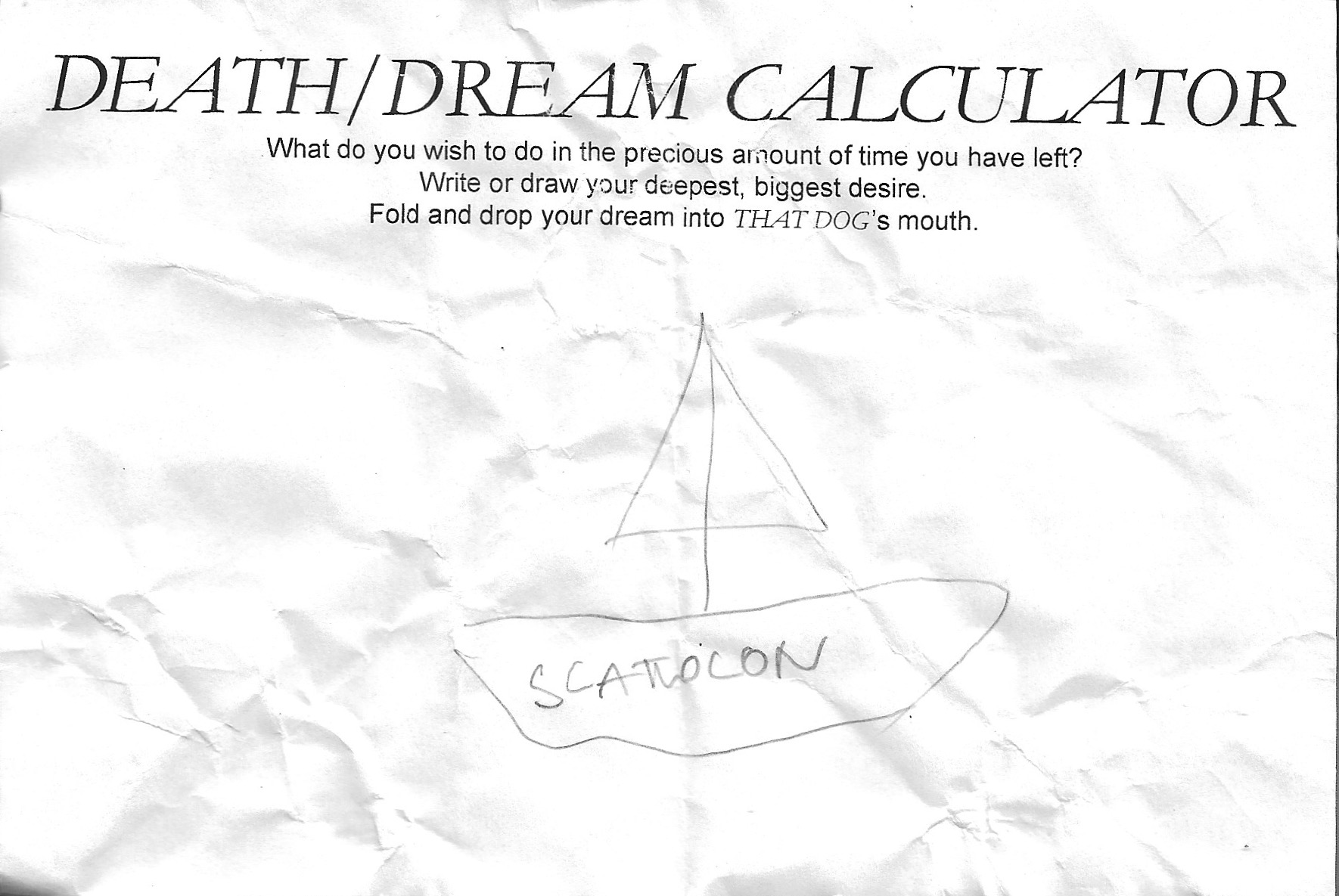
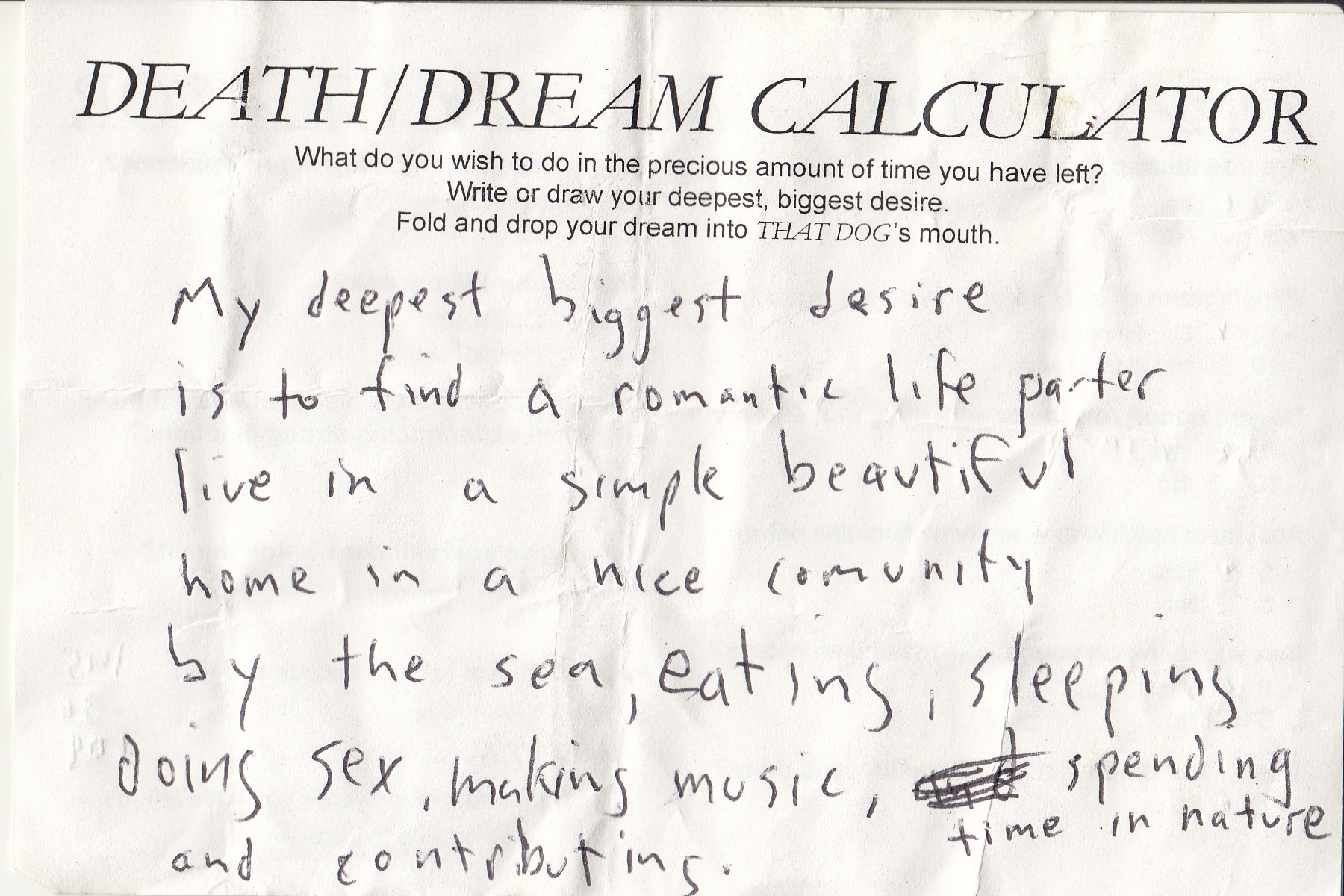

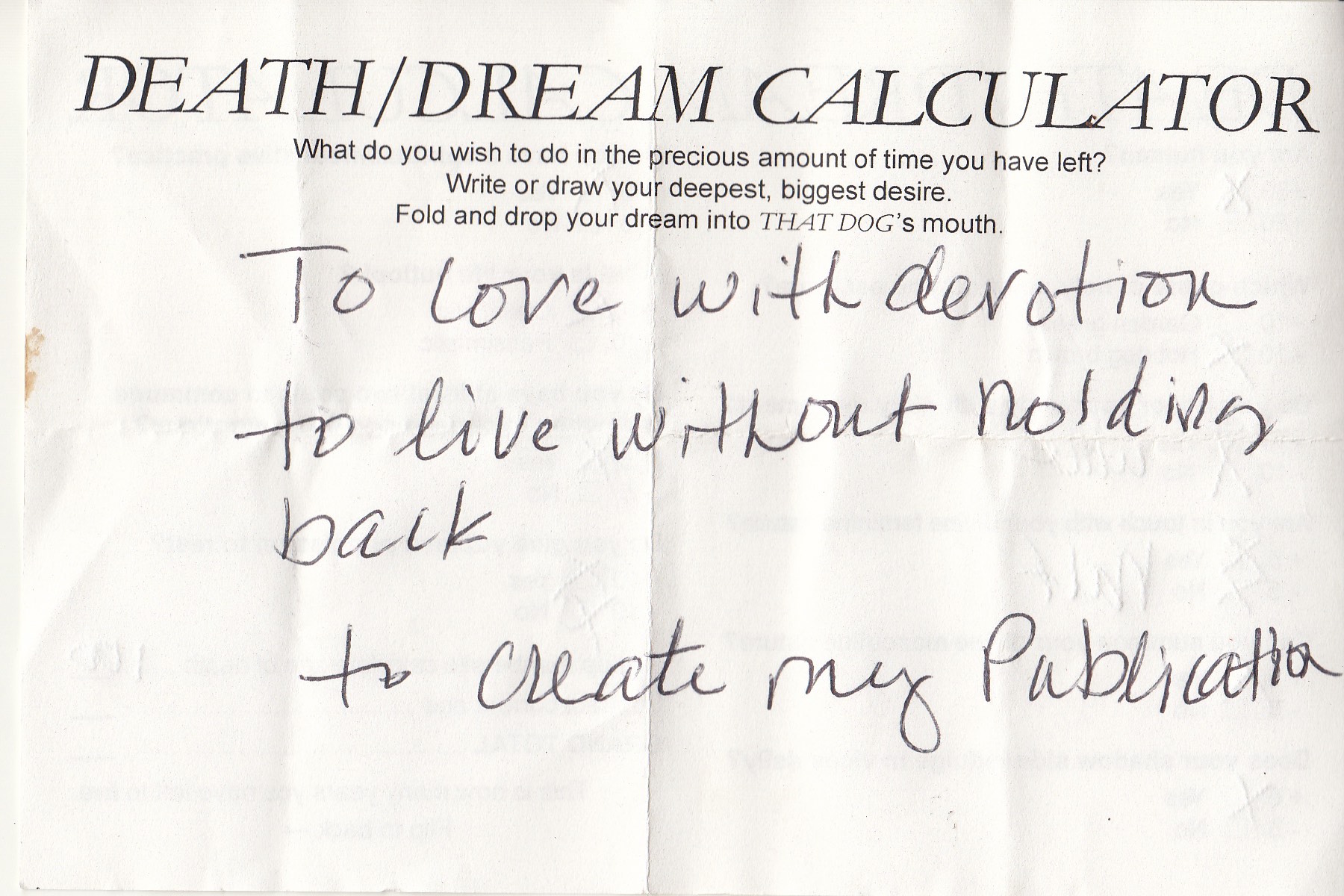

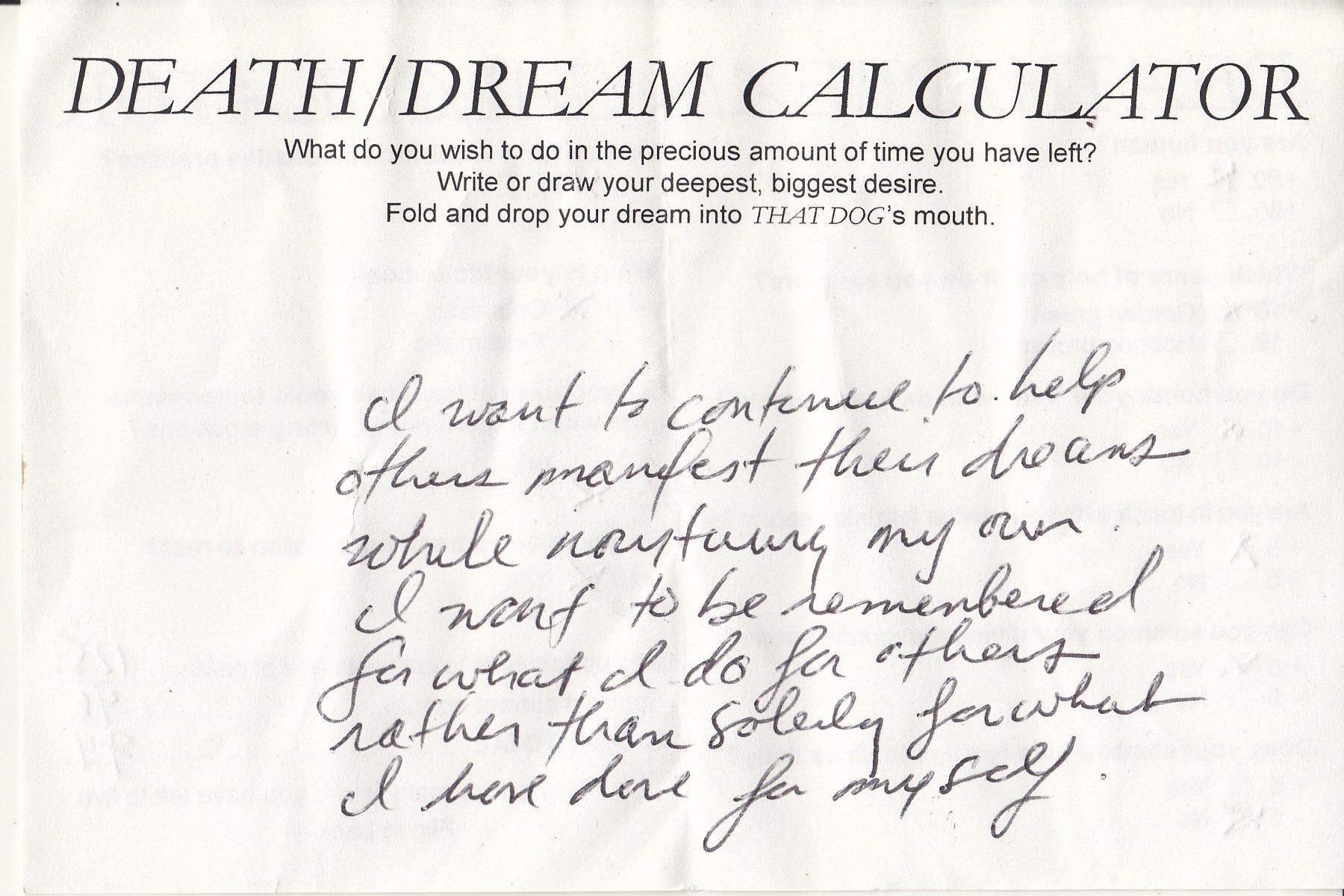

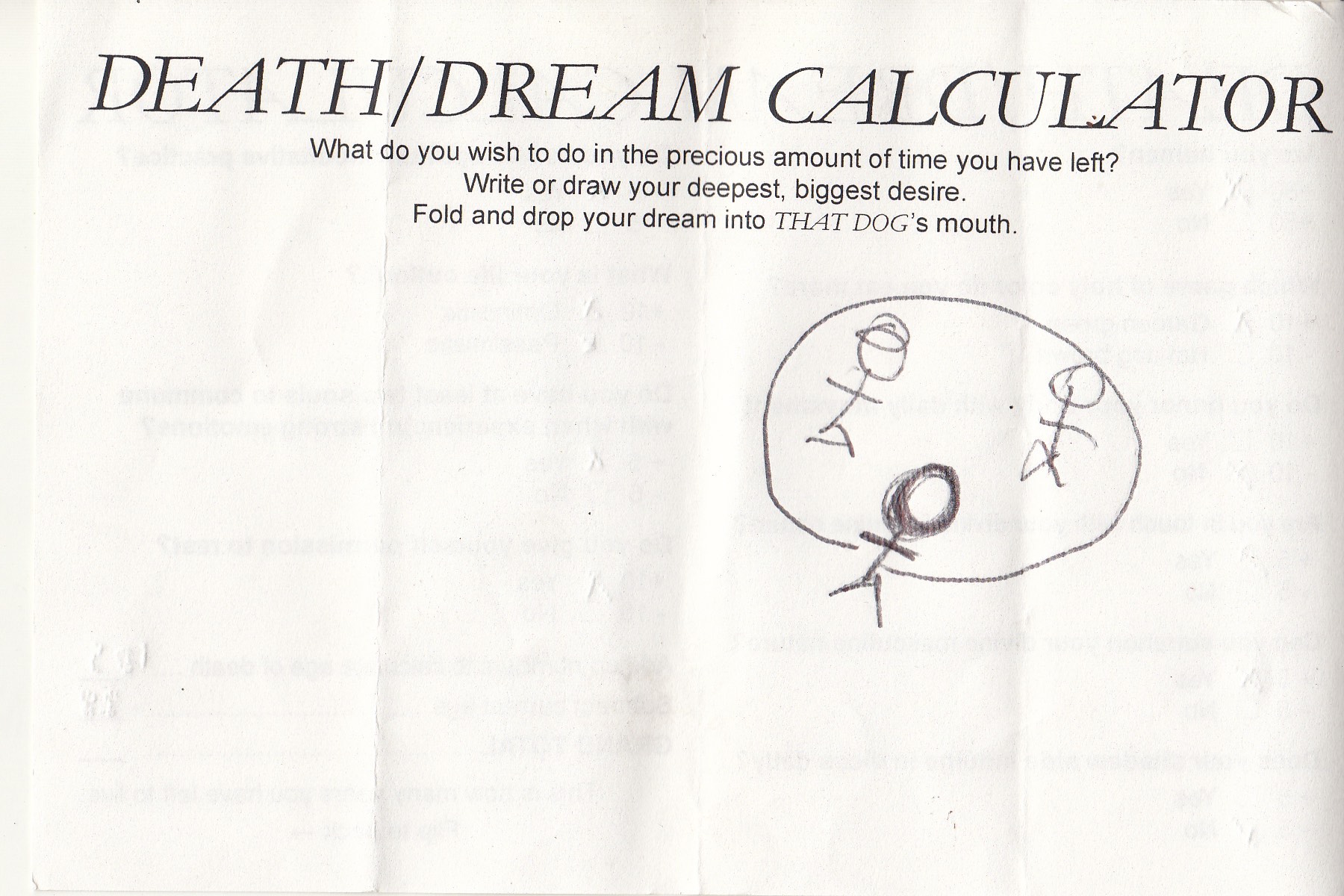
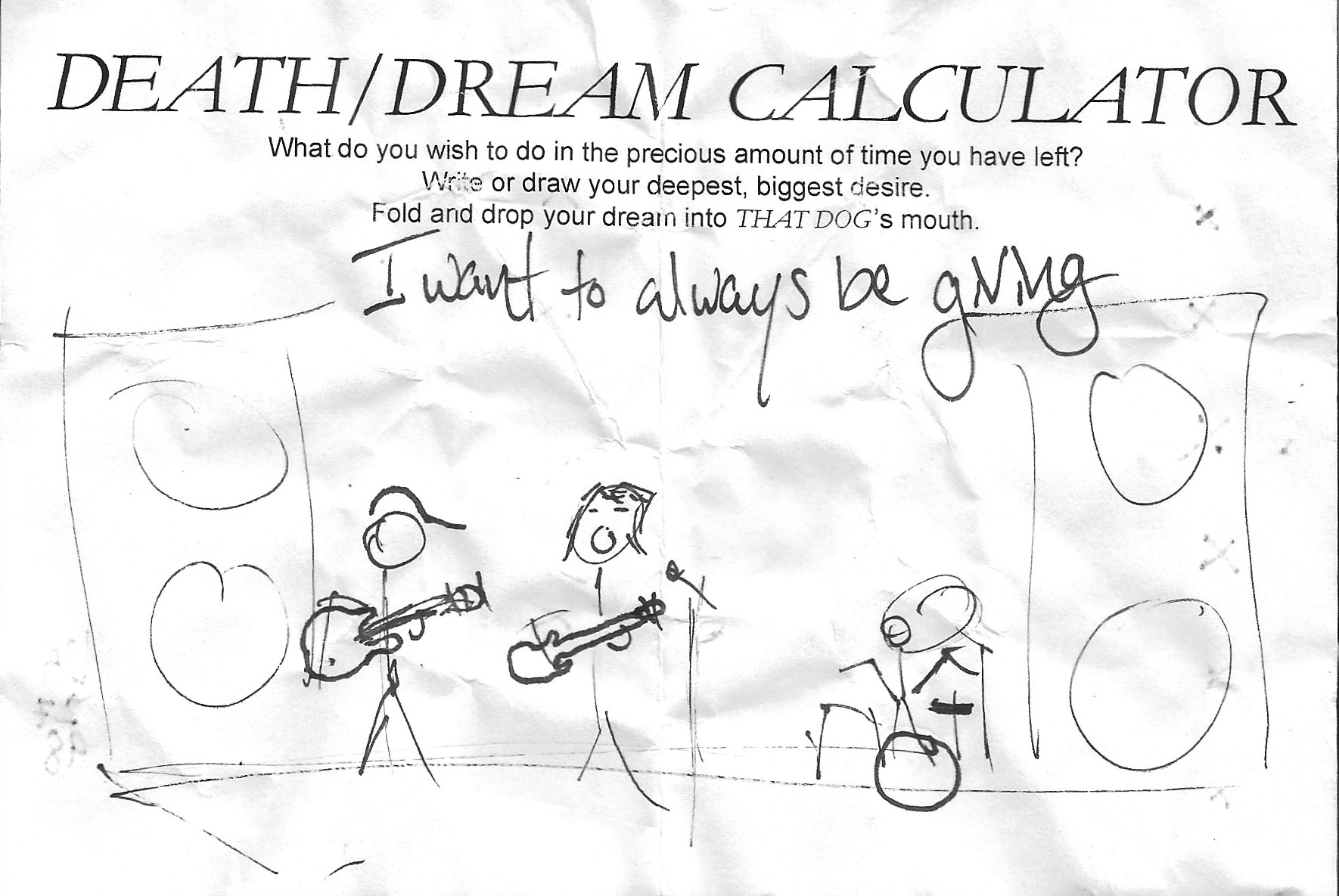
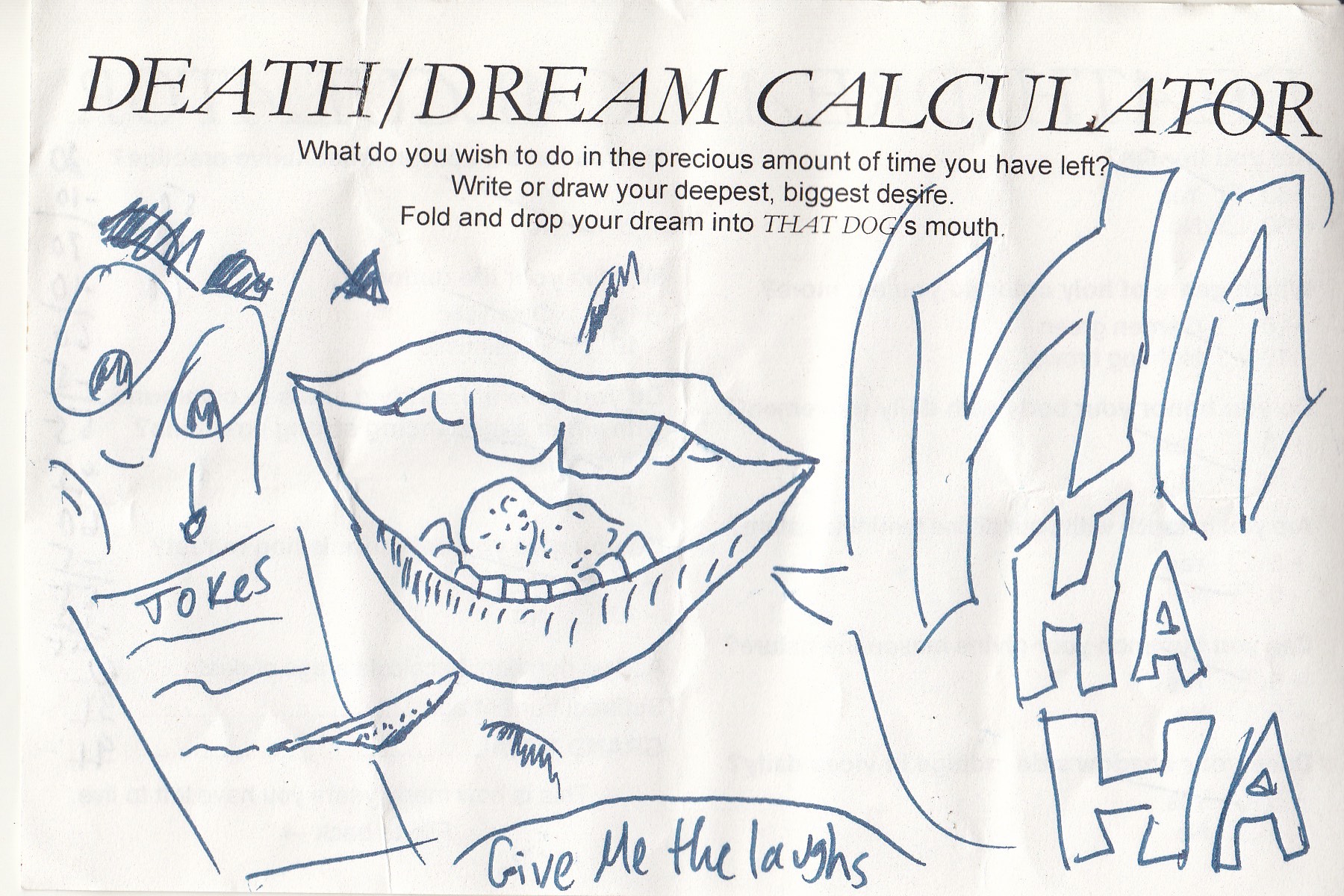
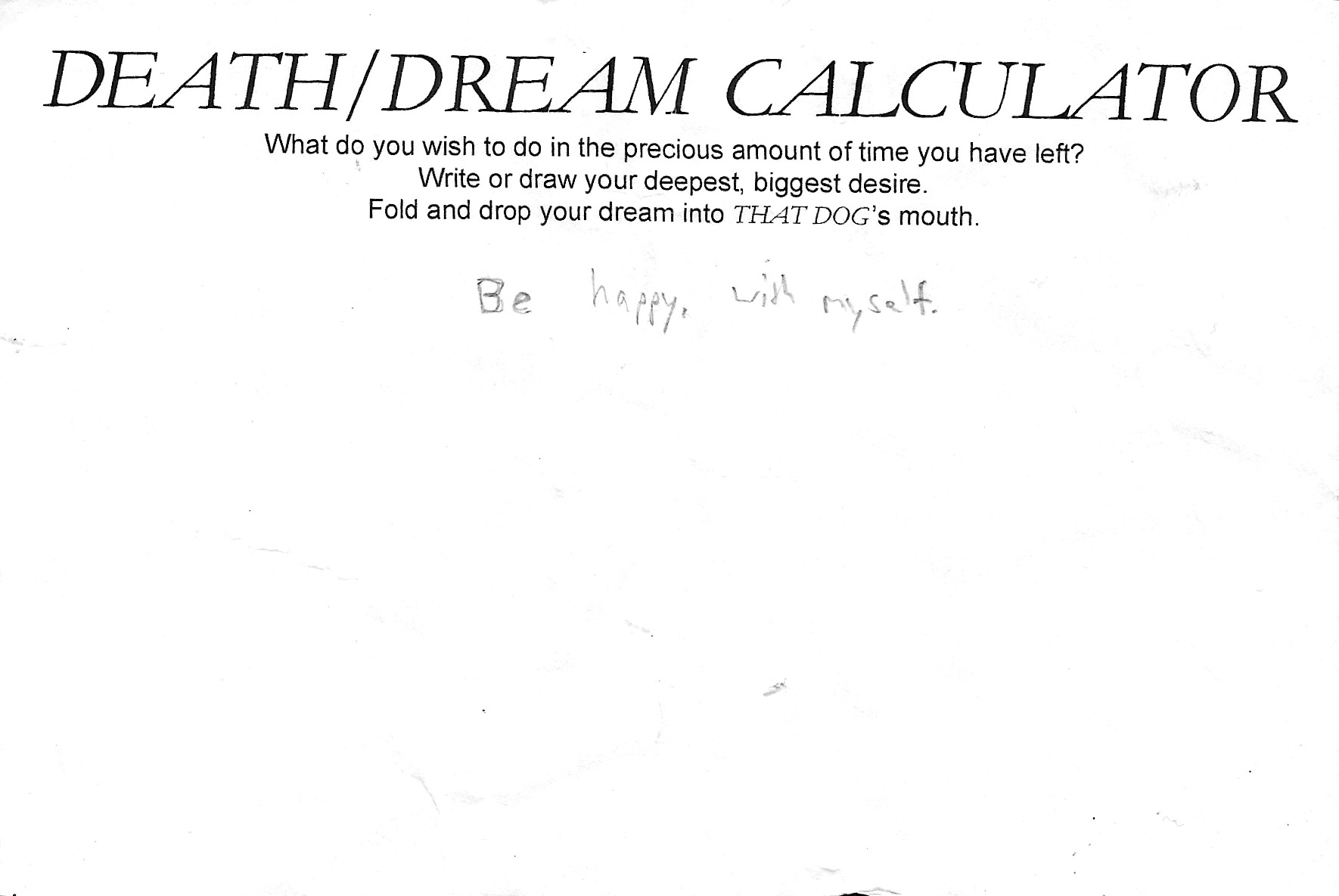

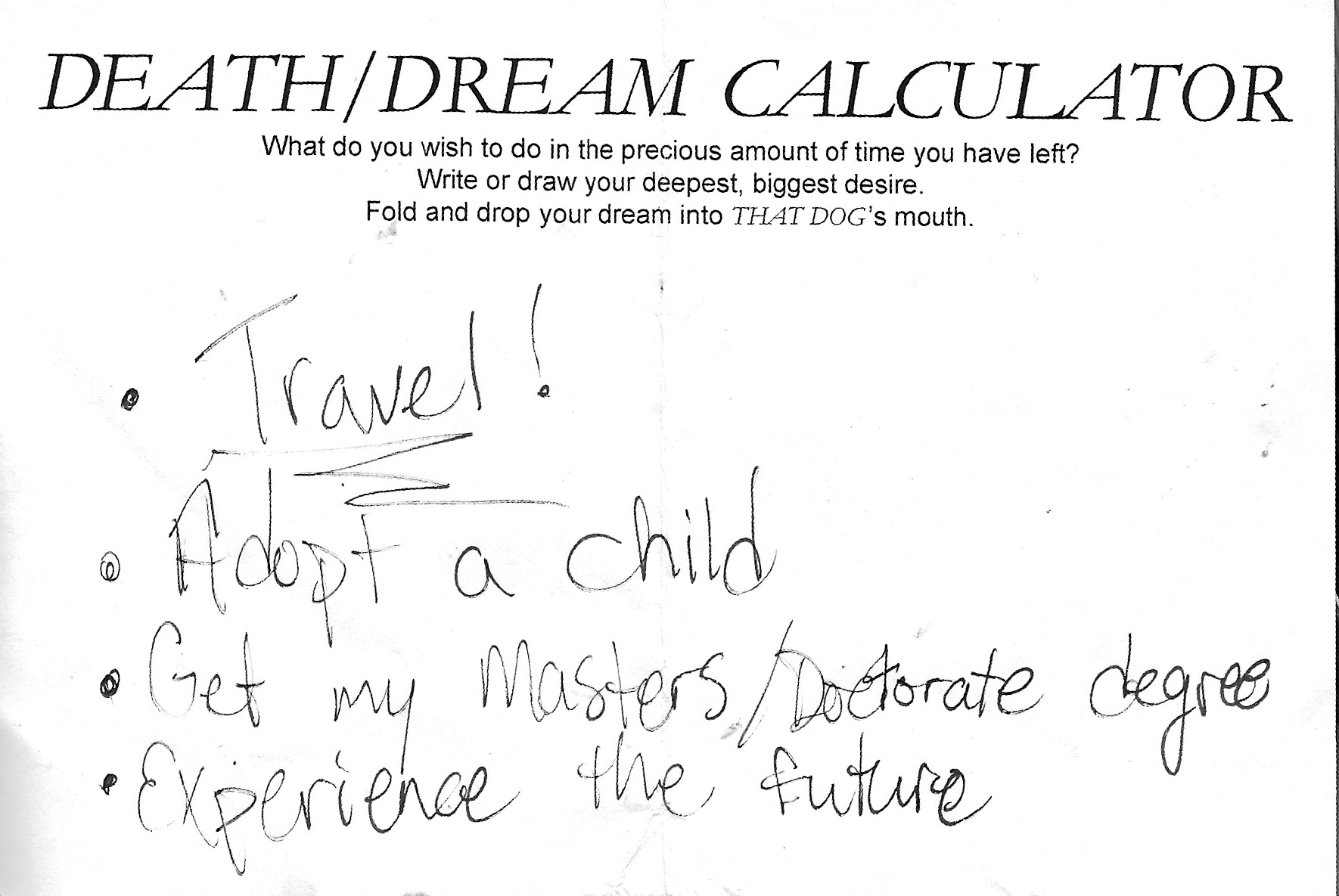

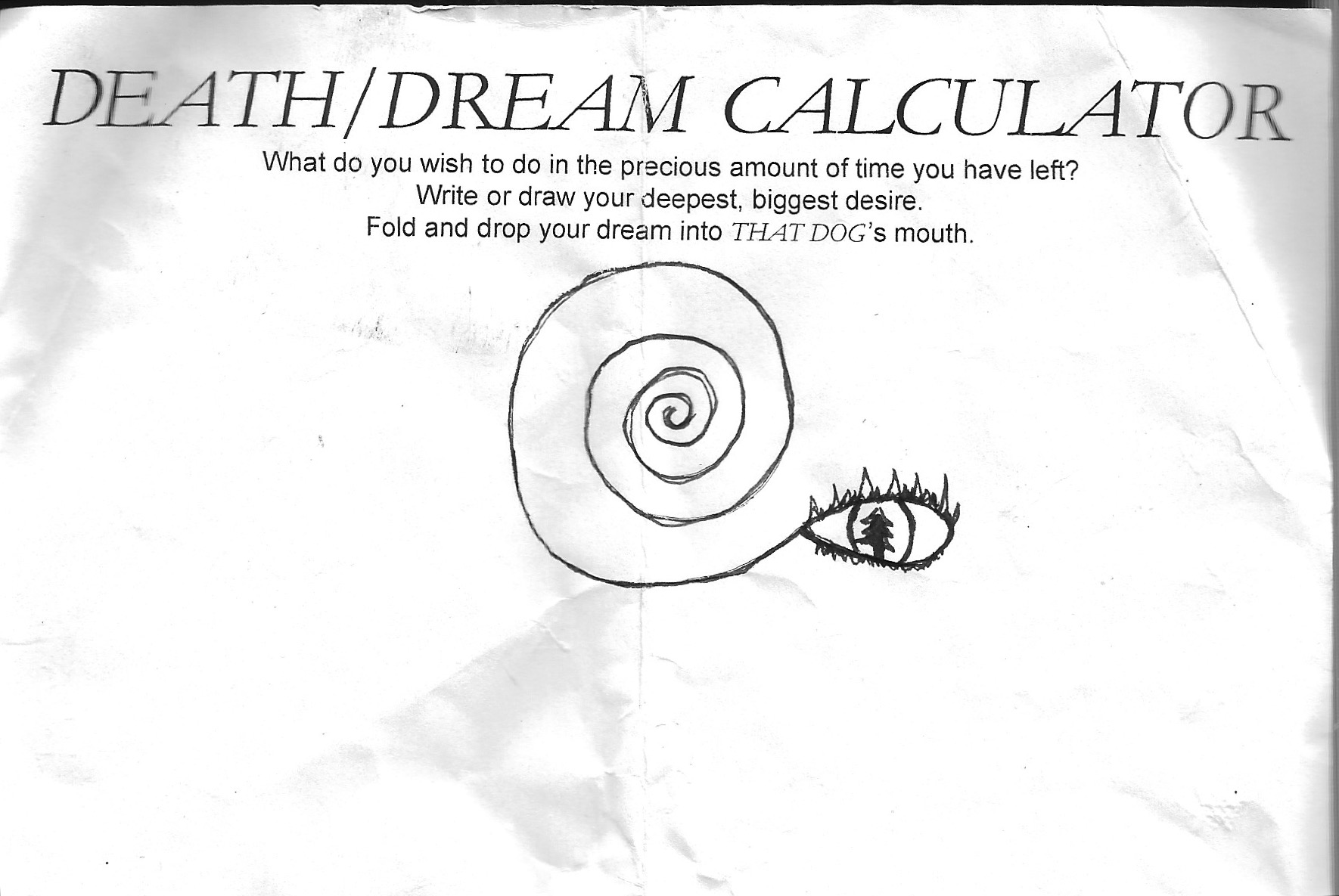
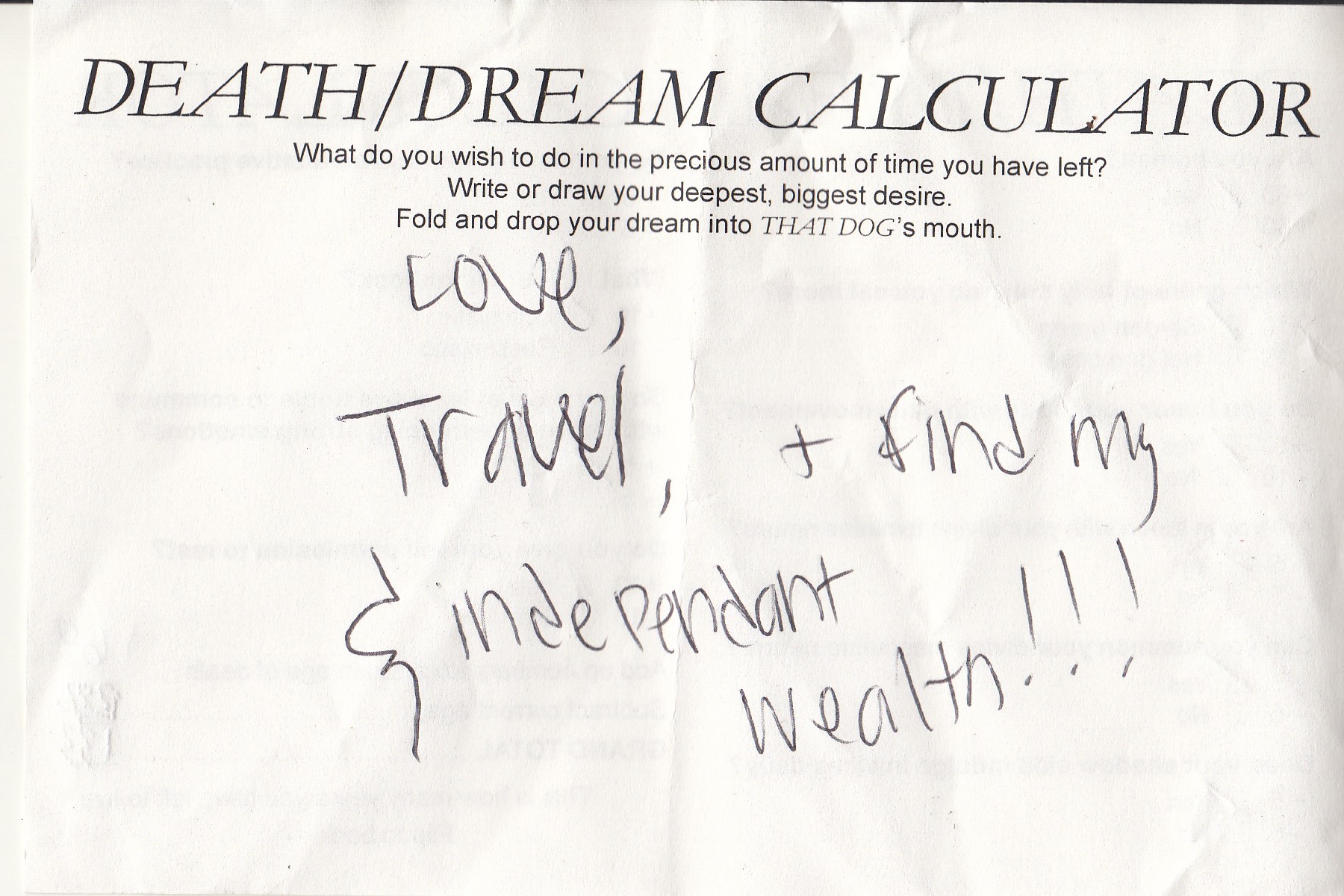
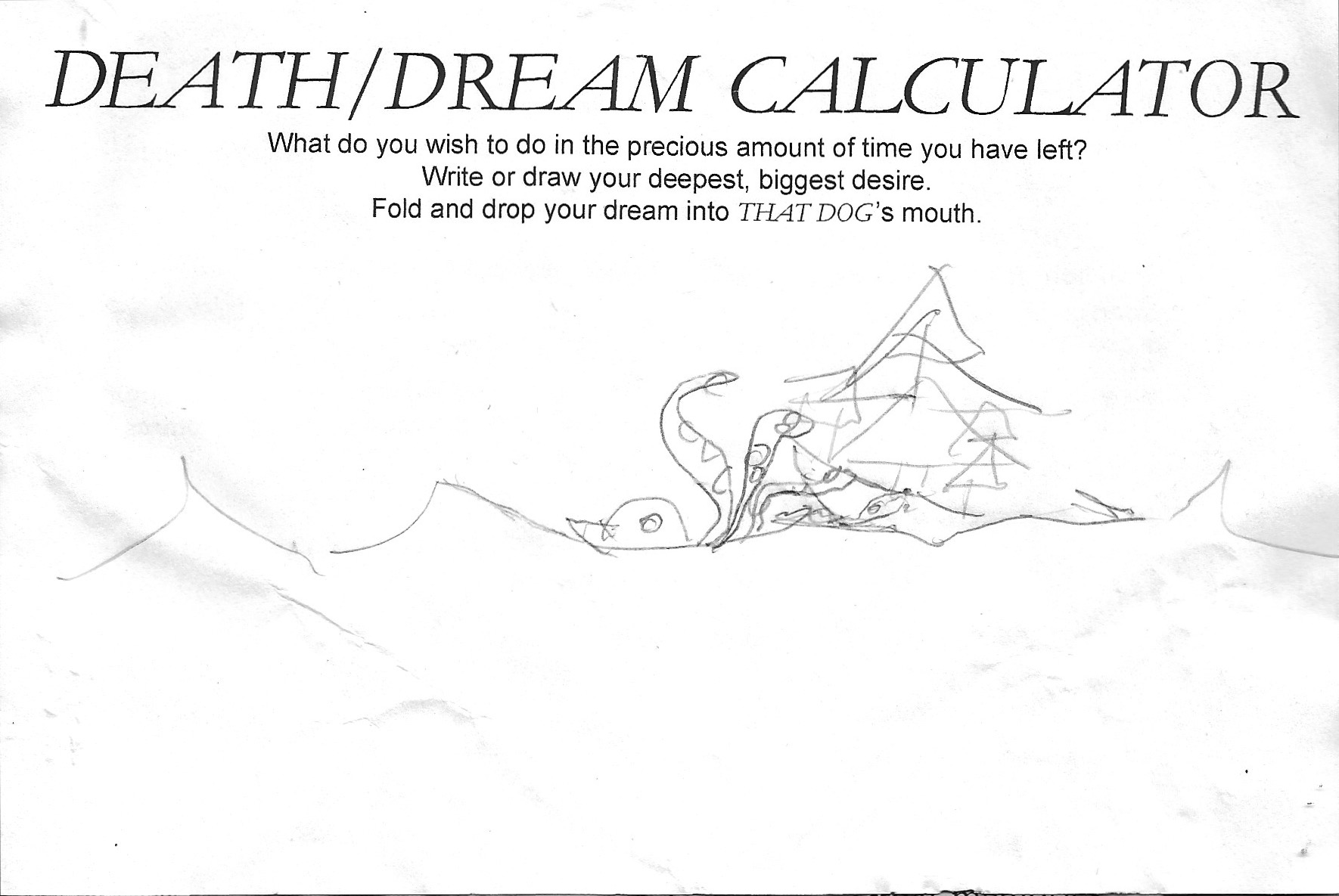
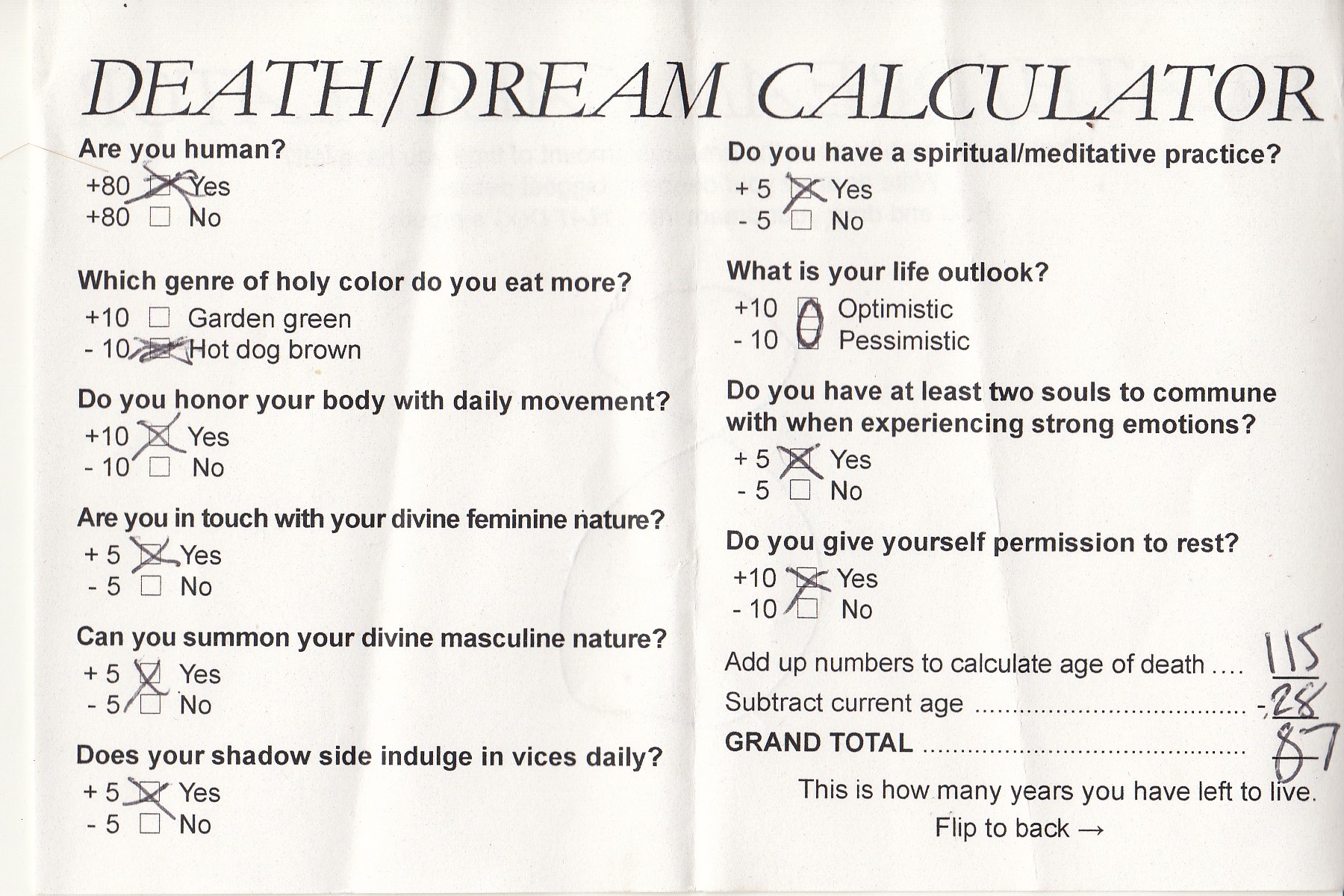

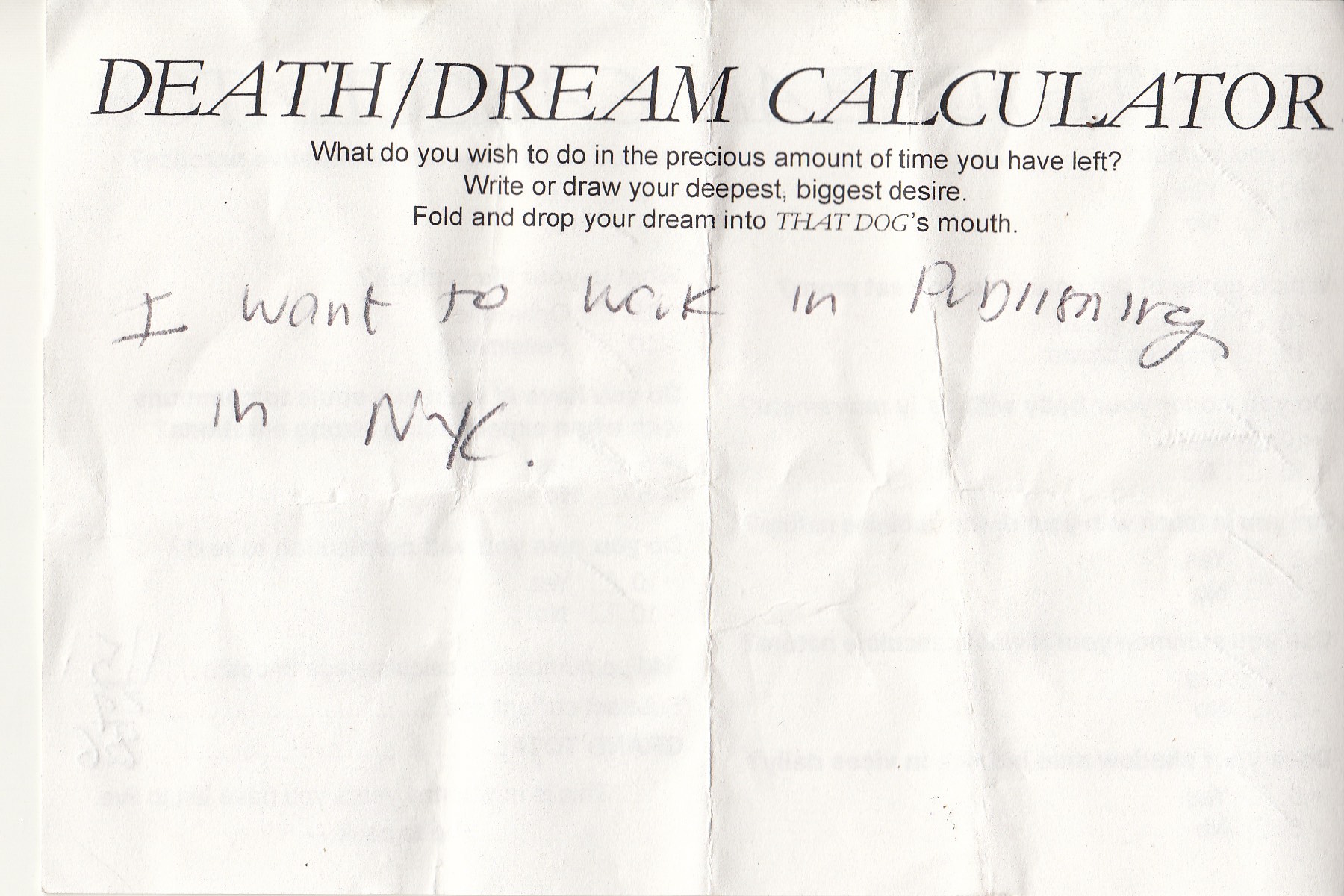
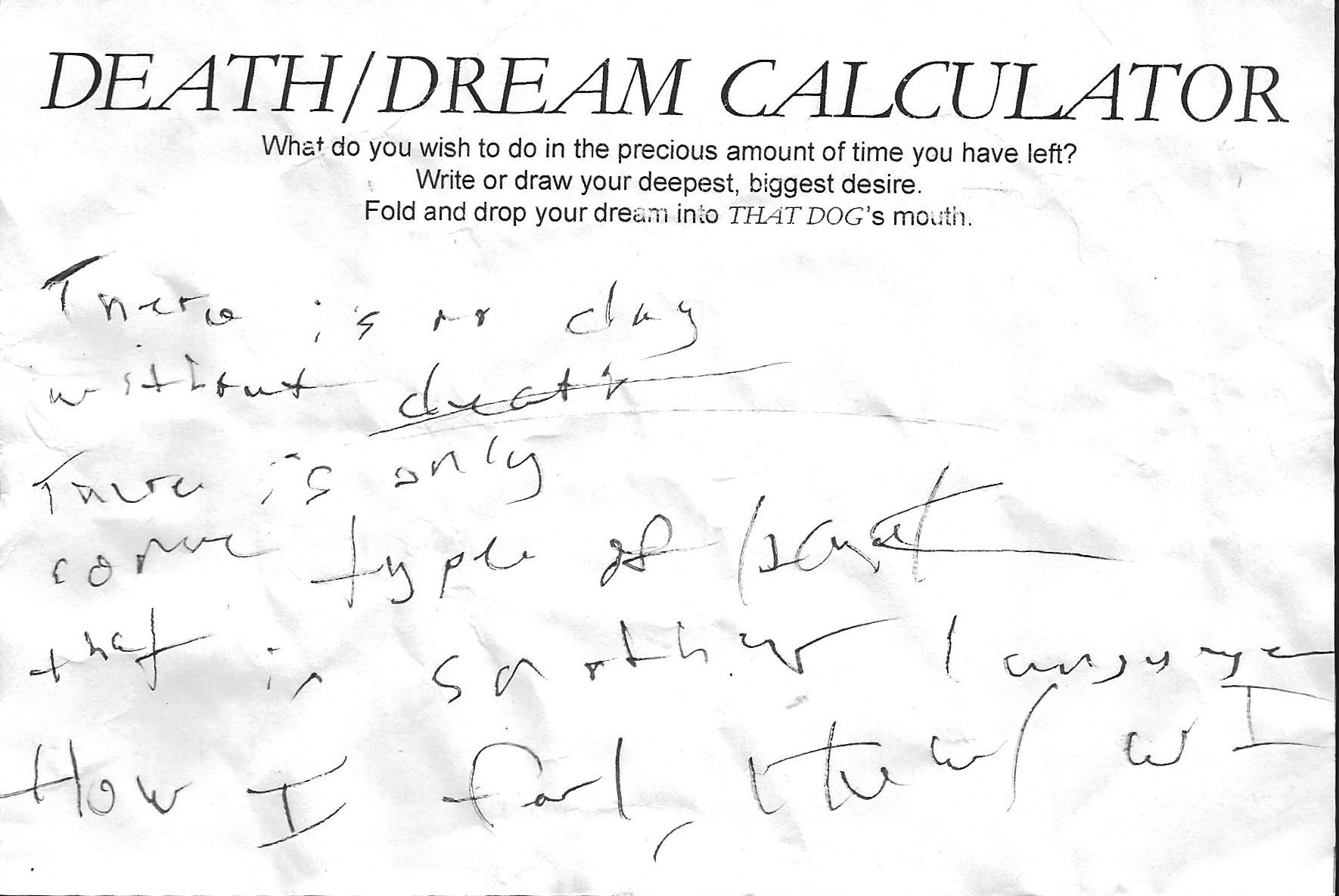
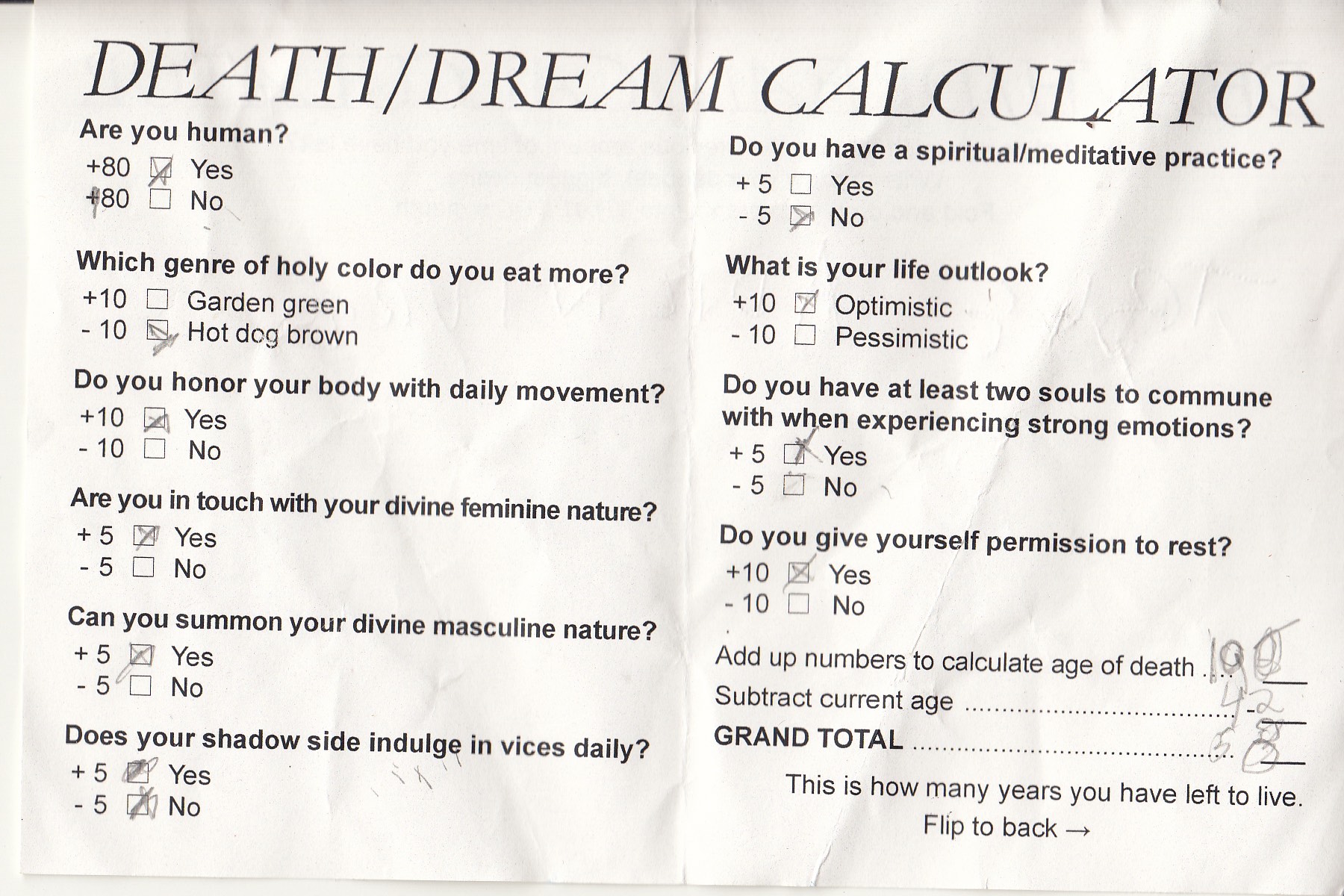

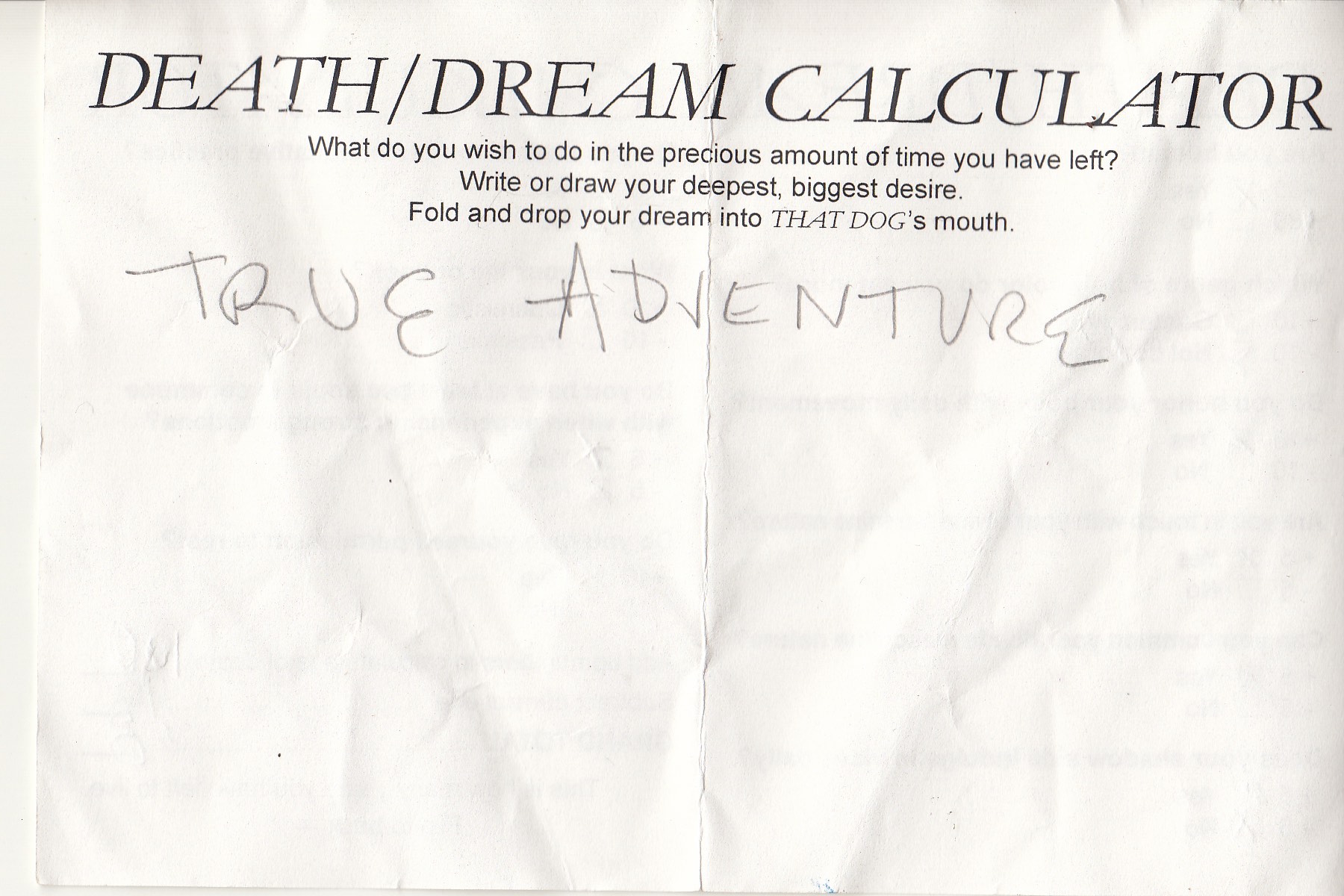
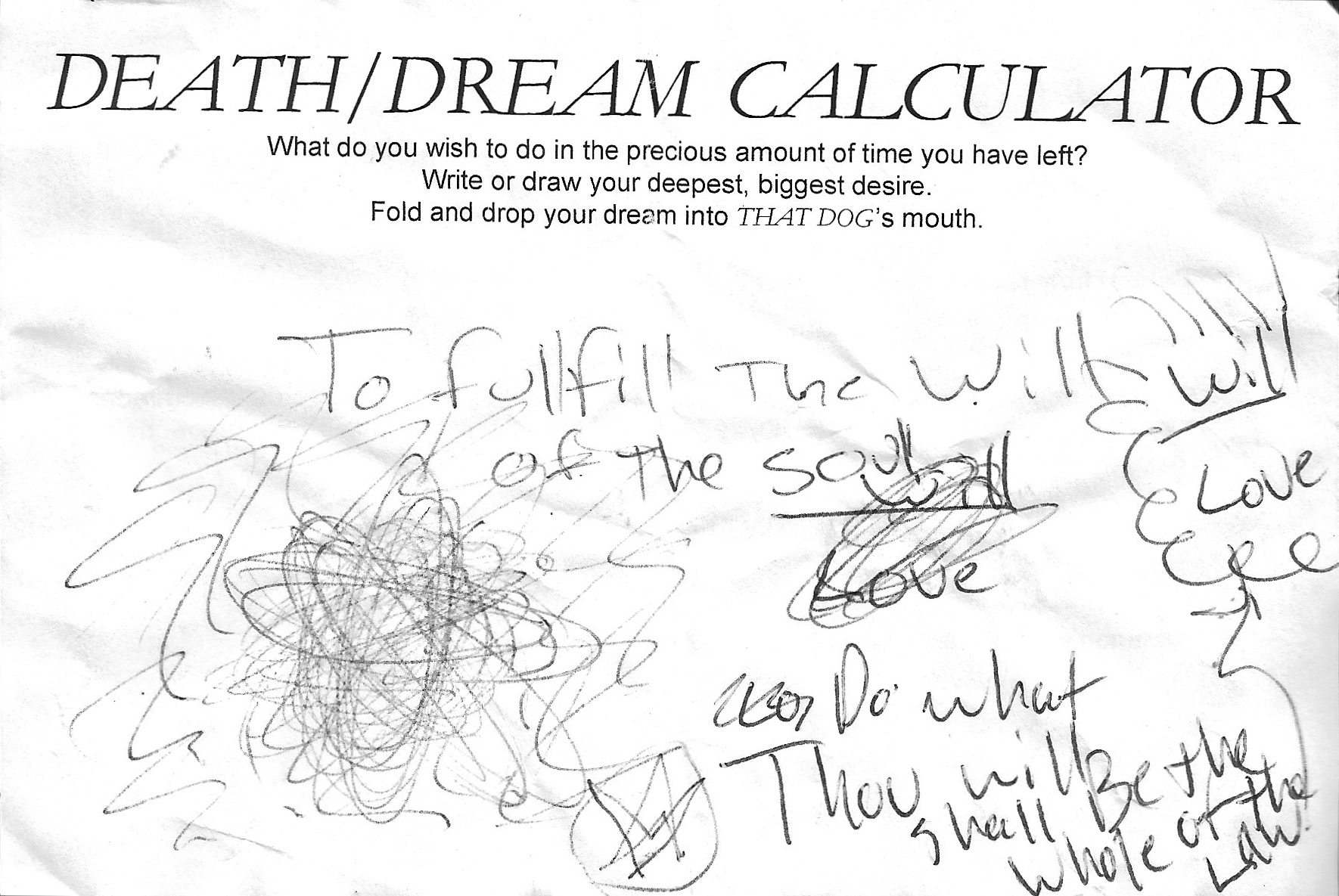
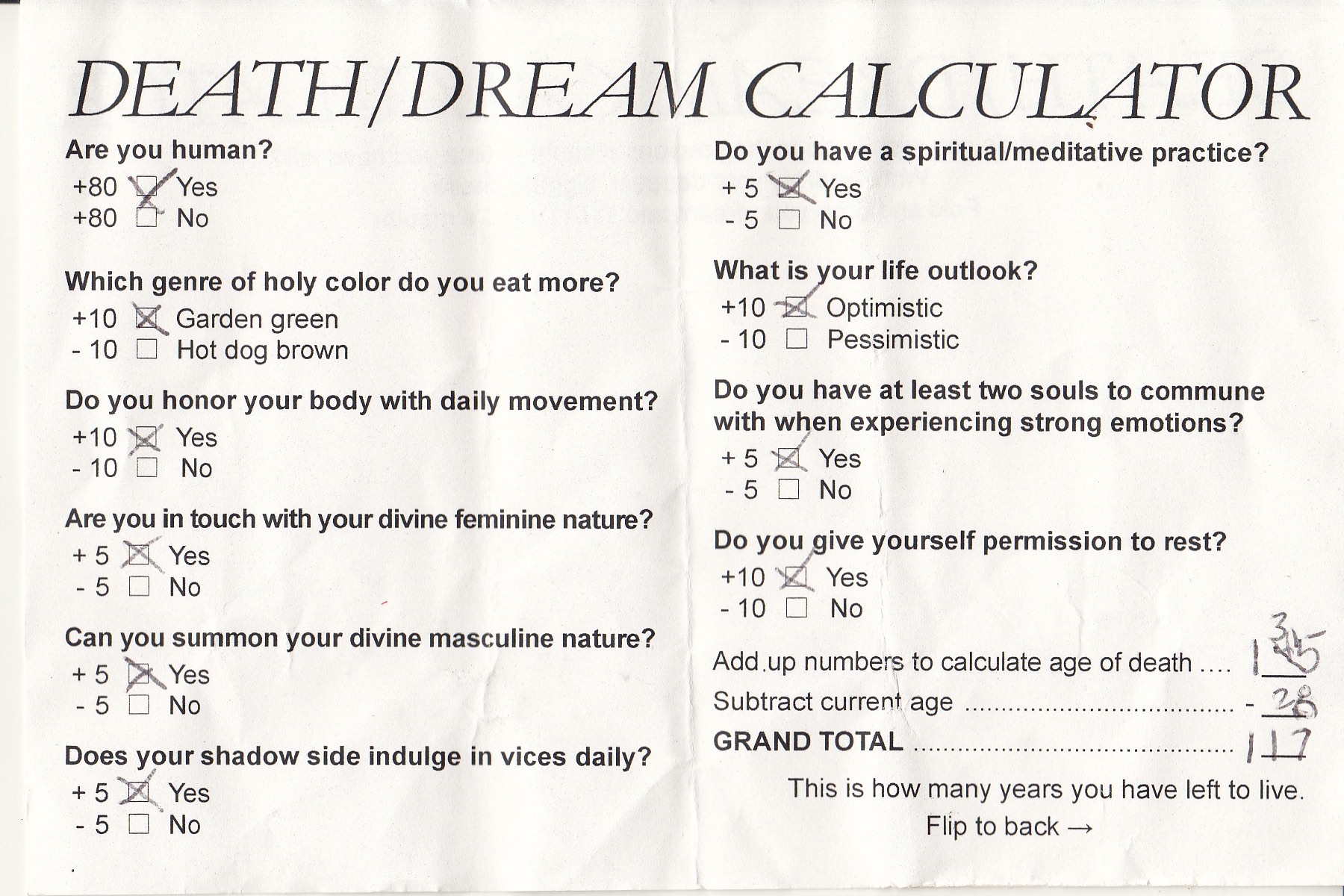
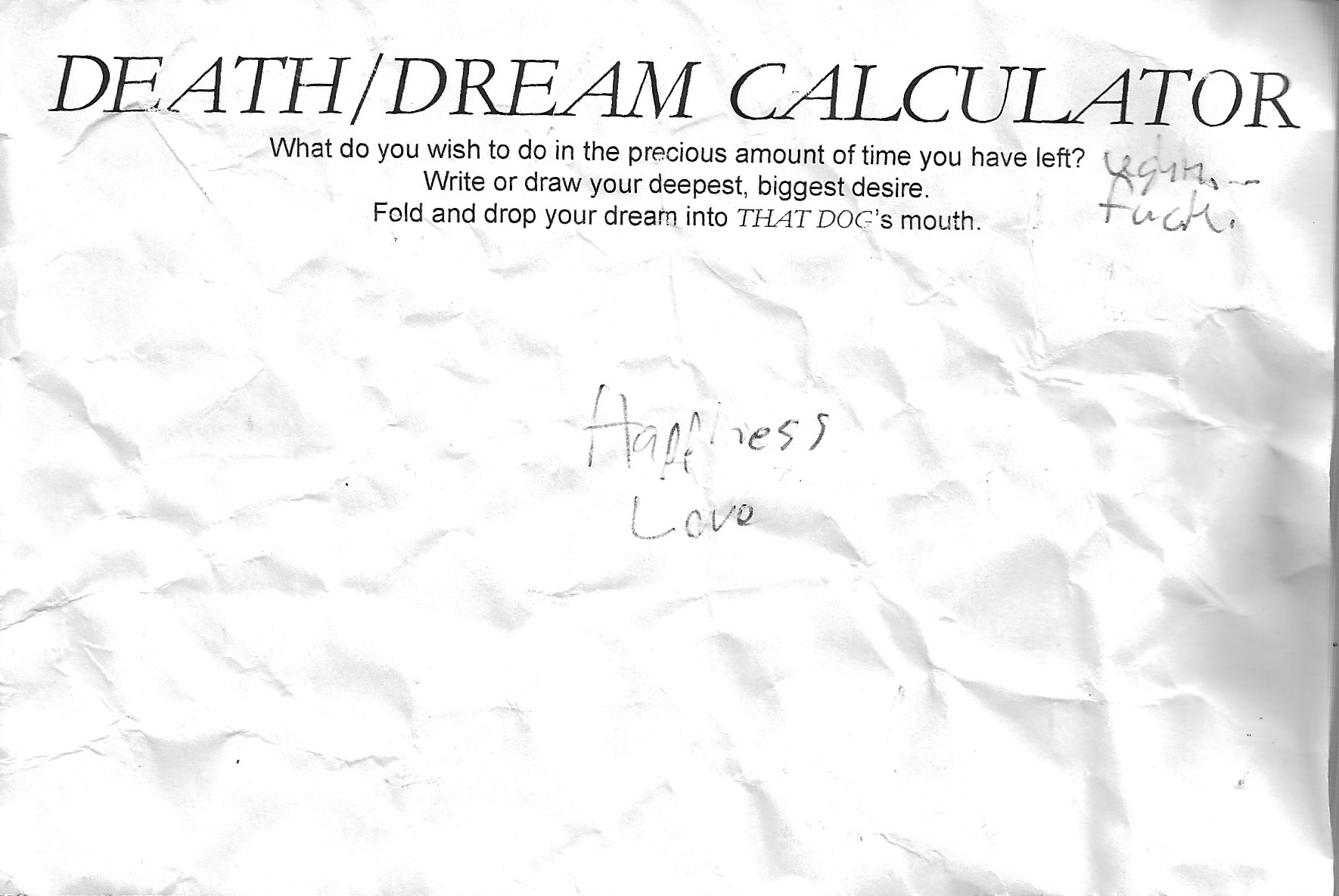

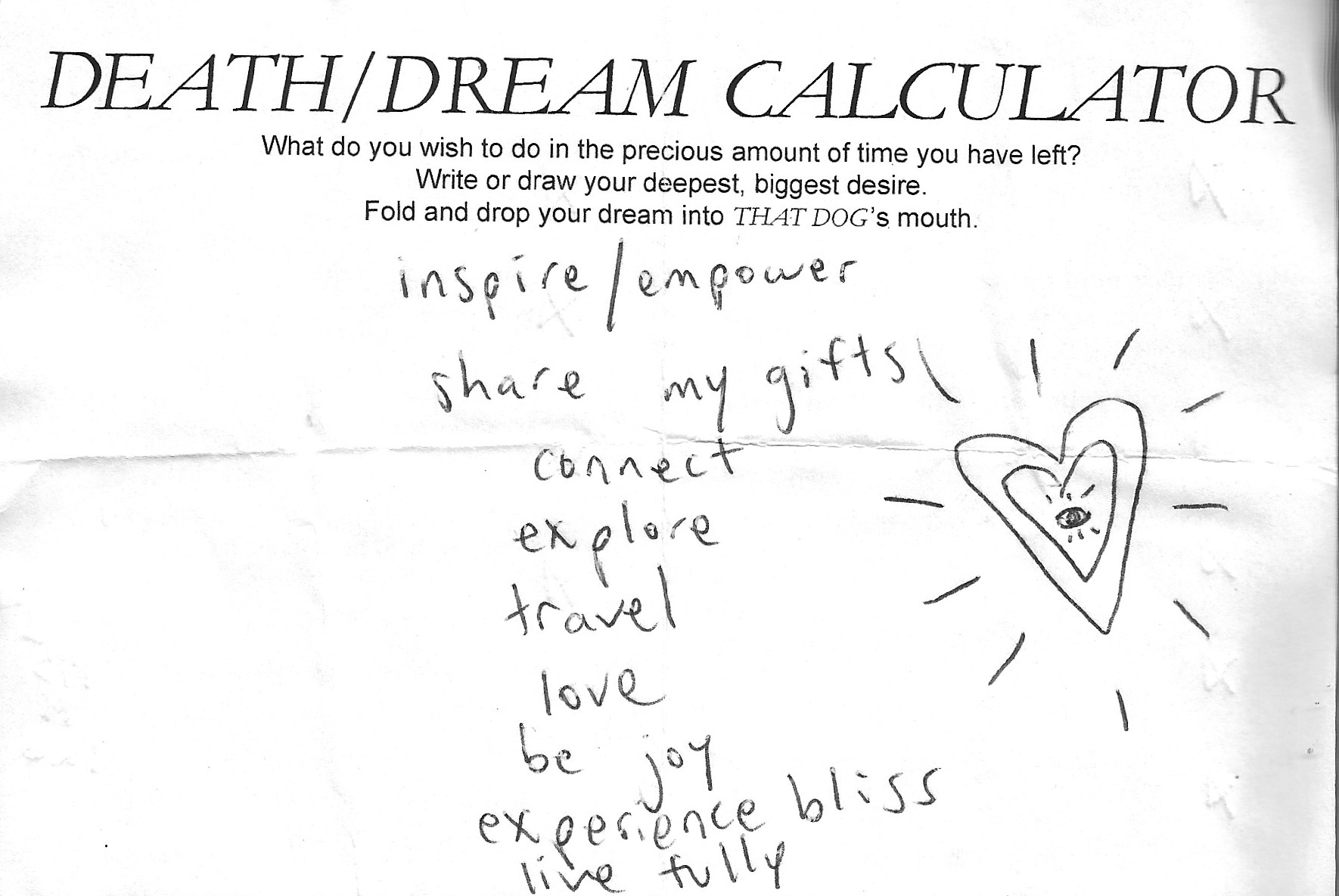
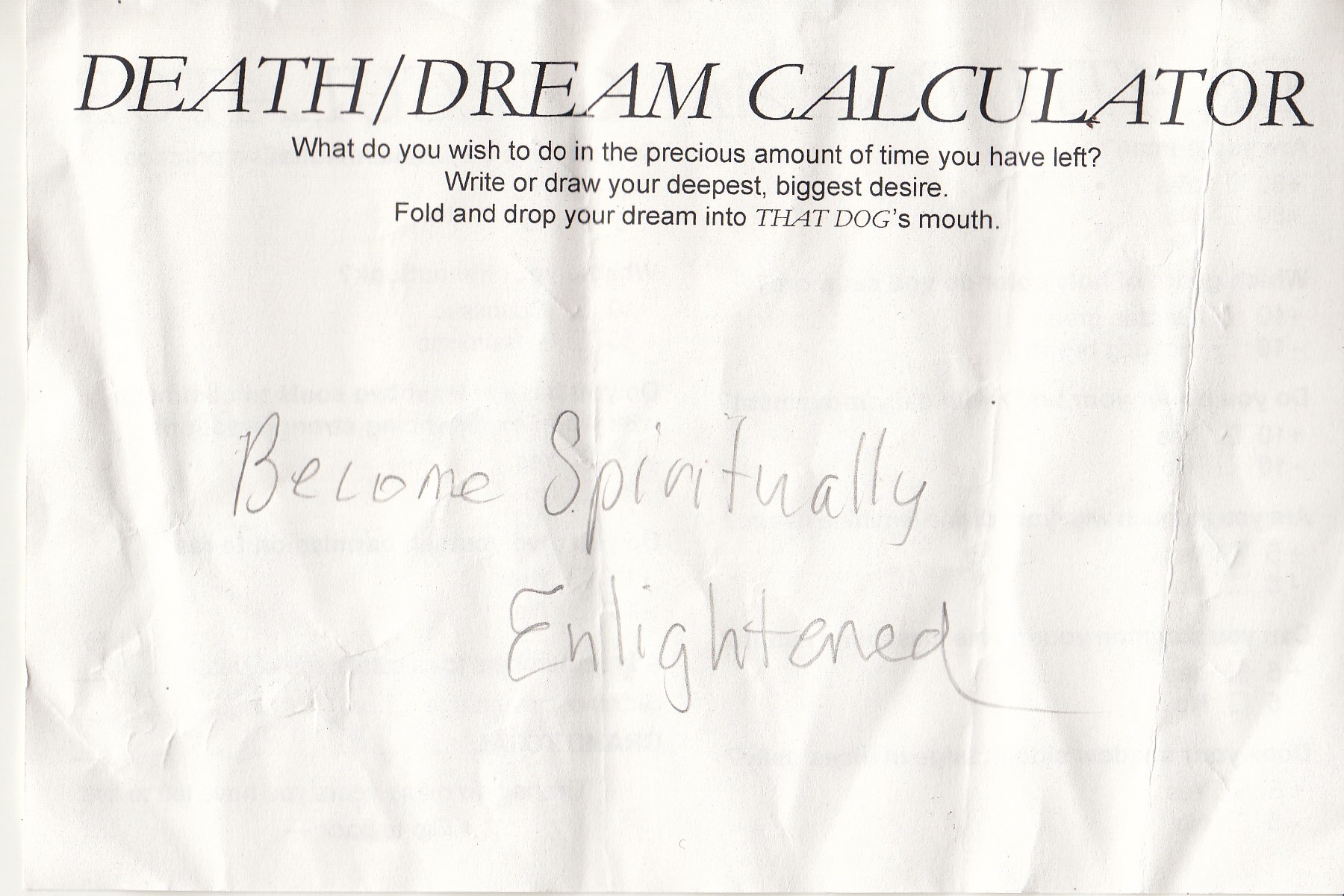
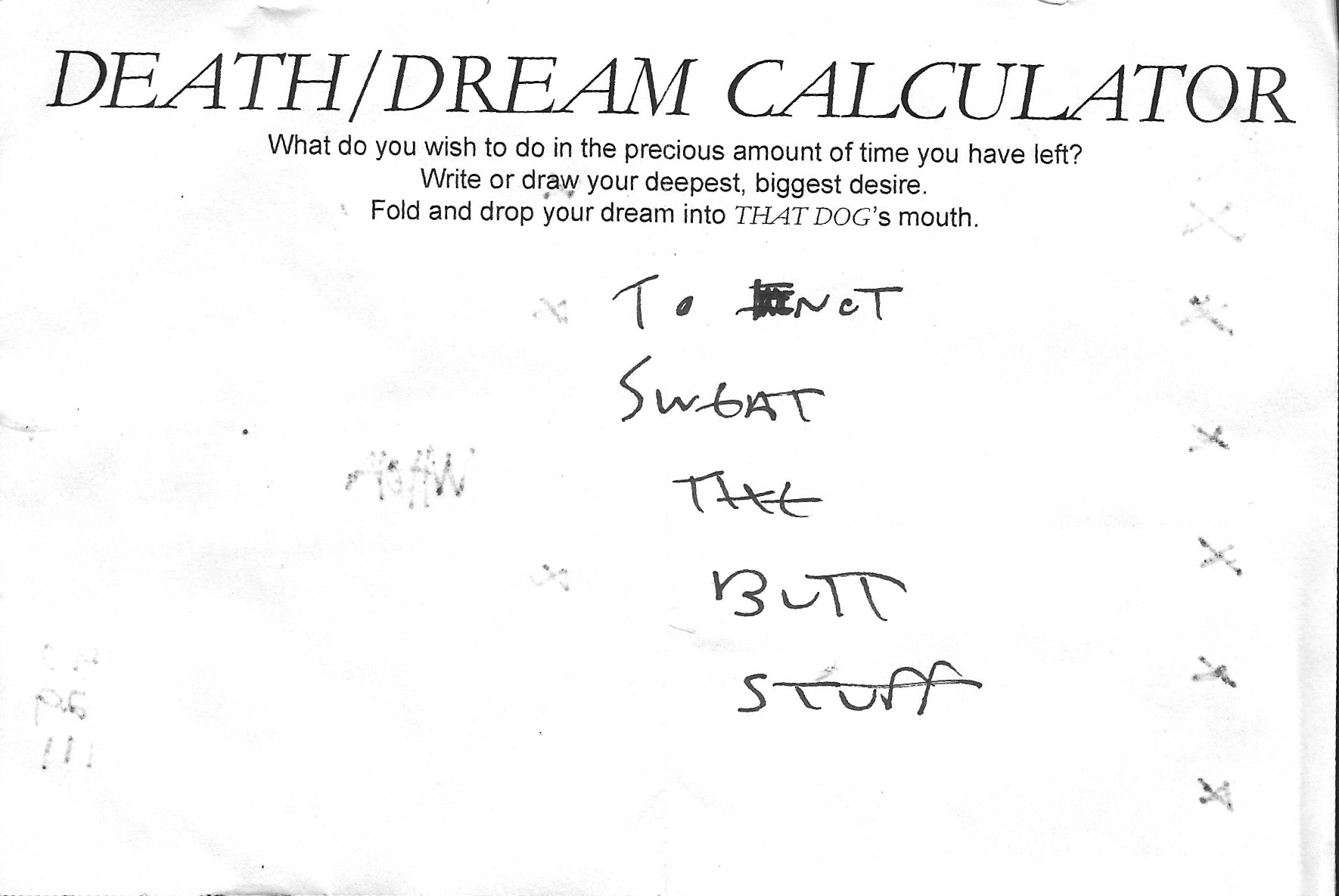
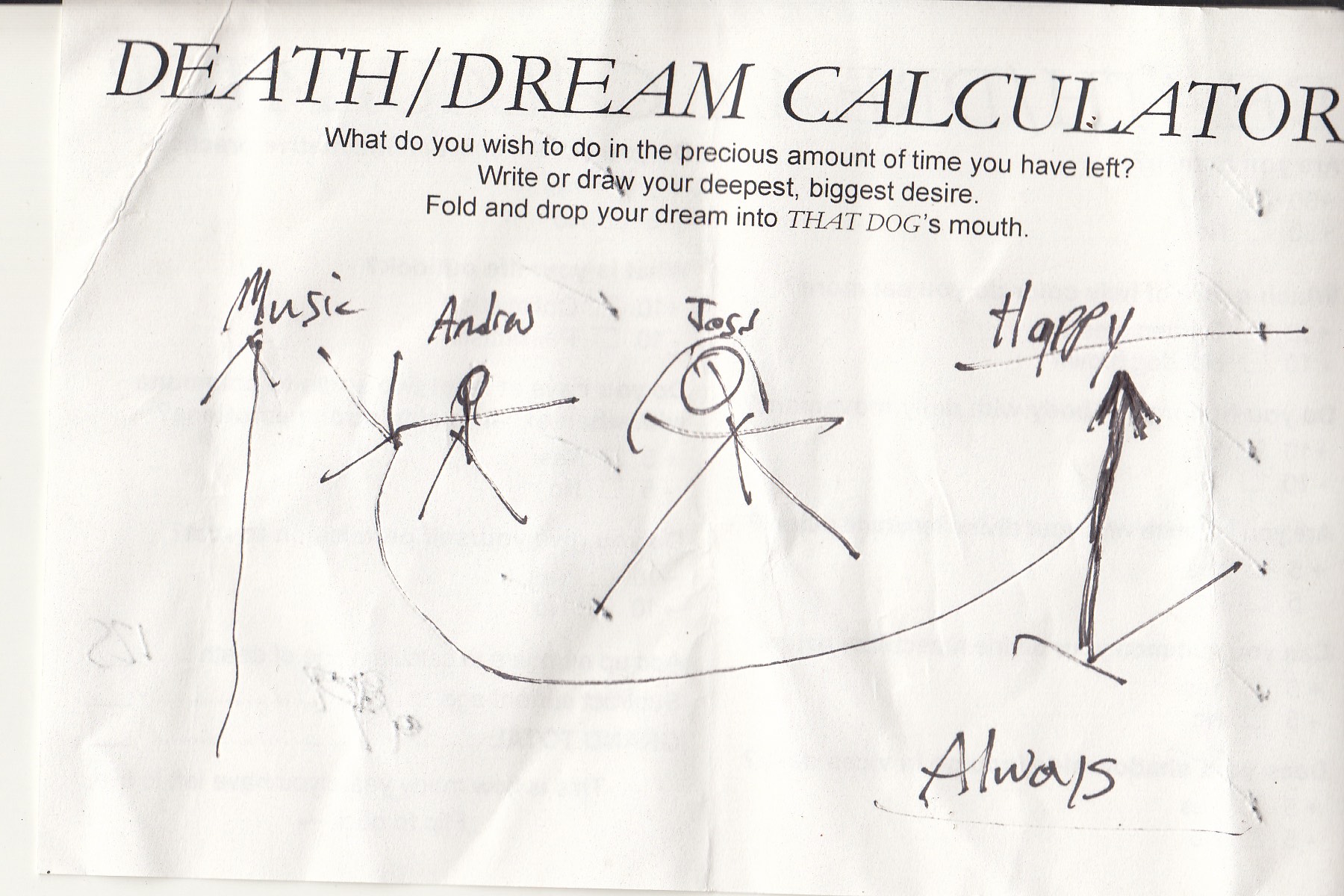

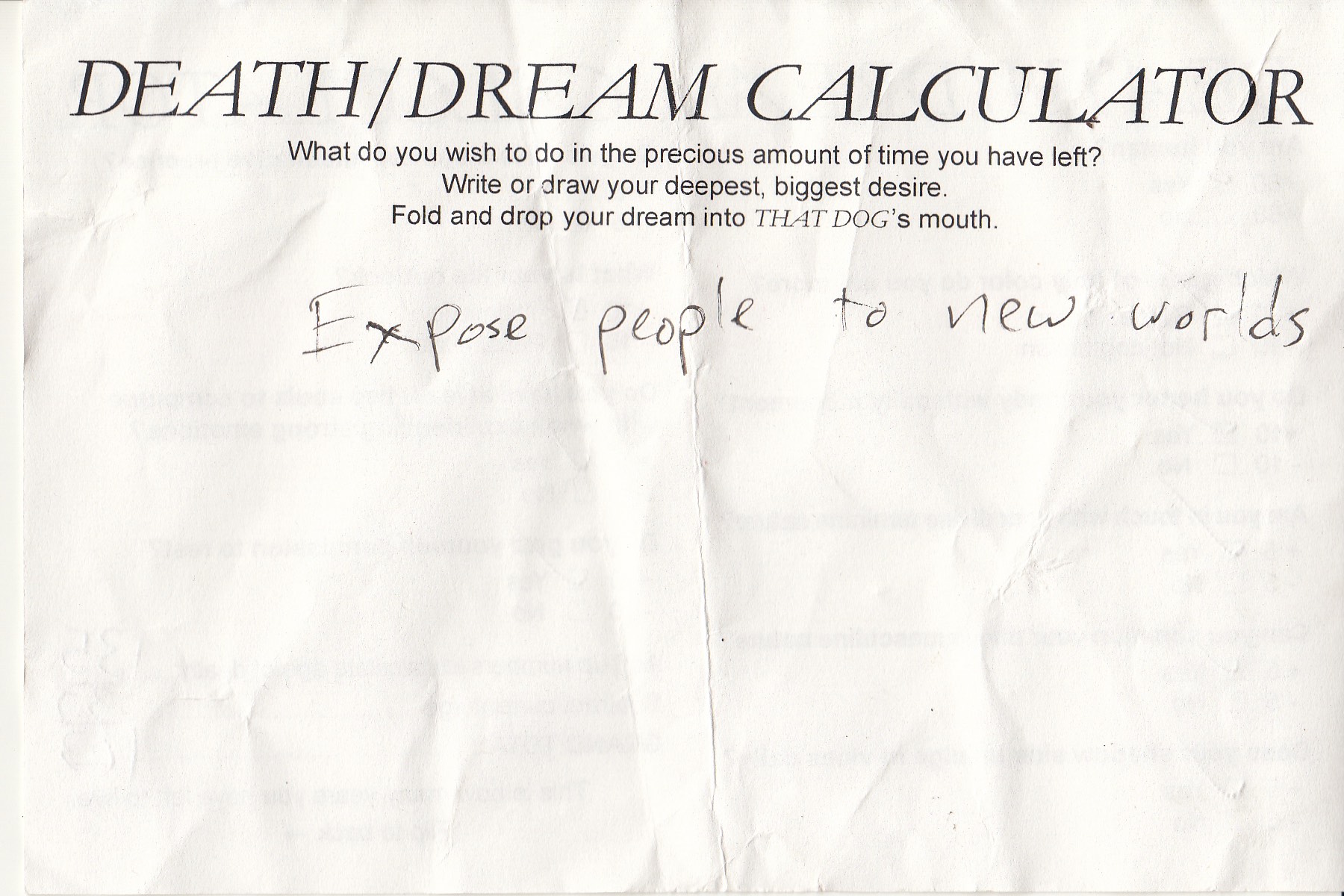
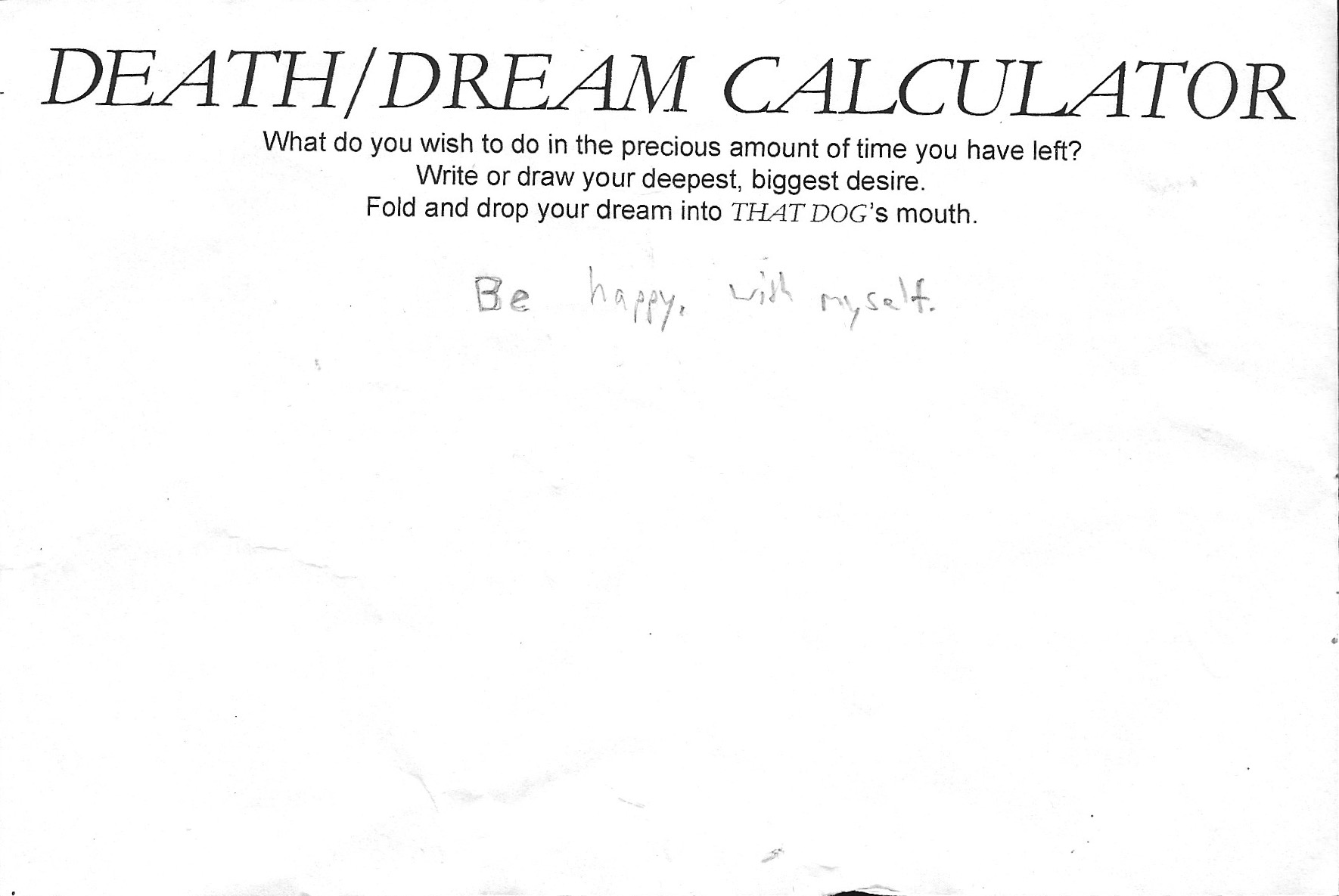
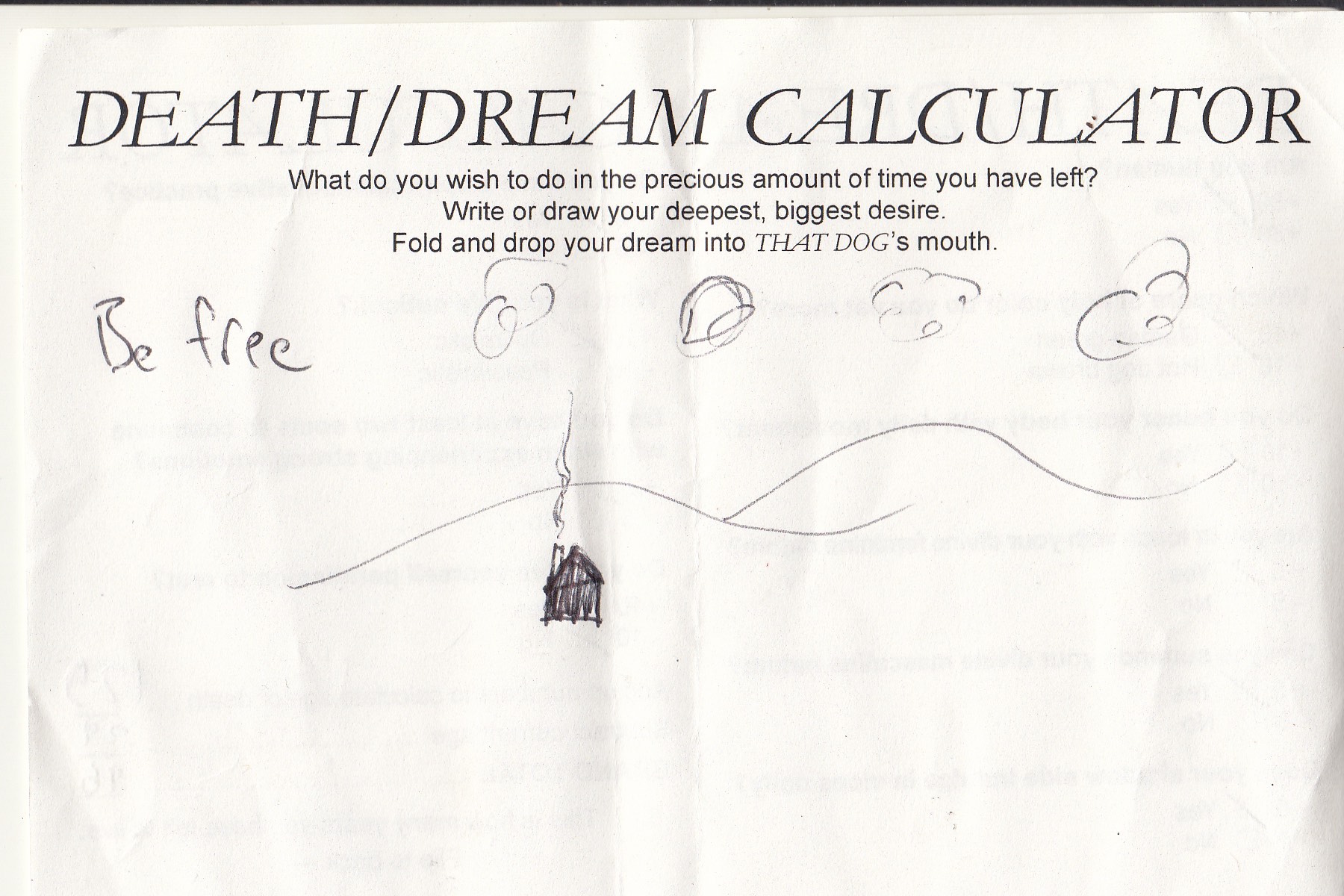
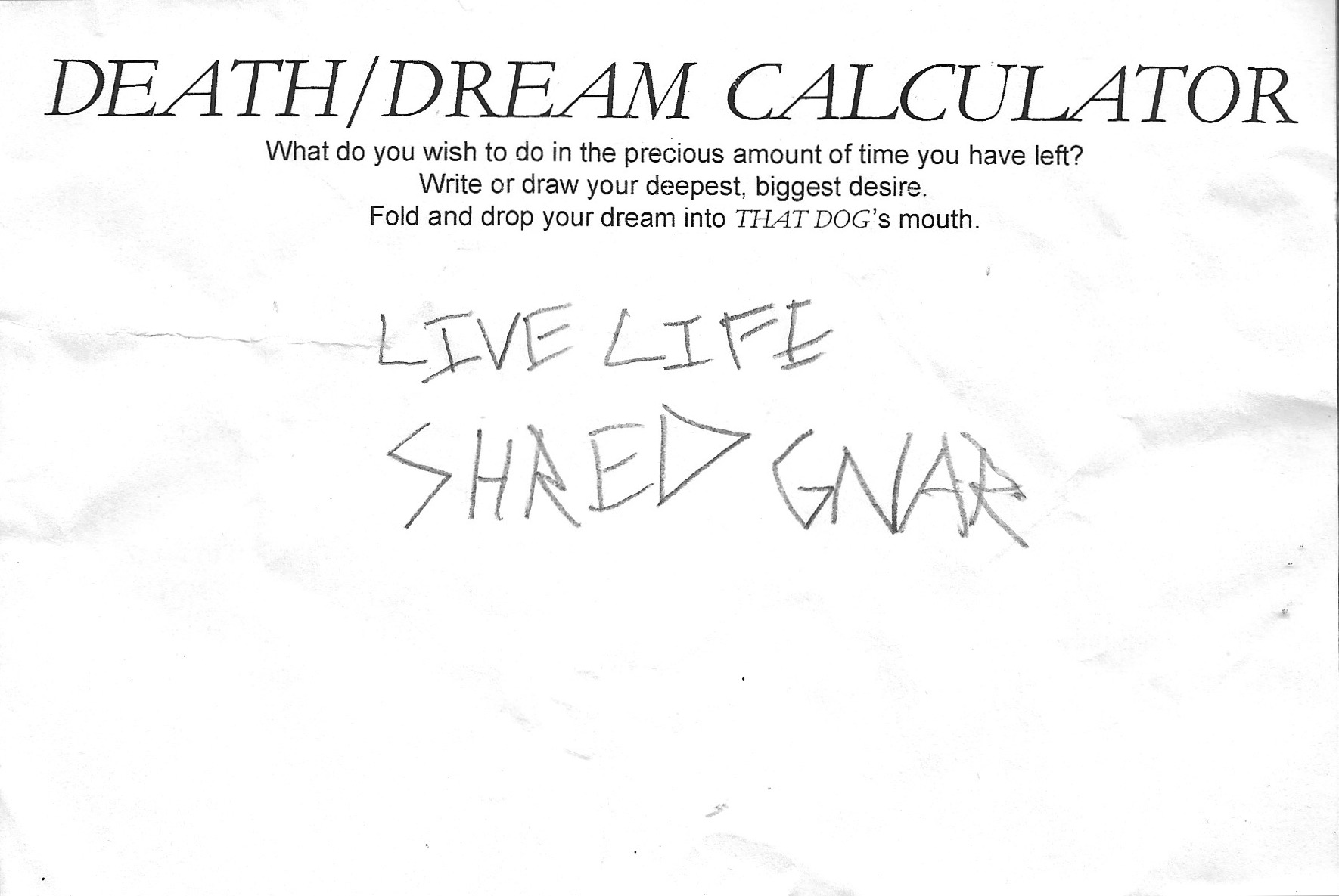
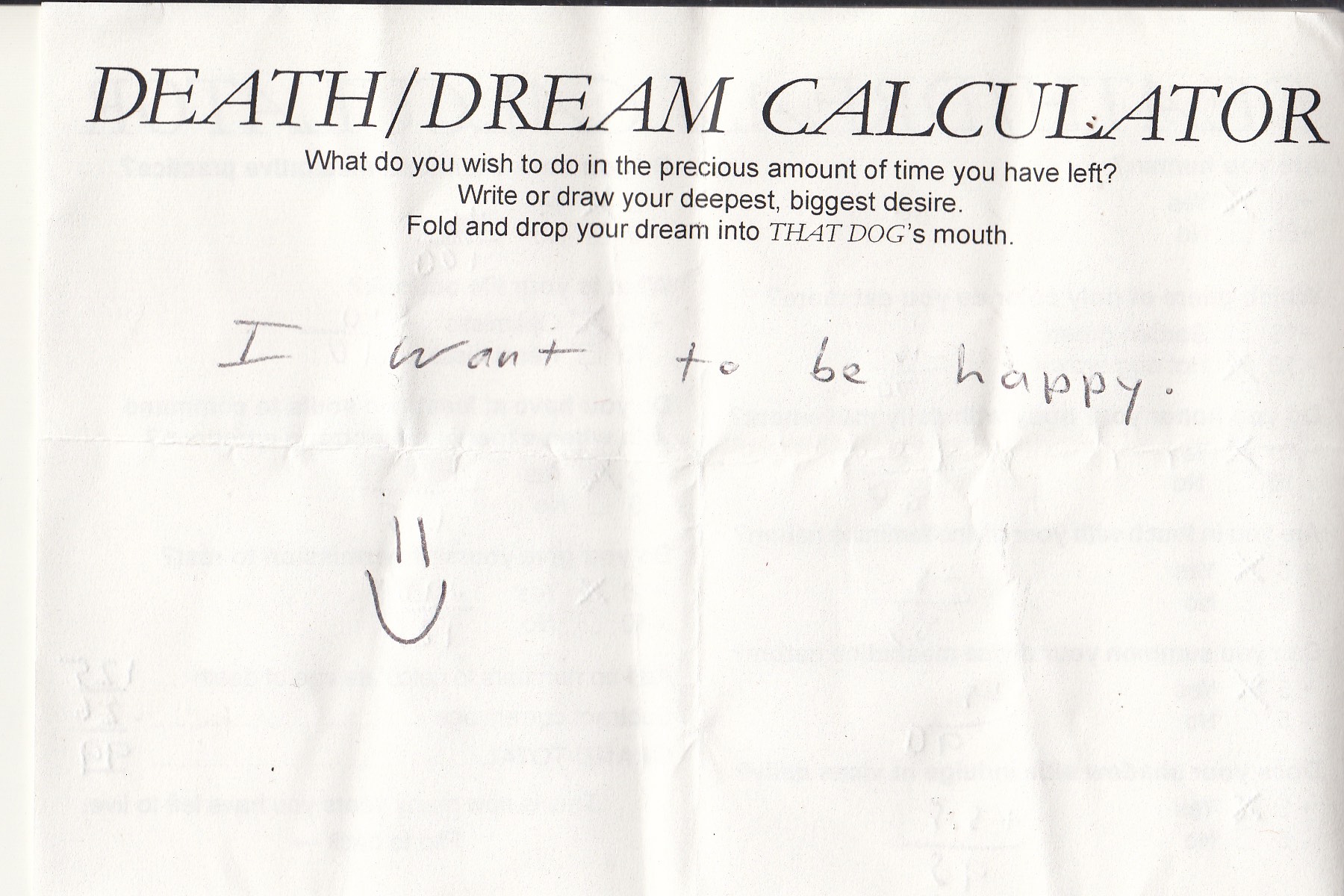
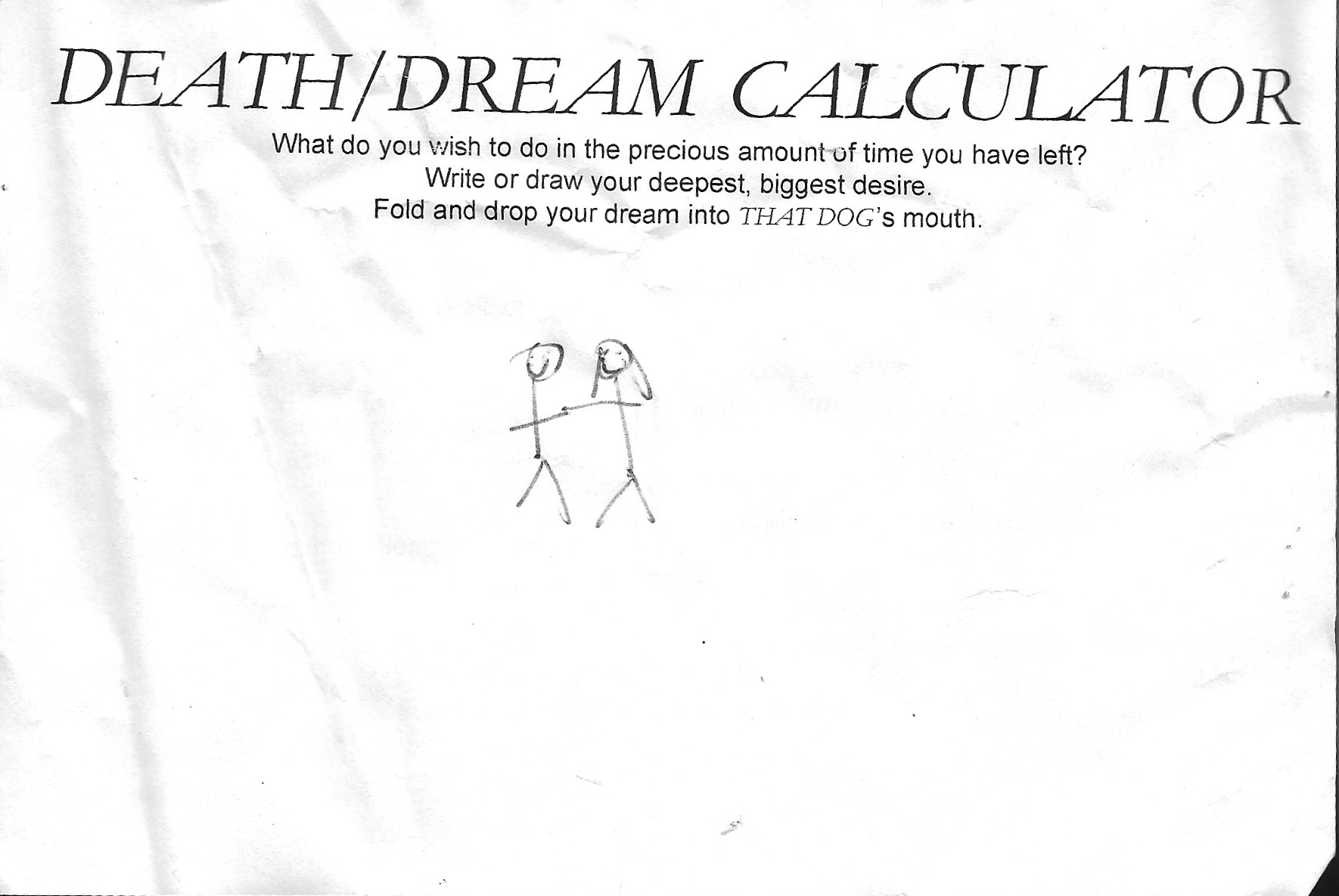
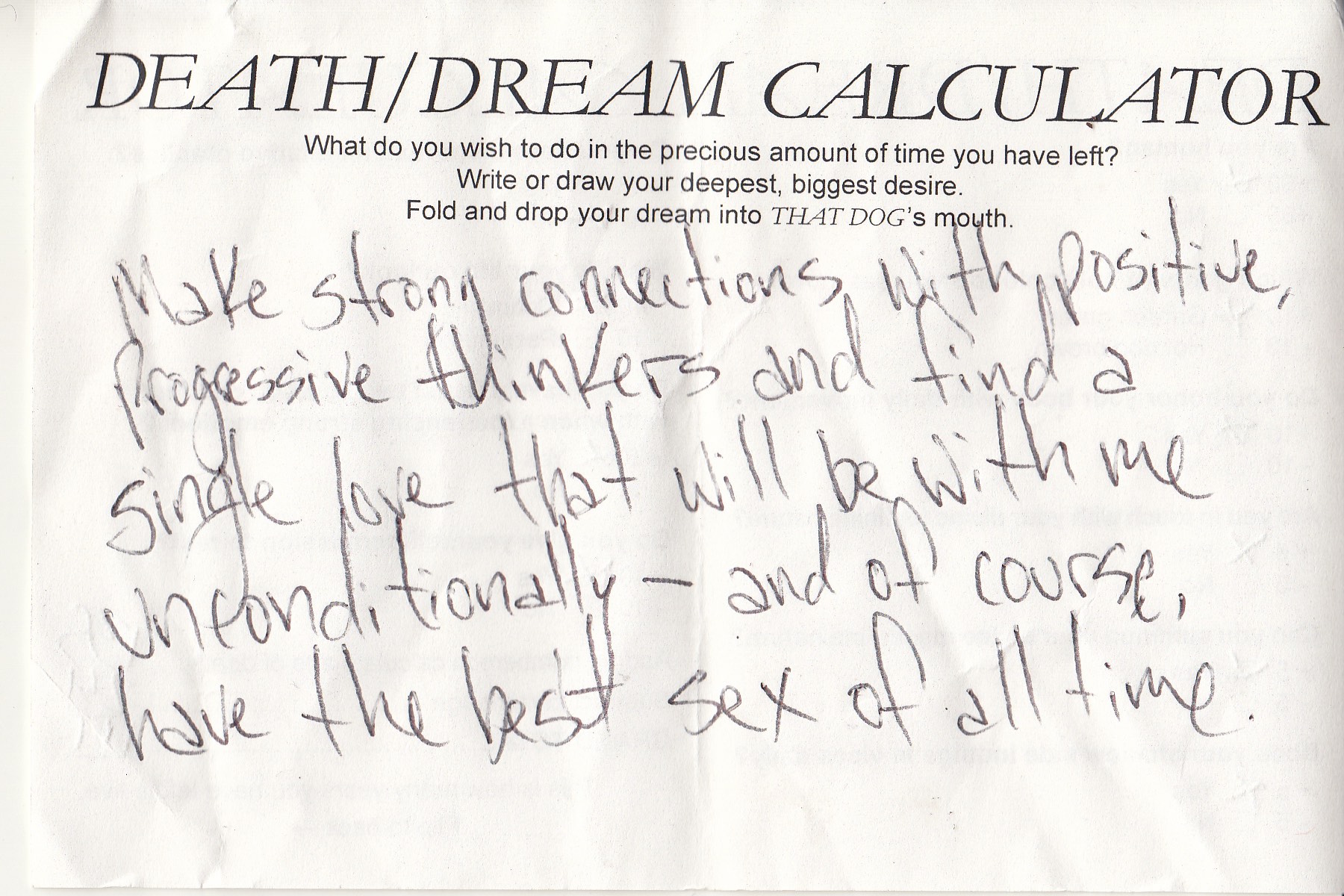

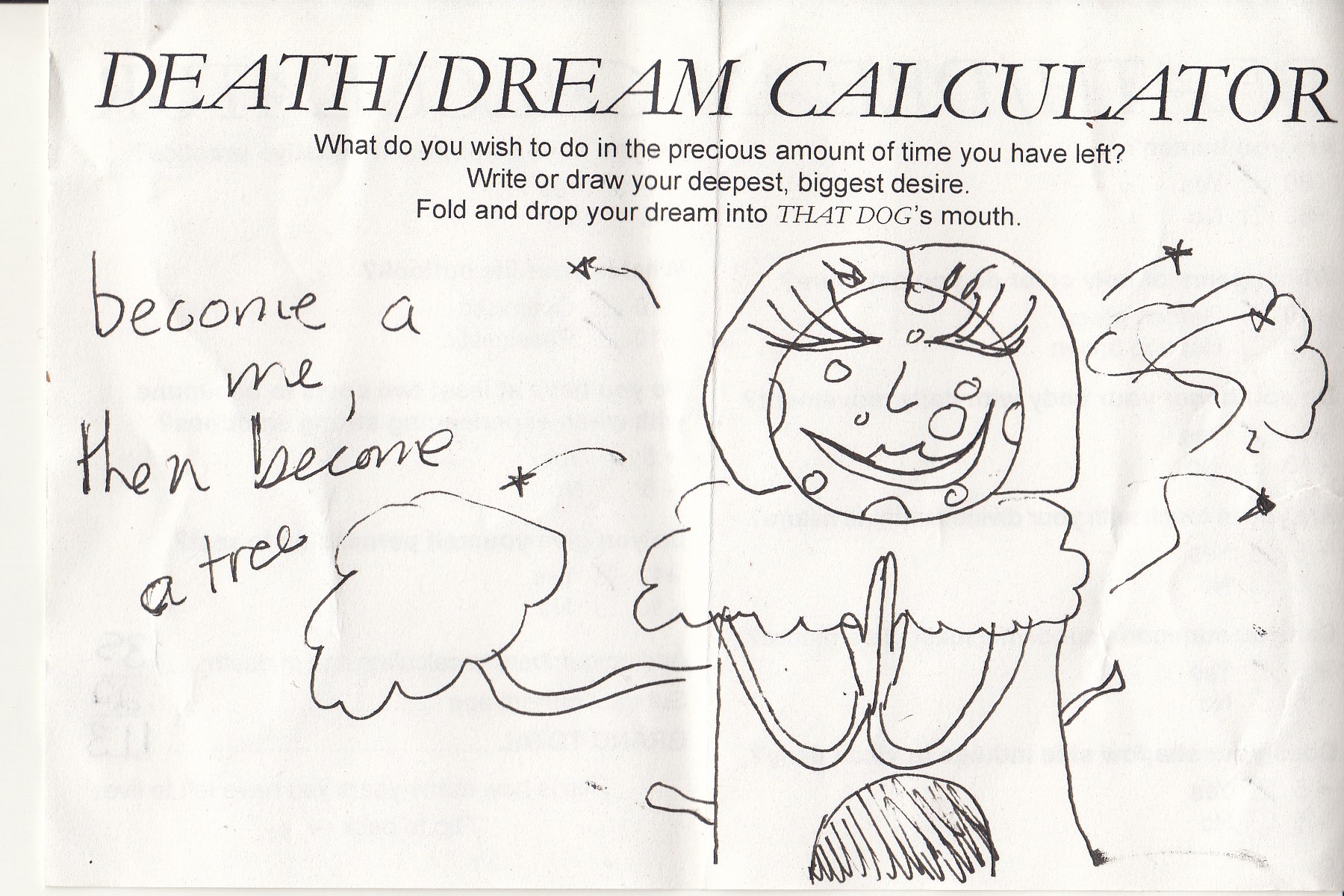
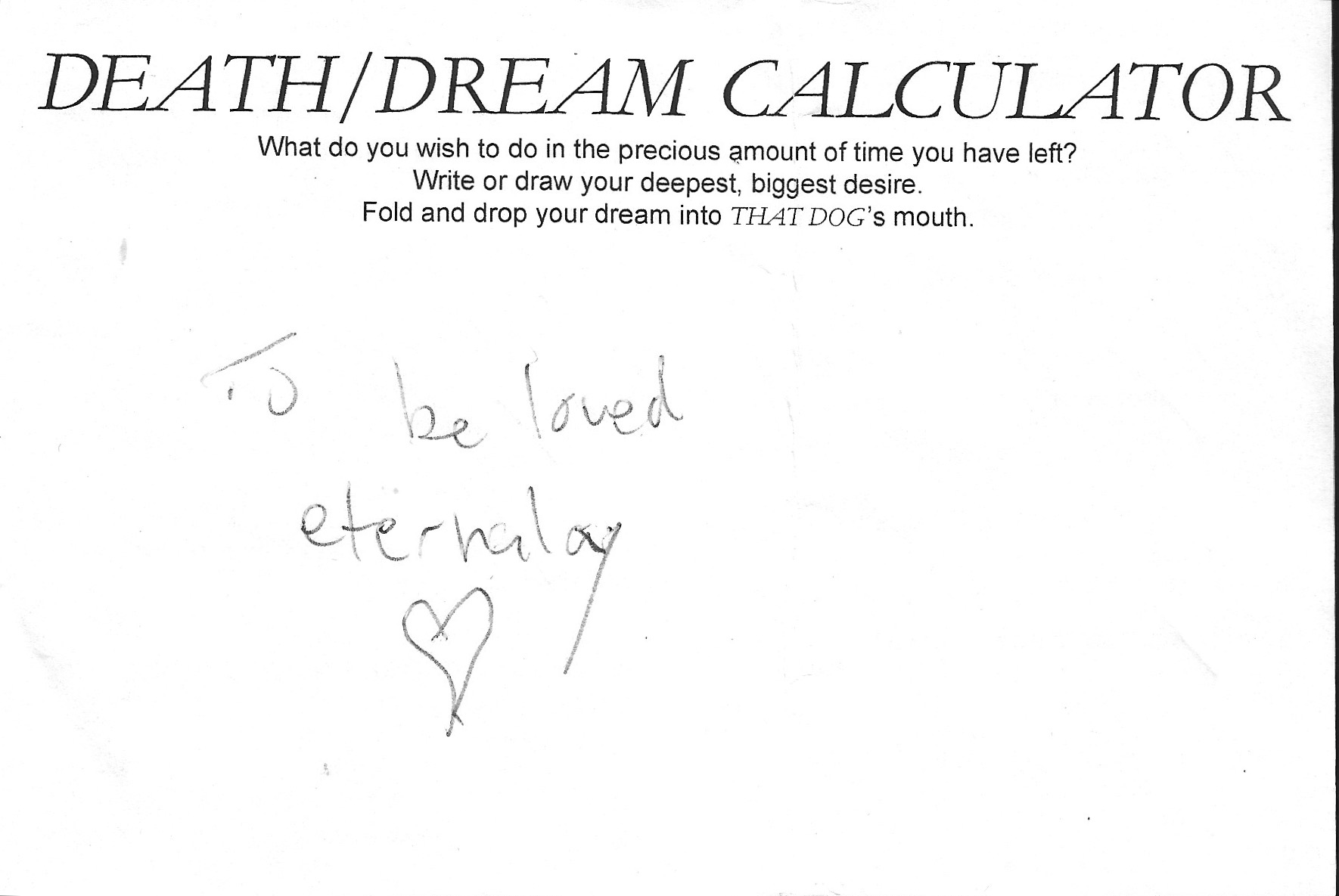

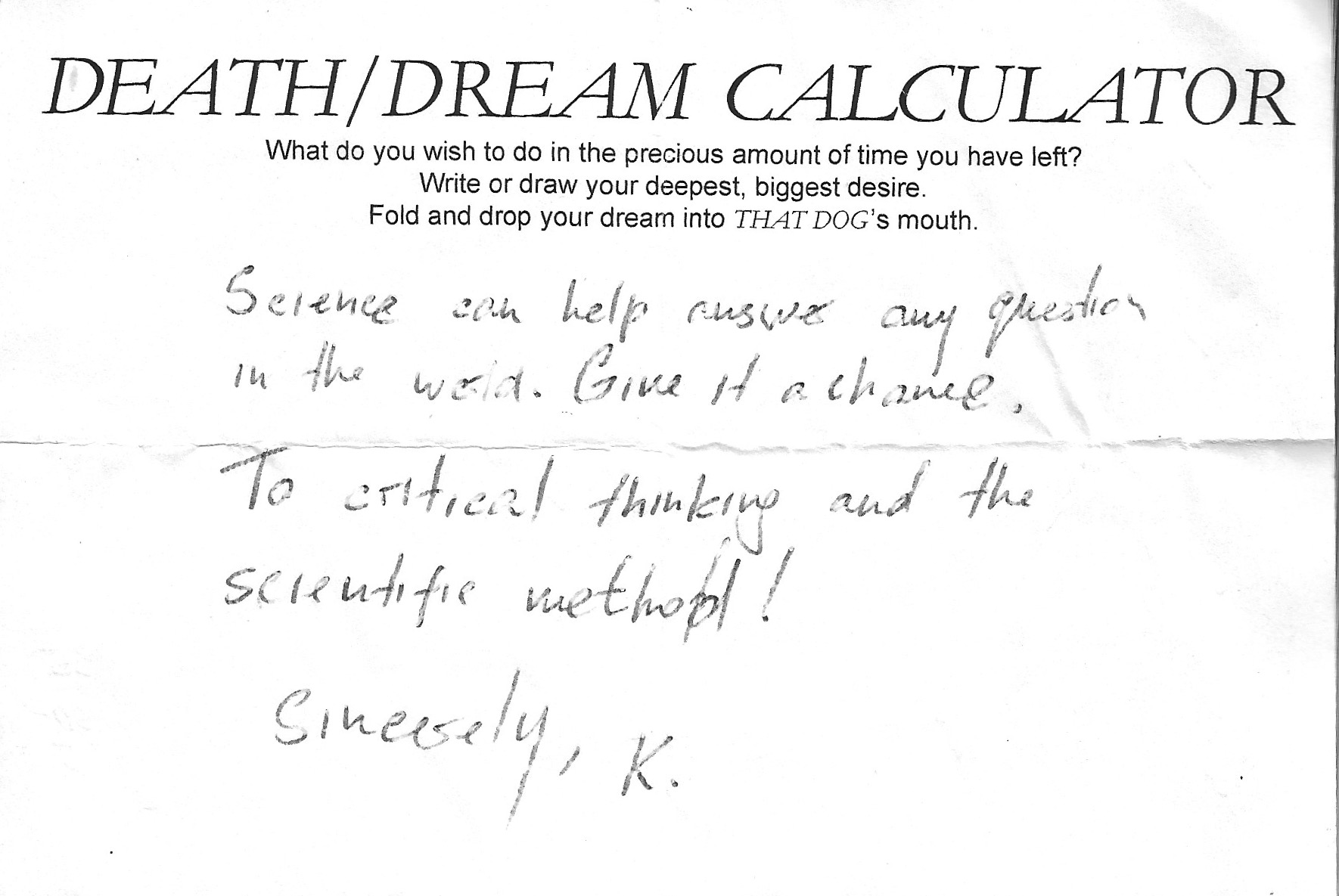

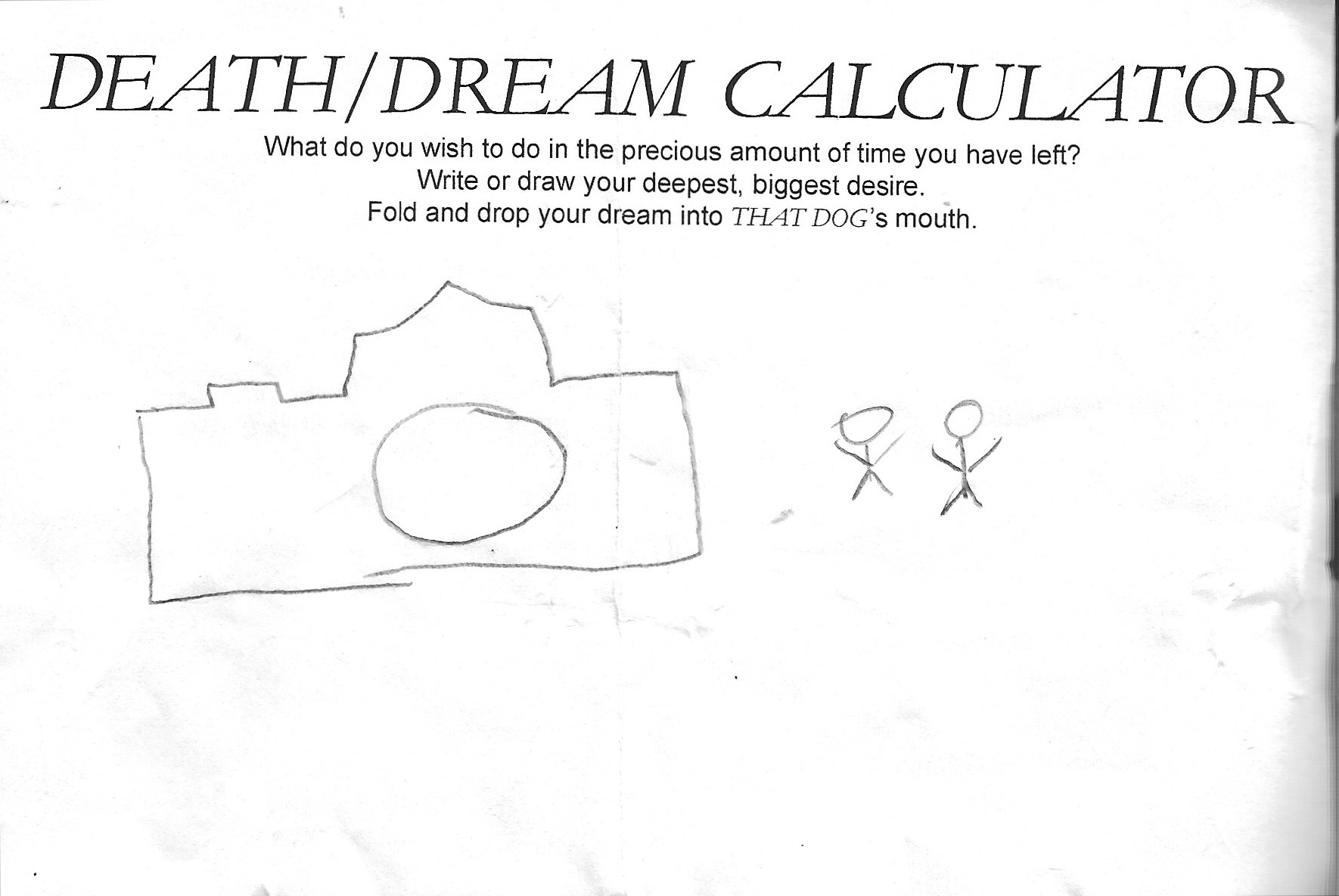
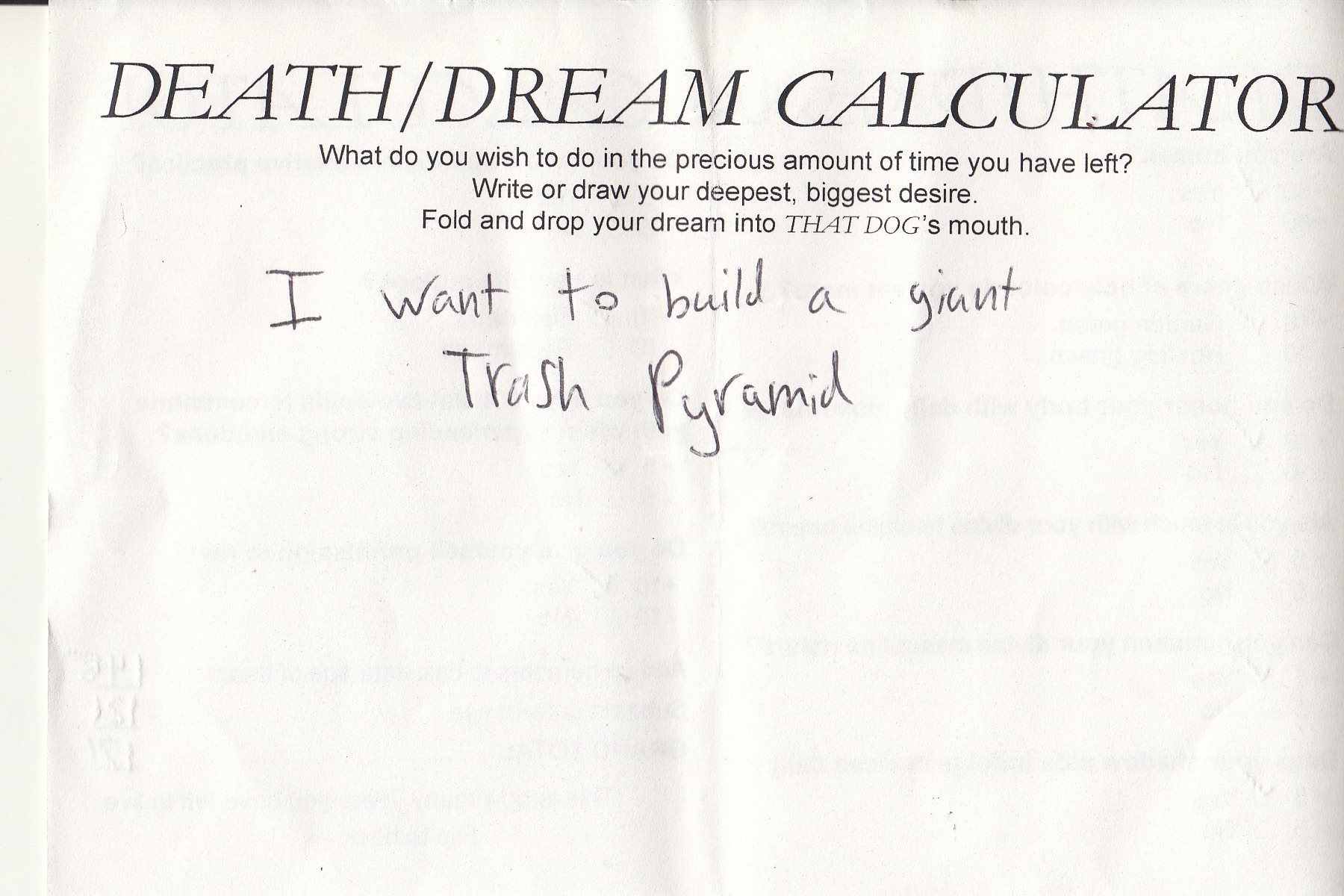
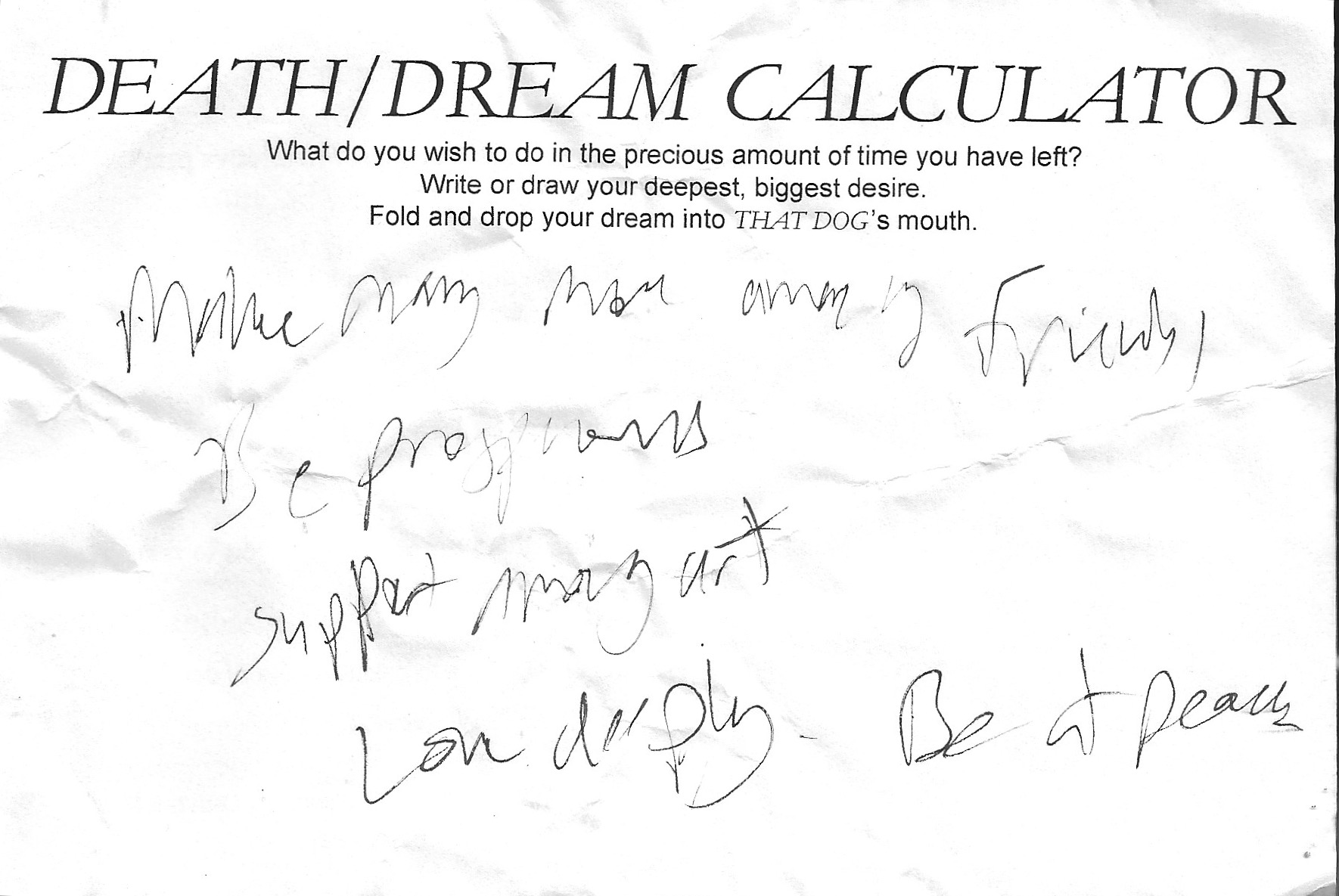

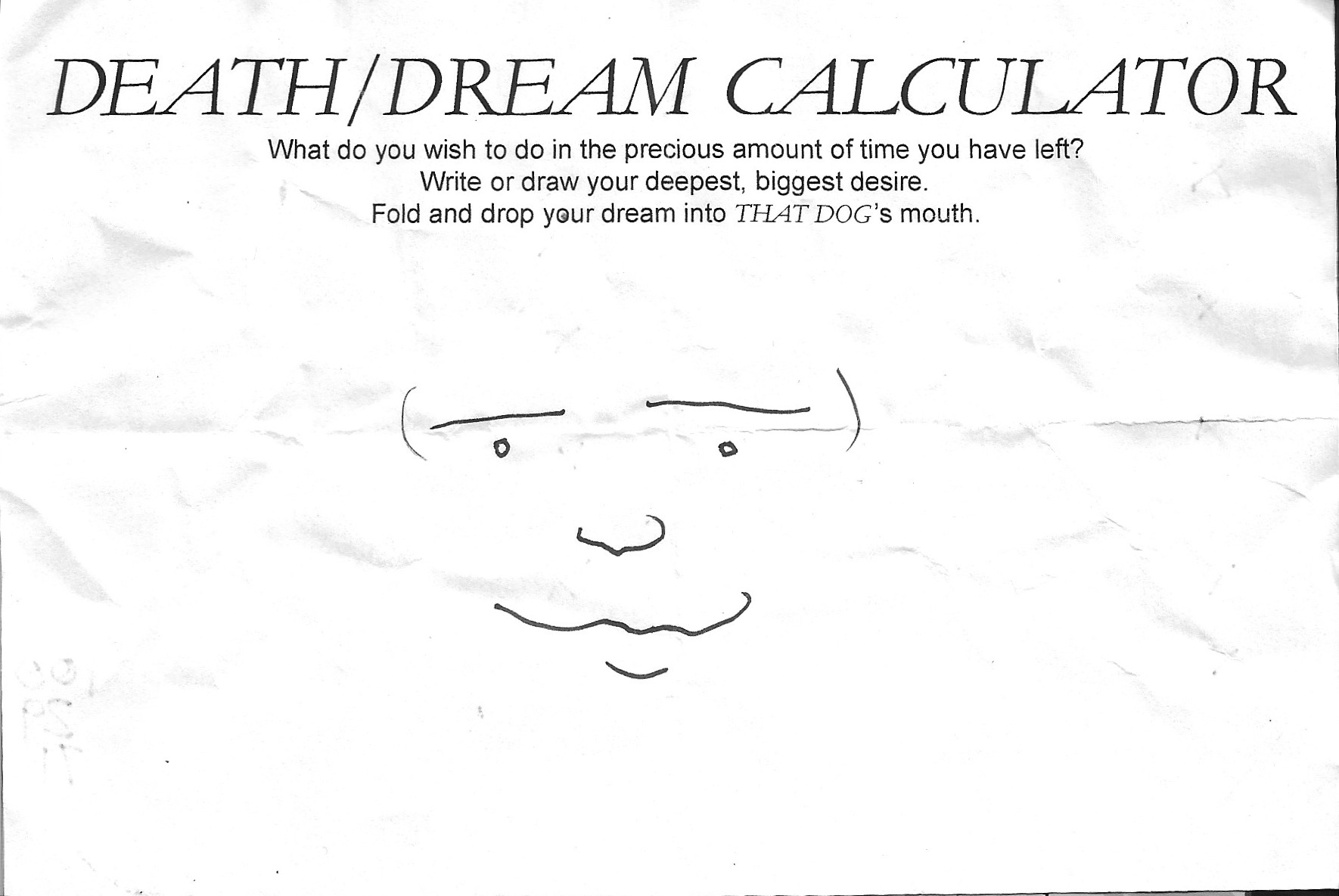
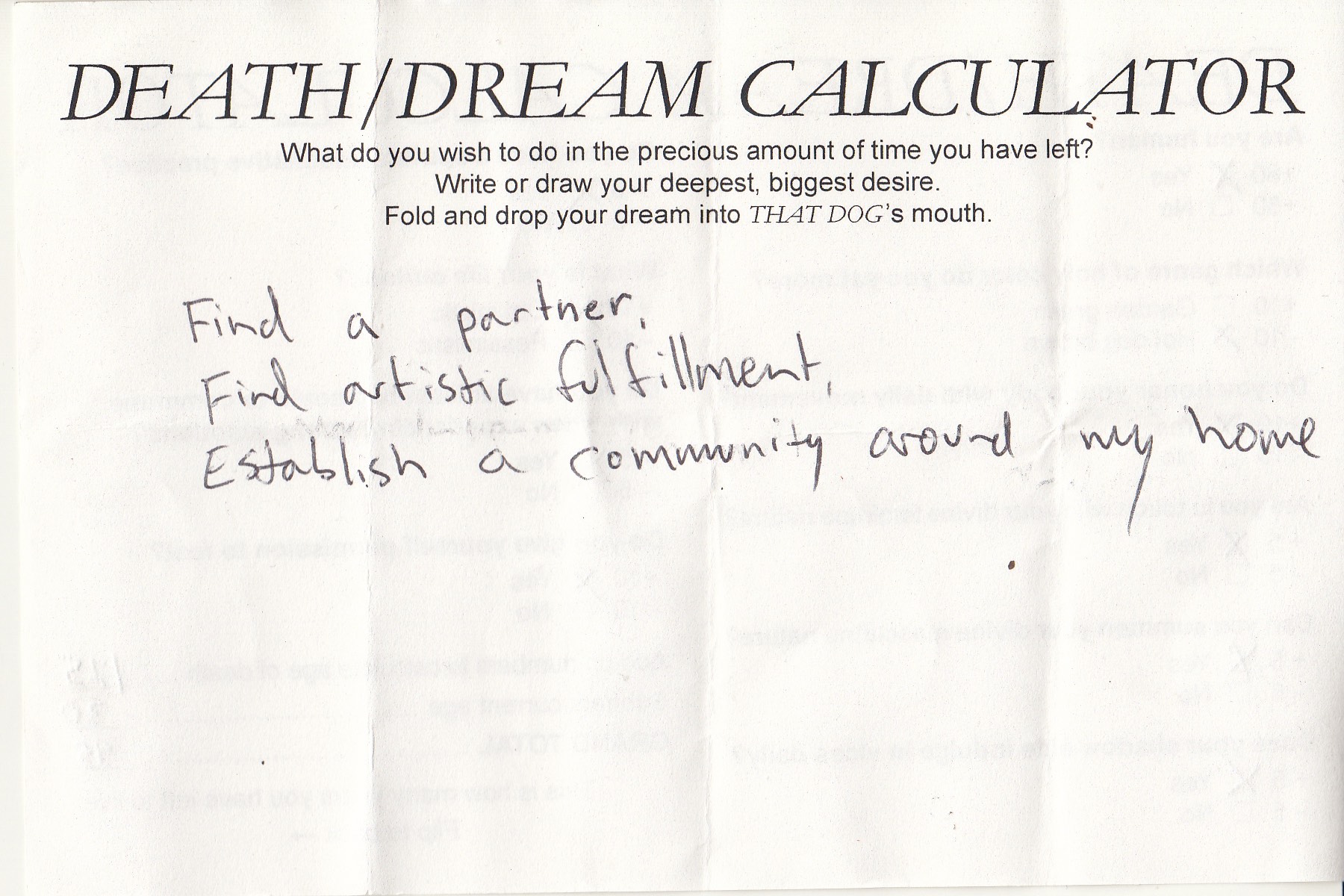
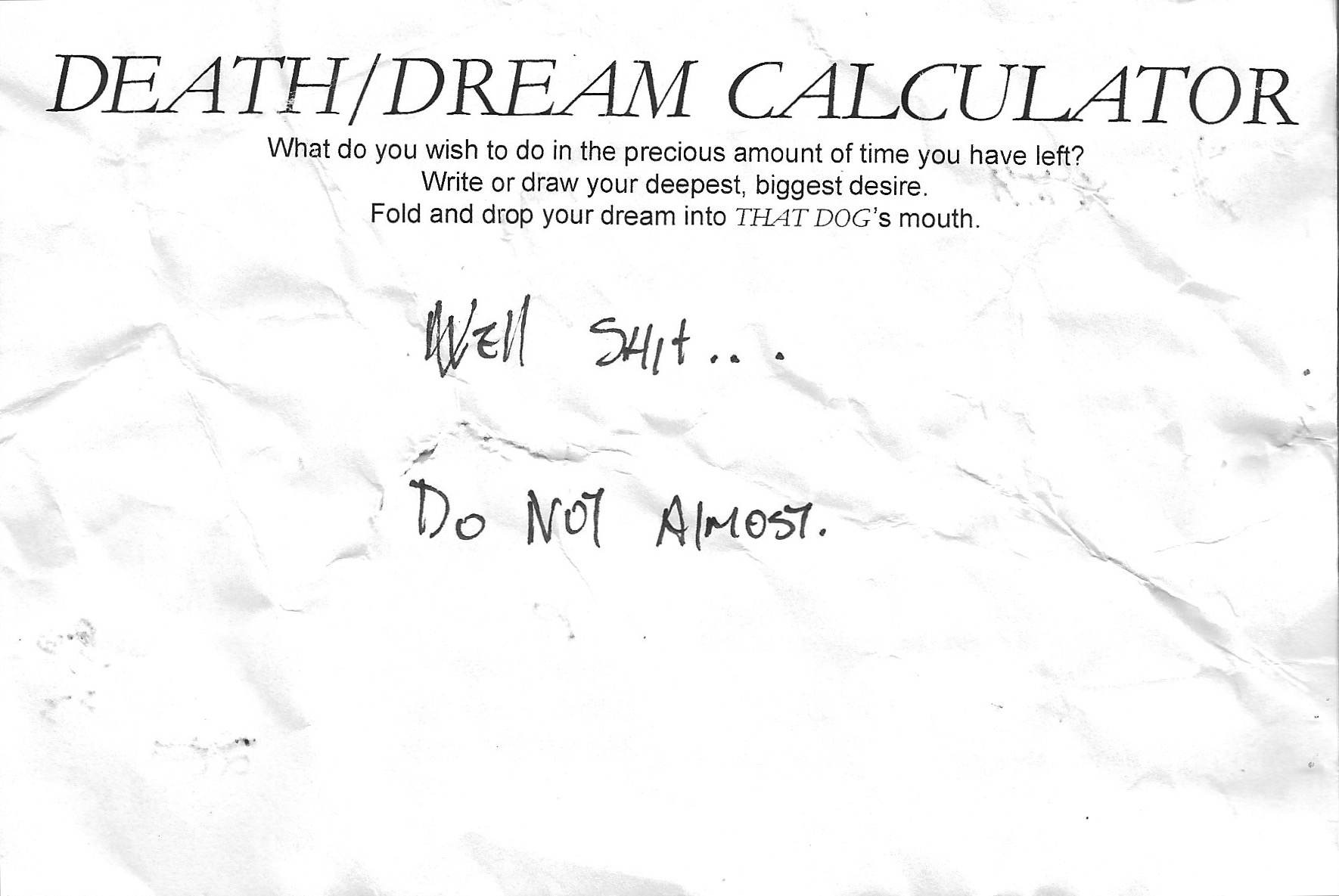
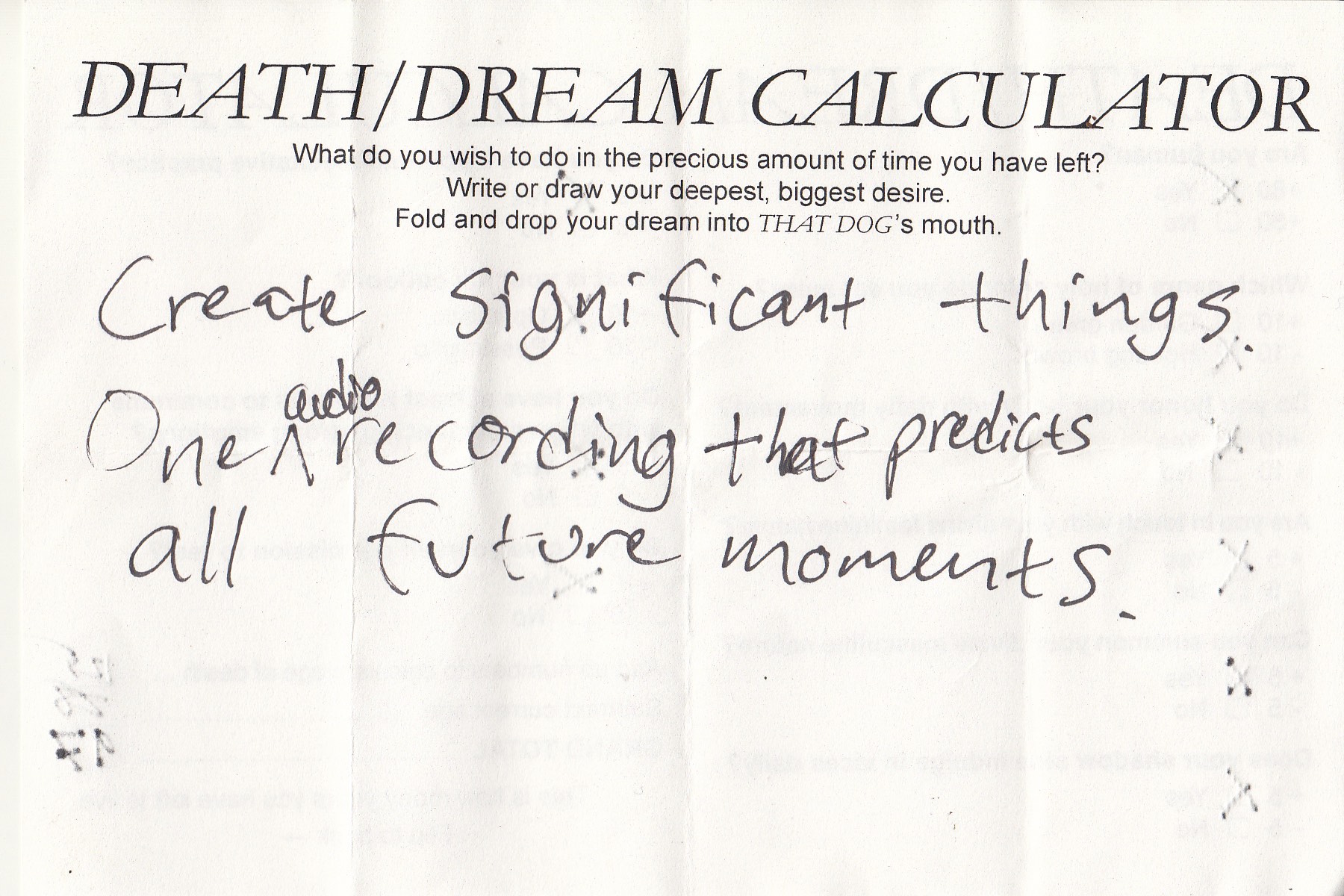
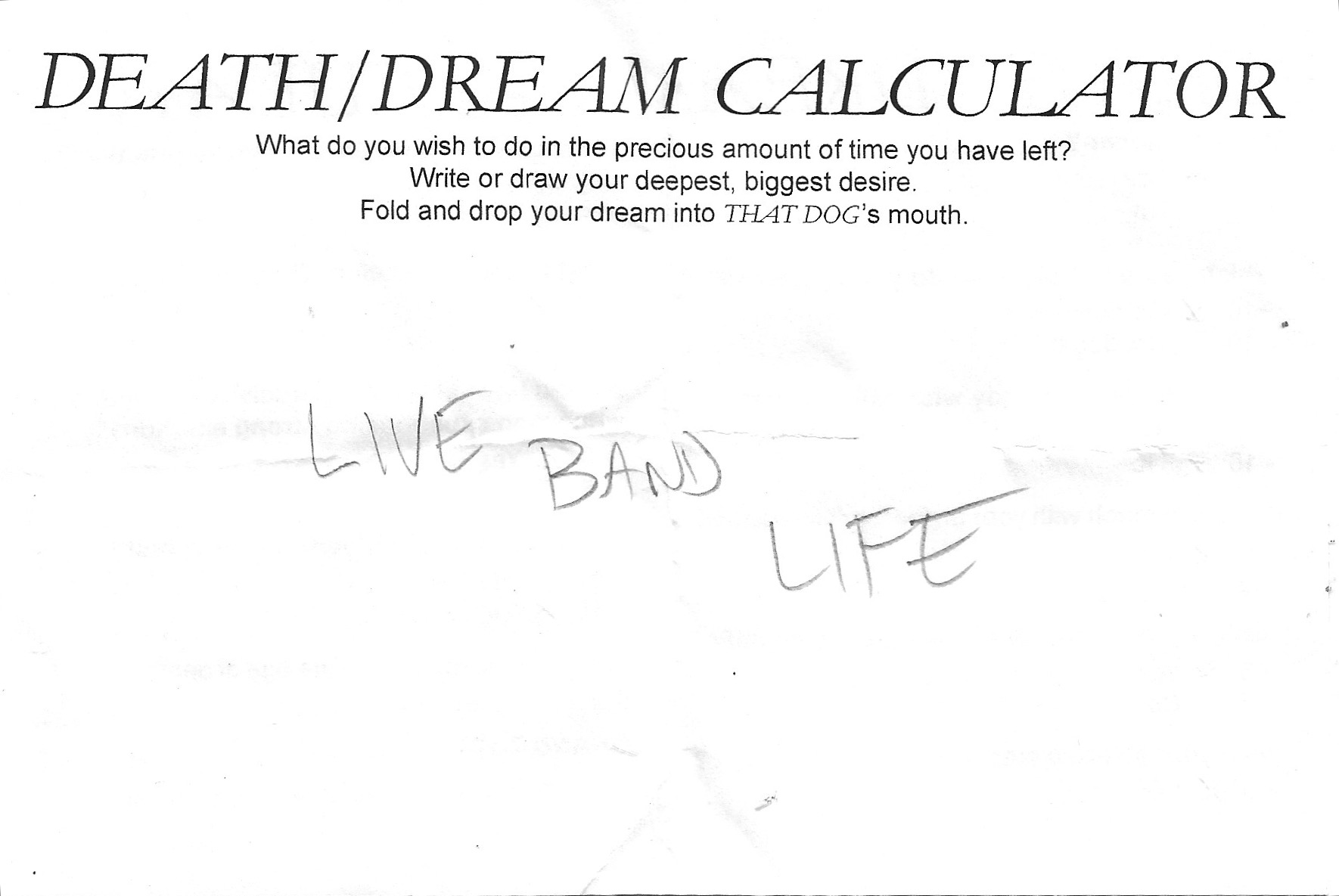
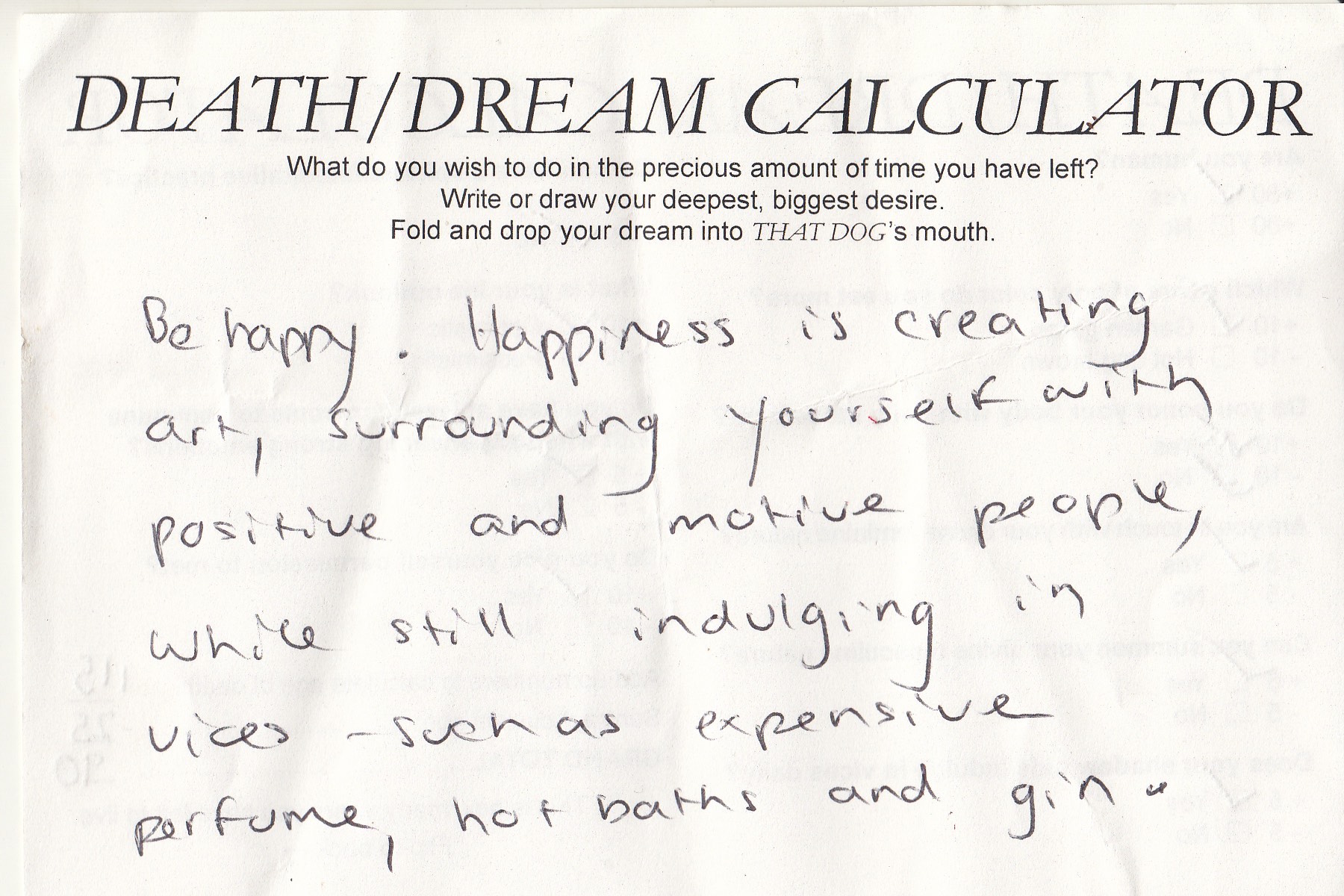


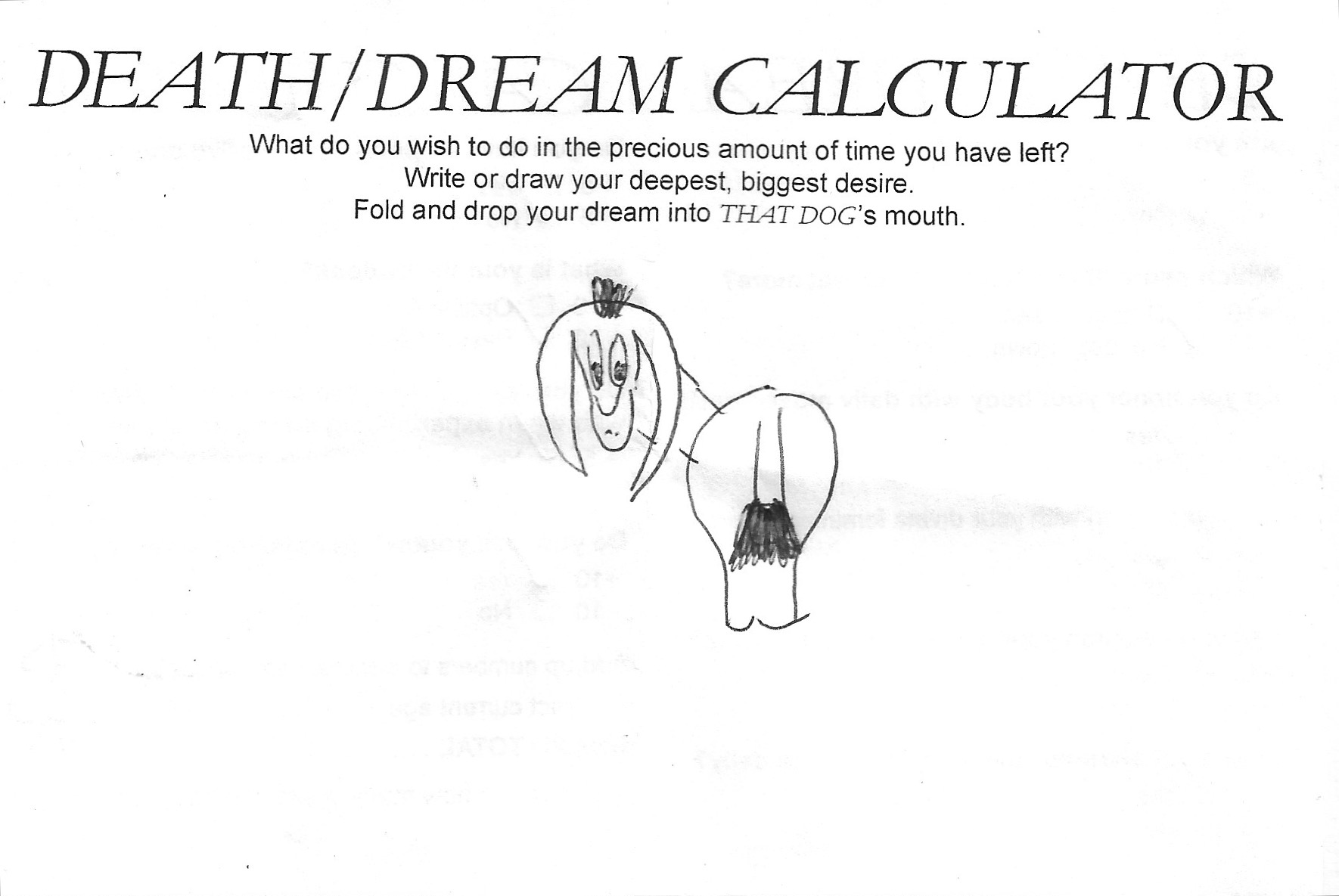
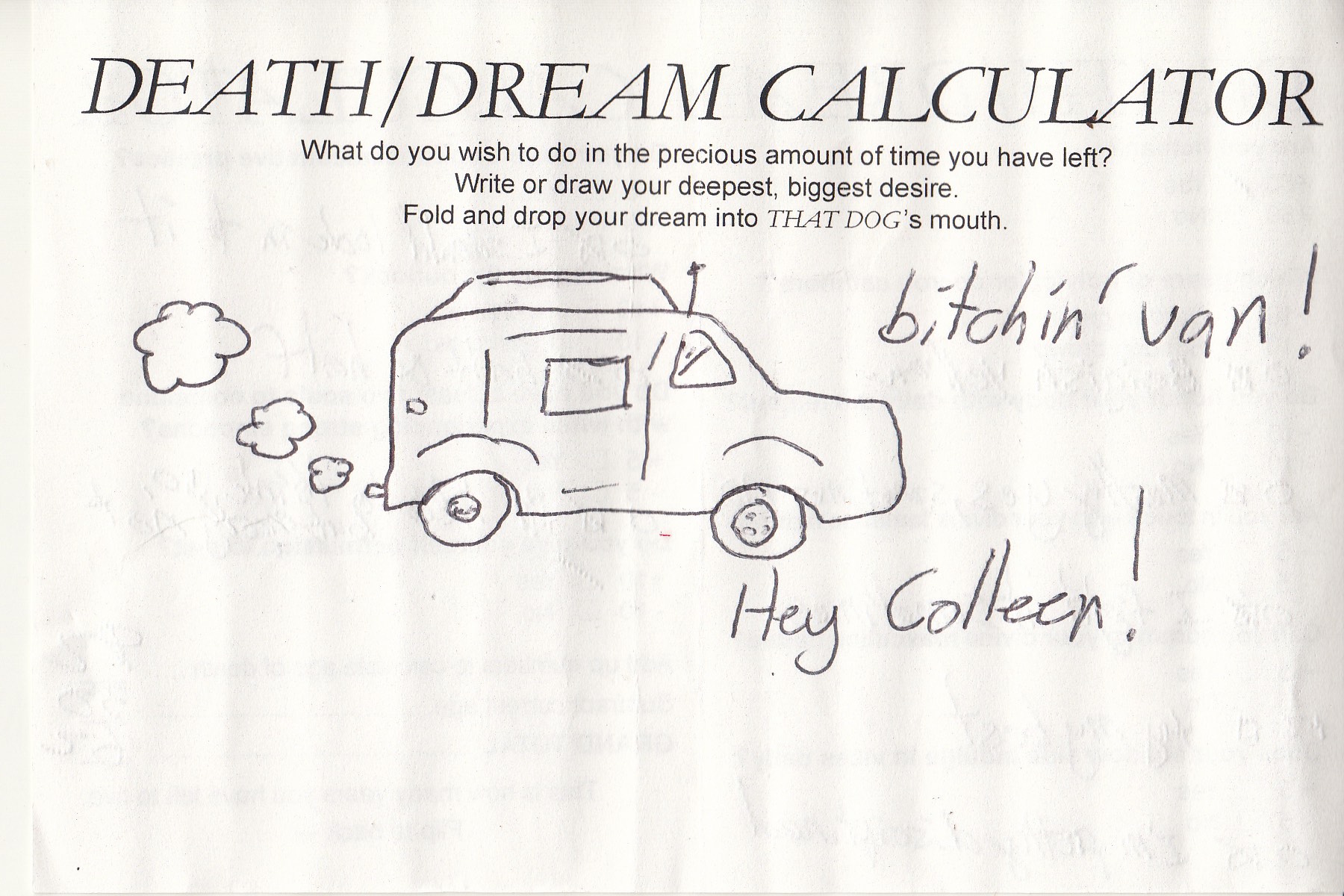
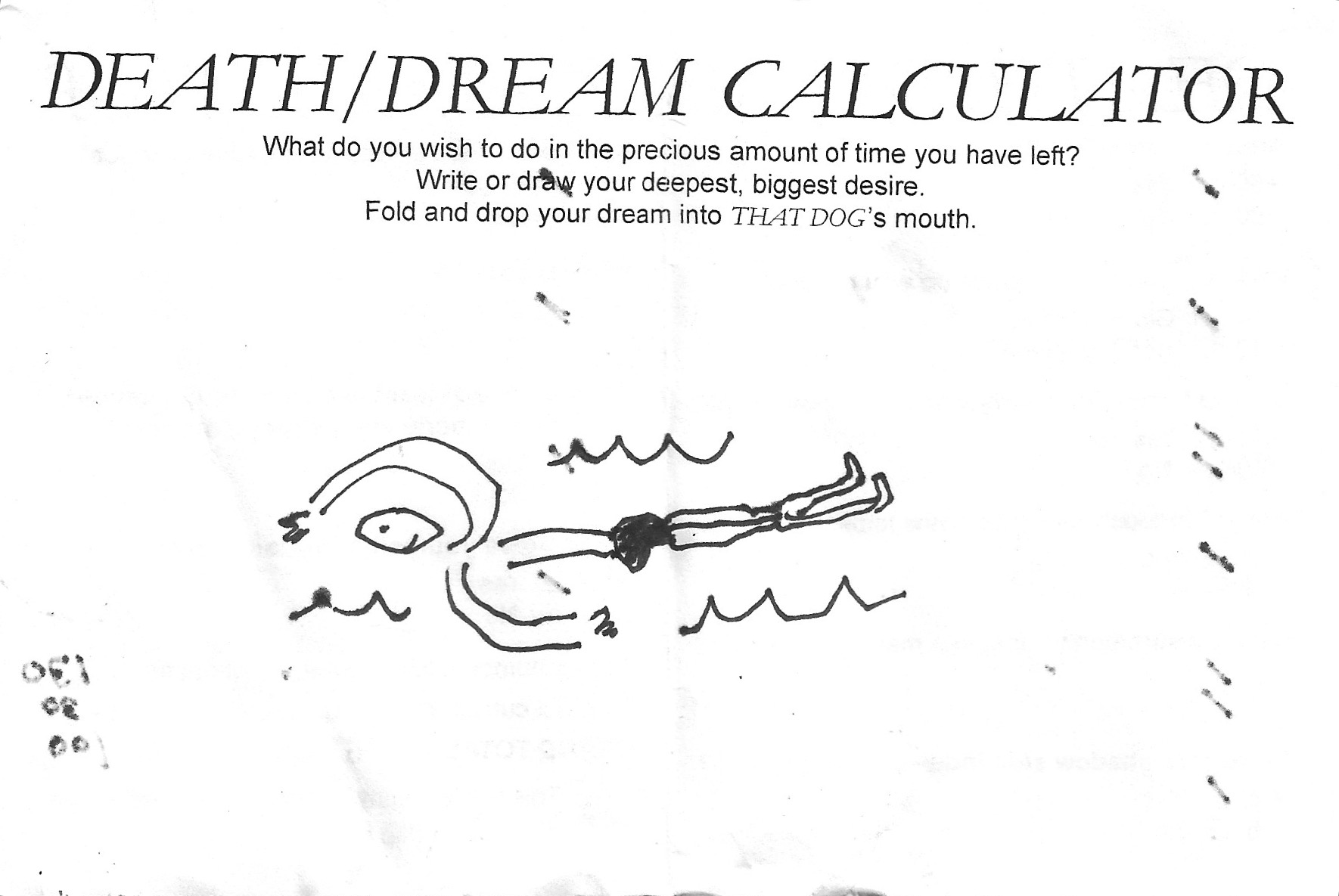
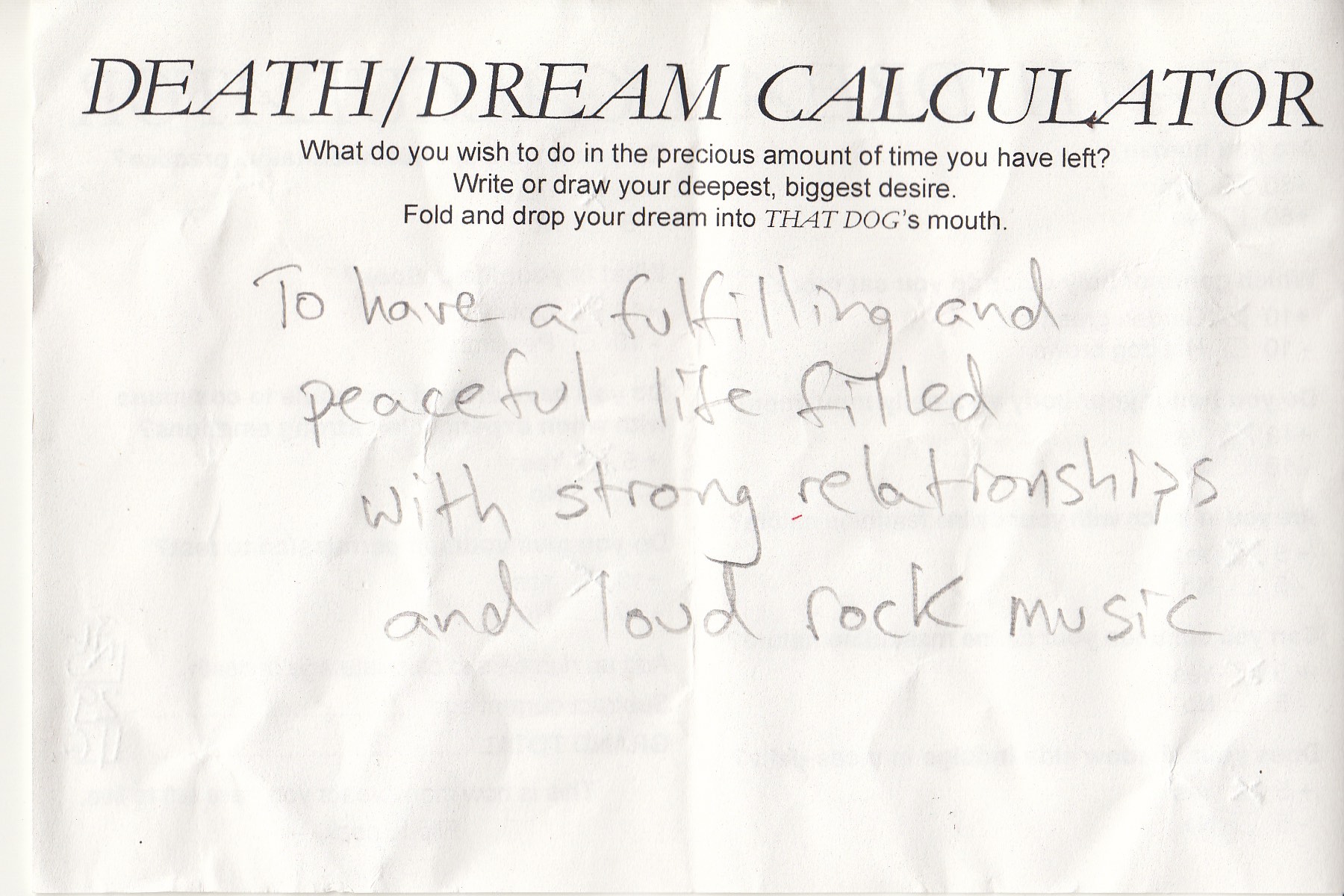

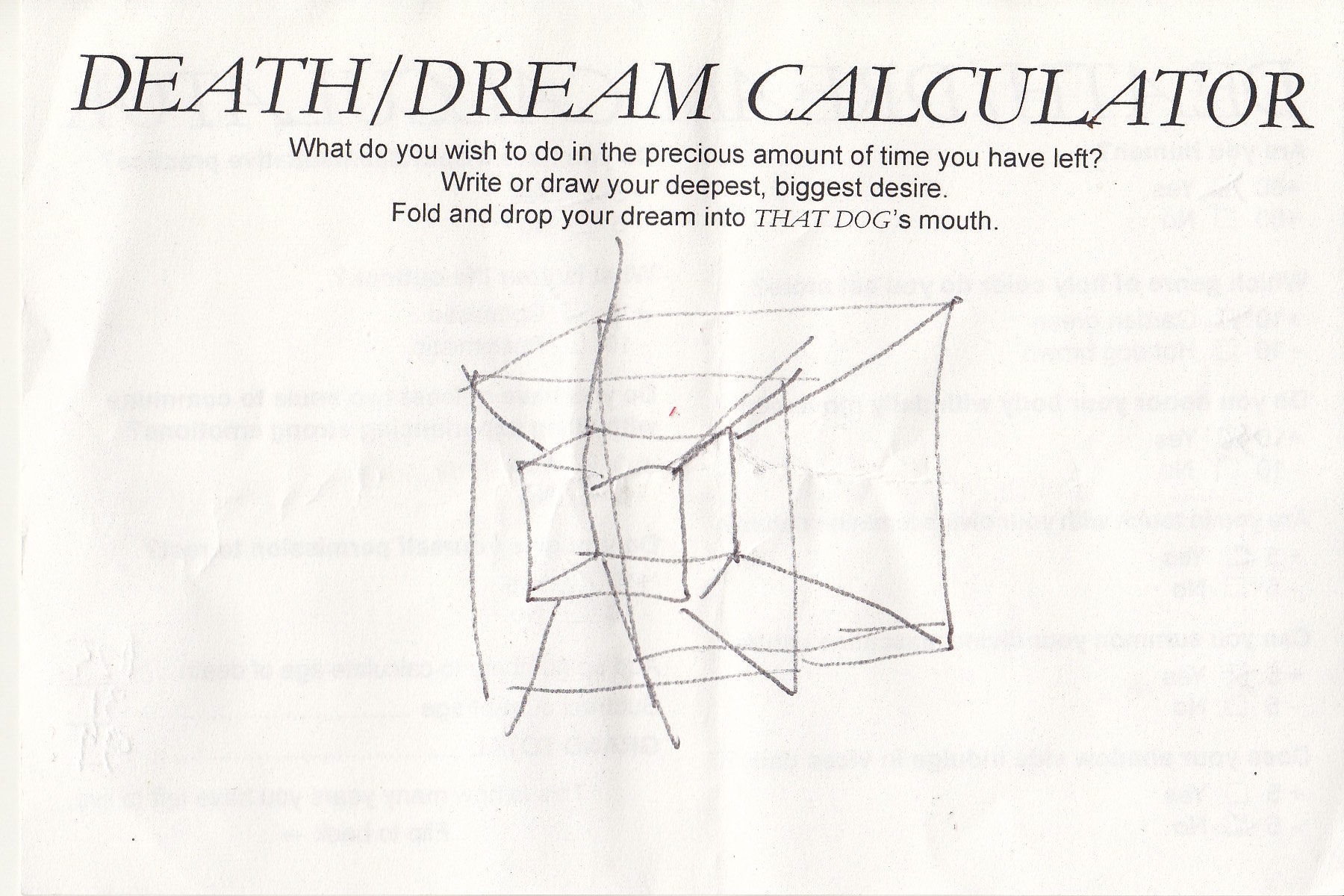
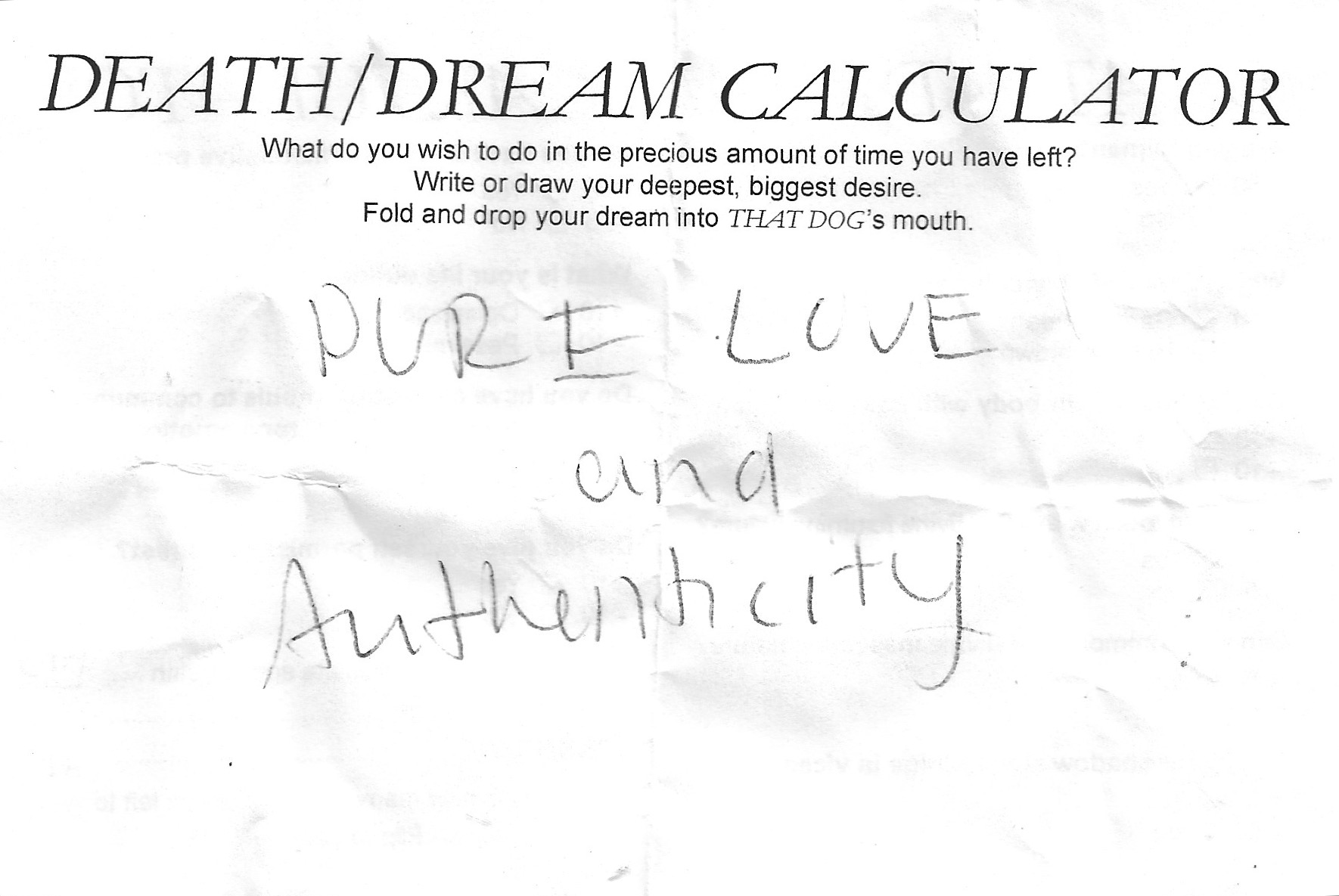

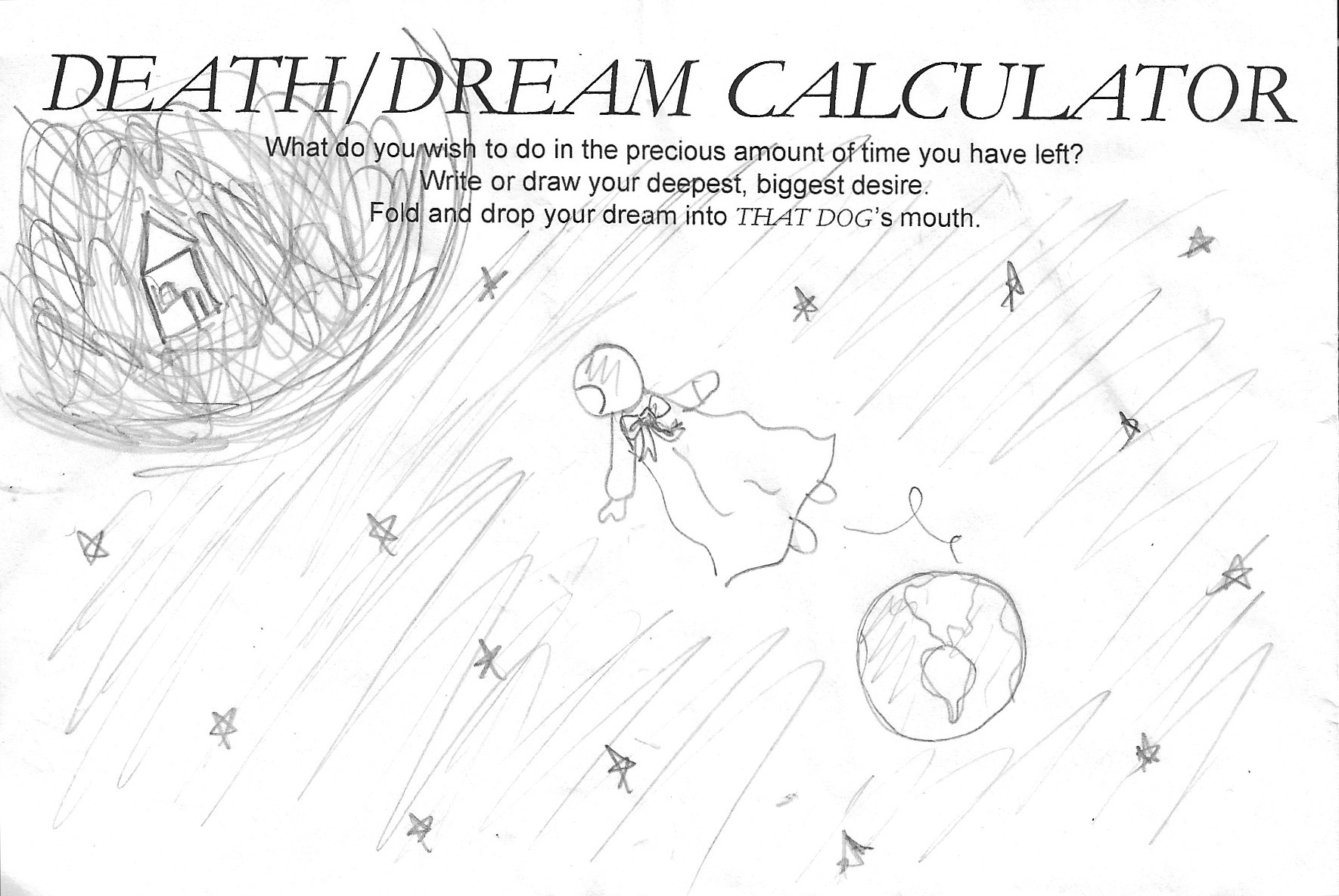
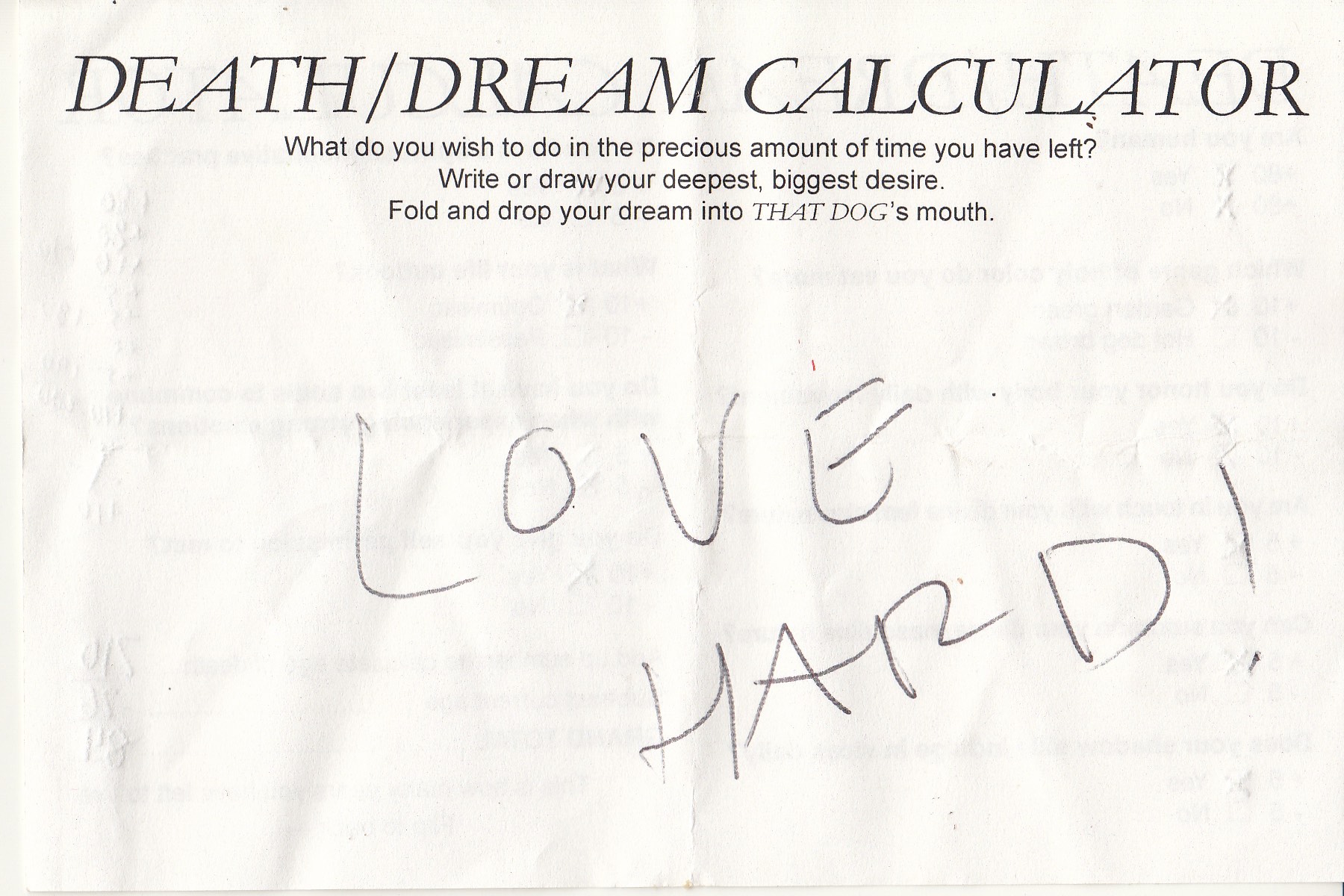
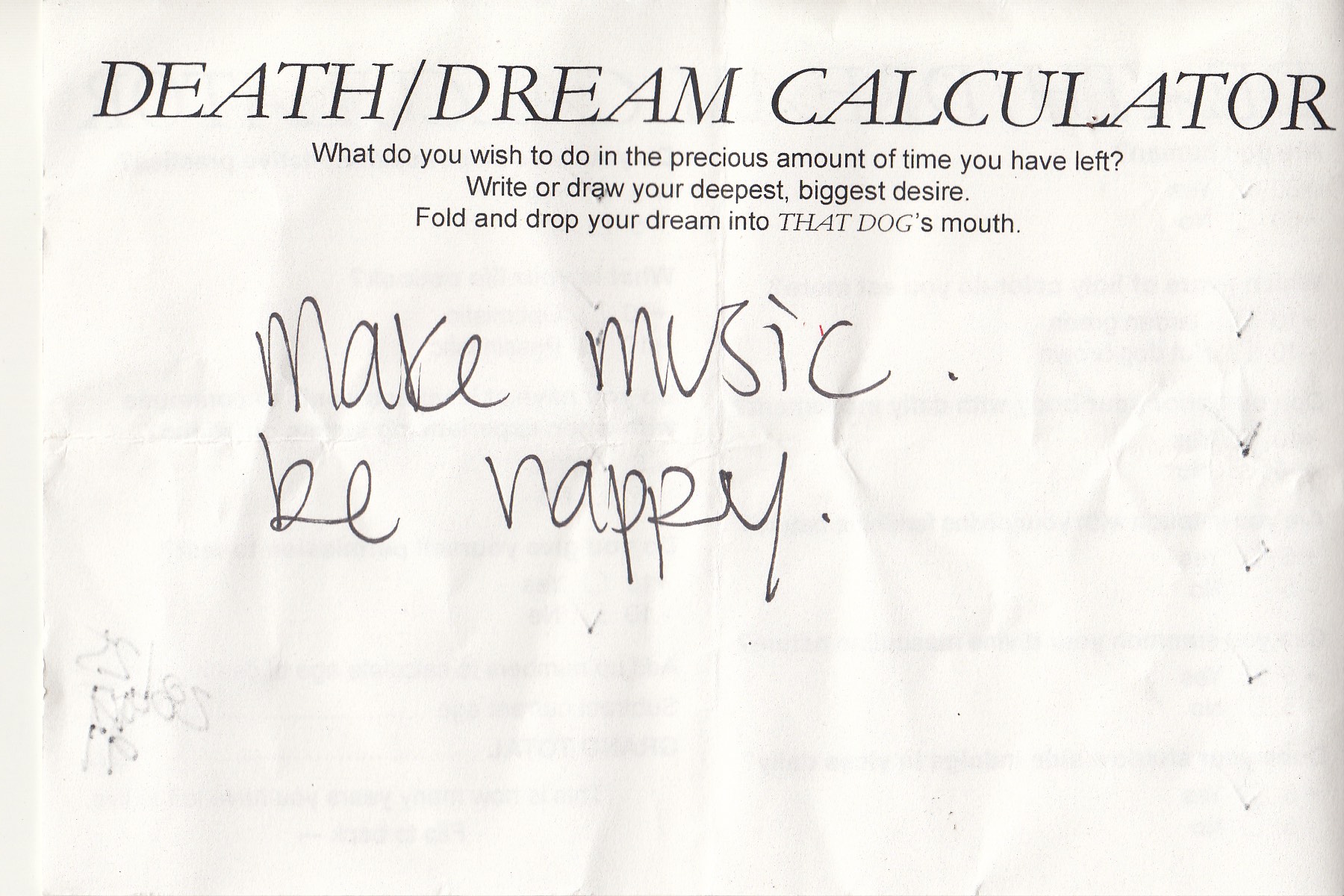
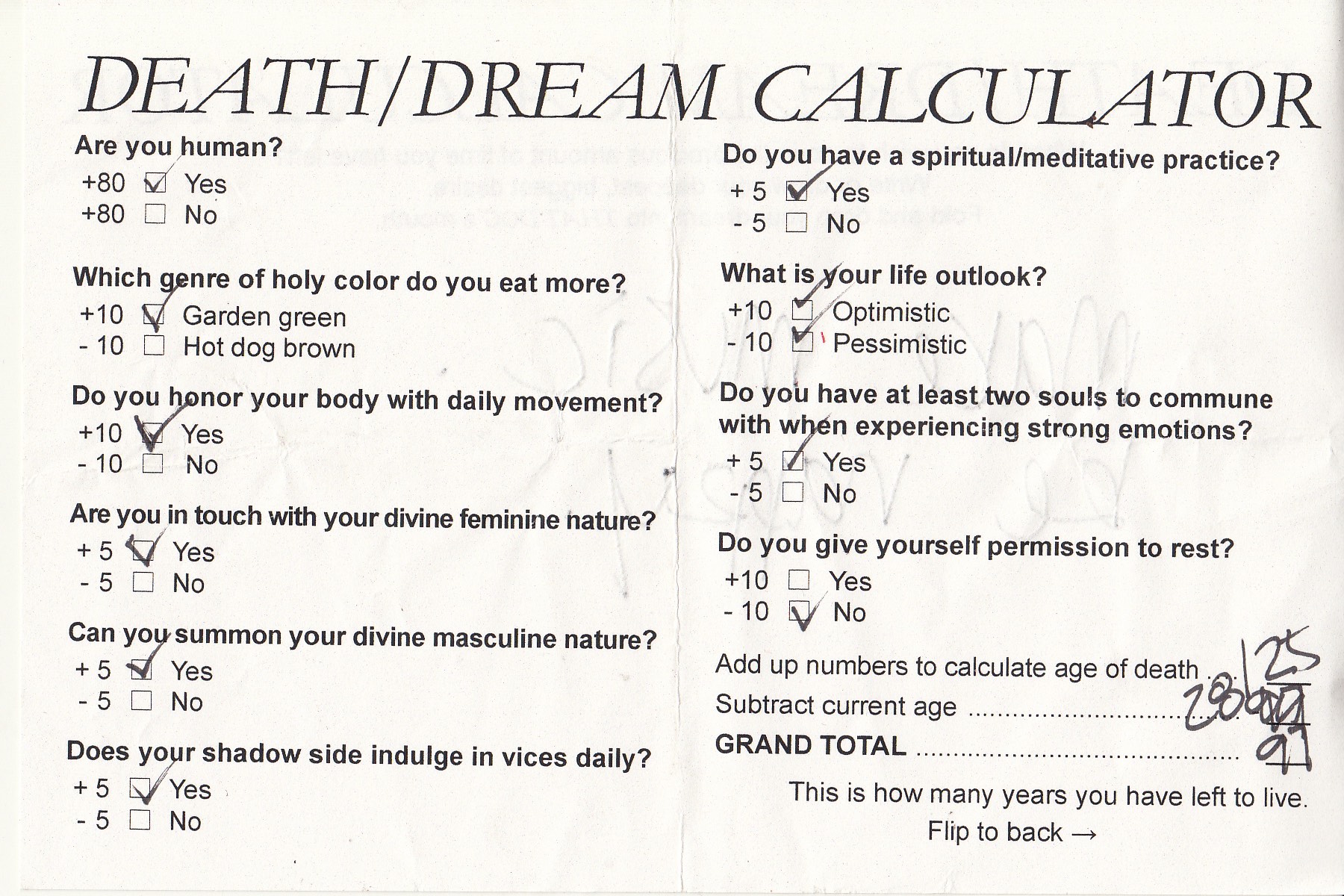
(A SAMPLING OF TESTS EXCAVATED FROM THAT DOG'S STOMACH)
That Dog also functioned as a set in the Moon Honey music video for their song "That Dog", which inspired the installation.
Jess and Colleen got together a couple months after the installation to chat about their collaborative process, the transcript of which is below.
This sandboat became our table for That Dog's installation. We drove 2 hours north of LA to get it, then took it apart, painted it black, and put a new, flat top on it.
Mount Analogue
Hey Jess!
Jess
Heyo!
Mount Analogue
I have some questions to start us off -- would you like to bat them around or just chat?
Jess
Awesome, let's do them. Thanks for prepping!
Mount Analogue
First, I heard Moon Honey is playing MOCA LA soon !
Jess
YES, June 19th. Our show is going to be part of a series put on by Spaceland. It’s been a dream of mine for years to perform at art museums. Thirteen-year-old me would be losing her mind! Details TBA.
Mount Analogue
How cool! You go! Accomplishing dreams feels cosmic! A great segue to the first question:
THAT DOG as an installation was/is connected to a song you wrote with your musical partner Andrew Martin for your (amazing) band Moon Honey. Can you talk about how you see the song and the installation as connected, and why you think it is important for musicians/bands to create and collaborate with art outside music? What does that extension mean for you? Do you consider yourself a musician or an artist?
Jess
The song THAT DOG was written in questions. It could be paraphrased as: can you accept my depression as I take responsibility for it? I chose the black dog is the subject of conversation, because the black dog is infamously a symbol for depression as well as a completely lovable creature in real life. It was an attempt to alter my complex view of depression to a more manageable, complete, honorable, lovable personality trait.
Our installation collaboration sparked when I reached out to you about directing the music video. I was a big fan of your artwork, and your ingenious style was very much in line with what I wanted the video to accomplish: poking fun at that parts of the psyche which are unbearable. Since we had planned to collaborate on a "Conversations with Women" for Mount Analogue, we both decided we should make a physical shrine for THAT DOG which would tie into the music video. We ended up co-directing the video with Victoria Innocenzi, and we used the shrine as a table conversation scene.
The collaboration was life bringing, and you pushed me out of procrastination and into intuitive creation. Outside artistic collaboration is so fruitful in keeping routine creation from becoming stale. I love working with others and gaining new perspectives. I need breaks from routine. That switch in gears is largely why I wanted to be a musician in the first place—I don't want to go to an office job and do the same thing everyday. It’s exciting to finish up a record then spend time with new people and visual projects. The space from that which I love most helps me return to music with a new joy.
I definitely consider myself more of an artist than a musician, and every medium a tool that can be used skillfully or crudely. I get the job done, usually crudely and with much humility, because I just enjoy the inexperienced excitement of working with new tools: words, notes, guitars, body, paint, pen, clay, cooking pans, etc. To arrange a bouquet or write a letter to a friend—it’s all expression, and I pick up each tool with the same intention. In our case, it was lots of fake fur, wire, and boxes. It was fun to not know how our creature was going to look and to just dive in. We were so in love with her when she was done! I suppose that’s a god complex, though the process was sprinkled with much imposter’s syndrome. I remember we kept surprising ourselves with every achievement! As if each one was an accident and not hard work.
Mount Analogue
The process of building That Dog was so surprising and compressed! I really got on the plane not sure what we were going to make or how we were going to get it all done. I remember it went something like this:
One of the things I loved the most about That Dog was the she ended up having a touch of self-awareness to go along with all of her earnestness that made people feel comfortable enough to approach the installation and interact with it. Her humorous undertone instantly made her friends with everyone. The answers to our Death Calculator test perfectly show this -- they're not polished, and they're not sarcastic, they're brutally, cheesily honest. Part of this, too, and part of the wonderful thing about collaborations, is that everything we built was an expression not of ourselves but of what we can do together.
I think humor is one of the most brilliant and underrated art forms, although I don’t really consider myself funny.
Jess
YOU ARE SO FUNNY. Yes she was divine! She was very welcoming and at ease. I'm looking at her now.
I laughed out loud looking at the process photos—I forgot how freezing that morning was shooting the first scene in the woods. It was my fault for choosing a sequined tube top, but I didn’t realize I was about to catch pneumonia until you looked at me really wide eyed and asked Victoria to forfeit her scarf to me because I had turned blue. Pneumonia avoided because of you haha. Also, you seriously worked hard pulling me up and down hills, through the desert, then through the beach. I was basically taking a nap and you were seriously working! Overall, though, we both seriously came through with our commitments, and I can’t believe the amount of work we completed in such a short time period. Great job us!
But yes, the death calculator test had just enough humor, as did our dog.
Mount Analogue
We did seriously come through for each other and for this project. That feels and felt so, so good.
I remember writing the Death Calculator test was a fine balance.
Jess
Definitely. Balancing the darkness of depression with the lightness of jokes and inspiration to create awareness.
Mount Analogue
Didn't we use the phrase "hot dog brown" ?
Jess
Yes, or "holy green" for food types!
Mount Analogue
We for sure wanted to make people more aware, but we also wanted to be implicated, and didn’t want to seem preachy or condescending.
Jess
Yes! It was challenging to make an opinion formula section that wasn’t judgmental, and a participatory dream section that let people arrive at their own conclusion. We were even challenged in response. Someone gave us advice in the place they were supposed to write their dream: “Science can help answer any question in the world. Give it a chance.” Maybe on our next project we can only use science to solve our questions. We can just frame a tablet of Prozac and call it a day.
Mount Analogue
I also kind of think -- added to imposters and gods -- we're sadists. Or at least - in it for the pain of the challenge. I like flip-flopping around because I have to stay on my toes, always be a beginner, in a way.
Jess
I agree. A little bit of struggle helps me focus, as well as a degree of self-dislike against which I am trying to prove myself. We talked a lot about the idea of art being therapeutic before we began. I think this is a huge shift in my own thinking that has come about in the recent year, and in the writing of THAT DOG and the album in general.
I'd like to think that we somewhat transcended our sadist tendencies with this project by focusing not on death, but the awareness and goodness that comes with the knowledge of death.
Our whole goal in exploring the body of depression was to form it into something we can physically touch and transform into something loveable. And I think it did help me.
So we're imposters, gods, sadists, therapists, and thrill junkies.
Mount Analogue
Totally. This is one of the most straightforward things I’ve ever created. It was an artwork that made its ideas about art a vital part of experiencing the artwork itself. We sort of revealed what we think art is good for -- an important question right now -- we said: art is a vehicle you can ride toward a personal revelation about the meaning / non-meaning of existence. Does that feel true for you?
Jess
Yes, in the past I did not create things with a clear or explained purpose, but these days I think I do try to make obvious the intention of transformation.
Mount Analogue
There was also so much symbology involved! Symbols being both really straightforward and really obfuscating at the same time.
I feel like we used symbols as little vehicles to carry us from all the intersecting colonies this project inhabited. That Dog had to productively function as and encompass:
The song "That Dog"
The music video premise/an actual set for the music video for the song "That Dog"
Our dual ideas and experiences with depression
The goals of the Conversations with Women series
The dreams we recorded and sent back and forth to each other during the process leading up to my being in LA
So there was a lot to connect, ha.
Jess
Yes!
Mount Analogue
Obviously, the dog was our main symbol -- we wanted her to represent depression. What else stood out for you as a purposeful symbol in the installation?
Jess
The symbolic action of feeding the dog was a big one, as well as the table. The feeding idea came from our dream log. What is it that feeds or takes care of depression, and how we as a society feel about depression? The dog was hidden beneath the table, as if begging for scraps in the music video. The table had even further meaning when stretching the idea of an actuarial table in the lyrics, which is a chart which measures the chances of death within a given year, and transforming it into an actual table around the dog.
Mount Analogue
My favorite snippet from your dream log:
"I sat poolside at night with a group of strangers who were my friends. Everyone said the moon was full, but I clearly saw a crescent moon. I saw close up the moon as a white onion who carved himself into a crescent with a carrot peeler. A large red carrot in the sky scurried from the scene. I was down by the pool and I held a very large, round balloon which was on fire. I twirled around the balloon pretending to be the earth orbiting the sun, holding a moon in my palm. Friends told me someone must have put a drug in my drink because the moon was full, not a crescent. A man was speaking on a phone in a hotel room, telling a lie. Corners of his doormat caught on fire and he attempted to stomp it, then to pour water on it, to no avail. He stepped into the hall and saw the neighbor’s doormat was catch fire. He picked up both doormats and threw them facedown into the swimming pool."
This dream reads like a poem to me.
Why do you think it is important to interpret dreams -- and by extension, art?
Jess
I must have been hungry while dreaming! I recall a dream you had which also featured a fire—though yours was communal after you had walked through the grim reaper’s corn mansion:
"Dusk was happening all the time. There was a giant Georgia plantation style house up on the hill with white columns and marble black and white floors and all the accents were gold. I wasn’t allowed in the house but I went in with Pilgrim anyway. We felt sneaky and heard footsteps with a fancy man talking so we ran into a part of the wall (like Harry Potter platform ¾ style) and instead of becoming wall-kill we opened a portal and were at the beach, 100 yards down a sloping hill covered in ivy. Jess and Chris and Andrew and some other randos were there -- they said hey! where have you been? And I said Hey! just at the reaper’s corn mansion! Then Pilgrim went to take a sweet lil poo in the ivy. Later there was a bon fire and Bea came."
When I read through our dream log, I see these personal truths, lies, emotionally surreal moments, and many mentions of vegetables and our dogs. I think dreams offer a very pure trip to our subconscious, repressed thoughts in need of processing. Interpretation gives us such great unexpected insight! A look at our shadow side. Our waking side doesn't want us to know all the bad of our personality. Do you think so?
After the whole That Dog project was finished, I had a dream I gave birth to a dog and snipped the umbilical cord. It was truly connected to our experience. Did it! Faced it! Gave birth! Goodbye dog!
Mount Analogue
I think so, too! There is a part of me that thinks a dream is reality. Reality if the definition of reality is whatever our sensory input gets filtered through by our brains. So sometimes I think of interpreting dreams as practicing.
That dream is amazing!!!! You ARE That Dog's Dream Mother !
Jess
Yes! I do think we are living in another dimension while dreaming! It's real.
What do you think you're practicing?
Mount Analogue
Trying emotions out, especially fear. Practicing being dead maybe !
Jess
I see - practicing things we wouldn't normally do in this dimension?
Mount Analogue
Exactly ! Not in a pseudo-spiritual way but in an important way for our brains.
Jess
Yes, that would be very productive.
Mount Analogue
Do you consider yourself a symbolist?
Jess
I do! I also consider myself a bad communicator of my emotions. I don't usually know how I feel, though I have been practicing slowing down and identifying feelings in attempt at greater self-care. As a person who is mute uses a different set of symbols to communicate because they cannot speak the words, I am a person who is often emotionally mute and uses symbols to communicate because I cannot speak the feelings. Or at least that's the best way I can think to say why I use symbols and metaphors in all my work.
Mount Analogue
That’s so great.
Jess
Do you consider yourself a symbolist?
Mount Analogue
I think that you (and I) are a part of this current moment in visual culture that is proving to be a kind of symbolist redux -- we want art to represent and show us higher, steadfast truths, to save humanity, to connect us to ideals that everyone can unite by, like anthems. Everywhere I go I see third eyes, divine hands, even peace signs and the revival of the spiritual quest imagery of the 60s seem a part of this.
Jess
All those things! You’re right—unity in an almost post-religious new age. People are turning inwards, and I’d like to be part of an artistic movement which promotes inner wisdom, peace, and love. Moving to the west has been a real eye opener itself, learning about so many progressive ideas. I have met beautiful creators, like you. It was so easy and encouraging to explore and discuss the profound inside the time you were here in California. I love you like a sister!
Thank you for such honorable words!
Mount Analogue
<3
Jess
Alright -- I’m off to a Laura Marling concert!
Have you listened to her newish album Semper Femina?
Mount Analogue
I love Laura Marling so much! Have the best time and thank you!
Jess
Thank you so much and talk to you soon!
Jess Elaine Ramsey is an artist, designer, and the vocalist of the band Moon Honey. She lives in Los Angeles. @moonhoneyband / @jesselaineramsey
PROJECT III
FUMETTI FOR THE MOTHERSHIP is a photo-comic interested in exploring how visual sequences can encourage multiple interpretations and simultaneous narratives. The project's title comes from the word 'fumetti', which means 'comics' in Italian, and often refers specifically to photo-comics. When literally translated into English, 'fumetti' roughly means 'little puffs of smoke'.
FUMETTI FOR THE MOTHERSHIP is created by Stephanie Passantino and Colleen Louise Barry using a weekly exchange of photographs and words, called SPECIMEN GROUPINGS. The project began with Stephanie sending eight photographs and Colleen sending eight lines of a poem in response, creating the Specimen Grouping I.
FUMETTI FOR THE MOTHERSHIP is a limited-edition photo-comic publication and installation at Mount Analogue, which took place September 7th-28th. Below are images taken at the opening party of FUMETTI FOR THE MOTHERSHIP on 9/7; all are captured by our community members with disposable cameras inside of THE MOTHERSHIP.
Stephanie and Colleen’s year of photo-text SPECIMEN GROUPING exchanges is documented in a joint-journal they kept called THOUGHTS ON FUMETTI. You can read it below, along with photo samples from each exchange.
SPECIMEN GROUPING XX
“The definition of a conversation used to not only mean the exchange of ideas between people, but also their behavior or manner of being.
The way daily life is, the way things are when we find them — that has been a main way of talking to each other throughout this project. To end with an image of shadows staring at a small, sweet plant growing from some concrete is perfect.
There is also a kind of satisfaction to completing a conversation, especially with the words: ‘a mask of love required for living’.”
SPECIMEN GROUPING XIX
“There’s a lot of perversity in the natural world, according to humans. It is hard not to freak out about shapes, about death, about the primal necessity of survival. But casually, as a part of life, sometimes there are some foxes fucking by a fence at twilight.
So much of it has to do with a kind of back and forth. A conversation between what we see and how we move, how we speak and to whom. It is entirely possible that everything we know is wrong.
More than ever the observation of life seems to be life itself. ”
SPECIMEN GROUPING XVIII
“Color has played such a large role in the narrative of this project. This Grouping is connected by so many ideas around green — and it’s so strong that it seems to reverberate back through, making us remember other green in other Groupings, the green stuff we see everyday. Nature, directly, but also very groomed, watched-over nature. The kind of green that requires sprinklers. ”
SPECIMEN GROUPING XVII
“Another Grouping obsessed by mannequins, separated heads, masks, solitude. More than any other in the project, the words here directly ask the reader to connect and disconnect from the previous ones; it sort of feels like cascading, like when you watch one of those slinky toys flip over itself down stairs. ”
SPECIMEN GROUPING XVI
“What happens when we prefer the reflection over the object? When we throw a party, why do we dress up? What does it mean to look nice? What does it mean to look fake? What does it mean to look at all? ”
SPECIMEN GROUPING XV
“This Specimen Grouping feels very concerned with the body — the female body — as a disjointed, disconnected, maybe even sometimes shattered chunk of nature. When a woman is represented to a woman is it not like hanging a painting of a river inside of a cabin next to a rushing, real river? We wanted to see what maybe that would feel like, to compare the two representational habits. ”
SPECIMEN GROUPING XIV
“The wobbly narrative of this hand against the grid of the window puts us in a mind of deep summer. Like a tiny, orange-colored I SURRENDER flag. In this Grouping more so than in any others besides perhaps the last (Grouping 19), we feel the character of the photographer, their shape. That is why the address of the poem becomes so important: you. ‘You see’.”
SPECIMEN GROUPING XIII
“We see a lot of decay, which is, of course, growth. Because in nature everything is a cycle. And there is actually no line dividing our experience of reality from nature. Everything alive is nature; even the things we make are nature. This project sort of becomes a cycle at this point, the point of XVIII. We started to feel the ways that images and words echo back across the Groupings, the way that our time spent on this project seems to collapse and expand. The photos and images keep talking to each other, in and out of the order we assign to them. ”
SPECIMEN GROUPING XII
“There is a continuing theme in these photos — what do we make as humans to imitate nature and why do we do that? Something perverse in it, like stealing someone’s idea and passing it off for your own. Nature as this concept that is separate from humanity or spirituality or intellect is confusing to me, as everything in this world is as natural as can be, because it is. Wish we didn’t destroy nature like we do, cause we’re destroying ourselves. Wish we didn’t fetishize nature like we do, cause we’re fetishizing the ourselves. Then again, I also recognize that everyone’s experience and idea of nature is actually a very personal thing. The way one feels about “nature” can say a lot about how they grew up and what they believe is possible. ”
“Am I allowed to have a favorite grouping (ha!)?
“Which came first, the idea of a cone or the cone-shape wild lilacs make”
“I pass a glass house for sale, It would make a great place to grow things”
I love this poem. I love the way it challenges claims on human brilliance by suggesting that we are simply reproducing the universal magic around us and taking credit.
These images are responding to absurdity and humor of this idea - LOOK AT MY PAPER FLOWERS, AREN’T THEY WONDERFUL?! I LIKE THEM BETTER THAN THE ONE THIS PLANT MAKES ON ITS OWN! I’M A SUPERIOR CREATOR! HA!”
SPECIMEN GROUPING XI
“The final section of this three part poem with 5 & 8 — I wanted this poem to be like a photo album — a list of descriptions, small personal moments, notes from life. I agree with the theory that carefully observing and describing something is synonymous with loving it. ”
“This is the third and final grouping done in reverse order, with Colleen going first. The first two stanzas made me think of perceived perspectives and endless cycles. “Little loops tied into the ends of long hair locks, to describe the ends of favorite songs.” For me, this line suggests the cycle of coming back to the things that revive us, the same way we continuously start again at the beginning of our favorite song, not excepting its ending.
The second two stanzas are very different for me. I suppose there is more cynicism in them. The last stanza suggests unsolicited growth. “It is a long day everyday — a haul of violent growth.” I wanted the reds in the images to bring a sense of discomfort to go along with the words.
These words nicely wrap up to poem beginning in Specimen 5 and continuing in Specimen 8. It is clear that the reversed order groupings were written as a grouping of their own and were meant to be considered together. ”
SPECIMEN GROUPING X
“Layering of reality — using all of our senses to come to human conclusions — the inherent failure in this — listening to “No Surprises” while first looking at these and it really nailed the American inside these images, a sort of sadness in their commercialized, manufactured versions of everything you should be able to find for free by walking outside — the plastic packaged sky & some fake crystal opulence !”
“I like that Colleen responded to these pictures with a poem about freedom from fear. The images, for me, are about disguising feelings of destruction and trying to desperately to make ourselves ‘feel better’ by pretending it’s all okay. Fear is poison. ”
SPECIMEN GROUPING IX
“I have this ritual in the mornings where I walk my dog and smoke a joint, very early, rain or shine. This is a moment for me to really take in my neighborhood & I always feel this real pull to all of the gorgeous plants — then I’ll step into a puddle full of cigarettes. I know the bar that those amazing golden tassels hang in — the hokey themes of nature are all over it. I often have this thought that there is nothing we can create that isn’t already a shape or substance or color that exists in nature, because nature is the only thing we have to learn from. I’ve been thinking so much about this planet and the animals and babies who might not get to enjoy like we do now because of the awful ways humanity has lied to itself about its own sovereignty and importance. ”
“We always try to find our way back to ‘nature’. We want to be a part of it and it a part of us. Do we constantly need to be reminded that we are not separate from the magic of the universe? ”
SPECIMEN GROUPING VIII
“This is really a continuation of #5, in the spirit of this conversation — these tiny dreams / stories / poems seem to only accumulate interest the longer they’re drawn out and the more we squeeze in between them. Throwing the wrench of #5 into this project and then revisiting that a few groupings later seems to have a really nice effect on the pacing of this project overall.
Stephanie’s photos for this grouping give so much texture and mystery to the words. This grouping feels seriously cinematic!!! When I am done reading these, I feel like I just watched Blue Velvet.”
“This is the second grouping done in reverse order, with Colleen going first. The words and the images feel sporadic and sudden. I think each stanza / image grouping gives an undertone of a directed emotion. The words feel like a continuation of Specimen Group 5.”
SPECIMEN GROUPING VII
“I like how these photos ride the low-energy color wave together. They’re washed out in a way that becomes what they are. Very nostalgic, soft, romantic even, but coolly toned. I am interested in thinking about the decision of pushing the capture button. It says a lot about what a person observes, can say so much about a history — like it is gathering all the narrative from before it below it — and it is serendipitous — a collaboration with the temporal and spatial moment. ”
“We can’t seem to let go of our attachment to nature even though we’ve intentionally separated ourselves so sadly from it. That is of course because we are nature, as Colleen points out - “There is no way to describe a human without describing nature”, “Nature seems frigid and far away, but it is me and I am it”. Maybe we feel loneliness when we are too far from it. Do we let it grow through the cracks of our messy, hard lives only to watch it freeze and suffer with us? Is that why we print scenic beach scenes onto our vehicle’s sun shades (ha!)? Fade along with me palm trees, we’ll be fine!”
SPECIMEN GROUPING VI
“Many things converged this week. These photos trailed through all of them. Hearing about Jim Jarmusch’s new poetry film project ‘Paterson’ — thinking about poems and images — thinking about poems and narratives — walking through Cal Anderson with a hot sandwich in my hand: that specific feeling of city parks at night, when it is cold, and a siren runs through the air like something sharp poking through ice. I almost titled this SEATTLE 2016. I really heard those things. I really was reading ‘Wabi-Sabi’ as I sat down to try to write this (twice). Bibliographies are wonderful kinds of diaries. ”
“I thoroughly enjoy the way the first three stanzas hold your hand while you walk with the writer. Although few examples of the surrounding are given you feel the chaos or energy of the surroundings - here and in general as you read it. The excerpt is a nice addition as it extends this thought - “you must pay maximum attention to everything happening at this very moment: be here now”. Living in the moment is a romantic idea. The images seem to stop you in the tracks of your stroll. They seem aggressive in making you look at them. They seem to block your path - LOOK AT ME. Funny, because the last three stanzas seem to function in the same way - “I am not listening enough to my dog, to not myself, a strange concept”. It is a strange punishment in lack of total and complete observation. ”
SPECIMEN GROUPING V
“This piece is trying to become the argument it is making. I’m not sure what that argument is, mostly a circle. I hope that something about the concepts behind this project can be illuminated or hinted at or suggested as possible avenues or instructions for reading, seeing, and feeling everything as a textual-visual collaboration. It’s an exercise in constructing better versions of reality for ourselves. It is also a diary of sorts, documenting this strange stretch of months.
I began this grouping with a traditional essayistic form and voice — then realized that what I wanted was just to enact. I am excited to see what these textual images look like against visual, photographic images, and how Stephanie can complete some kinds of narratives with these ‘directions’ or ‘captions’.
”
“This is one of the few groupings that was written first and responded to with images. I did not realize that I’d be totally thrown off by the reversal of Colleen going first! I found myself focusing on fragments such as “Sad, but dressed up”, “flow of neon”, “she lives her life in fear of pride” and letting the full phrases have the space they call for. ”
SPECIMEN GROUPING IV
“Cold and emerging — something like birth, joy in being alone. I love the grid and the narrative of these. REFRESH. The sequence of these calls for a more straightforward narrative — something bold and brave and clear. A kind of manifesto, a short story. Curt, end stops. Something declarative and deceptively simple. ”
“This grouping seems to suggest reflection but also contentment. I hope the viewer feels emboldened by a recent decision the way I did when I took these images. ”
SPECIMEN GROUPING III
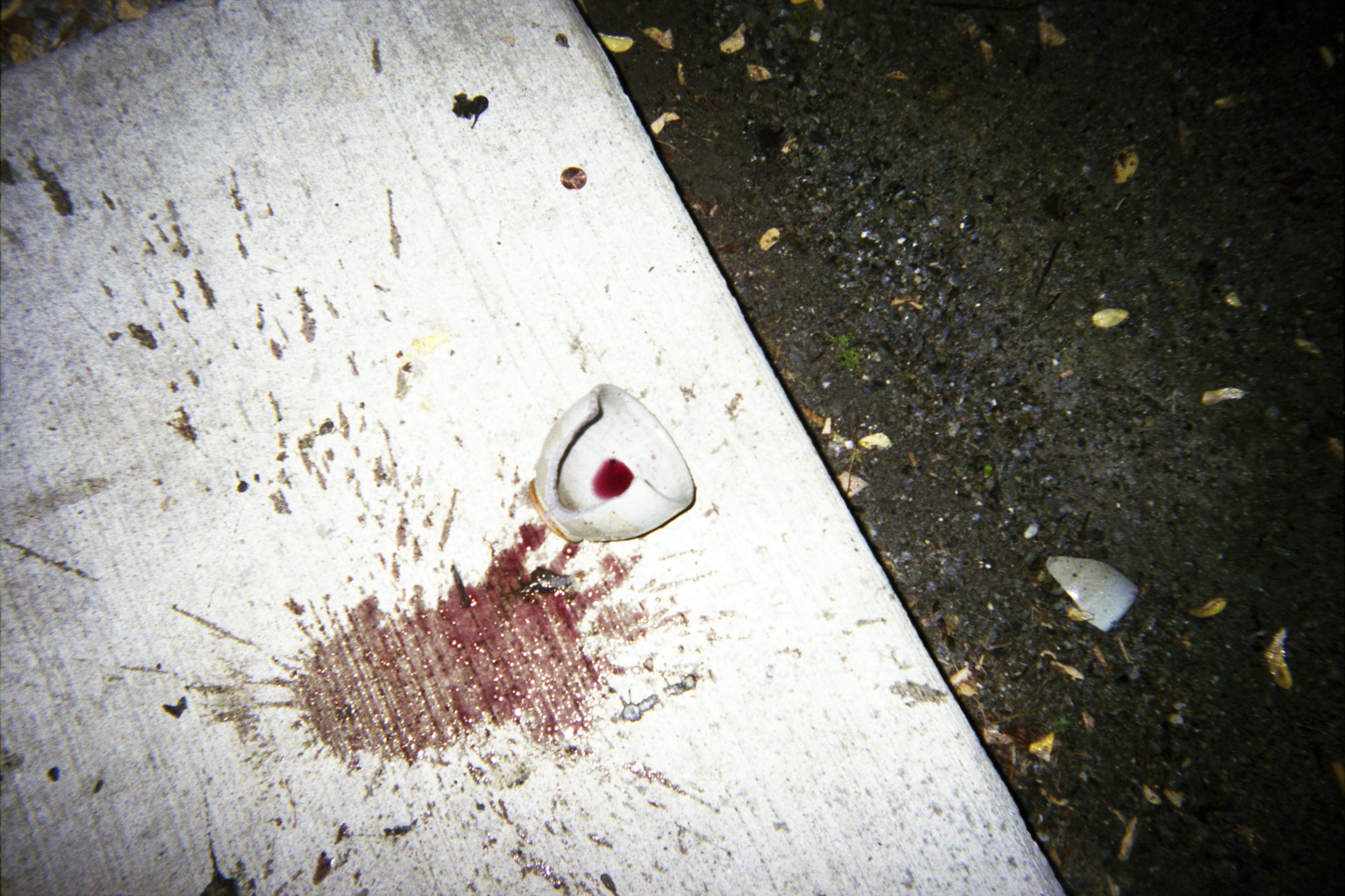
“Hair, texture. Parts that were cut off, that broke off, that feel off. Off / on. Off the rocker, on point. Onwards and upwards! I’m understanding these as two sister triptychs. There is a little grief in this Specimen Group that I hadn’t noted in the previous. I feel like I want to respond to that grief in my writing — I see a block of text, personal text, with each photo, underneath, maybe a two part prose poem in three stanzas per part — maybe something with an off / on rhythm. ”
“This grouping seems to suggest perception of the current moment and our strange comfort in knowing it is already in the past. - “Where is the present? It is always missing.”
This grouping may be attempting to confront constant death and constant life. We seem to hold on tight, regardless of which we are confronted with at any given moment.”
SPECIMEN GROUPING II
“I can feel the textures in these photos, the chunky, soft material, the wad — the sharp, needling view of a cactus on its last leg. The light only illuminates what is the subject, all else around is dark, night, shrouded. I feel the desire to write a two-part longer piece. I want to highlight the mirroring and symmetrical balance of these photographs while challenging the brevity of a diptych. I then realize that a diptych is offering one meaning out of two. I decide to write one poem, like tying the satisfying knot on a present. In my mind it makes a tripod. ”
“They say that consciousness is the universe realizing itself. I agree with what Colleen wrote - “It is our horrible fun game”.
“The mood of victory and taste”- This verse seems to suggest the ecstatic moment. All of my pictures are chasing the ecstatic moment. The poem goes on the give the feeling of being shaken out of the momentary bliss of the ecstatic moment but relays gratitude for its trueness. Consciousness seems like a gift. Maybe all things are a gift.
The glowing hair in the first picture says everything I struggle to say.”
SPECIMEN GROUPING I
“The humorous observation in this grouping strikes me. I see the poem laid out below these photos, extending them vertically and horizontally, connecting them together in both directions; fracturing the meanings and narratives like light through a crystal — scattering and ethereal but sharp, moving out in many directions from the same source. There’s mystery in these pictures. They feel very personal. They feel off the cuff. I feel them taken as they are seen, a recording of the action of observation. ”
“This grouping reminds me of the luxury of collective memory. What do we chose to remember and cherish? What do we chose to let fade or change? What helps us do this and what fights us to keep us from doing this? Do we help each other? Does it even matter?
“EVERYTHING HAS A THROAT” - This verse reminds us that all things carry energetic life (or have; or will). Once this spark is realized, it can be nurtured, left alone, or destroyed. ”
Stephanie Passantino is a Seattle-based photographer. www.stephaniepassantino.com // @stephpassantino
PROJECT IV
Sightseer is a journaling project between Max Cohen and Colleen Louise Barry. The two women will trade audio recordings and a single, written journal, editing them together regularly into an experimental podcast / audio pamphlet / brochure of psychic monuments / collaborative diary.
The Sightseer podcast will come out regularly on this page, and you can subscribe to it on iTunes here.
Max and Colleen plan to reproduce their written journal in print, in some way, at some point.
Max Cohen is a trans woman, poet, and musician living in Chicago. She received her MFA in Poetry from the University of Massachusetts at Amherst, and has work published in Ninth Letter, Sixth Finch, and Cosmonauts Avenue. She also hosts a podcast on band discographies called Desert Island Discourse with Andrew Cothren. These days she spends most of her time tinkering with stuff in her bedroom. www.desertislanddiscourse.com
PROJECT I
MAST YEAR: A MYSTICAL FIELD GUIDE is a collaboration between Caroline Belle Stewart and Colleen Louise Barry.
The project is meant to be read in many different ways, for many different reasons. MAST YEAR functions as a divinity card deck, a short story, a poem-comic, and a field guide to North American birds and their mnemonic calls.
MAST YEAR makes an inquiry into the connections between femininity, the mystical, the symbolic, and the natural.
SEPTEMBER 22, 2016
24 illustrated cards
3.5 x 5.75 inches
Printed in an edition of 50
Comes wrapped in hand-stamped and numbered silk swath
INTERVIEW I
COLLEEN LOUISE BARRY INTERVIEWS
CAROLINE BELLE STEWART
CLB: Let's start with the idea of naturalism and the human impulse to categorize, document, and label -- in what ways does creating a 'field guide' of sorts -- an ordered, directing path to navigate you through an 'understanding' of nature -- make you feel that there is a YOU, wholly separate from the 'natural world' and/or make you feel that there is a NATURE, of which you are a part? Also, feel free to totally postulate that field guides are something else.
CBS: I think in some senses, field guides can isolate humans from nature in that they make us aware of the “human gaze,” the feeling that nature is “other” and something to be decoded. At the same time, through categorization and documentation, humans very much invented that code. For me, reading field guides and actively trying to practice that knowledge outdoors--learning the names of what I’m seeing--has helped me notice and remember more. In that sense, a formal or biological awareness of nature has ultimately made me feel more connected to nature. On the other hand, you don’t need to to know the name of a plant or animal in order to truly “know” it--the intimacy of a mindful, observatory relationship with a creature is not dependent on taxonomy. And of course, “names” and “facts” about nature are contextual, varying across cultures and sometimes being revised.
CLB: Ways that femininity and nature have intersected in my quotidian life-moments over the past three days:
"(You make me feel like a) NATURAL WOMAN" -- song playing in QFC
"MAN VS BEAST" -- Fox Network TV Show, featuring zero women
"ALL-NATURAL BLUEBERRIES" -- Yogurt label, also advertising a smaller waist (directed at women)
"...For a NATURAL SHAVE!" -- Schick razor label for "sensitive" women's legs
“All bad poetry springs from genuine feeling. To be natural is to be obvious, and to be obvious is to be inartistic.” -- quote by Oscar Wilde read on friend’s blog
Why do you think “nature” or “natural” is such a goldmine phrase and why do you think it appeals to women consumers especially?
CBS: My first thought is that there is cultural shame associated with our bodies, but paradoxically, there is also shame associated with the processes required to bring them up to conventional beauty standards. So the myth of the “natural” seems to have long been a common cliche in advertising. Buy this razor and your leg will appear to be shaved as well as someone born “naturally” hairless! Then there’s also the belief that women are more concerned with health than men, and the thought that “natural” (as in chemical-free) is healthier, and so marketing something edible as “natural” to women will be appealing. Finally, associating women with nature is an ages old essentialism rooted in other feminine stereotypes such as purity and irrationality.
CLB: I want to take a second just to acknowledge this fact: the first ever ornithology guide was written by a woman, named Florence Merriam Bailey. Just feeling weird that I never knew this but I do know a lot of people who worship David Sibley, John James Audubon, etc -- not that I don’t also worship and find these individuals amazingly helpful -- but, what kind of legacy does femininity and naturalism have? In contrast to the ideas about “natural” as mentioned above?
CBS: I didn’t know about her either, but that lack of recognition of a woman pioneer is very familiar. It reminds me of the women behind some of the great Tarot decks. A queer, woman of color, Pamela Colman Smith, illustrated the Rider-Waite deck, but most people still don’t know that. People who love that deck love it for its brilliant illustrations, but she is barely acknowledged now, other than that some now call it the Waite-Smith deck. A woman named Lady Frieda Harris was also the illustrator of Aleister Crowley’s Thoth Tarot deck.
As for the feminist legacy of naturalism, here’s an article that mentions Merriam and other women birders and writers.
The author of this article speculates that women helped “humanize” birds, which had the effect of both drawing in the public’s interest in birding, as well as making the common practice of birds being shot and killed in order to be studied seem more cruel.
CLB: In some ways, a bird is an animal with a life on both sides -- some seagulls and crows and pigeons rely on human trash -- some eagles and hawks perch on telephone poles -- they seem to have to and want to live with us and near more than any other kind of wild animal -- why do you think this might be?
CBS: I really like your way of characterizing it: “a life on both sides.” Well, I guess birds, like many animals, have had to adapt to a world altered by humans. Some species of birds, like seagulls and crows, coexist with us better than others. Some birds seem to thrive, like the invasive house sparrows, which take advantage of human dwellings to build their nests and then can crowd out other birds. It’s interesting to think about crows, who not only seem to coexist with, but take advantage of humans. There have been studies that show crows have the ability to recognize human faces and even form relationships with us. You and I both have amazing crow stories--a crow rode on your windshield for several miles in Seattle. And I was followed and repeatedly swooped at by a crow for blocks and blocks in Portland. Maybe crows are smarter on the West Coast?
On the other hand, there are also many species of birds that are totally threatened and have been wiped out by their encounters with the “other side.” There are all sorts of songbirds that we never see because they prefer deep, isolated woodlands, or pelagic birds that never come to mainland shores. So in a way, I think how close they come to the human side depends on exactly what kind of bird they are, and how well they can tolerate or benefit from us.
CLB: Do you think the symbol of the bird as a device in poems and art is problematic, over-used, abused, or in any other way interesting to talk about ?
CBS: NO! I find the cliche of being anti-bird far worse than the cliche of bird. It’s so trendy to be suspicious of bird poems! As if it’s a backlash against some sort of recent thing, as if the appearance of birds in poems is new. It’s like being against sex, or love, or families, or clouds, or wine, or night, or moons, or grass, or light, in poems. These are just things that are always there, part of the everyday landscape and consciousness. Birds are always there. So why wouldn’t we write about them?
It’s always interesting to me to hear people say they don’t like “nature writing” or “nature poems.” It’s just strange for me to think of natural settings as a genre, more so than other kinds of setting. Once in a workshop someone asked me what I was trying to do by including all these plants and animals in my fiction all the time. I didn’t know what to say other than that plants and animals are something I pay attention to, and rural settings are the settings that are familiar to me. I grew up in the woods on an island, where all there was to do was look at the trees and the insects and the water. Out of this familiarity and comfort with these settings I think came a preference for fairy tales and other types of writing that give agency to the natural world. But my interest in the natural world came before my interest in fairy tales! If I knew as much about living in some other kind of place, I would write about that too.
CLB: How are birds and divinity aligned in your mind?
CBS: When I was a little kid, my friend told me that if you ever have a question you’re having trouble answering, you can close your eyes, flip to a random page in the bible, put your finger down, and whatever words your finger lands on will be the answer to your question. I never tried it--I was Jewish and skeptical. But that form of divination always seemed translatable to bird books. Birds are characters with unique personalities, and this can be emphasized depending on how the author of a given bird book describes them. So that means birds can fill archetypal roles. The idea that you could flip through a bird book, choose a random page, and be answered by an archetypal bird (I’m thinking of someone opening to a peregrine falcon for example, and deciding that they need to channel qualities of speed, precision and grace), is what gave me the idea for a divinatory bird book.
Learning about the science behind something doesn’t make it less mystical for me. The summer I first started birding, I heard this haunting, ghastly, beautiful sound in the woods at the Chesterfield Gorge. I went to great lengths to identify which bird made the sound when I got home--looking at mnemonics, figuring out which musical terms would generate useful search results (“flute-like” and “spiraling” did it) and then deducing which family of birds made flute-like sounds--thrushes. Eventually, after a while of trying out different thrush songs, I found one that matched it on the Cornell Ornithology site--it was a Veery.
That very logical process in no way takes away the thrill of hearing the veery singing for the first time in spring. Or hearing it sing ever! In a way, now that I know what it is, know that Veerys are more often heard than seen, that they camouflage into the trees with their brown and drab colors -- in a way, Thrushes are the ghosts in the forest -- I feel even more haunted and mystified by it.
CLB: Can you tell us a little bit about the process of writing the story MAST YEAR and how you see it functioning on these cards?
CLB: I was at MacDowell Colony when you approached me about this project. I had been spending my days in a little cabin chucking wood into a fireplace and watching the snow. I had time to notice things, the elemental and the obvious. I became fixated on the rocks, the streams, the ice, and the hemlock grove I was surrounded by. And I was thinking a lot about solitude, and what increasingly felt like the political act of my own solitude. I read a sentence once somewhere that went something like, “Male loneliness is romanticized, but female loneliness is stigmatized.” So I wrote something inspired by the choice to be lonely in that environment I was observing. I was also, I suppose, thinking about some of the ideas you ask about in Question 1, what obstacles a human faces when trying to be a communicating part of the natural ecosystem.
I think the story can be read narratively on the cards, but we’ve formatted it in a way so that the fragments can be taken out of context, perhaps in a divinatory way. A reader could, for example, choose the bird that she or he felt most connected to on a given day, and then flip the card to see what the words say. Or, as with the bible ritual, ask a question and draw a card with their eyes closed. It was interesting to see how the text lined up with the birds once we had formatted it all. It takes on its own significance.
With MAST YEAR, we are making statements that reflect our ideas about birds and women in a number of ways: textually, visually, formally, physically, sequentially. For me, the story I wrote is a pretty straightforward assertion of my feminist dream goals: reject companionship and go live in the woods.
CLB: Can you talk a little bit about your relationship to the Tarot and to divinity and mysticism?
CBS: Someone gave me my first deck of Tarot cards in college, but I can’t remember who. It was a vintage Aleister Crowley deck. I read my own cards right after graduating college, in a time of uncertainty. Without knowing how to really use the cards, I drew a huge spread, and remember it portending great upheaval and illness. Fearfully, I buried the cards in a box in my dad’s attic and did not see them again for four years. Well, it turned out that I did end up facing great upheaval and illness not long after that reading. But at the same time, I had moved from New York to Utah and then Oregon, and as cliche as it sounds, was starting to develop a deeper connection to nature out west. I was becoming more accepting of mysticism, and when I faced a new moment of uncertainty, several years after the first reading--applying to MFA programs--I bought the Wiccan deck, and Jodorowsky’s book, “The Way of Tarot.” I got really into the intellectual activity of studying the interconnectivity of the deck based on his philosophies, spreading the cards out on the floor so I could see how they related to one another, memorizing numerology, etc. This will make me sound uncool, but it’s funny so I’ll say it anyway. I started really believing in Tarot after I got waitlisted at my “dream” (at the time) MFA program and was trying to decide if I should accept my offer at UMass, or wait. Out of 78 cards fanned out on the floor, with my eyes closed, I drew the Temperance card over, and over, and over again. I took that to mean I should “temper” my expectations, and I was right.
So, Tarot has been most meaningful to me in moments of trouble or uncertainty. I still take Tarot really seriously now, and I find that my readings are almost always accurate to my situation, and I see them as giving me advice, or warnings, that I have the option to listen to. Once someone asked me how I could instinctively “believe” in Tarot when I know, logically, the cards drawn are a matter of chance. I told her that for me, having a mystical experience is a choice. It’s a choice to feel something and create meaning out of a pictorial narrative. A regular spiritual practice requires work, and work is not necessarily an intuitive or mysterious thing. But when there are decisions in my life that I don’t know how to make, and deep feelings that I don’t know how to describe, and my eyes are closed and the incense is burning or whatever, and then I draw these images that reflect my situation so precisely so often, I might as well accept it as communication from spirit. I’m more likely to take advice and heed warnings from spirits than my own logic, which I so often doubt.
CLB: Women are often compared to birds. Why do you think? Also, what kind of bird do you think you would be? What kind of bird do you think MAST YEAR would be ?!
CBS: Well, this makes me think of how, way back in Roman times, Catullus used “sparrow” as a metaphor for vagina. I think a lot of small, soft, delicate seeming animals are repurposed in this way. The obvious is “pussy” (my cat is meowing hysterically as I write this). One thing I like about birds is that the males are usually the showy ones. Cultural expectations are not the same with humans.
I think if I was a bird I would be a raven, and a Buzzfeed or something quiz once confirmed this. Ravens are smart and mysterious and hang out around rocks and soar over snowy forests making low, throaty cries.
If MAST YEAR was a bird, it would be a mocking bird or another “imitator.” Something that can sing the calls of many birds.
CLB: How do you hope people will interact with this project, in a cerebral way and also in a physical way, with MAST YEAR as a concept and an art object?
CBS: I hope they read the story in order once, and then they shuffle the cards and forget about linear narrative. I hope they find a favorite bird drawing, or a favorite segment of text, and put it on their altar. I hope the birds tell them something they wouldn’t have otherwise known, late at night with the incense burning and like Klaus Schulze or whatever (that’s who I listen to when I read tarot) is playing. And it would be awesome if it got people into birding! Your pictures are so good, they could be used in the field.
CLB: What do you think about the whole idea of Conversations with Women as a series, and what do you think MAST YEAR contributes to this idea?
CBS: It’s a great idea! Because it’s collaborative, it decentralizes the author. Because it’s a conversation instead of a declaration, it allows itself to be mistaken, to question, to explore. (If we were on one of our writer hikes through the Pioneer Valley right now, Jonathan would jump in and say, “but exploration is patriarchal!”) I think MAST YEAR is the beginning of a conversation about the intersections of all these topics we’ve discussed, in the same way that birding, for many people, is a gateway into a huge world of natural study.
CLB: THANK YOU. I LOVE YOU. YOU ARE AN AMAZING PERSON.
CBS: You too! Thanks for asking me to be a part of Conversations with Women and for making this project happen!!!
INTERVIEW II
CAROLINE BELLE STEWART INTERVIEWS
COLLEEN LOUISE BARRY
CBS: This is an extension of some of the questions you were asking me. The other day, I was on a walk (in nature!) with a straight cismale friend (LOL hi Matt) and he was saying that he thinks I’m surprisingly into girly stuff. The immediate example that came to mind for him was Tarot. We obviously know people of all genders who read and study Tarot, but anecdotally, I know more women than men who are interested in it. Do you agree that divination, and maybe Tarot in general, is stereotyped as being feminine, or appeals more to feminine-identifying people? Why is that? Does it have to do with witchcraft associations, or something more, some alignment with slumber parties and nail painting and gossiping about crushes?
CLB: HI MATT !
I definitely think there is a tendency to say that women -- the feminine -- are irrational, emotional, and hysterical -- while men -- the masculine -- are more logical, reasonable, and factual. Science and the rational have always been “for men” and “not for women”*, and the divine, I mean the actual experience of the divine, is not considered science. (The rules, regulations, and larger contexts of divine experiences have become a rather academic pursuit and a kind of philosophical science -- theology, Eastern Philosophy, etc -- and these are overwhelmingly controlled, written, and published by men.)
*side note: I remember very distinctly being in grade school science period and asking the teacher why all the scientists were men, to which they answered, “because men’s brains are better at it”.
There is a way that many have of viewing women as spiritually superior to men, which is an ingenious way -- a deeply Victorian way -- of allowing women to be loved and dominated at the same time, through a strange kind of logic. Women are supposed to be pure vessels that directly connect men to “God”, and as such, are intellectually, physically, and economically inferior. Much the way some people talk about their dogs. John Ruskin, an English Victorian-era art critic once famously urged “... woman to regard herself as a household nun.”
This is a very interesting thing to consider when thinking about the ways womxn have been and are still treated traditionally in organized religions; i.e. not allowed to hold any positions of power, supposed to modify their looks and behaviors to keep the men pure, not allowed to speak at all.
What ends up happening is a trap -- impossible standards of purity and divinity. No room to be human and no room to be inhuman. Hello, Virgin Mother Mary. Not to mention the fact that tying such strict gender roles and identities to holiness allows absolutely no room for trans people to have any access to the divine within organized religion at all.
What I think a lot of womxn identify with inside of the Tarot is … a couple things. First, the Tarot is a way for womxn to talk to each other about their anxieties, their deep beliefs, and their emotional layers and realities. It feels good to do this because the Tarot allows one to both hide behind the symbology of the cards as well as be found out -- at the same time -- because it seems the divine is at play, and one can’t argue with the divine. This appeals to womxn especially, I think, because we aren’t encouraged often to speak up, to speak about ourselves, or to speak about any trauma or anxiety. In this way the Tarot helps form a bond and a community around it, which is maybe why it is associated with girl gaggles like sleepovers and nail painting, etc.
I also think that the Tarot and witchcraft in general are often associated mostly with womxn because it is a way to say YES we are spiritual beings but no -- we’re not pure -- we’re fucked up -- and we’ll fuck you up -- so stay away -- HEX. A way to take control of and protect our bodies. Womxn who get in touch with the darkness inside them, with the ‘other’, and/or with some desire to feel magic that has nothing to do with men -- and of course womxn do, because they’re human -- those are often womxn who are drawn to the Tarot.
I think all of this intimidates a lot of men.
CBS: And yet, the traditional Tarot arcana are in some ways very anti-feminist, patriarchal and violent, relying heavily on gender binaries, and there are other problems with a lot of Tarot decks and Tarot symbolisms (Eurocentric, culturally appropriative). I know you are also interested in Tarot. Do you ever struggle reconciling this in your mystical practice?
CLB: The short answer is yes.
The Tarot reveals so much about what has been and continues to be limited in the ways that we represent our spiritual ideas & ideals visually.
Something that you taught me about the Tarot is the importance of the balance of masculine and feminine energies (not men and women -- masculine and feminine energies). Tarot communicates through images and archetypes -- and, as you mentioned -- our history and our culture have created stereotypes of masculine and feminine behavior, energy, and characteristics. These influence us when we look at the cards.
From The Llewellyn Journal: “A female figure represents what we think of as feminine qualities, such as nurturing, passiveness, receptiveness, and integrated world views. A male figure represents what we think of as masculine qualities, such as leadership, assertiveness, activeness, and linear thinking. We know that actual men and women have a combination both feminine and masculine qualities. Therefore, in a reading, the High Priestess or one of the Queens does not always represent a woman and the Emperor or one of the Kings does not always represent a man. When we are reading for a man and the Empress card comes up it, we should not automatically assume it means his wife or mother, although it could. Rather, we should consider the idea that it represents the qualities of the Empress—nurturing, creative, and abundant—in the querent himself.“
I try to think of the cards as representations of ideas instead of purely male or female.
This doesn’t mean, however, that it is okay for Tarot to feel exclusive.
One exciting thing lately is the burst of alternative and contemporary artists making new kinds of Tarot decks that include everything and everyone. I know some people may find this “trendy” and annoying, but I think it is beautiful. Not only does it make Tarot accessible and inclusive, but it reveals one of my favorite aspects of the Tarot, which is the fact that the overarching themes and symbols of the Tarot are broad and can be and should be applicable to all. To me, Tarot is a practice of expansion, like the universe. Mast Year is a part of this trend as well, I suppose.
Here are three that I really love right now:
Spirit Speak Tarot Deck (and all the decks on this site)
The Collective Tarot
The Motherpeace Tarot
CBS: When we were first talking about this project, you said you were interested in a “visual-textual project that is less emotionally / internally based and more external and about research, like a field guide almost.” In Tarot terms, you were talking about wanting to go more swords (cerebral, analytical) and less cups (spiritual, emotional). There’s definitely some emotion and internality in our project, but why do you think you originally had the instinct to move away from that?
CLB: I think that my desire to move into a swords-based project and away from a cups-based project has a lot to do with the fact that I had just finished writing a book of poems, which was all feeling, all intuition, all kind of groping around in the darkness -- and with the fact that I had just moved to a new city and was feeling overwhelmed by feelings. I had a desire to be strong and firm in something I could identify, categorize, and fully know.
But I also love that we ended up somewhere in the middle of cups and swords -- I think Mast Year, if it was the personification of a Tarot suite, would be wands -- as the project progressed through the summer. Part of what is so fun about this overall project, Conversations with Women, is that there’s room for each project to shift and storm a lot. You can start anywhere and end up anywhere. The movement is what is interesting, and the movement happens because two women are in dialogue about something they both think and feel.
CBS: In some ways, the history of birding is a history of acquisition. Historically, hunting as many species as you could gave way to photographing them, and many serious birders still have “life lists” of all the birds they’ve seen. Do you think your act of illustrating this project has interacted with, affirmed, or resisted, that tradition of acquisition?
CLB: When we first conceived of Mast Year, I felt excited and intimidated by the thought of illustrating birds. There is a real fear I had (and still have) of misrepresenting them. In the past I’ve never had such a pressure of “reality” in anything visual that I’ve made -- I often invite “mistakes” and “errors” as a part of my process. But with Mast Year, the exact curve of the beak, the stripe placement on the outer wing feathers, the kinds of bugs they eat -- all of these things mattered and took a long time to know and to draw.
I began by pouring over old field guides I have (the classics, like Audubon and Sibley). I was less interested in particular birds at this point and more interested in how these birders and painters were mixing the need to get the birds right with their own personal aesthetic style. The difference was subtle but inspiring -- for example, Audubon’s birds often take up the entire foreground and are lush, mystical. They seem wise and dreamy. The colors are often luscious and the strokes really smooth. Sibley’s bird paintings are much jauntier, with a kind of humor and a cartoonish quality. He makes his birds noticeably textured and his colors are bolder and more primary.
Both birders had transported a little bit of themselves into their bird paintings, which is unavoidable, and which I found gave me something a photograph couldn’t (albeit, the paintings may not be as helpful as a photograph in actually identifying any birds). What I liked about this was that it made the act of acquiring -- not the birds’ power, but the power of personal knowledge of the birds -- very idiosyncratic and spiritual.
As I began working on the initial sketches of the layouts for the birds we chose to depict together, I began to deeply meditate on each bird. Not simply their color or wingspan etc, but where they lived, what they ate, what they symbolized, how you and I related to them together and in our own lives. This is how each bird began to become associated loosely with archetypal symbols of the Rider-Waite Tarot deck’s Major Arcana.
There was a desire to align and show each bird as they looked in a natural landscape and as they looked in a spiritual, symbolic landscape. There was also a strong desire not to diminish or personify the wildness of the birds.
I tried to be intensely observant. Not just by staring at an image of each bird, not just by studying its colors -- but also by trying to feel what humans had taken from and assigned to each. Also, I wanted to be attentive to what I felt personally about the birds -- birds can elicit such strong reactions! -- and to what I know you felt as well. In this way, the birds really acquired me and not the other way around. I felt in the end that my illustration process was a deeply reverent one, in which I submitted much of my own consciousness to both a collective idea about the birds that existed in a historical and social context and to the birds themselves. Of course, this all got filtered through my aesthetic choices and my own artistic abilities and sensibilities (or lack there-of).
So hopefully what happened here was interaction, affirmation, and resistance.
CBS: On the subject of acquisition, I’ve seen all the birds in our project here in New England except the red-throated loon and the yellow-billed cuckoo. Which birds in our deck are most familiar to you?
CLB: I grew up with a dad who had “hawk vision” -- we could be anywhere, doing anything; he’d be looking right in my eyes and suddenly say: “There’s a hawk above you.” And there would be. So I associate Red-Tailed Hawks with my dad and now pride myself on seeing Hawks everywhere. These are probably the birds I am most familiar with out of any bird, even outside our deck.
I also love Ospreys for their mysterious watery lives and owls for being so symbolically huge, and still surpassing it all. Whenever I see an owl I feel that I’m seeing a real divine presence.
Just the other day a crow landed on my car hood as I was driving -- and stayed for about ten minutes. He was hitching a ride.
CBS: Do you have a favorite Tarot deck? A favorite bird book or other field guide?
CLB: One of the first Tarot readings I was ever given was by a sweet man whom I was in love with; he used Bea Nettles’ Mountain Dream Tarot. I drew the Tower and a few months later I moved away and everything changed. That felt significant and I think about this deck regularly. It feels truly otherworldly.
I love everything Alejandro Jodorowsky has to say about the Tarot and have been reading his book with Mary Costa, The Way of Tarot, on and off for years now. He uses the medieval and creepy and amazing Tarot de Marseille.
Rider-Waite is what we based Mast Year on because part of the project is exploring how mystic symbols disrupt or confirm icons of the natural world, and how both of these things mix with femininity. Rider-Waite seemed like the best choice because it is the most recognizable and because it seems to be a deck many other artist-made decks base their images off of -- a conversation we could immediately jump into and off from.
CBS: What are some other collaborative, multimedia, or non-traditional non-book written narratives out there that you admire?
CLB: Something I am really inspired by lately is finding historical female ‘visionaries’ -- using the term in this instance to mean ‘’of, relating to, or able to see visions in a dream or trance, or as a supernatural apparition’’. I am especially interested in those examples who expressed their visions in their art and writing and made books, zines, and codexes based off of them. Hildegard von Bingen, Moira Mathers, and Hilma af Klint are really interesting to me. One of our regular online contributors Ben Roylance is writing some amazing stuff about Eugenia Macer-Story in his column Ufoccultism.
I love the Chicago artist Lee Godie with a burning passion -- she was homeless for most of her life, and created entirely outside of any traditional artistic training or circle. She would sew bits of paper or fabric she found into large canvases, artist books, and sketchbooks. She also regularly took these exquisite photobooth pictures of herself as various other selves and dressed them up, colored on them, etc. What remains is just the most incredible narrative.
CBS: You are both a poet and a visual artist, and you do poetry-comics. Do you turn to one art form to do something the other can’t, or do you see them as augmenting each other, or both?
CLB: I see poetry and images as completing a single sentence. I think within that there is room for shifting -- perhaps the visual is the subject and the word the verb, or perhaps adjective, or perhaps one is a dependent clause, etc. But ultimately they have to say something together for me to want to see them together.
The paradox of this is that they will always say something together, at least in some way, even if what an image and a word do together is make each other look separate.
Visuals are a language and language is an image -- both are trying to express the internal externally, universally -- I want to point this out in everything I do.
CBS: Can we talk about why you chose to name your press Mount Analogue? What is it about that book? With regards to our project, I feel like there are relationships between birding and mountaineering, mysticism and printing the written word, etc.
CLB: Mount Analogue is a lot about what seems possible, what is possible -- what rules are and how they function -- the book is like a long logic argument to prove the reality and legitimacy of illogical reasoning, actions, and conclusions. This seems a lot of what my publishing project is and does as well.
That being said, to be honest, the book is not even one of my favorites. HA. I’m inspired by what I mentioned above, but I’m even more inspired by the words “mount” and “analogue” together.
The word Analogue is great for three reasons: 1. The prefix “anal” is there, and isn’t it always, 2. Analogue seems to point away from digital as well as to point toward it -- and I wanted Mount Analogue to be a swinging pendulum between innovative digital projects and idiosyncratic hand-made analogue projects, and 3. The European “-ue” suffix makes me sufficiently happy with myself.
I also feel very connected to the symbology of mountains as well as to real mountains (that I get to see everyday in Washington). I love this poem by Jean Valentine. It is my favorite poem of all time.
DOOR IN THE MOUNTAIN
Never ran this hard through the valley
never ate so many stars
I was carrying a dead deer
tied on to my neck and shoulders
deer legs hanging in front of me
heavy on my chest
People are not wanting
to let me in
Door in the mountain
let me in
Certainly printing the written word is a spiritual practice, a deeply personal artistic practice, and each step of the way is like climbing. A book is Transubstantiation -- it is vague shadowy impressions of the world, seemingly coming from some other world -- and then suddenly it becomes its own body moving through that very world, changing it, at least in some way. There’s a reason why we call things “bodies of work.” They live their own lives.
I started erasing Mount Analogue to become a part of our ongoing mission statement, which is a poem-comic called The Myth of Mount Analogue, an excerpt of which will be featured in our last show in our Summer Art Series in Seattle, THE DOOR TO THE INVISIBLE MUST BE MADE VISIBLE (the title of which comes from a line in Mount Analogue. Stealing is fun).
CBS: Mount Analogue by Daumal influenced Jodorowsky’s The Holy Mountain, and Jodorowsky wrote my favorite Tarot philosophy book, The Way of Tarot. In Mount Analogue, there is the idea of the “peradam,” an object shown to only those who are looking for it. I feel like there’s something to that in both Tarot and birding. Once you start studying a field guide, you start noticing so much more in the world because you know to look for it. Have you had this experience elsewhere in your life? For people like us who study literature and the humanities, is science a way to tap into transcendence?
CLB: If transcendence is the ability to rise above what is usual, then anything that gives me access to multiple perspectives and realities is technically transcendent -- science, art, religion, literature. If I can see a bird and know its mating ritual, feel it’s spiritual and historical context, and remember how it symbolized love in a great poem, then I feel knowledgeable and worthy.
BUT, I believe, the only way that the experience of seeing that bird becomes transcendent -- feels transcendent, is transcendent -- is through a personal acknowledgement of the moment as fleeting and precious.
In the end I think that science, mysticism, art, literature, religion, etc are all working towards the same goal -- immortality.
Something that is beautiful about nature -- and by nature here I mean that which would go on as it is now, or perhaps even better, without humans -- is that it shows us how to transcend each moment, that is, how to actually be alive in each moment, and it shows us how to die.
“
I met, loved, and left him. I was not of the stock. I paired better with rock, stream, and shadow. I set out for the woods with the blade of an axe. The forest kept secrets. The birds hushed at once. Deer leapt from the path. Even the flowers leaned towards the thickets. I settled on a lonely grove where two streams met. The trees drooped their boughs as gracefully as brides. I chopped them down, made my house, lived in it, and died. The streams rose and took the wood and then the rocks went smooth. Heart over initialed heart. I gave birth to a family of mushrooms and the forest spoke through them.
”
THE FOOL
YELLOW-BILLED CUCKOO
THE MAGICIAN
EASTERN MEADOWLARK
THE HIGH PRIESTESS
GREEN HERON
THE EMPRESS
WOOD DUCK
THE EMPEROR
LONG-TAILED DUCK
THE HIEROPHANT
WHITE-THROATED SPARROW
THE LOVERS
BALTIMORE ORIOLES
THE CHARIOT
NORTHERN HARRIER
STRENGTH
BLUEBIRD
THE HERMIT
HERMIT THRUSH
WHEEL OF FORTUNE
RED-THROATED LOON
JUSTICE
OSPREY
THE HANGED MAN
PILEATED WOODPECKER
DEATH
AMERICAN KESTREL
TEMPERANCE
NUTHATCH
THE DEVIL
HORNED LARK
THE TOWER
BROWN THRASHER
THE STAR
BLACKBURNIAN WARBLER
THE MOON
BARRED OWL
THE SUN
RED-TAILED HAWK
JUDGMENT
OLIVE-SIDED FLYCATCHER
THE WORLD
WARBLING VIREO
MADE POSSIBLE BY A GRANT FROM THE SEATTLE OFFICE OF ARTS & CULTURE.
Caroline Belle Stewart is a writer living in Northampton, MA. Her work can be read in Hobart, Quarterly West, and Black Warrior Review.
